Class - 1
Sources for the history of Modern India:
The records of the East India Company provide a detailed account of trading conditions during the period 1600-1857. When the British crown took over the administration, it also kept a large variety and volume of official records.
- These records help historians to trace every important development stage-by-stage and follow the processes of decision-making and the psychology of the policy-makers.
- The records of the other European East India companies (the Portuguese, Dutch and French) are also useful for constructing the history of the 17th and 18th centuries.
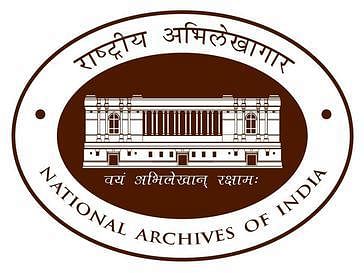
The National Archives of India, located in New Delhi, contains most of the archives of the Government of India. These provide authentic and reliable source materials on varied aspects of modern Indian history.
- The records with the National Archives come under various groups, representing different branches of the secretariat at different stages of its development. This happened as the work of the East India Company was distributed among various branches—public or general, revenue, political, military, secret, commercial, judicial, education, etc.—and a separate set of records was kept for each of these branches or departments.
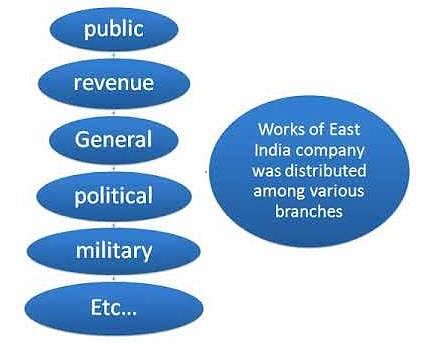
- With the appointment of James Rennell as the first Surveyor-General of Bengal in 1767, the Survey of India began to scientifically map the unknown regions of the country and its bordering lands.
The source material in the state archives comprises the records of:
(i) The former British Indian provinces.
(ii) The erstwhile princely states which were incorporated in the Indian Union after 1947
(iii) The foreign administrations other than those of the British.
- The early records of Fort Williams (Bengal Presidency) were lost during the sack of Calcutta in 1756, but the archives of the Bengal presidency after the British victory at Plassey have survived more or less in a complete series, which are partly available in the National Archives of India and partly in the State Archives of West Bengal.
- The records of the Madras Presidency begin from AD 1670 and include records of the Governor and Council of Fort St. George.
- The archives related to the Portuguese preserved in Goa, mainly belonging to the period from 1700 to 1900, are valuable for the history of Portuguese possessions in India.
- The Dutch records of Cochin and Malabar are in the Madras Record Office and those of Chinsura in the state archives of West Bengal.
- The French archives of Chandernagore and Pondicherry (now Puducherry) were taken to Paris by the French authorities before they relinquished these settlements.
- The remaining Danish records, mainly relating to Tranquebar (1777-1845), are now housed in the Madras Record Office.
- Housed in the Madras Record Office, the archives of the Mayor’s Court at Fort St. George, beginning from AD 1689, are the earliest available judicial archives.
- The pre-Plassey records of the Mayor's Court at Fort Williams have been lost, but those for the years 1757-73 are kept in the record room of the Calcutta High Court, along with the archives of the Supreme Court of Bengal 1774-1861.
- The most significant archival publications are the Parliamentary Papers which include many excerpts from the records of the East India Company and the Government of India under the Crown.
- Private archives comprise papers and documents of individuals and families of note, who played a significant role in the development of modern India.
- In England, the India Office Records, London and the records kept in the British Museum are very valuable.
The India Office Records possesses various important documents:
The minutes of the Courts of Directors and the General Court of the East India Company and various committees constituted from time to time, the minutes and correspondence of the Board of Control or the Board of Commissioners for the Affairs of India, and the records of the Secretary of State and the India Council. - The British Museum possesses collections of papers of British viceroys, secretaries of states and other high ranked civil and military officials who were posted in India. The archives of the missionary societies, for instance, of the Church Missionary Society of London, provide insight into the educational and social development in pre-independent India.
- Many travellers, traders, missionaries and civil servants who came to India, have left accounts of their experiences and their impressions of various parts of India. An important group among these writers was that of the missionaries who wrote to encourage their respective societies to send more missionaries to India for the purpose of evangelising its inhabitants.
- In this genre, Bishop Heber’s Journal and Abbe Dubois's Hindu Manners and Customs, provide useful information on the socio-economic life of India during the period of decline of the Indian powers and the rise of the British.
- Newspapers and journals of the nineteenth and twentieth centuries, published in English as well as in the different vernacular languages, form an important and authentic source of information for the construction of the history of modern India. The first attempts to publish newspapers in India were made by the disgruntled employees of the English East India Company who sought to expose the malpractices of private trade.
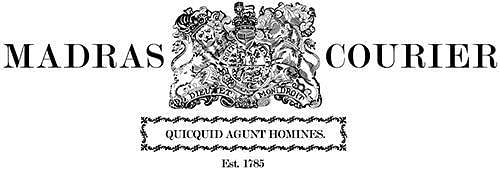
- In 1780, James Augustus Hickey published the first newspaper in India entitled The Bengal Gazette or Calcutta General Advertiser. Hickey's press was seized within two years, owing to his outspoken criticism of government officials. Afterwards, many publications appeared such as The Calcutta Gazette (1784), The Madras Courier (1788) and The Bombay Herald (1789).
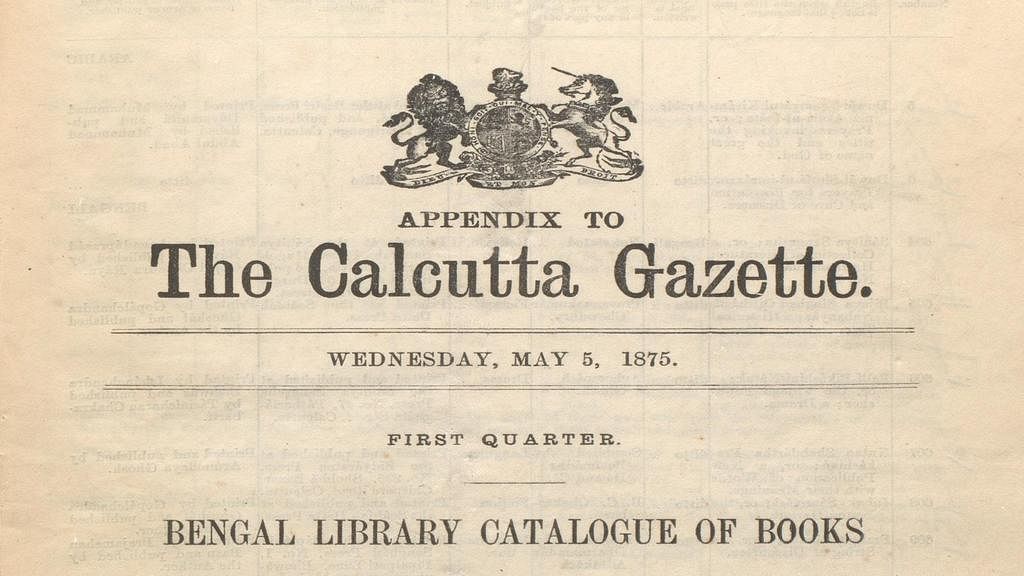
- From the second half of the 19th century, some of their publications were: The Hindu and Swadesamitran under the editorship of G. Subramaniya Iyer, Kesari and Mahratta under Bal Gangadhar Tilak, Bengalee under Surendranath Banerjea.
- Oral history refers to the construction of history with the help of non-written sources, for instance, personal reminiscence.
- The most significant outcome of the Indo-European contact was the novel which emerged in the latter half of the 19th century. The first important writer of that period was the famous Bengali novelist, Bankim Chandra Chatterji (1838 - 94). His novels are mostly historical, the best known among them being Anand Math (1882), especially for its powerful lyric 'Vandemataranr and depiction of the Sanyasi Revolt (1760s).
- G.V. Krishna Raos Kilubommalu (The Puppets, 1956) in Telugu was concerned with the moral aspects and behavior of the rural people.
- Vaikom Muhammad Basheer (19-10-1994) was one of the eminent writers in Malayalam whose famous novel Balyakala Sakhi (The Childhood Friends, 1944) was a tragic tale of love.
- Some information on the socio-economic, political and cultural life during the colonial period can be obtained from the paintings of that period.
- The Company Paintings, also referred as ‘Patna Kalam' emerged under the patronage of the East India Company. They picturise the people and scenes as they existed at the time. Trades, festivals, dances and the attire of people were visible in these works.
- Another painting of this period, In Memoriam by Joseph Noel Paton, recorded in painting two years of the revolt of 1857. One can see English women and children huddled in a circle, looking helpless and innocent, seemingly waiting for the inevitable—dishonour, violence and death.
- The establishment of the East India Company in 1600 and its transformation into a ruling body from a trading one in 1765 had little immediate impact on Indian polity and governance.
- But the period between 1773 and 1858 under the Company rule, and then under the British Crown till 1947, witnessed a plethora of constitutional and administrative changes.
 Coat of arms of the East India Company
Coat of arms of the East India Company - The nature and objective of these changes were to serve the British imperial ideology but unintentionally they introduced elements of the modern State into India’s political and administrative system.
- After the Battle of Buxar (1764), the East India Company got the Diwani (right to collect revenue) of Bengal, Bihar, and Orissa.
- 1767- The first intervention in Indian affairs by the British government came in 1767.
- 1765-72- This period was characterized by
(i) Rampant corruption among servants of the Company who made full use of private trading to enrich themselves;
(ii) Excessive revenue collection and oppression of peasantry;
(iii) Company’s bankruptcy, while the servants were flourishing.
The Regulating Act of 1773 (formally, the East India Company Act 1772) was an Act of the Parliament of Great Britain intended to overhaul the management of the East India Company's rule in India.
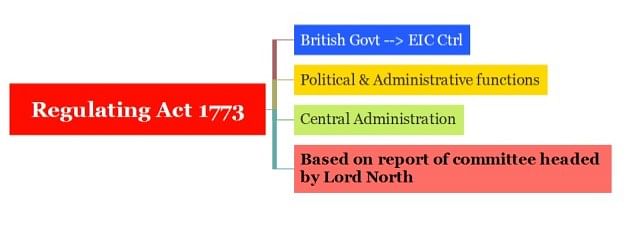
- British government’s involvement in Indian affairs in the effort to control and regulate the functioning of the East India Company. It recognized that the Company’s role in India extended beyond mere trade to administrative and political fields, and introduced the element of centralized administration.
- Directors of the Company were required to submit all correspondence regarding revenue affairs and civil and military administration to the government.
- In Bengal, the administration was to be carried out by the governor-general and a council consisting of 4 members, representing the civil and military government. They were required to function according to the majority rule.
- A Supreme Court of judicature was to be established in Bengal with original and appellate jurisdictions where all subjects could seek redressal. In practice, however, the Supreme Court had a debatable jurisdiction vis-a-vis the council which created various problems.
- Governor-general could exercise some powers over Bombay and Madras—again, a vague provision which created many problems.
Amendments (1781)

(ii) Servants of the government were immune if they did anything while discharging their duties.
(iii) Social and religious usages of the subjects were to be honoured.
The Pitt's India Act of 1784, was an Act of the Parliament of Great Britain intended to address the shortcomings of the Regulating Act of 1773 by bringing the East India Company's rule in India under the control of the British Government.
- The company became a subordinate department of the State. The Company’s territories in India were termed British possessions’.
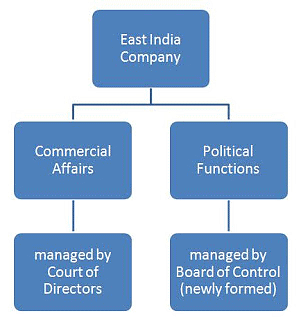
- A Board of Control consisting of the chancellor of the exchequer, a secretary of state and four members of the Privy Council (to be appointed by the Crown) were to exercise control over the Company’s civil, military, and revenue affairs. All dispatches were to be approved by the board. Thus a dual system of control was set up.
- In India, the governor-general was to have a council of three (including the commander-in-chief), and the presidencies of Bombay and Madras were made subordinate to the governor-general.
- A general prohibition was placed on aggressive wars and treaties (breached often).
In 1786 Pitt brought another bill in the Parliament relating to India in a bid to prevail upon Cornwallis to accept the Governor Generalship of India.
- Cornwallis wanted to have the powers of both the governor-general and the commander-in-chief. The new Act conceded this demand and also gave him power.
- Cornwallis was allowed to override the council’s decision if he owned the responsibility for the decision. Later, this provision was extended to all the governors-general.
The Charter Act of 1793, also known as the East India Company Act 1793 was passed in the British Parliament in which the company charter was renewed.
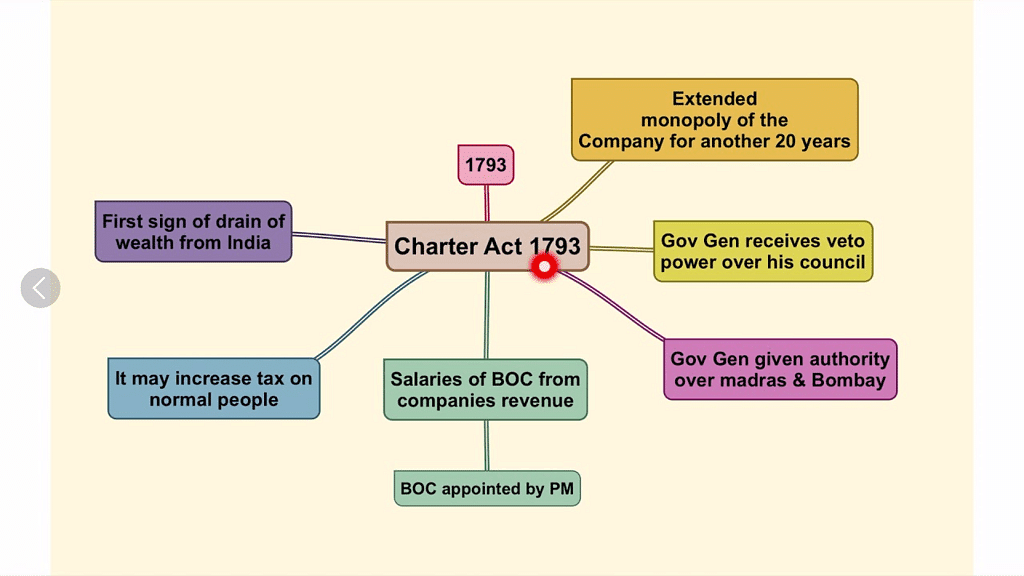
- The Act renewed the Company’s commercial privileges for the next 20 years.
- The Company, after paying the necessary expenses, interest, dividends, salaries, etc., from the Indian revenues, was to pay 5 lakh pounds annually to the British government.
- The royal approval was mandated for the appointment of the governor-general, the governors, and the commander-in-chief.
- Senior officials of the Company were debarred from leaving India without permission—doing so was treated as a resignation.
- The Company was empowered to give licenses to individuals as well as the Company’s employees to trade in India. The licenses, known as 'privilege’ or 'country trade', paved the way for shipments of opium to China.
- The revenue administration was separated from the judiciary functions and this led to the disappearance of the Maal Adalats.
- The Home Government members were to be paid out of Indian revenues which continued up to 1919.
The Charter Act of 1813 passed by the British Parliament renewed the East India Company’s charter for another 20 years.This act is important in that it defined for the first time the constitutional position of British Indian territories.
- The Company’s monopoly over trade in India ended, but the Company retained the trade with China and the trade-in tea.
- The Company’s shareholders were given a 10.5 percent dividend on the revenue of India. The Company was to retain the possession of territories and the revenue for 20 years more, without prejudice to the sovereignty of the Crown.
- Powers of the Board of Control were further enlarged.
- A sum of one lakh rupees was to be set aside for the revival, promotion, and encouragement of literature, learning, and science among the natives of India, every year.
- The regulations made by the Councils of Madras, Bombay, and Calcutta were now required to be laid before the British Parliament. The constitutional position of the British territories in India was thus explicitly defined for the first time.
- Separate accounts were to be kept regarding commercial transactions and territorial revenues. The power of superintendence and direction of the Board of Control was not only defined but also enlarged considerably.
- Christian missionaries were also permitted to come to India and preach their religion.
The lease of 20 years to the Company was further extended in the Charter Act of 1833. Territories of India were to be governed in the name of the Crown.
- The company’s monopoly over trade with China and in tea also ended.
- All restrictions on European immigration and the acquisition of property in India were lifted.
- In India, a financial, legislative, and administrative centralization of the government was envisaged:
(i) Governor-general was given the power to superintend, control, and direct all civil and military affairs of the Company.
(ii) Bengal, Madras, Bombay, and all other territories were placed under complete control of the governor-general.
(iii) All revenues were to be raised under the authority of the governor-general who would have complete control over the expenditure too.
(iv) Governments of Madras and Bombay were drastically deprived of their legislative powers and left with a right of proposing to the governor-general the projects of law which they thought to be expedient. - A law member was added to the governor-general’s council for professional advice on lawmaking. vi. Indian laws were to be codified and consolidated. vii. No Indian citizen was to be denied employment under the Company on the basis of religion, color, birth, descent, etc
- The administration was urged to take steps to ameliorate the conditions of slaves and to ultimately abolish slavery. (Slavery was abolished in 1843.)
The Charter Act 1853 was passed in the British Parliament to renew the East India Company’s charter. Unlike the previous charter acts of 1793, 1813 and 1833 which renewed the charter for 20 years; this act did not mention the time period for which the company charter was being renewed.
- The company was to continue possession of territories unless the Parliament provided otherwise.
- The strength of the Court of Directors was reduced to 18.
- The company’s patronage over the services was dissolved—the services were now thrown open to a competitive examination.
- Law member became the full member of the governor-general’s executive council.
- separation of the executive and legislative functions of the Government of British India progressed with the inclusion of six additional members for legislative purposes
The Government of India Act 1858 was an Act of the British parliament that transferred the government and territories of the East India Company to the British Crown.
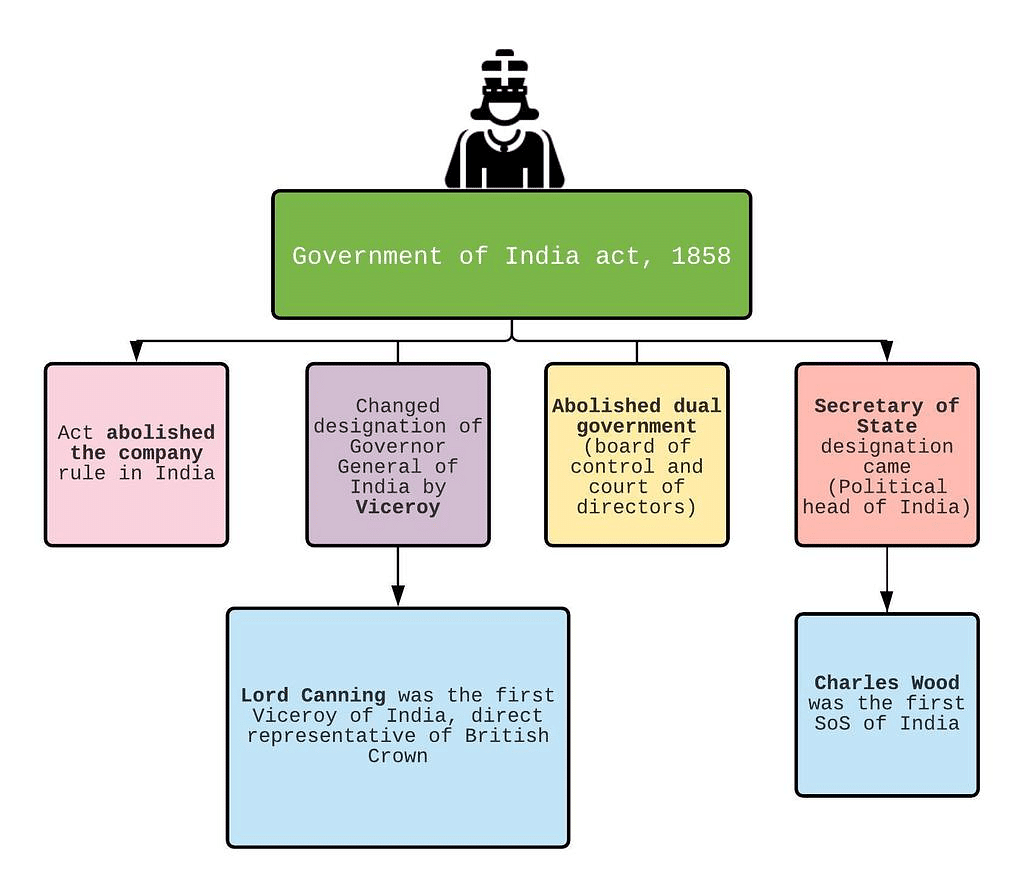
- The company’s rule over British territories in India came to an end and it was passed directly to the British government.
- India was to be governed by and in the name of the Crown through a secretary of state and a council of 15. The initiative and the final decision was to be with the secretary of state and the council was to be just advisory in nature.
- Governor-general became the viceroy
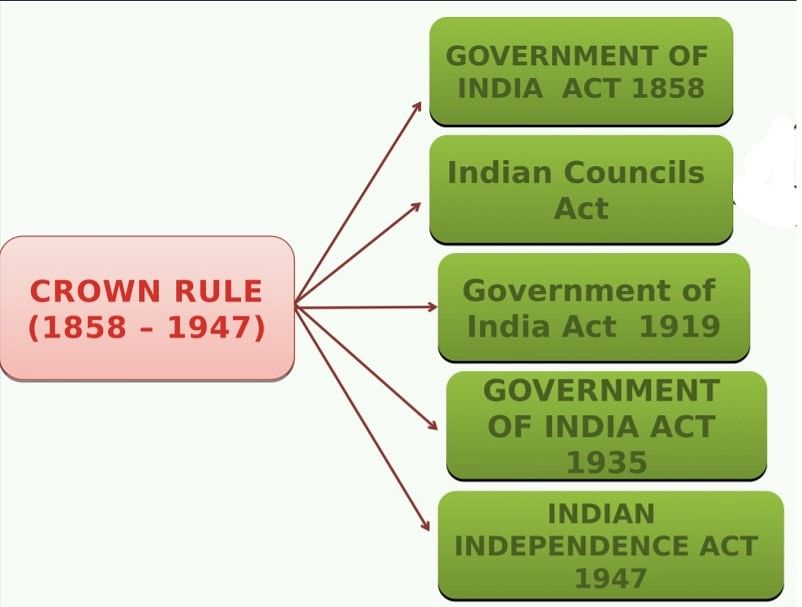
The Indian Councils Act 1861 was an act of the British Parliament that made significant changes in the Governor-General’s Council.
- The 1861 Act marked an advance in that the principle of representatives of nonofficials in legislative bodies became accepted; laws were to be made after due deliberation, and as pieces of legislation they could be changed only by the same deliberative process.
- The portfolio system introduced by Lord Canning laid the foundations of cabinet government in India, each branch of the administration having its official head and spokesman in the government, who was responsible for its administration.
- The Act by vesting legislative powers in the Governments of Bombay and Madras and by making provision for the institution of similar legislative councils in other provinces laid the foundations of legislative devolution.
The Indian Councils Act 1892 was an act of the British Parliament that increased the size of the legislative councils in India.
- In 1885, the Indian National Congress was founded. Congress saw the reform of the councils as the “'root of all other reforms ’. It was in response to the Congress's demand that the legislative councils be expanded that the number of non-official members was increased both in the central (Imperial) and provincial legislative councils by the Indian Councils Act, 1892.
- Legislative Council of the Governor-General was enlarged.
- Universities, district boards, municipalities, zamindars, trade bodies, and chambers of commerce were empowered to recommend members to the provincial councils.
- Thus was introduced the principle of representation.
- Though the term election' was firmly avoided in the Act, an element of the indirect election was accepted in the selection of some of the non-official members.
- Members of the legislatures were now entitled to express their views upon financial statements which were henceforth to be made on the floor of the legislatures.
- Could also put questions within certain limits to the executive on matters of public interest after giving six days’ notice.
The Indian Councils Act 1909 was an act of the British Parliament that introduced a few reforms in the legislative councils and increased the involvement of Indians (limited) in the governance of British India.
- Popularly known as the Morley-Minto Reforms, the Act made the first attempt to bring in a representative and popular element in the governance of the country.
- The strength of the Imperial Legislative Council was increased.
- With regard to the central government, an Indian member was taken for the first time in the Executive Council of the Governor-General
- Members of the Provincial Executive Council were increased.
- Powers of the legislative councils, both central and provincial, were increased.
The Government of India Act 1919 was an act of the British Parliament that sought to increase the participation of Indians in the administration of their country.
- This Act was based on what is popularly known as the Montague-Chelmsford Reforms.
- Under the 1919 Act, the Indian Legislative Council at the Centre was replaced by a bicameral system consisting of a Council of State (Upper House) and a Legislative Assembly (Lower House). Each house was to have a majority of members who were directly elected. So, the direct election was introduced, though the franchise was much restricted being based on qualifications of property, tax, or education.
- The principle of communal representation was extended with separate electorates for Sikhs, Christians, and Anglo-Indians, besides Muslims.
- The act introduced dyarchy in the provinces, which indeed was a substantial step towards the transfer of power to the Indian people.
- The provincial legislature was to consist of one house only (legislative council).
- Act separated for the first time the provincial and central budgets, with provincial legislatures being authorized to make their budgets.
- A High Commissioner for India was appointed, who was to hold his office in London for six years and whose duty was to look after Indian trade in Europe.
- Secretary of State for India who used to get his pay from the Indian revenue was now to be paid by the British Exchequer, thus undoing an injustice in the Charter Act of 1793.
- Though Indian leaders for the first time got some administrative experience in a constitutional set-up under this Act.
The Indian Statutory Commission also known as Simon Commison’, was a group of seven Members of Parliament under the chairmanship of Sir John Simon (later, 1st Viscount Simon).
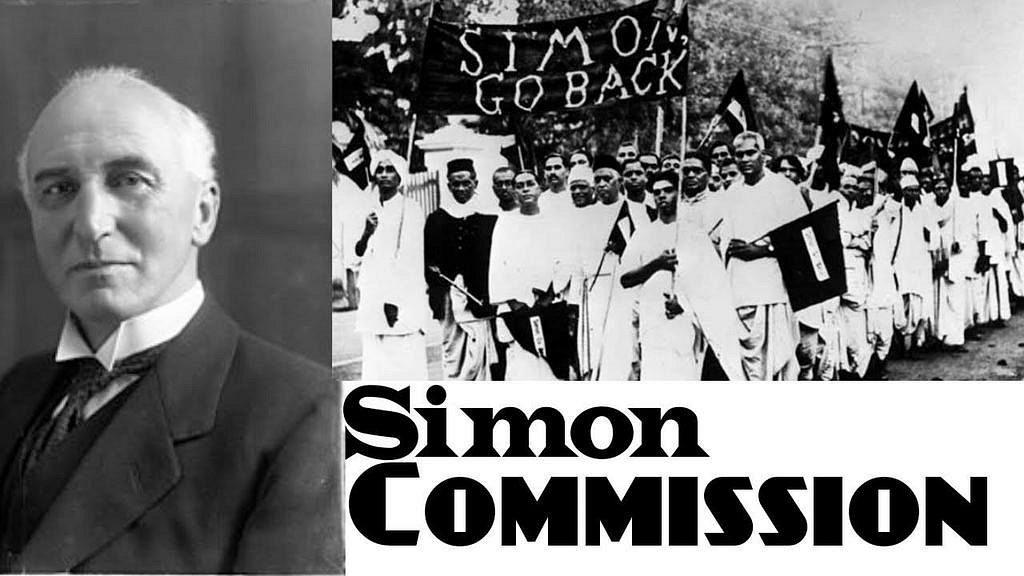
- The commission arrived in British India in 1928 to study constitutional reform in Britain’s largest and most important possession.
- 1919 Act had provided that a Royal Commission would be appointed ten years after the Act to report on its working. Three Round Table Conferences were called by the British government to consider the proposals.
- Subsequently, a White Paper on Constitutional Reforms was published by the British government in March 1933
The Government of India Act was passed by the British Parliament in August 1935. It was the longest act enacted by the British Parliament at that time. So, it was divided into two separate acts namely, the Government of India Act 1935 and the Government of Burma Act 1935.
- Act, with 451 clauses and 15 schedules, contemplated the establishment of an All- India Federation in which Governors’ Provinces and the Chief Commissioners’ Provinces and those Indian states which might accede to be united were to be included.
- Dyarchy, rejected by the Simon Commission, was provided for in the Federal Executive.
- Federal Legislature was to have two chambers (bicameral)—the Council of States and the Federal Legislative Assembly. The Council of States (the Upper House) was to be a permanent body.
- There was a provision for joint sitting in cases of deadlock between the houses. There were to be three subject lists— the Federal Legislative List, the Provincial Legislative List and the Concurrent Legislative List. Residuary, legislative powers were subject to the discretion of the governor-general.
- Dyarchy in the provinces was abolished and provinces were given autonomy
- Provincial legislatures were further expanded. Bicameral legislatures were provided in the six provinces of Madras, Bombay, Bengal, United Provinces, Bihar and Assam, with other five provinces retaining unicameral legislatures.
- Principles of'communal electorates’ and 'weightage' were further extended to depressed classes, women and labour.
- Franchise was extended, with about 10 per cent of the total population getting the right to vote.
- Act also provided for a Federal Court (which was established in 1937), with original and appellate powers, to interpret the 1935 Act and settle inter-state disputes, but the Privy Council in London was to dominate this court. India Council of the Secretary of State was abolished.
- All-India Federation as visualised in the Act never came into being because of the opposition from different parties of India. The British government decided to introduce the provincial autonomy on April 1,1937, but the Central government continued to be governed in accordance with the 1919 Act, with minor amendments. The operative part of the Act of 1935 remained in force till August 15, 1947.
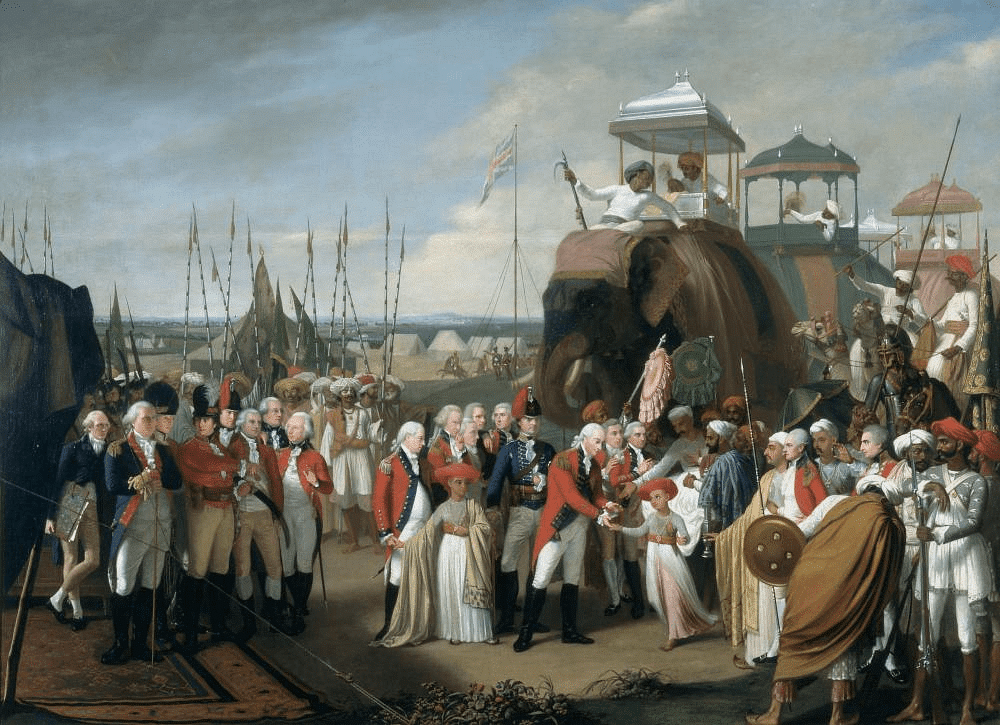 Lord Cornwallis in India
Lord Cornwallis in India
- Cornwallis (governor-general, 1786-93) was the first to bring into existence and organize civil services. He tried to check corruption through
- Raising the civil servants’ salary,
- Strict enforcement of rules against private trade,
- Debarring civil servants from taking presents, bribes, etc.,
- Enforcing promotions through seniority.
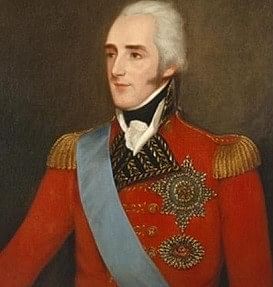 Lord Wellesley
Lord Wellesley
- Wellesley (governor-general, 1798-1805) set up Fort William College for the training of new recruits. In 1806 Wellesley’s college was disapproved by the Court of Directors and instead the East India College was set up at Haileybury in England to impart two years’ training to the recruits.
- The reasons for the exclusion of Indians were
(i) Belief that only the English could establish administrative services serving British interests;
(ii) Belief that the Indians were incapable, untrustworthy, and insensitive to the British interests;
(iii) Fact there was high competition among the Europeans themselves for lucrative posts, so why offer them to the Indians.
- The maximum permissible age was gradually reduced from 23 (in 1859) to 22 (in 1860) to 21 (in 1866) and to 19 (1878).
- In 1863, Satyendra Nath Tagore became the first Indian to qualify for the Indian Civil Service.
- In 1878-79, Lytton introduced the Statutory Civil Service consisting of one-sixth of covenanted posts to be filled by Indians
- The Indian National Congress raised the demand, after it was set up in 1885, for
(i) lowering of age limit for recruitment, and
(ii) Holding the examination simultaneously in India and Britain. - The Aitchison Committee on Public Services (1886), set up by Dufferin. recommended—
(i) The dropping of the terms covenanted’ and "uncovenanted’;
(ii) Classification of the civil service into Imperial Indian Civil Service (examination in England), Provincial Civil Service (examination in India), and Subordinate Civil Service (examination in India); and, raising the age limit to 23.
(iii) In 1893, the House of Commons in England passed a resolution supporting the holding of simultaneous examination in India and England; but the resolution was never implemented.
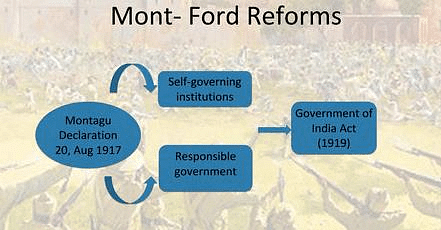
- The Montford reforms— i. Stated a realistic policy recommended holding of simultaneous examination in India and England. ii. recommended that one-third of recruitments be made in India itself—to be raised annually by 1.5 percent.
- The Lee Commission recommended that
(i) secretary of state should continue to recruit the ICS, the Irrigation branch of the Service of Engineers, the Indian Forest Service, etc.;
(ii) recruitments for the transferred fields like education and civil medical service be made by provincial governments;
(iii) direct recruitment to ICS on basis of 50:50 parity between the Europeans and the Indians be reached in 15 years;
(iv) a Public Service Commission be immediately established
- 1935 Act recommended the establishment of a Federal Public Service Commission and Provincial Public Service Commission under their spheres.
- This was done in mainly two ways. Firstly the maximum age for appearing at the examination was reduced from twenty-three in 1859 to nineteen in 1878 under Lytton. Secondly, all key positions of power and authority and those which were well-paid were occupied by the Europeans.
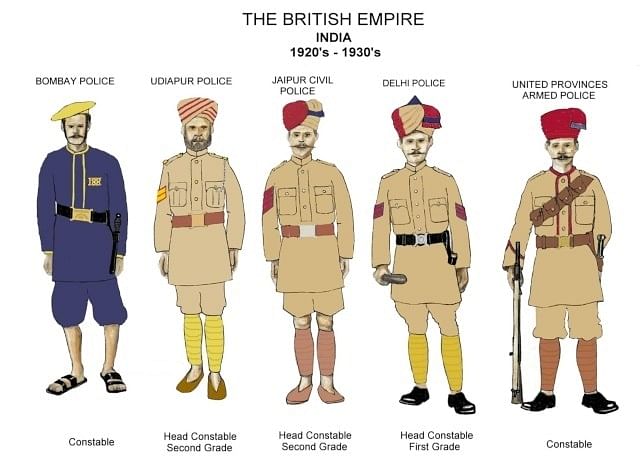
- Watch guards since time immemorial protecting villages at night. Under the Mughal rule, there were the faujdars and mails. The kotwal was responsible for the maintenance of law and order in the cities. In Bengal, Bihar, and Orissa between 1765 and 1772 the zamindars were expected to maintain the staff including thanedars In 1775, faujdar thanas were established
- 1791 Cornwallis organized a regular police force to maintain law and order by going back to and modernizing the old Indian system of thanas (circles) in a district under a daroga (an Indian) and a superintendent of police (SP).1808 Mayo appointed an SP for each division helped by a number of spies (goyendas)
- Recommendations of the Police Commission (1860) led to the Indian Police (i) Act, 1861. The commission recommended—
A system of civil constabulary—maintaining the village set-up in the present form (a village watchman maintained by the village) but the indirect relationship with the rest of the constabulary.
(ii) Inspector-general as the head in a province, deputy inspector-general as the head in a range, and SP as the head in a district. - 1902 The Police Commission recommended the establishment of CID
- Prior to the revolt of 1857, there were two separate sets of military forces under British control, which operated in India. The first set o: I units, known as the Queen's army, were the serving troops on duty in India. The other was the Company's troops—a mixture of European regiments of Britons and Native regiments recruited locally from India but with British officers. The Queen’s army was part of the Crown's military force.
- On the whole, the British Indian Army remained a costly military machine.
- The beginning of a common-law system, based on recorded judicial precedents, can be traced to the establishment of 'Mayor s Courts' in Madras, Bombay, and Calcutta in 1726 by the East India Company.
- Reforms under Warren Hastings (1772-1785)-
(i) District Diwani Adalats were established in districts to try civil disputes. These adults were placed under the collector and had Hindu law applicable for Hindus and the Muslim law for Muslims. The appeal from District Diwani Adalats lay to the Sadar Diwani Adalat which functioned under a president and two members of the Supreme Council.
(ii) District Fauzdari Adalats were set up to try criminal disputes and were placed under an Indian officer assisted by qazis and muftis. These adults also were under the general supervision of the collector. Muslim law was administered in Fauzdari Adalats.
(iii) Under the Regulating Act of 1773, a Supreme Court was established at Calcutta which was competent to try all British subjects within Calcutta and the subordinate factories, including Indians and Europeans. It had original and appellate jurisdictions. Often, the jurisdiction of the Supreme Court clashed with that of other courts.
- Circuit courts were established at Calcutta, Dacca, Murshidabad, and Patna. These circuit courts had European judges and were to act as courts of appeal for both civil and criminal cases.
- Sadar Nizamat Adalat was shifted to Calcutta and was put under the governor-general and members of the Supreme Council assisted by the chief qazi and the chief mufti. The District Diwani Adalat was now designated as the District, City, or the Zila Court and placed under a district judge. The collector was now responsible only for the revenue administration with no magisterial functions.
- A gradation of civil courts was established (for both Hindu and Muslim laws)
(i) Munsiff s Court under Indian officers,
(ii) Registrar’s Court under a European judge,
(iii) District Court under the district judge,
(iv) Four Circuit Courts as provincial courts of appeal,
(v) Sadar Diwani Adalat at Calcutta, and
(vi) King-in-Council for appeals of 5000 pounds and above. - The Cornwallis Code was laid out
(i) There was a separation of revenue and justice administration.
(ii) European subjects were also brought under jurisdiction.
(iii) Government officials were answerable to the civil courts for actions done in their official capacity.
(iv) Principle of the sovereignty of law was established.
- Four Circuit Courts were abolished and their functions transferred to collectors under the supervision of the commissioner of revenue and circuit.
- Sadar Diwani Adalat and Sadar Nizamat Adalat were set up at Allahabad for the convenience of the people of Upper Provinces.
- Till now, Persian was the official language in courts. Now, the suitor had the option to use Persian or a vernacular language, while in the Supreme Court, the English language replaced Persian.
- 1833: A Law Commission was set up under Macaulay for the codification of Indian laws. As a result, a Civil Procedure Code (1859), an Indian Penal Code (1860), and a Criminal Procedure Code (1861) were prepared.
- 1860: It was provided that the Europeans can claim no special privileges except in criminal cases, and no judge of an Indian origin could try them.
- 1865: Supreme Court and the Sadar Adalats were merged into three High Courts at Calcutta, Bombay, and Madras.
- 1935: The government of India Act provided for a Federal Court (set up in 1937) which could settle disputes between governments and could hear limited appeals from the High Courts.
- Rule of law was established.
- Codified laws replaced the religious and personal laws of the rulers.
- Even European subjects were brought under the jurisdiction, although in criminal cases, they could be tried by European judges only.
- Government servants were made answerable to the civil courts.
- The judicial system became more and more complicated and expensive. The rich could manipulate the system.
- There was ample scope for false evidence, deceit, and chicanery.
- Dragged out litigation meant delayed justice.
- Courts became overburdened as litigation increased
- Often, the European judges were not familiar with the Indian usage and traditions.
- The genesis of Administrative Changes: New Stage of Colonialism-There was a renewed upsurge of imperial control and imperialist ideology which was reflected in the reactionary policies during the vice-royalties of Lytton, Dufferin, Lansdowne, Elgin, and, above all, Curzon. The changes in the governmental structure and policies in India were to shape the destiny of modern India in many ways.
- Act for Better Government of India, 1858 transferred the power to govern from the East India Company to the British Crown.
- (ii) By the Indian Councils Act, 1861, a fifth member, who was to be a jurist, was added to the viceroy’s executive council. The legislative council so constituted possessed no real powers and was merely advisory in nature. Its weaknesses were as follows:
- It could not discuss important matters and no financial matters at all without the previous approval of the Government.
- It had no control over the budget.
- It could not discuss executive action.
- The final passing of the bill needed the viceroy’s approval.
- Even if approved by the viceroy, the secretary of state could disallow legislation.
- Indians associated as non-officials were members of elite sections only— princes, landlords, diwans, etc.—and were not representative of the Indian opinion.
- Viceroy could issue ordinances (of 6 months validity) in case of emergency.
- The Indian Councils Act, 1861 returned the legislative powers to the provinces of Madras and Bombay which had been taken away in 1833.
- There were many factors that made it necessary for the British government in India to work towards establishing local bodies.
- Financial difficulties faced by the Government, due to over-centralization, made decentralization imperative.
- It became necessary that modern advances in civic amenities in Europe be transplanted in India considering India’s increasing economic contacts with Europe.
- The rising tide of nationalism had improvement in basic facilities as a point on its agenda.
- A section of British policy-makers saw the association of Indians with the administration in some form or the other, without undermining the British supremacy in India, as an instrument to check the increasing politicization of Indians.
- The utilization of local taxes for local welfare could be used to counter any public criticism of British reluctance to draw upon an already overburdened treasury or to tax the rich upper classes.
The modern history of India, for the convenience of understanding, can be broadly read under four approaches—the Colonial (or the Imperialist), Nationalist, Marxist, and Subaltern—each with its own distinct characteristics and modes of interpretation.
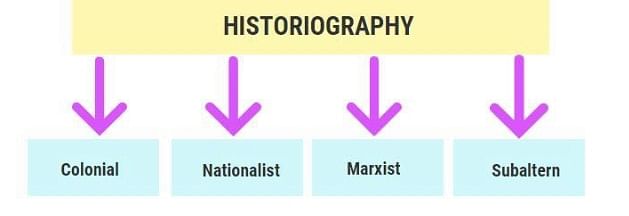 Classification of Modern History
Classification of Modern History
However, there are other approaches — Communalist, Cambridge, Liberal and Neo-liberal, and Feminist interpretations — which have also influenced historical writing on modern India.
The production of histories of India has become very frequent in recent years and may well call for some explanations. The reason is a two-fold one: changes in the Indian scene requiring a reinterpretation of the facts and changes in the attitudes of historians orb essential elements of Indian history. - Percival Spear
For the major part of the 19th century, the Colonial School occupied a high position in India. The term "colonial approach" has been used in two senses. One relates to the history of the colonial countries, while the other refers to the works which were influenced by the colonial ideology of domination. It is in the second sense that most historians today write about colonial historiography.
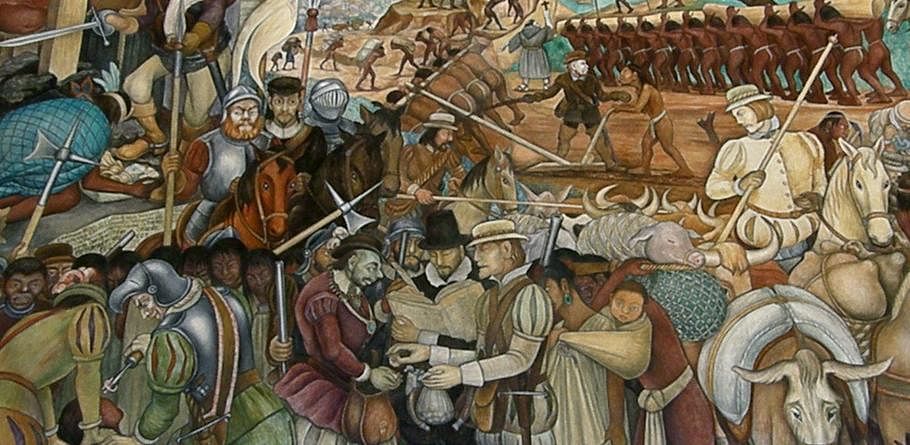 Colonial Historiography
Colonial Historiography Certain characteristics common to most of the works of these historians are the following:
(i) 'Orientalist' representation of India.
(ii) The opinion that the British brought unity to India.
(iii) The notions of Social Darwinism—the English considered themselves superior to the "natives" and the fittest to rule.
(iv) India viewed as a stagnant society which required guidance from the British (White Man's burden).
(v) Establishing Pax Britannica to bring law and order and peace to a bickering society.
- The nationalist approach to Indian history can be described as one which tended to contribute to the growth of nationalist feelings and to unify people in the face of religious, caste, or linguistic differences or class differentiation. This approach looks at the national movement as a movement of the Indian people, which grew out of the growing awareness among all people of the exploitative nature of the colonial rule.
- This approach developed as a response to and in confrontation with the colonial approach. It should be noted that the nationalist historians of modern India didn’t exist before 1947. Before 1947, nationalist historiography mainly dealt with the ancient and medieval periods of Indian history.
- The only accounts of the national movement were by nationalist leaders (not historians) such as R.G. Pradhan, A.C. Mazumdar, J.L. Nehru, and Pattabhi Sitaramayya. R.C. Majumdar and Tara Chand are noted nationalist historians of modern India.
- The beginning of the Marxist approach in India was heralded by two classic books—Rajni Palme Dutt’s India Today and A.R. Desai’s Social Background of Indian Nationalism. Originally written for the famous Left Book Club in England, India Today, first published in 1940 in England, was later published in India in 1947. A.R. Desai's Social Background of Indian Nationalism was first published in 1948.
- Unlike the imperialist/colonial approach, the Marxist historians clearly see the primary contradiction between the interests of the colonial masters and the subject people, as well as the process of the nation-in-the-making. Unlike the nationalists, they also take full note of the inner contradictions between the different sections of the people of the Indian society.
- This school of thought began in the early 1980s under the editorship of Ranajit Guha, as a critique of the existing historiography, which was faulted for ignoring the voice of the people.
- Right from the beginning, subaltern historiography took the position that the entire tradition of Indian historiography had had an elitist bias.
- For the subaltern historians, the basic contradiction in Indian society in the colonial epoch was between the elite, both Indian and foreign, on the one hand, and the subaltern groups, on the other, and not between colonialism and the Indian people.
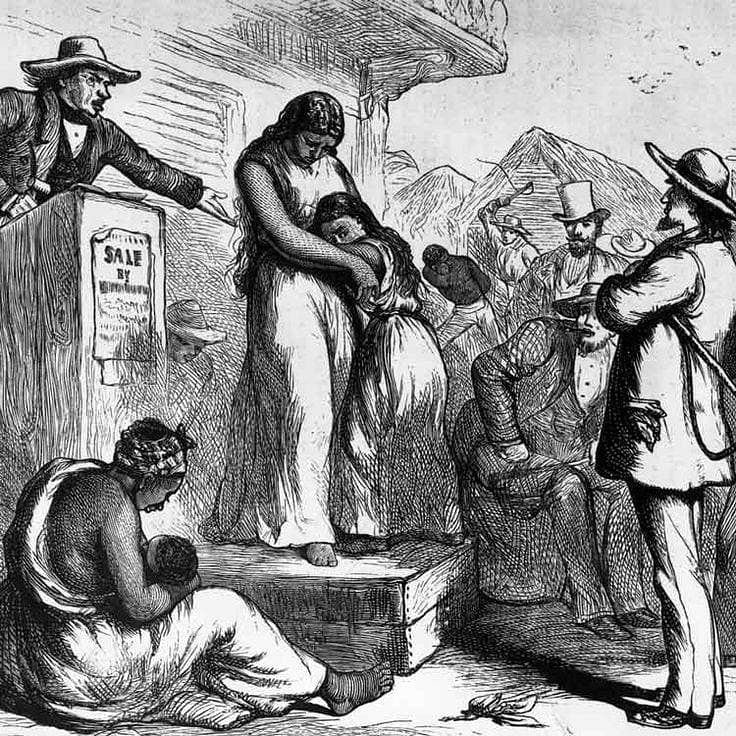 Subaltern historiography, the working class and social theory for the global south
Subaltern historiography, the working class and social theory for the global south- A few historians have of late initiated a new trend, described by its proponents as subaltern, which dismisses all previous historical writing, including that based on a Marxist perspective, as elite historiography, and claims to replace this old, 'blinkered' historiography with what it claims is a new people's or subaltern approach — Bipan Chandra.
- Nationalism, say the subalterns, ignored the internal contradictions within the society as well as what the marginalised represented or had to say. They believe that the Indian people were never united in a common anti-imperialist struggle, that there was no such entity as the Indian national movement.
- The historians of this school, relying completely on the colonial historiography of medieval India and colonial-era textbooks, viewed Hindus and Muslims as permanent hostile groups whose interests were mutually different and antagonistic to each other.
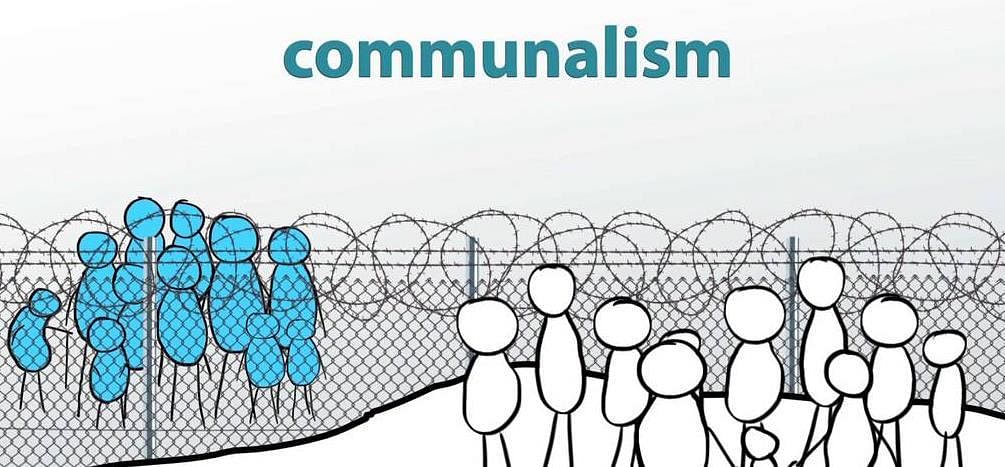 Communalism
Communalism - This view was not only reflected in the writings of the historians but it also found a more virulent form in the hands of the communal political leaders.
- Fundamental contradiction under colonial rule was among the Indians themselves.
- It takes the mind or ideals out of human behaviour and reduces nationalism to 'animal politics'.
- According to this interpretation, the economic exploitation of the colonies was not beneficial to the British people as a whole.
- The availability of markets for British industrial goods in the colonial world and capital investment in overseas markets (like laying of railways in India) might have actually discouraged domestic investment and delayed the development of the 'new' industries in Britain.
The shift in terms of the writing of women’s history began with the women’s movement of the 1970s which provided the context and impetus for the emergence of women’s studies in India. Very soon, women's history broadened and assumed the more complex shape of gender history.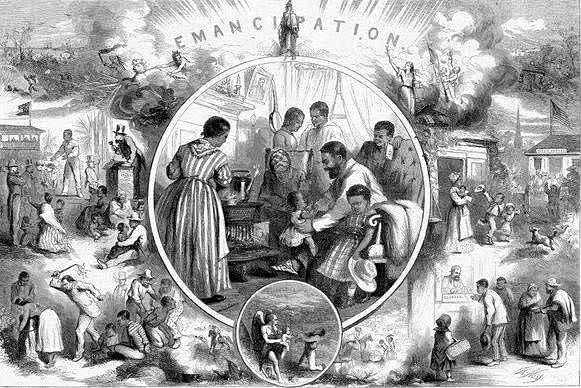 Feminist Historiography
Feminist Historiography
In the colonial period, two works based upon the women’s question in India—The High Caste Hindu Woman (1887) by Pandita Ramabai, and Mother India (1927) by Katherine Mayo—attracted international attention.
Educational Policies and Growth of Modern Education:
The British East India Company showed very little interest in the education of its subjects during this period, the only two minor exceptions being:
- The Calcutta Madrasah set up by Warren Hastings in 1781 for the study and teaching of Muslim law and related subjects, and
- The Sanskrit College at Varanasi by Jonathan Duncan in 1792 for the study of Hindu law and philosophy.
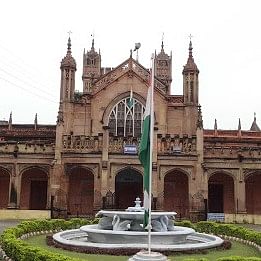 Sanskrit College Varanasi
Sanskrit College Varanasi
Both were designed to provide a regular supply of qualified Indians to help the administration of law in the Courts of the Company.
- Due to the strong pressure exerted on the Company by the Christian missionaries and many humanitarians, including some Indians, to encourage and promote modern education in India, the Charter Act of 1813 required the Company to spend rupees one lakh annually for encouraging learned Indians and promoting the knowledge of modern sciences in India.
- Two controversies about the nature of education arose during the first part of this phase. They were:
- Whether to lay emphasis on the promotion of modern western studies or on the expansion of traditional Indian learning?
- Whether to adopt Indian languages or English as the medium of instruction in modern schools and colleges to spread western learning?
- These two controversies were settled in 1835 when Lord William Bentinck with the support of Rammohan Roy and other reformers, decided to devote the limited resources to the teaching of Western sciences and literature through the medium of English alone.
- In 1844 Lord Hardinge decided to give government employment to Indians educated in English schools. The success of English education was thus assured and it made good progress in the three presidencies of Bengal, Bombay and Madras where a number of schools and colleges were opened between 1813 and 1853.
- Three other developments also took place during this phase. They are:
- A great upsurge in the activities of the missionaries who did pioneer work in almost every field of modern education;
- Establishment of medical, engineering, and law colleges, which marked a beginning in professional education; and
- Official sanction accorded to the education of girls (Lord Dalhousie, in fact, offered the open support of government).
- The Government policy of opening a few English schools and colleges instead of a large number of elementary schools led to the neglect of the education of the masses. This was so because the government was not willing to spend more than an insignificant sum on education.
- To cover up this defect in their policy, the British took recourse to the so-called “Downward Filtration Theory” which meant that education and modern ideas were supposed to filter or radiate downwards from the upper classes.
- In other words, the few educated persons from the upper and middle classes were expected to assume the task of educating the masses and spreading modern ideas.
- This policy continued until the very end of the British rule in practical terms, though it was officially (in theory only) abandoned in 1854.
- The Educational Despatch of 1854, also known as Wood’s Despatch (because it was drafted by Sir Charles Wood, the then President of the Board of Control, who later became the first Secretary of State for India) and generally considered as the “Magna Carta of English Education in India”, formed a landmark in the history of modern education in India.
- For it outlined a comprehensive plan which supplied the basis for the subsequent development of the education system in India.
- This despatch rejected the “filtration theory” and laid stress on mass education, female education and improvement of vernaculars, and favoured secularisation of education and a coordinated system of education from the lowest level (primary school) to the highest stage (university).
- The second half of the 19th century witnessed the gradual implementation of the policies laid down by the Despatch of 1854.
- Creation of Education Departments in the provinces of Bombay, Madras, Bengal, North-Western Provinces and Punjab in 1855 and later in the new provinces which were formed at a later date; organization of the Indian Education Service in 1897 to cover the senior-most posts.
- Establishment of the Universities of Calcutta (January 1857), Bombay (July 1857), Madras (September 1857), Punjab (1882), and Allahabad (1887).
- The Indian Education Commission of 1882, generally known as a Hunter Commission (Sir W.W. Hunter was its president) was appointed by Lord Ripon to enquire into the manner in which effect had been given to the principles of the Despatch of 1854 and to make the necessary recommendations with regard to the primary education (which was the chief object of its inquiry), the Commission recommended that the newly founded local bodies (district boards and municipalities) should be entrusted with the management of primary schools.
- And with regard to the private enterprise, it recommended that the Government should maintain only a few colleges, secondary schools and other essential institutions, and the rest of the field should be left to private enterprise.
- These recommendations, along with others, of the Commission, were accepted by the government and implemented.
- Lord Curzon convened the first conference of Directors of Public Institution in 1901 and initiated an era of educational reform based on its decisions.
- He appointed a Universities Commission under Thomas Raleigh (Law Member of the Viceroy's Executive Council) in 1902, and based on its recommendations Indian Universities Act of 1904 was passed.
- The Act enabled the universities to assume teaching functions (hitherto they were mainly examining bodies), constituted syndicates for the speedier transaction of business, provided for strict conditions of affiliation and periodic inspection of the different institutions.
- All these provisions led to a substantial measure of qualitative improvement in higher education, though the Act was severely criticized by the nationalist Indians for its tightening governmental control over universities.
- In 1910 a separate Department of Education was established at the Centre, and in 1913 the Government of India Resolution on Education Policy called for the opening of residential universities and wanted to improve the training of teachers for primary and secondary schools.
- The Sadler Commission was appointed by Lord Chelmsford to review the work of Calcutta University. Its main recommendations were:
- Secondary education should be left to the control of a Board of Secondary Education and the duration of the degree course should be 3 years, etc.
- By 1921 the number of Universities in India increased to 12, the seven new ones being Banaras, Mysore Patna, Aligarh, Dacca, Lucknow, and Osmania.
- Similar growth could be seen at the secondary and primary levels of education, though this growth rate was hardly sufficient for the purpose of mass education.
- It was also during this phase that the concept of national education was coined for the first time by leaders like Gandhi, Lala Lajpat Rai, Annie Besant, etc. According to them, the existing system of education was unhelpful and even antagonistic to national development, and hence a new system capable of fostering love of the motherland should be evolved.
- Accordingly, a number of national institutions, such as Kasi Vidyapith and Jamia Millia Islamia, were established, and they worked independently of the official system.
- During this phase, education for the first time officially came under Indian control in the sense that it became, under the provisions of the Montford Act of 1919 (and the resultant Diarchical provincial governments), a provincial transferred subject administered by a minister responsible to the provincial legislature. As a result, there was unprecedented expansion at all levels of education.
- Increase in the number of Universities (20 in 1947); improvement in the quality of higher-level education due to the introduction of reforms based largely on the recommendations of the Sadler Commission; establishment of an Inter-University Board (1924) and beginning of inter-collegiate and inter-university activities.
- Significant achievements in the field of women’s education and the education of the backward classes due to the liberal concessions given to them by the popular ministries.
Coastal Kingdoms and Silk Route:
The Silk Road was a network of historic trade routes that connected the ancient globe through trade between 130 BCE and 1453 CE. It was originally created under the Han Dynasty of China. Although the term “Silk Road” is frequently used, historians prefer the term “Silk Routes” because the Silk Road was not a single route that connected the east and the west. These routes were traveled by the European adventurer Marco Polo (1254–1324 CE), who wrote a comprehensive account of them in his well-known work.
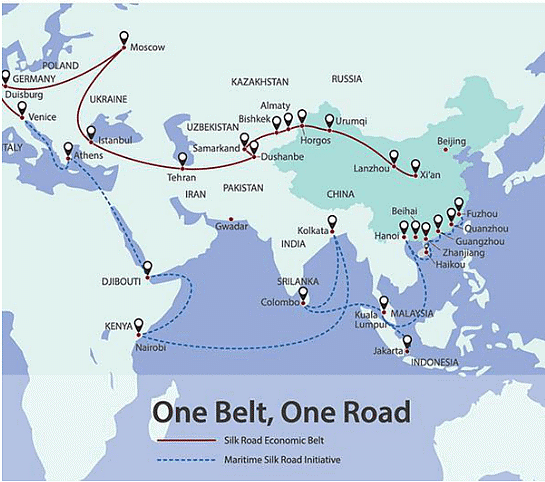
The Silk Road, also known as the Silk Route, was a network of ancient commercial routes that connected East and West from China to the Mediterranean Sea and served as a major conduit for cultural exchange.
- The flourishing traffic in Chinese silk that took place across its length beginning in the Han era (207 BCE – 220 CE) gave rise to the term “Silk Road”. Around 114 BCE, the Han dynasty extended the trade routes through Central Asia, primarily as a result of the travels and missions of Zhang Qian, a Chinese imperial envoy.
- As a result of trade along the Silk Road, long-distance political and economic ties between the civilizations of China, the Indian subcontinent, Persia, Europe, the Horn of Africa, and Arabia were established.
- Although silk was undoubtedly the main export from China, the Silk Routes also saw the exchange of several other items, as well as syncretic ideas, numerous technology, religions, and diseases. The Silk Road was used by the civilizations along its network to conduct cultural exchange alongside commercial trade.
Several routes made up the Silk Road. The Northern route, the Southern route, and the Southwestern route were the most popular overland routes.
Northern route
The Chinese Emperor Wu of Han, who ruled from 141 to 87 BC, employed his army to prevent nomadic tribes from harming travelers inside his zone of influence, which led to the northern route becoming more and more popular during the first century BC.
Southern route
The southern route from China passed through the Karakoram mountains. As a result, it was sometimes referred to as the Karakoram route. The Karakoram mountain range stretches into Afghanistan and Tajikistan in the northwest and crosses the frontiers of Pakistan, India, and China.
Since many travelers preferred to continue by ship rather than traveling overland, the southern route had numerous spurs reaching south to the sea, west of the Karakoram mountains.
Southwestern route
The Ganges Delta was traversed on the southwesterly route between China and India. Archaeological digs in this delta region, which served as a significant commerce hub, uncovered a staggering variety of items from all over the world, including antique Roman beads and gemstones from Thailand and Java.
The Silk Road emerged as the most significant access route in the globalization of the ancient world.
- From 600 to 1200 AD, the Silk Road served as the main route for trade and the connection between Eastern and Western cultures.
- The roadway provided once-in-a-lifetime opportunities for traders, pilgrims, soldiers, explorers, and adventure seekers.
- With departure points in Asia, India, and gradually connecting sea channels all over the region, the ancient Silk Road, a network of commerce routes that spanned more than 4,600 miles, served as a conduit for trade.
- The Silk Road was the most significant and extensive land trade route in human history that connected the most developed and mighty civilizations of the world, the majority of which were concentrated on the Mediterranean and the Yellow and Yangtze River basins.
- Over the course of the centuries-long Silk Road trade, silk and porcelain that belonged to China were the two most popular goods. Given its lightweight, ease of transportation, and reputation of being worth its weight in gold during the Roman era, silk became the most valuable export along the Silk Road. The road, thus aided China’s economic growth and wealth creation.
- Technologies that changed the world spread westward along the Silk Road from the Han era, around 139 BC till the end of the Yuan Empire, in 1368.
- Religions traveled along the Silk Road routes in an eastward direction despite the general westward movement of technology. From the Han era onward, Buddhism had a significant impact on China owing to the introduction of Central Asian-style Buddhism. The advent of Western religions altered civilization as a result.
- While major crops and domesticated animals moved mostly eastward, technology spread primarily westward. To acquire the larger horse breeds, the Han Emperor launched trade along the Silk Road in the year 139 BC. Population increase was largely driven by the eastward spread of crops and animals.
- During the Ming and Qing dynasties (1368–1912), ships moved goods much more efficiently and quickly, rendering the Silk Road land routes obsolete. The Silk Road was then forcibly reopened during the Japanese conquest of China in the 1930s since the Japanese controlled the sea lanes and ports. The Soviet Union provided the Chinese troops with weapons from 1937 to 1941. China was therefore saved which could directly be attributed to the Silk Road.
Silk was transported by traders from China to Europe, where it was worn by aristocrats and wealthy clients. The Silk Road network was crucial for the migration of people, the transmission of philosophy, science, technology, and creative ideas, in addition to the trading of a broad variety of items other than just silk.
Other items that were exchanged over the Silk Road include:
- Ginger, lacquerware, porcelain, and silk fabrics from China
- Sandalwood from India
- Persian dates, pistachios, and saffron from Persia
- frankincense and myrrh from Somalia
- Glass bottles from Egypt
- Fur from Caucasian steppe’s animals
- Spices from the East Indies
- Rome-made glass beads
- A terrible slave trade also took place along the magnificent Silk Road.
- Along the Silk Road, in addition to tangible goods, religion and technology were also “traded.”
- The Silk Road was most valuable for its cultural exchange.
- Each and every aspect of civilization including art, religion, philosophy, technology, language, science, and architecture was shared along these trade routes together with the goods that merchants transported from one nation to another.
- The outbreak of the bubonic plague, which is assumed to have reached Constantinople via the Silk Road and devastated the Byzantine Empire in 542 CE, is proof that diseases also traveled along this route.
- Due to the closure of the Silk Road, traders were compelled to conduct their business through the sea, which ushered in the Age of Discovery and the emergence of a global community.
- The shutdown of the Silk Road prompted Europeans to discover and ultimately conquer the so-called New World of the Americas, thereby establishing the so-called Columbian Exchange, through which commodities and values were carried from those in the Old World to those in the New World, always to the detriment of the native people of the New World.
- The Silk Road served to widen people’s perception of the world they lived in.
Through the first millennium B.C., the Silk road served as a significant trade route.
- It linked the Kamboja kingdom, which encompasses modern-day Afghanistan and Tajikistan, to ancient Pratishthana, which included Paithan on the Godavari in the south, towns and cultural hubs in northern India, and Tamralipti or Tamluk on the eastern coastline.
- India had three potential pathways that linked to the Silk Road. The Silk Road was eventually joined by three routes, first which went through Hadda, Kapisa, and Bamiyan, the second passed through Srinagar, Gilgit, and the Karakoram Range and the last route passed through Purushapura. The aforementioned routes were used for trade and pilgrimage by both foreigners and Indians.
- From Uttarapatha, a significant route connected the Silk Road via Yunnan and Burma. The trade with south-western China was conducted over this route. This is demonstrated by the story of King Chiang Kein (c. 127 BC), who discovered textiles and bamboo from southwest China being sold in the Gandhara market. He discovered via personal research that these products were transported from Yunnan, Burma, to Bengal in eastern India, where they were subsequently transported through the Uttarapatha via Afghanistan and India to Bactria.
- It was not silk that was the most important item transported along this route, but rather, religion. Along the northern branch of the road, Buddhism migrated from India to China and central Asian nations. The first influences appeared during the initial exploration of the passes across the Karakoram.
- Over the course of around 1,500 years, trade along the Silk Road persisted. When the Mongols ruled throughout Eurasia from the Chinese Yuan Empire (1279–1368) to Eastern Europe, trade increased and reached a peak.
- The Silk Road trade in the 1400s was effectively put to an end by the fall of the Yuan Empire, growing isolationism during the reign of the Ming Dynasty (1368–1644), growth of silk manufacturing in Europe and other regions, and expansion of marine trade.
- A new Silk Road is emerging within the Silk Road’s historical background. The Belt and Road Initiative, also known as the Silk Road Economic Belt and the 21st-Century Maritime Silk Road, was introduced by China in 2013. It focuses on encouraging shared wealth and progress.
- Infrastructure for new trans-Asian transportation: The first freight trains from Europe to China started operating in 2011, reducing the 50-day maritime transit time from Germany to China to just 18 days.
- A significant 5,400-kilometer motorway from St. Petersburg to the Yellow Sea was constructed in 2018, enabling travel across the route to take just ten days. This is a new means of transportation for sightseeing and affordable tourism across Silk Road locations.
- The Silk Road is now a well-liked travel route. Silk Road tourism is expanding in Xinjiang as well as all along the route from Xi’an to Kashgar and Altay in Xinjiang to Greece and Albania.
In this EduRev document, you will read about the advent of other European powers and how the British overpowered them and became a dominant power in India.
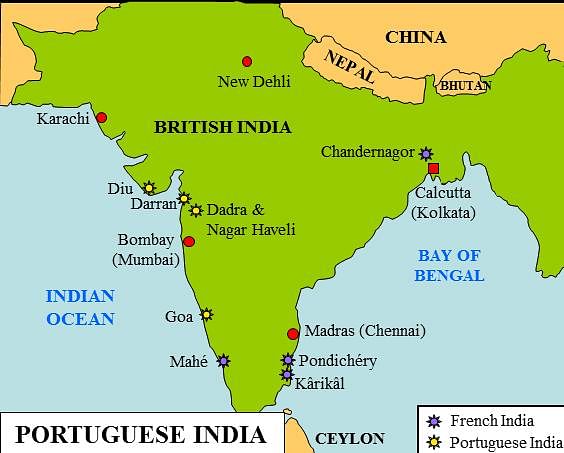
- After the decline of the Roman Empire in the seventh century, the Arabs established dominance in Egypt and Persia, leading to a decline in direct contact between Europe and India.
- Easy accessibility to Indian commodities like spices, calicoes, silk, and precious stones was greatly affected.
- In 1453, Constantinople fell to the Ottoman Turks, making the Red Sea trade route a lucrative state monopoly for Islamic rulers.
- Arabs also controlled the land routes to India.
- The fifteenth-century spirit of the Renaissance in Europe led to increased prosperity and demand for oriental luxury goods.
- Prince Henry of Portugal, nicknamed the 'Navigator,' significantly promoted exploration.
- The Treaty of Tordesillas in 1494 divided the non-Christian world between Portugal and Spain along an imaginary line in the Atlantic.
- Portugal could claim and occupy everything east of the line, while Spain could claim everything west of it.
- The Viceroy of Portuguese possessions in India, Francisco de Almeida, opposed establishing a territorial empire in India, preferring that the Portuguese maintain supremacy at sea and limit their activities to purely commercial transactions. This is known as the Blue Water Policy.
- In order to protect Portuguese interests, King Ferdinand I of Portugal appointed a three-year governor in India and provided him with sufficient troops in 1505.
- By conquering Aden, Ormuz, and Malacca, the newly appointed governor, Francisco De Almeida, was tasked with strengthening the Portuguese position in India and obliterating the Muslim trade.
- Only 8 ships left when Francisco de Almeida arrived at Cochin on October 31, 1505.
- While he was there, he discovered that the Portuguese traders at Quilon had been massacred. He sent his son Lourenço with six ships to attack Quilon’s harbor, where they indiscriminately sank Calicut boats.
- Francisco De Almeida wanted to create Portugal as a powerful nation in the maritime region under this strategy.
- He took control of Goa from the Sultan of Bijapur.
- In 1510 AD, Albuquerque was succeeded by Francisco De Almeida.
- Later, Goa became the headquarters of Portuguese settlements in India.
- The Navy’s dominance and control over the coastal regions helped to build the Portuguese in India.
- Vasco Da Gama, led by a Gujarati pilot named Abdul Majid, arrived at Calicut in May 1498. The ruler of Calicut was Zamorin (Samuthiri) in 1498.
- Arab traders had a profitable business on the Malabar Coast, along with participants from India, Arabs, Africans from the east coast, Chinese, and Javanese. They dealt with Pedro Alvarez Cabral for the spice trade.
- After negotiations, the Portuguese established a factory at Calicut in September 1500.
- Vasco da Gama also set up trading factories at Cannanore and Cochin, which became important trade centers for the Portuguese.
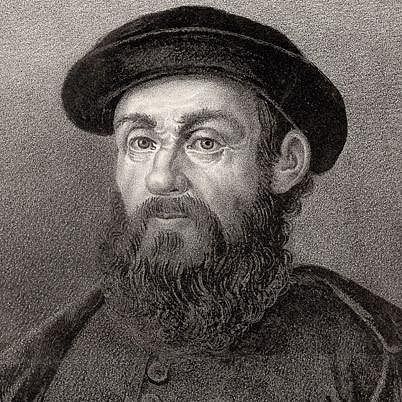
- In 1505, the King of Portugal appointed a governor in India for a three-year term and equipped the incumbent with sufficient force to protect the Portuguese interests.
- Francisco De Almeida, the newly appointed governor, was asked to consolidate the Portuguese position in India and destroy Muslim trade by seizing Aden, Ormuz, and Malacca. He was also advised to build fortresses at Anjadiva, Cochin, Cannanore, and Kilwa.

- The real founder of the Portuguese power in the East.
- In East Africa, Portuguese strongholds off the Red Sea, at Ormuz, in Malabar, and at Malacca.
- The principal port of the sultan of Bijapur became the first bit of Portuguese territory in India.
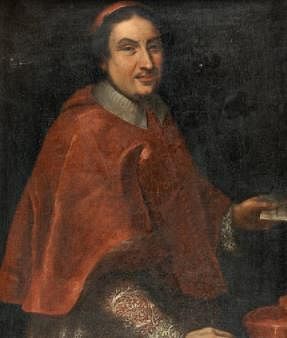
- Nino da Cunha assumed the governor of Portuguese interests in India in November 1529 and almost one year later shifted the headquarters of the Portuguese government in India from Cochin to Goa.
- Bahadur Shah of Gujarat, during his conflict with the Mughal emperor Humayun, secured help from the Portuguese by ceding to them in 1534 the island of Bassein with its dependencies and revenues. He also promised them a base in Diu.
- However, Bahadur Shah’s relations with the Portuguese became sour when Humayun withdrew from Gujarat in 1536. Favorable Conditions for Portuguese.
- Favorable Conditions for Portuguese
(i) Gujarat, ruled by the powerful Mahmud Begarha (1458-1511).
(ii) The Portuguese had cannons placed on their ships.
- Sixty miles of coast around Goa, The Portuguese established military posts and settlements on the east coast at San Thome (in Chennai) and Nagapattinam (in Tamil Nadu)
- Treaties were signed between Goa and the Deccan Sultans in 1570.
- The Portuguese always had a role to play in successive battles for the balance of power between Vijayanagara and the Deccan sultans, between the Deccan and the Mughals, and between the Mughals and the Marathas.
- The Vedor da Fazenda is responsible for revenues and the cargos and dispatch of fleets.
- Intolerant toward the Muslims
- Zeal to promote Christianity
- In 1608, Captain William Hawkins with his ship Hector reached Surat. Jahangir appointed him as a mansabdar of 400 at a salary of Rs 30,000.
- In November 1612, the English ship Dragon under Captain Best and a little ship, the Osiander successfully fought a Portuguese fleet.
- Based on an imperial Farman circa 1579, the Portuguese had settled down on a riverbank which was a short distance from Satgaon in Bengal and later migrated to Hooghly.
- On June 24, 1632 - Hooghly was seized. Bengal governor becomes Qasim Khan.
- The emergence of powerful dynasties in Egypt, Persia, and North India and the rise of the turbulent Marathas as their immediate neighbors.
- The union of the two kingdoms of Spain and Portugal in 1580-81, dragging the smaller kingdom into Spain's wars with England and Holland, badly affected India's Portuguese monopoly of trade.
- The religious policies of the Portuguese gave rise to political fears and, Dishonest trade practices.
- They earned notoriety as sea pirates.
- Goa which remained with the Portuguese had lost its importance as a port after the Vijayanagara empire's fall.
- Marathas invaded Goa-1683.
- Rise of Dutch and English commercial ambitions.
- Diversion to the west due to the discovery of Brazil.
[Intext Question]
- Marked the emergence of naval power.
- Portuguese ships carried cannons.
- The Portuguese onshore's significant military contribution was the system of drilling groups of infantry, on the Spanish model, introduced in 1630.
- Masters of improved techniques at sea.
Cornelis de Houtman was the first Dutchman to reach Sumatra and Bantam in 1596. Cornelis de Houtman
Cornelis de Houtman
Dutch Settlements
- The Dutch founded their first factory in Masulipatnam (in Andhra) in 1605.
- Captured Nagapatam near Madras (Chennai) from the Portuguese and made it their main stronghold in South India.
- The Dutch established factories on the Coromandel coast, in Gujarat, Uttar Pradesh, Bengal, and Bihar.
- In 1609, they opened a factory in Pulicat, north of Madras. Their other principal factories in India were at Surat (1616), Bimlipatam (1641), Karaikal (1645), Chinsura (1653), Baranagar, Kasimbazar (near Murshidabad), Balasore, Patna, Nagapatami 1658), and Cochin (1663).
- They carried indigo manufactured in the Yamuna Valley and Central India, textiles and silk from Bengal, Gujarat, and the Coromandel, saltpeter from Bihar, and opium and rice from the Ganga Valley.
Anglo-Dutch Rivalry
- This posed a severe challenge to the commercial interests of the Dutch by the English.
- The climax of the enmity between the Dutch and the English in the East was reached at Amboyna (a place in present-day Indonesia, which the Dutch had captured from the Portuguese in 1605) where they massacred ten Englishmen and nine Japanese in 1623.
- 1667- Dutch retired from India and moved to Indonesia.
- They monopolized the trade in black pepper and spices. The most important Indian commodities the Dutch traded were silk, cotton, indigo, rice, and opium.
- The Anglo-Dutch Treaty of 1814 AD facilitated the restoration of Dutch Coromandel and Dutch Bengal to Dutch rule, but they were returned to British rule as a result of the clause and provisions of the Anglo-Dutch Treaty of 1824 AD.
- This required the Dutch to ensure all property and establishment transfers until March 1, 1825 AD.
- As a result, by the middle of 1825 AD, the Dutch had lost all of their commercial sites in India.
- The obvious happened as a result of the compromise. In 1667 AD, all parties reached an agreement in which the British committed to withdrawing fully from Indonesia in exchange for the Dutch withdrawing from India to trade in Indonesia, based on a give-and-take formula.
The decline of the Dutch in India
- The Dutch got drawn into the trade of the Malay Archipelago.
- Third Anglo-Dutch War (1672-74), links between Surat and the new English town of Bombay were disrupted, resulting in the Dutch forces capturing three homebound English ships in the Bay of Bengal.
- The English retaliation resulted in the defeat of the Dutch, in the battle of Hooghly (November 1759), thereby ending Dutch ambitions in India.
- Their concerns were trade.
- Commercial interest lay in the Spice Islands of Indonesia.
- Battle of bara-1759 the English defeated Dutch.
Charter of Queen Elizabeth I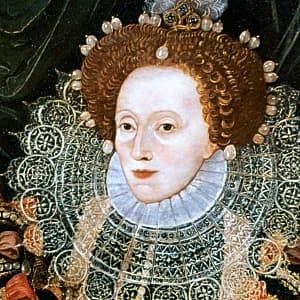 Queen Elizabeth I
Queen Elizabeth I
- Francis Drake's voyage around the world in 1580 and the English victory over the Spanish Armada in 1588. In 1599 'Merchant Adventurers' formed a company.
- On December 31, 1600, Queen Elizabeth I issued a charter with exclusive trading rights to the company named the 'Governor and Company of Merchants of London trading into the East Indies'.
Foothold in West and South
- In 1611, the English started trading at Masulipatnam on the southeastern coast of India and later established a factory in 1616.
- Establish a factory at Surat under Thomas Aldworth-1613.
- In 1615, Sir Thomas Roe came as an accredited ambassador of James I to Jahangir's court.
- Secure permission to set up Agra, Ahmedabad, and Broach factories.
- Bombay had been gifted to King Charles II by the King of Portugal as a dowry when Charles married the Portuguese princess Catherine in 1662. Bombay was given over to the East India Company on an annual payment of ten pounds only in 1668.
- Bombay was made the headquarters by shifting the Western Presidency's seat from Surat to Bombay in 1687.
- 'Golden Farman' was issued by the Sultan of Golconda in 1632. On payment of 500 pagodas a year, they earned the privilege of trading freely in the ports of Golconda.
- The British merchant Francis Day, in 1639 received from the ruler of Chandragiri permission to build a fortified factory at Madras which later became Fort St. George and replaced Masulipatnam as the headquarters of the English settlements in south India.
- English extended their trading activities to the east and started factories at Hariharpur in the Mahanadi delta and Balasore (in Odisha) in 1633.
Foothold in Bengal
- Shah Shuja, the subahdar of Bengal in 1651, allowed the English to trade in Bengal in return for an annual payment of Rs 3,000.
- Factories in Bengal were started at Hooghly (1651) and other places like Kasimbazar, Patna, and Rajmahal.
- William Hedges, the first agent and governor of the Company in Bengal, and Shaista Khan, the Mughal governor of Bengal in August 1682.
- The English retaliated by capturing the imperial forts at Thana (modern Garden Reach), raiding Hijli in east Midnapur, and storming the Mughal fortifications at Balasore.
- On February 10, 1691, the English factory was established the day an imperial Farman was issued permitting the English to "continue contentedly their trade-in Bengal" on payment of Rs 3000 a year instead of all dues.
- In 1698, the English succeeded in getting permission to buy the zamindari of the three villages of Sutanuti, Gobindapur, and Kalikata (Kalighat) on payment of Rs 1,200.
- The fortified settlement was named Fort William in the year 1700 when it also became the seat of the eastern presidency (Calcutta) with Sir Charles Eyre as its first president.
Farrukhsiyar’s Farmans
- In 1715, an English mission led by John Surman to the Mughal emperor Farrukhsiyar secured three famous farms, giving the Company many valuable privileges in Bengal, Gujarat, and Hyderabad. The farmans thus obtained were regarded as the Magna Carta of the Company. Their important terms were:
(i) Company’s Exports and imports are exempted from customs duties except for the annual payment of 3000 rupees in Bengal.
(ii) Issues of data (passes) for transportation.
(iii) East India Company was exempted from the levy of all duties in surat on an annual payment of 10000.
(iv) The coins of the Company minted at Bombay were to have currency throughout the Mughal empire. - Sir William Norris was its ambassador to the court of Aurangzeb (January 1701-April 1702).
- Under pressure from the Crown and the Parliament, the two companies were amalgamated in 1708 under the title of 'United Company of Merchants of England Trading to the East Indies.
Foundation of French Centres in India
- Louis XIV, the king’s famous minister Colbert, laid the Compagnie des Indes Orientals (French East India Company) in 1664 the Compagnie des Indes Orientals was granted a 50-year monopoly.
- In 1667, Francois Caron headed an expedition to India, setting up a factory in Surat. Mercara, a Persian who accompanied Caron.
- Founded another French factory in Masulipatnam in 1669, In 1673 established a township at Chandernagore near Calcutta.
Pondicherry Nerve Centre of French Power in India
- In 1673, Sher Khan Lodi, the governor of Valikondapuram (under the Bijapur Sultan) granted Francois Martin, the Masulipatnam factory director.
- Pondicherry was founded in 1674. And Caron became the French governor.
- Mahe, Karaikal, Balasore, and Qasim Bazar were a few important trading centers of the French East India Company.
Early Setbacks to the French East India Company
- The Dutch captured Pondicherry in 1693.
- The Treaty of Ryswick concluded in September 1697 and restored Pondicherry to the French, the Dutch garrison held on to it for two more years.
- Francois Martin died on December 31, 1706.
- In 1720, the French company was reorganized as the 'Perpetual Company of the Indies’.
The Anglo-French Struggle for Supremacy: the Carnatic Wars First Carnatic War (1740-48)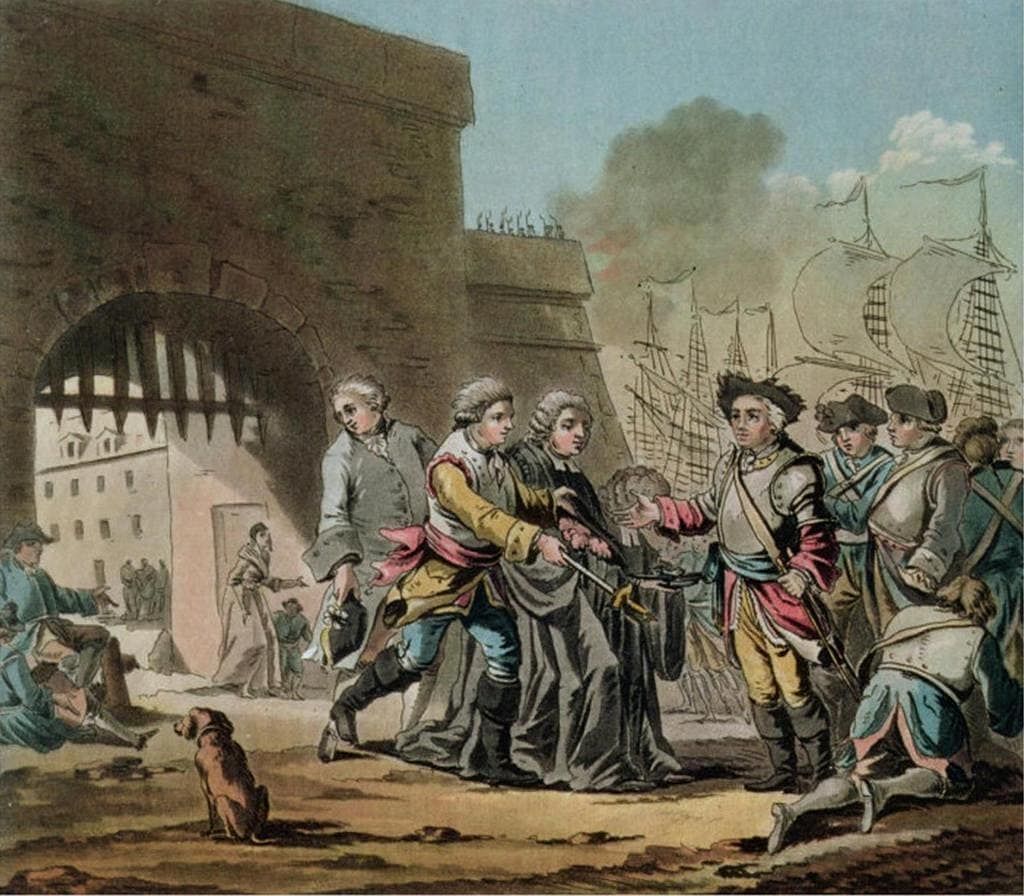 First Carnatic War
First Carnatic War
- Background - Carnatic-Coromandel coast and its hinterland, Extension of the Anglo-French War caused by the Austrian War of Succession.
- Immediate cause - France retaliated by seizing Madras in 1746, Thus beginning the First Carnatic War.
- The result - The treaty of Aix-La Chapelle was signed bringing the Austrian War of Succession to a conclusion.- Madras was handed back to the English. The French got their territories in North America.
- Significance - The First Carnatic War is remembered for the Battle of St. Thome (in Madras) on the banks of the River Adyar fought between the French forces and the forces of Anwar-ud-din, the Nawab of Carnatic, to whom the English appealed for help.
Second Carnatic War (1749-54)
- The background for the Second Carnatic War was provided by rivalry in India.
- Cause -
(i) The opportunity was provided by the death of Nizam-ul-Mulk, the founder of the independent kingdom of Hyderabad, in 1748, and the release of Chanda Sahib, the son-in-law of Dost Ali, the Nawab of Carnatic, by the Marathas.
(ii) The French supported Muzaffar Jang and Chanda Sahib's claims in the Deccan and Carnatic, respectively, while the English sided with Nasir Jang and Anwar-ud-din. - During the war
(i) The combined armies of Muzaffar Jang, Chanda Sahib, and the French defeated and killed Anwarud- din at the Battle of Ambur (near Vellore) in 1749.
(ii) Muzaffar Jang became the subahdar of Deccan, and Dupleix was appointed governor of all the Mughal territories to the south of the River Krishna.
(iii) In August 1751, with only a force of 210 men, Robert Clive attacked and captured Arcot.
Third Carnatic War (1758-63)
- Background - In 1758, the French army under Count de Lally captured the English forts of St. David and Vizianagaram in 1758.
- The course of the war in India - 'Battle of Wandiwash', The decisive battle of the Third Carnatic War was won by the English on January 22, 1760, at Wandiwash (or Vandavasi) in Tamil Nadu.
- The result - The Treaty of Peace of Paris (1763) restored India's French factories.
(I). Dutch had already been defeated in the Battle of Bidara in 1759.
(ii) The victory at Wandiwash left the English East India Company with no European rival in India.
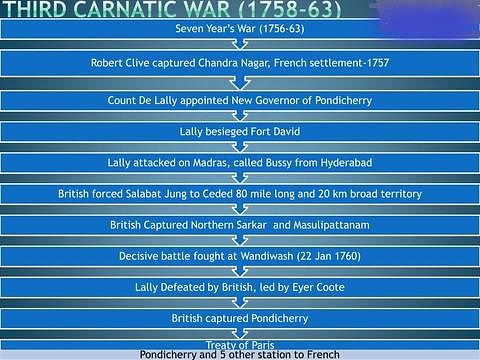
Causes of the English Success and the French Failure
- The English company was a private enterprise - With less governmental control over it, The French company, on the other hand, was a State concern. It was controlled and regulated by the French government.
- The English navy was superior to the French navy.
- The English held three important places: Calcutta, Bombay, and Madras, whereas the French had only Pondicherry.
- The French subordinated their commercial interest to territorial ambition, which made the French company short of funds.
- The superiority of the commanders in the British camp.
The Danes-1620
- They founded a factory at Tranquebar near Tanjore, on the eastern coast of India. Their principal settlement was at Serampore near Calcutta.
Why did the English succeed against Other European Powers?
- Structure and Nature of the Trading Companies - English East India Company, was controlled by a board of directors whose members were elected annually.
- Naval Superiority - The Royal Navy of Britain was not only the largest; it was the most advanced of its times. The victory against the Spanish Armada and the French at Trafalgar had put the Royal Navy at the European naval forces' peak.
- Industrial Revolution - The industrial revolution reached other European nations late, which helped England maintain its hegemony.
- Military Skill and Discipline - British soldiers were disciplined a lot and well-trained.
- Stable Government
- Lesser Zeal for Religion
- Use of Debt Market - The world’s first central bank (the Bank of England) was established to sell government debt to the money markets to promise a decent return on Britain’s defeating rival countries.
INTRODUCTION
Commercial contacts between India and Europeans were very old via the land route but there were various shortcomings of Land-based routes like multiple taxations, theft, conflicts with tribes/kingdoms etc. Therefore in 1494, Columbus of Spain started for India in search of a Sea Route and discovered America instead. In 1498, Vasco da Gama of Portugal discovered a new sea route from Europe to India. He reached Calicut by sailing around Africa via the Cape of Good Hope. This was the first arrival of European in India by Sea route.
EUROPEANS IN INDIA
Sequence of an establishment of European Companies
1. Portuguese (1498)
2. English East India Company (1600)
3. Dutch East India Company (1602)
4. Danish East India Company (1616)
5. French East India Company (1664)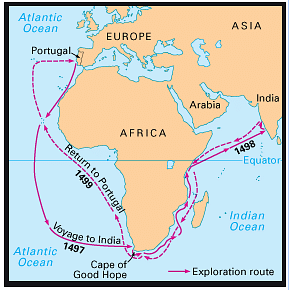
Why Europeans came to India?
- Trade in Agro-based product like Cotton and handicrafts was the major reason which led to the advent of Europeans.
- India was the major source of the spices. Some spices have antibiotic properties and they were also used to preserve the food.
- Sea routes were discovered in order to reduce conflicts, taxation etc. which were generally faced during land-based journey.
1. Portuguese in India
- The Portuguese came to India to Trade and they wanted to take away the spice trade from the Arab traders. They even resorted to piracy in order to capture the spice trade.
- Francis de Almeida was the first governor of the Portuguese in India. Later, in 1509 Albuquerque became the governor.
- Albuquerque captured Goa from the ruler of Bijapur in 1510. Subsequently, Goa became the capital of the Portuguese settlements in India.
- Portuguese influence declined in India by the end of the 16th century as naval and commercial powers of the France, English and Dutch had given a strong competition to Portuguese and Spanish trade monopoly.
- Around 17th century they had lost all their possessions in India except Goa, Diu and Daman as the Marathas captured Salsette and Bassein in 1739.
- Portuguese lived for temporary periods in the settlements and then returned to Portugal.
- Portuguese were intolerant of the existing religions of India and tried to force people to become Christian.
Causes of decline of Portuguese Power in India
- Rise of other trading powers i.e. English, French, Dutch.
- Spain won Portugal in 1580 A.D. Phillip II of Spain neglected Portugese dominions in India.
- The Portuguese administration had become corrupt.
- The religious policy backfired them.
- In the 17th century, the Dutch also expelled the Portuguese from most parts of India.
2. British East India Company
- The British East India Company sometimes also called John Company , was a Joint- Stock Company established in 1600, as The Company of Merchants of London Trading into the East Indies.
- William Hawkins stayed at the Court of Jahangir from 1608 to 1611.
- The British Company gained foothold in India in 1612 when Mughal emperor Jahangir granted the rights to establish a factory in Surat to Sir Thomas Roe.
- The Court of directors was the supreme authority in framing policies for the company.
Move towards colonization
- In the first 50 years of its arrival, British East India Company, had no interest in the development of colonies, it preferred to engage in trade only.
- This policy saw a change by 1650 when the power of the old guard British royalist merchants was broken, and a new class of merchants wrested control of the Company.
- Later, they tried to establish the political power so that they can compel the Mughals to allow them a free hand in trade and keep the rival European out.
- In 1686 hostilities between English and Mughal emperor broke out, when English had declared war on Emperor. English lost the war and apologized for the same.
- In 1717 Farrukh Siyar confirmed the privileges granted in 1691 Farman and extended them to Deccan and Gujarat.
3. The Dutch East India Company
- The Dutch East India Company was established in 1602. Dutch established their settlements at Masulipattinam, Karaikal, Nagapattinam, Pulicat, Surat, Chinsura and Kasimbazar.
- Dutch exported indigo, cotton textiles, saltpetre, raw silk, and opium from India.
- It was the first company to issue stock.
- In the 17th century before the prominence of British they emerged as the most dominant power in European trade in the East.
- Main centre of Dutch in India was Pulicat and later it was replaced by Nagapattinam.
- Indonesian Islands of Java, Sumatra, and the Spice Islands where spices were produced, were the main interest of the Dutch.
- In 1667, Dutch agreed to leave alone English settlements in India, while English gave up all claims to Indonesia.
- Dutch commercial activities started to decline by the beginning of 18th century and with the Battle of Bedera with the English in 1759 it came to an end.
- Short sited commercial policy which was mostly based on trade in spices was also a major cause of decline of Dutch Power.
4. The Danish East India Company
- The Danish formed an East India Company and arrived in India in 1616.
- Important Danish settlement in India was Serampore in Bengal, it was also their headquarters in India.
- They could not establish their position in India and finally sold all their Indian settlements to the English in 1845.
- They were more concerned with missionary activities.
5. French East India Company
- French East India Company was established in 1664.
- The first French factory in India was established at Surat.
- The French company was created, financed and controlled by the State and it differed from the English company which was a private commercial venture.
- Duplex was an important French governor in India (1742).
- Duplex began the policy of extending territorial empire in India and started political occupations, leading to series of conflicts with English in form of Carnatic Wars.
- Battle at Wandiwash against the East India Company in 1760 was the decisive battle for the French existence in India through which they lost almost all their possessions in India.
Development After Aurangzeb’s Death
- It was in 1705 that Aurangzeb appointed Murshid Quli Jafar Khan as the Governor of Bengal and later on placed Orissa also under his authority.
- Murshid Quli transferred his capital from Dacca to Murshidabad, and soon after the death of Aurangzeb, developed a practically independent authority thus founding a new ruling dynasty in those provinces.
- He died in 1727, and was succeeded by his son-in-law, Shuja-ud-daula Khan who added Bihar also to his authority where he appointed Alivardi Khan as his deputy.
- When Shuja-ud-daula died in 1739, his son Sarfaraz Khan succeeded him.
- Through Isha Khan, Alivardi approached the emperor for a Sanad to fight Sarfaraz and occupying the government of the provinces himself, promising in return to present the imperial exchequer an amount of one crore rupees in addition to an annual tribute of the same amount and all the wealth he would confiscate from Sarfaraz.
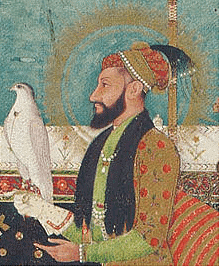 Aurangzeb
Aurangzeb - By the middle of March 1740 he received orders from Delhi approving of his scheme and on 10 April 1740 he defeated and killed Sarfaraz in a fierce battle near Giria and captured the vice-royalty of Bengal for himself.
- Alivardi Khan who ruled Bengal, Bihar and Orissa from 1740 to 1756, should probably have proved an efficient ruler. But the repeated Maratha incursions into his territories made his days bitter and did not permit the country’s trade, agriculture and industries to flourish.
- In 1751 the Marathas forced a treaty on the nawab under which he agreed to pay them twelve lakh rupees annually as chauth.
- The Marathas also occupied Orissa and encouraged the nawab’s Afghan generals and soldiers to rebel against his authority.
- So long as he lived, Alivardi, however, was able to exert his authority over the Europeans.
- During the Anglo-French conflicts in the Deccan, the nawab closely watched their movements in Bengal, though he himself remained strictly neutral.
SIRAJ-UD-DAULAH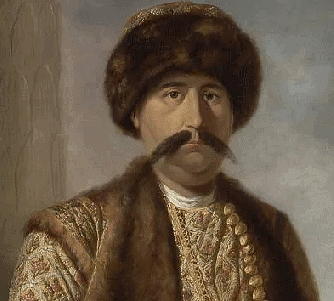 Siraj-ud-daulah
Siraj-ud-daulah
- When Alivardi Khan died in 1756, he had no son to succeed him. His three daughters were married, one to the governor of Purnea, the second to that of Dacca and the third to that of Patna.
- But all his sons-in-laws predeceased him, and he had to designate Siraj-ud-Daula, his grandson from his favourite youngest daughter, as his heir-apparent.
- For Siraj-ud-Daula, however, the throne of Bengal was not a bed of roses. He was merely in his twenties when he ascended the throne.
- His succession was immediately challenged by his cousin Shaukat Jang who was the son of the second daughter of Alivardi Khan at Purnea.
- Shaukat Jang raised a standard of revolt. Besides, Alivardi also had to reckon with the jealousy of his aunt Ghasiti Begum who was supported by her dewan Rajballabh.
- The events in the Deccan had taught him not to rely on the Europeans in Bengal while he also feared the Hindu restlessness under the continuing Muslim rule.
Events Leading to the Battle of Plassey
- By appealing to the sentiments of Ghasiti Begum, Siraj was able to win her over and then carried her to his own palace where she was placed under a strict surveillance.
- He then marched against Shaukat Jang, but before he could accomplish his job at Purnea, he turned about and marched against the British.
- It does not seem correct that at his death-bed Alivardi had advised Siraj to reduce the power of the Europeans in Bengal. He rather enjoined upon him not to quarrel with them.
- Siraj’s own attitude towards the Europeans, and particularly towards the English before he came to power, was sympathetic, as it is clear from the “utmost politeness and distinction” with which he received the president of the English Company when he came to Hooghly in 1752 after being designated heir-apparent. After his accession to the throne, however, the circumstances soon changed, which eventually brought about a rupture between him and the English.
The Rupture
- The study of the causes of this rupture is interesting. The story of the developments in the Deccan where Nasir Jang was murdered and the French established a protectorate at Hyderabad, and the story of Clive’s exploits at Arcot were well known to Siraj-ud-Daula. And his fears that the Europeans might create a similar situation in Bengal also were not quite unfounded. The following words which the Select Committee at Madras addressed to that in Calcutta in 1756, are revealing:
“We need not represent to you the great advantage which, we think, it will be to the military operations and the influence it will have in the nawab’s councils to effect a junction with any powers in the Provinces of Bengal that may be dissatisfied with the violence of the Nawab’s Government or that may have pretensions to the subaship.”
The Nawab’s enemy Shaukat Jang was said to be in correspondence with the British to get their help. Ghasiti Begum and her dewan Rajballabh also appreciated the English power and sympathy. All these developments were bound to make the nawab cautious towards these foreigners. - Bitterness between the nawab and the English developed when Krishnaballabh, the son of Rajballabh, took protection under the British.
- Rajballabh had earned disfavor of the Nawab by some embezzlements of money, and his son was said to have carried to Calcutta all the wealth thus hoarderd, getting his admission into that city by bribing at least two men of Fort William with “upwards of fifty thousand rupees”, for protection against the Nawab. The Nawab’s demand to surrender Krishnaballabh was refused by the British.
- Then, the imperial firman of 1716-17 had granted some trade privileges to the British Company whereby they traded in Bengal custom-free.
- But this privilege began to be abused by the servants of the Company under the Company’s dustaks (free-trade passes) which they not only frequently used in their own private trade, but even went so far as to sell them to some Indian traders.
- The matter was precipitated when fresh hostilities in Europe broke out between the English and the French in the shape of the Seven-Year’s war.
- In view of this, the English and the French, both started raising fortifications in Calcutta and Chandernagore respectively. Both of them had assured Alivardi Khan to remain peaceful in Bengal, but now they seemed to be preparing for an open clash between them.
- The Nawab was naturally incensed and objected to such violation of his dominions. The French stopped their fortifications, but the British continued with their job.
The War
- His passion for a quick revenge, young man as he was, however, got the better of him, and early in June 1756, the Nawab attacked and captured the British factory at Kasimbazar, taking Watts, its chief, a prisoner.
- On the 5th the Nawab’s estimated 50,000 sepoys appeared before Calcutta. Their attack on the northern side of the town was repulsed, where after, on 15 June Fort William was besieged. Four days after this, Drake together with most of the members of his council, joined by women and children, escaped through the back door down the river Hooghly and landed at Fulta.
- The besieged force. thus deserted by its leaders, placed command in the hands of one Holwell but their resistance could not last for more than two days, and ultimately they were compelled to surrender.
The Black Hole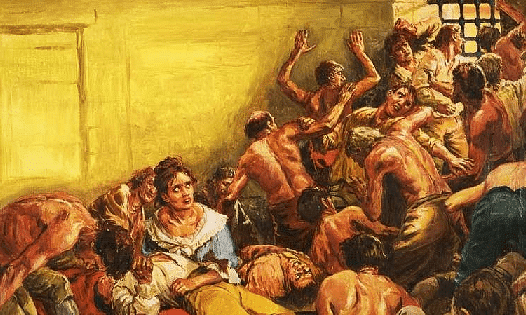 Black hole of Calcutta
Black hole of Calcutta
- Those who thus surrendered were taken by the Nawab’s officers to a dark cell within the fort.
- The cell was eighteen feet long and fourteen feet ten inches wide. Only two holes, barricaded with iron bars, admitted air from the dark. When the door was finally locked on them, 145 men, including twelve wounded officers, and one woman, Mary Carey, had been forcibly thrust and crammed into the prison. The next day at six a.m., ten hours after the lock had been turned in the door, when the door was opened, twenty-two men and one woman staggered across the bodies of their companions and stumbled out, one at a time, into the fresh air of the parade ground, leaving a hundred and twenty-three dead behind.
- J.Z. Holwell was one of the survivors, and it is from the graphic account which he prepared nine months after the event during his voyage home to England that most of the later references to this event have been drawn.
British March and the Peace Treaty
- When the news of the disaster in Calcutta reached Madras, the authorities there decided immediately to take steps to recover their settlement, failing which, they knew, they would lose their prestige in the eyes of Indians as it would weaken them before the French.
- They despatched Admiral Watson who was to command the expedition to Bengal by sea, and Colonel Clive who was put in charge of the expedition by land.
- Nine hundred Europeans and fifteen hundred Indian sepoys sailed with them on 16 October 1756.
- The fugitives at Fulta were relieved in December, while on 2 January 1757 they secured Calcutta from Manik Chand who had been bribed and who surrendered after a show of resistance.
- All this roused the Nawab’s anger and he collected 40,000 men and marched towards Calcutta with the determination to drive out the British once for all.
- But he was not known for tenacity of purpose, and after crossing the Hooghly on 30 January when Clive delivered a surprise attack on him, he was completely unnerved, not withstanding the fact that the fight was indecisive.
- Preponderantly large army as compared to that of the enemy did not give him the strength of mind needed in a war, and he accepted the advice of his officers to sign peace.
- When the proposal for peace came from the Nawab, Clive accepted it. A treaty was signed on 9 February 1757.
It is provided that: - All the privileges secured by the British from the emperor of Delhi, were confirmed .
- The British would continue enjoying right to dastaks within Bengal, Bihar and Orissa.
- Their factories would be restored and they would be compensated for all other losses.
- They would be free to fortify Calcutta as they desired;
- They would have the right to coin their own money. In return for all this the British signed an offensive and defensive alliance with the Nawab.
- Immediately after that Clive captured the French settlement of Chandernagore.
Conspiracy Against the Nawab
- There was dissatisfaction among the nobles of the Nawab. Some Hindu bankers like Jagat Seth and zamindars like Maharaja Krishanachandra of Nadia disliked the Nawab for his anti-Hindu policies.
- Then a conspiracy seemed afoot to make Mir Jafar the Nawab. Mir Jafar was a commander of the Nawab’s forces, who had married the sister of Alivardi Khan.
- When, Clive learnt from Watts, the Company’s Resident at Murshidabad towards the end of April 1757, that the conspirators wanted the British to join them to overthrow the Nawab in favour of Mir Jafar, he readily agreed.
- The conspirators signed an agreement. It was believed that the Nawab’s treasury contained 40 million sterlings.
- Mir Jafar agreed that if he were placed on the throne:
- He would compensate through the British everybody for the losses suffered during Siraj-ud-Daula’s attack on Calcutta. Thus the Company would get a crore of rupees on this account, fifty lakhs would be distributed among the European residents of Calcutta, twenty lakhs among Hindus and Muslims and seven lakhs among the Armenians who had suffered losses.
- He was also to reward the company with certain territories.
- He would not raise any fortification near Hooghly.
- He would enter into an offensive and defensive alliance with the British.
- He agreed to deliver up to them all the Frenchmen and their property in the provinces of Bengal, Bihar and Orissa.
- When the above secret agreement was drawn up, Omichand, a Sikh merchant at Calcutta, acted as the go between.
The Battle of Plassey
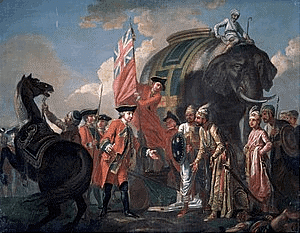 Battle of plasseyWhen everything was ready Clive wrote to the Nawab charging him of having violated the treaty of 1757, and without awaiting the reply he marched towards Plassey, a distance of fifteen miles, reaching there at one o’clock on the morning of June 23.
Battle of plasseyWhen everything was ready Clive wrote to the Nawab charging him of having violated the treaty of 1757, and without awaiting the reply he marched towards Plassey, a distance of fifteen miles, reaching there at one o’clock on the morning of June 23.
The Significance of the Battle of Plassey
- The British agreed to receive only one-half of the stipulated amount and the remainder within three years thereafter by equal six-monthly installments.
- The company also received the territory of 24 Parganas.
- Clive himself benefited to the tune of sixteen lakh rupees.
- Besides, the Company got full freedom to trade throughout the Nawab’s dominions.
- It established subordinate factories in the interior of the province and established its mint at Calcutta from which the first E.I.C. rupee appeared on 19 August 1757.
- The Battle of Plassey demonstrated bankruptcy of the existing system of administration, it brought to the surface the internal dissensions in the State and clearly exhibited that the days of the Muslim rule in Bengal were now numbered.
- As a result of the British success in this battle, the other European powers were completely eliminated from the political scene in Bengal.
- The French were delivered to the British hands and feet tied, and no other European power could now dare challenge the British supremacy in that part of the country.
- The judicial machinery of Bengal was paralysed, its law and order were wrecked and its wealth steadily drained out to England sapping its vitality till the country became poor and its people turned paupers.
- In 1772 two committees examined witnesses and published details. They found that between 1757 and 1766 no less than 2,169,665 had been given by the natives to the Company’s servants in presents, besides the yearly income of 30,000 paid to Clive as a noble of the Mughal empire, while 3,770,833 had been paid in compensation for losses.
INTRODUCTION
Battle of Plassey was a major turning point in modern Indian history that led to the consolidation of the British rule in India. This battle was fought between the East India Company headed by Robert Clive and the Nawab of Bengal (Siraj-Ud-Daulah) and his French Troop. This battle is often termed as the ‘decisive event’ which became the source of ultimate rule of the British in India. The battle occurred during the late reign of Mughal empire (called later Mughal Period). Mughal emperor Alamgir-II was ruling the empire when the Battle of Plassey took place.
BATTLE OF PLASSEY
It is a battle fought between the East India Company force headed by Robert Clive and Siraj-Ud-Daulah (Nawab of Bengal). The rampant misuse by EIC officials of trade privileges infuriated Siraj. The continuing misconduct by EIC against Siraj-Ud-Daulah led to the battle of Plassey in 1757.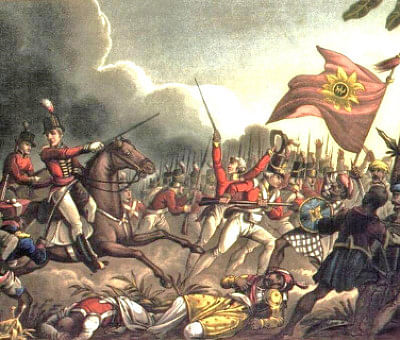 Battle of PlasseyCAUSES OF THE BATTLE OF PLASSEY
Battle of PlasseyCAUSES OF THE BATTLE OF PLASSEY
- Majorly, the reasons for the Battle of Plassey to take place were:
(i) The rampant misuse of the trade privileges given to the British by the Nawab of Bengal
(ii) Non-payment of tax and duty by the workers of the British East India Company - Other reasons that supported the coming of this battle were:
(i) Fortification of Calcutta by the British without the Nawab’s permission.
(ii) Misleading Nawab on various fronts by British.
(iii) An asylum was provided to Nawab’s enemy Krishna Das. - The East India Company had a strong presence in India majorly at Fort St. George, Fort William and Bombay Castle.
- The British resorted to having an alliance with the Nawabs and princes in exchange for security against any form of external and internal attack and were promised concessions in return for their safety and protection.
- The problem arose when the alliance was disrupted under the rule of Nawab of Bengal (Siraj-Ud-Daulah). The Nawab started seizing the fort of Calcutta and imprisoning many British Officials in June 1756. The prisoners were kept in a dungeon at Fort William. This incident is called the Black Hole of Calcutta since only a handful of the prisoners survived the captivity where over a hundred people were kept in a cell meant for about 6 people. The East India company planned an attack and Robert Clive bribed Mir Jafar, the commander-in-chief of the Nawab’s army, and also promised him to make him Nawab of Bengal.
- The Battle of Plassey was fought at Palashi, on the banks of Bhagirathi river near Calcutta on June 23, 1757.
- After three hours of intense fighting, there was a heavy downpour. One of the reasons for the defeat of Nawab was the lack of planning to protect their weapons during the heavy downpour which turned the table in favour of the British army apart from the major reason being the treachery of Mir Jafar.
- Siraj-Ud-Daulah’s army with 50,000 soldiers, 40 cannons and 10 war elephants was defeated by 3,000 soldiers of Robert Clive. The battle ended in 11 hours and Siraj-Ud-Daulah fled from the battle post his defeat.
- According to Robert Clive, 22 men died and 50 were injured from the British troops. The Nawab army lost about 500 men, including several key officials and many of them even suffered several casualties.
Who Fought the Battle of Plassey?
The table below will inform the participants of the Battle of Plassey and their significance in the battle: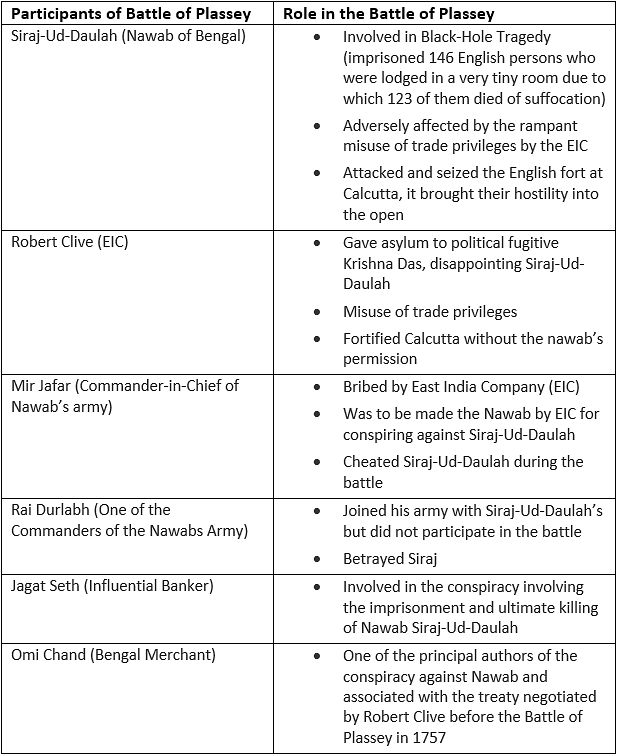
EFFECTS OF BATTLE OF PLASSEY
Apart from the British getting political power of Northern India but only after Nawabs, there were several other effects in many forms that came out as a result of the Battle of Plassey. They can be categorised as:
- Political Effects
- Economic Effects
Political Effects
- The Battle of Plassey resulted at the end of the French forces.
- Mir Jafar was crowned as the Nawab of Bengal.
- Mir Jafar was unhappy with the position and instigated the Dutch to attack the British in order to consolidate his foundation.
- Battle of Chinsura was fought between the Dutch and British forces on November 25, 1759.
- The British installed Mir Qasim as the Nawab of Bengal.
- The British became the paramount European power in Bengal.
- Robert Clive was titled “Lord Clive”, Baron of Plassey and also obtained a seat in the British House of Commons.
Economic Effects
- The economy of India was affected severely.
- Post the victory, the British started imposing severe rules and regulations on the inhabitants of Bengal in the name of tax collection.
- The victory at Plassey was Clive’s victory over Siraj-ud-Daula and not Mir Jafar’s.
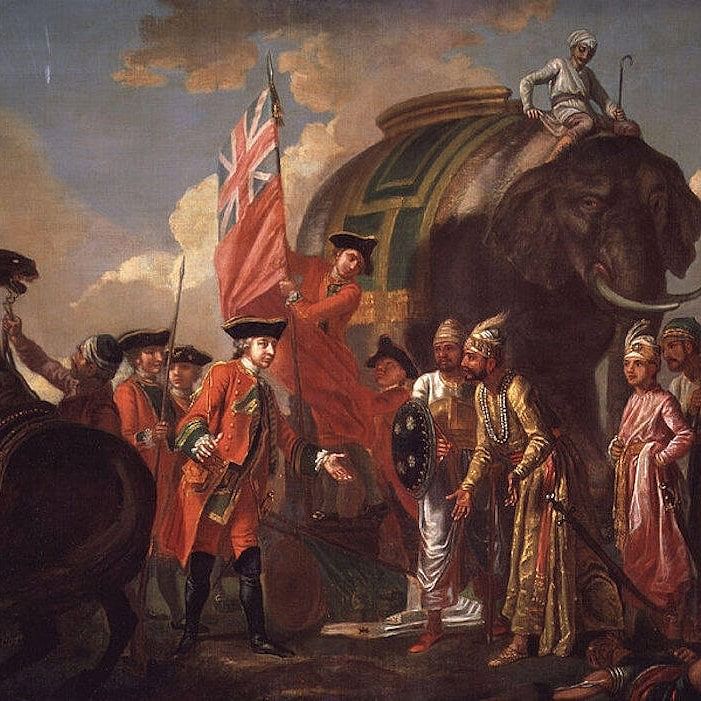 Mir Jafar and Robert Clive after the Battle of Plassey in 1757.
Mir Jafar and Robert Clive after the Battle of Plassey in 1757. - He boosted of his victory to everybody and made it his concern to obtain a formal recognition for Mir Jafar from the Mughal emperor using the influence and wealth of Jagat Seth for the purpose.
- Clive undertook on himself the duty to appoint to responsible offices only to the men who could deliver themselves efficiently.
- A complication arose when in 1759 the Dutch led an expedition into Bengal.
- The Dutch, like the British, had considerable commercial transactions in Bengal. They had their factories at places like Patna, Dacca, Pipli, Chinsura and Kalikapur, near Kasimbazar.
- Their territorial possessions, however, existed only at Baranagaore and Chinsura, with their council established at the latter place.
- In October 1759, six or seven Dutch vessels from Batavia full of European and Malayan troops arrived at the mouth of the Hooghly.
- Clive wrote a strong letter to the Nawab asking him to send his son to chastise the Dutch, to which Mir Jafar did not agree.
- Then the English made necessary preparations, and marched against the Dutch whom they gave a battle on the plains of Bedara, on November 25, 1759. The Dutch were put to a total rout, after which they sued for peace.
- Clive sailed for England in February 1760.
- After his departure, the governorship was held temporarily be Holwell for a few months.
- He was relieved by Henry Vansittart in July 1960.
- The enormous amount exacted by the English as price for Mir Jafar’s elevation to the throne was a serious drain on his treasury.
- Weaknesses of the Nawab’s administration led to a fall in the collection of land revenue.
- The abuse in the field of trade, caused chiefly by the illegal practices of the company’s servants, reduced the customs revenue.
- Unable to settle the company’s demand in cash, Mir Jafar assigned to it some portions of the district of Nadia and Burdwan.
- Holwell held Mir Jafar responsible for all troubles and advocated his removal from the throne.
- Holwell found in the Nawab’s son-in-law Mir Qasim a person who could save the situation.
- Vansittart accepted Holwell’s plan and allowed him to finalise arrangements with Mir Qasim.
- The result was the treaty of September 27, 1760 with Mir Qasim.
- Mir Jafar agreed himself to step down in favour of the latter provided he was promised sufficient allowance for his maintenance and safety.
- Mir Qasim was proclaimed the new Nawab. This was the second revolution in Bengal.
- Qasim signed a treaty with the English company whereby the latter undertook that if he was raised to the office of Neabut (deputy Nawab), and as successor to the Nawab Mir Jafar, he would remain in firm friendship with the English company.
- The English army would assist him in the management of all his affairs, while to meet their charges the Nawab would assign to the British the lands of Burdwan, Chittagong and Midnapur.
- The English also would have the right to purchase one-half of the cement produced at Sylhet for three years.
- And Mir Qasim is also said to have promised to pay off the arrears due to the English army, to help meet a part of the charges on the Carnatic War and to pay twenty lakh rupees to the members of the Calcutta Council in the shape of presents
- Mir Qasim felt urgently the need of introducing reforms in the army so that it should become an effective instrument to deal with the internal and the external dangers.
- Internally, there were the refractory chiefs like Raja of Birbhum and Ram Narain, the Deputy Governor of Bihar, who had to be suppressed, and though secretly, the English also whose main object was to make puppets of the Nawabs.
- Externally, the fear of Shah Alam’s attacks of Maratha incursions and of the nefarious designs of the Nawab Wazir of Oudh towards Bengal was a constant source of anguish.
- The striking power of the army had to be increased which, however, it was not very safe to do. For the British were bound to grow jealous of any such action.
- As a first step towards this direction, therefore, he decided to shift his capital to Monghyr which was not only the central place to administer the whole of the province, but also sufficiently distant from Calcutta to give him independence from the British.
- A factory for the manufacture of guns and fire-locks was established at Monghyr.
- French and American officers were engaged for the training of his officers, and the whole military department was organised after the European fashion.
- The Calcutta Council was getting seriously estranged against the Nawab because of his constant refusal to reimpose trade duties on the Indians.
- They decided to send to him a mission on which they appointed Hay and Amyatt, two of its members who were known for their hostile opinions about the Nawab.
- Such a mission was doomed to failure. The mission placed its demands before the Nawab in which they demanded that the trade duties should be reimposed on the Indians and the company should be compensated for its losses on this account.
- It demanded proprietary rights on the three districts ceded to the Company by the 1760 treaty and release of the Seths whom he had imprisoned allegedly for their pro-British attitude.
- The mission also placed before him the lines which should guide the future relations between his servants and those of the Company.
- The Nawab not only rejected all these demands, but also detained Hay promising to release him only after one of his own men detained by the Calcutta authorities was freed.
- This made the matter serious and on getting this information, as the Nawab wrote to Calcutta, Ellis attacked and captured Patna.
- The Nawab immediately retailiated and sent his men to stop Amyatt also from returning to Calcutta. Fire was exchanged in which Amyatt was killed.
- The Nawab also sent his troops which re-captured Patna taking Ellis and some other Englishmen as prisoners. And all these developments clinched the issue.
- The Calcutta Council decided that Mir Qasim should be removed and replaced by Mir Jafar again on the Bengal throne.
- Negotiations were opened with the latter who had still been enjoying his pension granted him at the time of deposition .
- The agreement was struck, and Major Adams marched against Monghyr with his army of 1,100 Europeans and 4,000 sepoys, as against 15,000 strong army of the Nawab which met him at Katwah where the first battle between the two armies was fought on 19th July 1763. The British, as usual, were victorious.
- By 5 September three more battles had been fought successively at Giria, Suti and Udyanala in all of which the Nawab was humbled, and now feeling unsafe at Monghyr he decided to leave for Patna.
- Reaching Patna, he had several of the English prisoners including Ellis and Hay inhumanly put to death. Walter Rheinhardt a German in his service, who perpetrated this atrocity, earned the title Somru (sombre).
- Some of his Indian prisoners like Raja Ram Narain and the Seth brothers, Raja Rajballabh and Rayrayan Umid Ray, who were suspected of complicity with the British, were also disposed of by throwing them into the Ganges.
- By such acts, however, he could not retrieve his sinking fortunes, and he had to flee to seek help from the Nawab-Wazir of Oudh whom he had already written to.
- Shuja met Mir Qasim in January 1764 and finally committed himself to his cause in March 1764.
- It was agreed that Mir Qasim would meet the expenses of Shuja’s army at the rate of Rs. 11 lakh per month, cede to him the province of Bihar after his restoration to the throne of Bengal, and pay a sum of Rs. 3 crore on the successful conclusion of the expedition.
- After some military operations around Patna (May 1764), Shuja took up his residence in the fort of Buxar and spent the rainy season there. Major Carnac, who was initially in charge of the Company’s force sent against Shuja, was unable to deal with the situation satisfactorily.
- He was replaced by Major Hector Munro who occupied the important fortress of Rohtas (September 1764) and reached Buxar (October 1764) at the head of any army estimated at between 30,000 and 50,000. Here he inflicted complete defeat on Shuja in a pitched battle (October 23, 1764).
- A part from the basic defects of Shuja’s army, his inefficient management of the operations in the field was responsible for his disaster.
- The Battle of Buxar was the result of Mir Qasim’s alliance with Shuja and is, on that ground, linked with political developments in Bengal.
- But it did not affect the fortunes of Mir Qasim, for he had cut off his connection with Shuja before Munro’s attack. The impact of the defeat fell exclusively on Shuja. One single blow reduced the most important and influential ruler of North India to dust.
- He made desperate efforts to continue fighting; but after the occupation of Varanasi, Chunar and Allahabad by the English (November 1764-February 1765) he was deserted by his troops.
- He became a fugitive, seeking aid and shelter from his hereditary foes the Rohilla and Bangash Afghans as also the Marathas.
- His two subahs Avadh and Allahabad came under effective English occupation. When all his efforts for renewal of war failed, he sought security in unconditional surrender to the English (May 1765). Shah Alam has already found shelter with the English
- Buxar was a great victory for the English in the military sense. At Plassey, Siraj-ud-daula’s defeat was due chiefly to the treachery of his own generals. At Buxar, the English emerged victorious without the aid of treachery in Shuja’s camp.
- Shuja, moreover, was not a foolish and inexperienced young man like Siraj; he was a veteran in war and politics. Victory over such an enemy raised the political prestige of the Company
- Its ascendancy in Bengal survived the last challenge, and the door was now open for the projection of its influence into the Avadh Allahabad region.
- Clive returned to Calcutta in May 1765 as governor of Bengal for the second time. The problem of the company’s relations with Shuja and Shah Alam awaited solution.
- Clive made the final settlement through the treaty of Allahabad with Shuja-ud-daula (August 16, 1765).
- Shuja’s old dominions were restored to him with the exception of Kora and Allahabad which were given to Shah Alam. Balwant Singh of Varanasi, who had assisted the English in the war, was confirmed in possession of his zamindari on condition of paying Shuja the same revenue as before.
- “Perpetual and universal peace, sincere friendship and firm union” were established between the Company and the Nawab.
- In case of invasions of the dominions of either party by a third power, the other should help him with a part or the whole of his forces.
- If the Company’s force were employed in the Nawab’s service, their extraordinary expenses were to be met by him. Nothing, however, was said about the expenses of the Nawab’s troops if they were employed in the Company’s service.
- He was required to pay a war indemnity of Rs 50 lakh and to allow the Company to trade duty-free in his dominions.
- After the battle of Buxar, the English recalled their old puppet, Mir Jafar, to the throne of Bengal, who by accepting the English condition of numerically limiting the forces of Bengal, crippled himself militarily.
- The victory at Buxar and Mir Jafar’s death a few months later (February 1765) completed the establishment of the Company’s power in Bengal.
- The English selected as his successor his minor son Najm-ud-daula and secured his consent to a treaty (February 1765) which placed the government completely under their control.
- The Nawab’s position became worse within a few months. Clive, on his return as governor (May 1765), persuaded Najm-ud-daula to make over all the revenues to the Company in lieu of an annual pension of Rs. 50 lakh.
- On Najm-ud-daula’s death (1766) his minor brother Saif-ud-daula was proclaimed his successor. The new Nawab’s pension was reduced by Rs. 12 lakh.
- He signed a treaty (1766) by agreeing that the protection of the provinces of Bengal, Bihar and Orissa and the force sufficient for that purpose, be left entirely to the Company’s discretion and good management. He died in 1770.
- His successor was his minor brother Mubarak-ud-daula who had to submit to a further cut of Rs. 10 lakh in his pension.
- In 1775 the Supreme Court at Calcutta decided that the Nawab was not a sovereign prince; one of the judges referred to him as “a phantom, a man of straw”.
- The Nawab of Bengal had two powers to exercise:
- The Diwani which included the functions in connection with the departments of revenue and civil justice.
- The Nizamat which consisted of criminal justice and military power.
- When the Mughal power at the centre had not yet declined, the Governors of Bengal enjoyed the powers of Nizamat, while for the Diwani departments, a separate Diwan was appointed by the Emperor himself.
- When the Governor of Bengal declared his independence, he had assumed both the authorities himself although theoretically the Diwani powers he still held in trust for the Emperor.
- Evidently, therefore, the Nawab’s parting with his Nizamat authority was a great step towards an ultimate establishment of the British sovereignty in Bengal.
- Clive secured from Shah Alam an agreement in August 1765 whereby he brought for the Company the Diwani of Bengal, Bihar and Orissa in lieu of an annual pension of 26 lakh rupees and the districts of Allahabad and Koras already referred to.
- Thus was the complete authority, Nizamat as well as the Diwani secured by the English in Bengal.
- Under this system the Nawab continued to handle the actual work of criminal, civil and police administration in lieu of a fixed payment by the Company. But the ultimate authority lay in the hands of the British who were responsible also for the external defence of the country.
- For the collection of revenues too, the existing administrative machinery was retained although the ultimate revenue authority passed on to the Company itself.
- This was a government in which responsibility was held by the native administrators while the authority was enjoyed by the British, or in other words authority was completely divorced from responsibility.
- Everybody was enriching himself at the cost of the Company, but the Company itself fell into debt. The Director thought that the major cause of their decreasing profits was that their revenues were being intercepted in India by the native agents.
- An effort was therefore made in 1769 to appoint English supervisors over the Indian district officers.
- This scheme failed and ultimately in 1771 the Directors decided to stand forth as Diwans and take upon themselves the entire responsibility of the management and collection of the Indian revenues. Warren Hastings was appointed for the task.
- Immediately after his arrival in India, Hastings removed the Naib Diwan from his office and constituted the President and the Council into a Board of Revenue.
- The treasury was shifted from Murshidabad to Calcutta and the district supervisors were converted into Collectors, the declared duty of the native officers who were now named Diwans, being to assist the Collectors.
- The judicial machinery of the country was also reorganised. Every district was given a civil court termed as the Diwani Adalat which was to be presided over by the Collector who would be assisted by the Indian district officers.
- A separate criminal court was also given to every district under the name of the Faujdari Adalat.
- This court was to be presided over by the Qazi, who would be supervised by the Collector and assisted by a Mufti and two Maulvis.
- At the headquarters two superior courts were established: Sadar Diwani Adalat presided over by the Governor and the Council, and the Sadar Nizamat Adalat presided by Darogah-i- adalat who would be controlled by the Governor and the Council and assisted by the Head Qazi, the Mufti and the three other eminent Maulvis.
- The Sadar Diwani Adalat was to hear appeals from the District Diwani Adalats while from the District Faujdari Adalats the appeal could be carried to the Sardar Nizamat Adalat.
- Such were thus the changes introduced by Hastings signifying the entire assumption of the Government by the Company itself. The revolution in Bengal was thus consummated.
INTRODUCTION
With the advent of Europeans in India, the British East India Company gradually conquered Indian territories. The Battle of Buxar is one such confrontation between the British army and their Indian counterparts which paved the way for the British to rule over India for the next 183 years.
BATTLE OF BUXAR
It was a battle fought between the English Forces, and a joint army of the Nawab of Oudh, Nawab of Bengal, and the Mughal Emperor. The battle was the result of misuse of trade privileges granted by the Nawab of Bengal and also the colonialist ambitions of East India Company.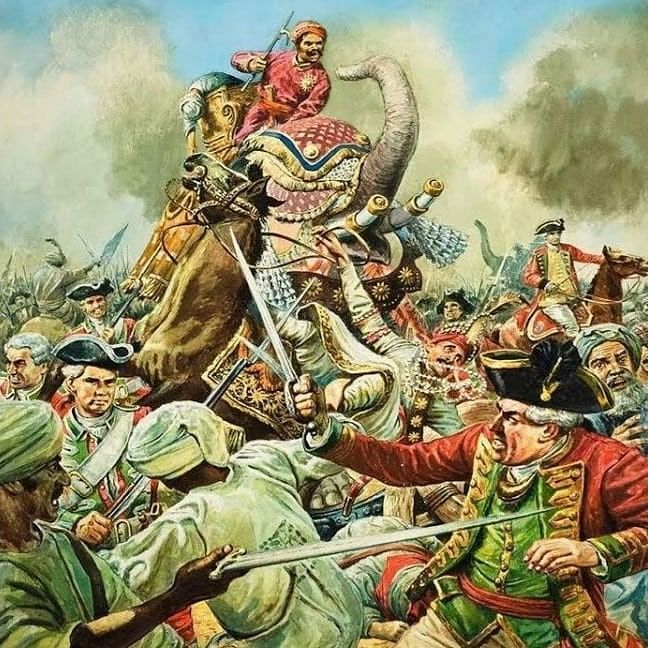 Battle of Buxar
Battle of Buxar
BACKGROUND OF THE BATTLE OF BUXAR
Before the battle of Buxar, one more battle was fought. It was the Battle of Plassey, that gave the British a firm foothold over the region of Bengal. As a result of the Battle of Plassey, Siraj-Ud-Daulah was dethroned as the Nawab of Bengal and was replaced by Mir Jafar (Commander of Siraj’s Army.) After Mir Jafar became the new Bengal nawab, the British made him their puppet but Mir Jafar got involved with Dutch East India Company. Mir Qasim (son-in-law of Mir Jafar) was supported by the British to become the new Nawab and under the pressure of the Company, Mir Jafar decided to resign in favour of Mir Kasim. A pension of Rs 1,500 per annum was fixed for Mir Jafar.
A few reasons which were the key to the Battle of Buxar are given below:
- Mir Qasim wanted to be independent and shifted his capital to Munger Fort from Calcutta.
- He also hired foreign experts to train his army, some of whom were in direct conflict with the British.
- He treated Indian merchants and English as same, without granting any special privileges for the latter.
- These factors fuelled the English to overthrow him and war broke out between Mir Kasim and the Company in 1763.
COMBATANTS OF THE BATTLE OF BUXAR
The table below will inform the participants of the battle of Buxar and their significance on the battle: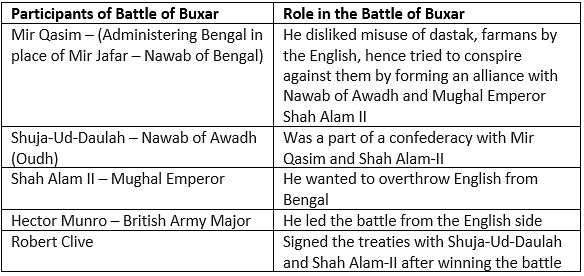
COURSE OF BATTLE OF BUXAR
When the battle broke out in 1763, English gained successive victories at Katwah, Murshidabad, Giria, Sooty and Munger. Mir Kasim fled to Awadh (or Oudh) and formed a confederacy with the Shuja-Ud-Daulah (Nawab of Awadh) and Shah Alam II (Mughal Emperor). Mir Qasim wanted to recover Bengal from the English. Read the course of battle in the points below:
- Mir Qasim fled to Oudh.
- He planned a confederacy with Shuja-Ud-Daula and Shah Alam II in a final bid to overthrow the English from Bengal Mir Qasim’s soldiers met the English army troops directed by Major Munro in 1764.
- The joint armies of Mir Qasim were defeated by the British. Mir Qasim absconded from the battle and the other two surrendered to the English army.
- The battle of Buxar ended with the Treaty of Allahabad in 1765.
RESULT OF BATTLE OF BUXAR
- Mir Qasim, Shuja-Ud-Daula and Shah Alam-II lost the battle on October 22, 1764.
- Major Hector Munro won a decisive battle and Robert Clive had a major role in that.
- English became a great power in northern India.
- Mir Jafar (Nawab of Bengal) handed over districts of Midnapore, Burdwan and Chittagong to the English for the maintenance of their army.
- The English were also permitted duty-free trade in Bengal, except for a duty of two per cent on salt.
- After the death of Mir Jafar, his minor son, Najimud-Daula, was appointed nawab, but the real power of administration lay in the hands of the naib-subahdar, who could be appointed or dismissed by the English.
- Clive made political settlements with Emperor Shah Alam II and Shuja-Ud-Daula of Awadh in the Treaty of Allahabad.
TREATY OF ALLAHABAD (1765)
Two important treaties were concluded in Allahabad between Robert Clive, Shuja-Ud-Daulah & Shah Aam-II. The key-points of the treaty of Allahabad are given below:
Treaty of Allahabad between Robert Clive & Shuja-Ud-Daulah:
- Shuja had to surrender Allahabad and Kara to Shah Alam II
- He was made to pay Rs 50 lakh to the Company as war indemnity; and
- He was made to give Balwant Singh (Zamindar of Banaras) full possession of his estate.
Treaty of Allahabad between Robert Clive & Shah Alam-II:
- Shah Alam was commanded to reside at Allahabad which was ceded to him by Shuja-Ud-Daulah under the Company’s protection
- The emperor had to issue a Farman granting the Diwani of Bengal, Bihar and Orissa to the East India Company in lieu of an annual payment of Rs 26 lakh;
- Shah Alam had to abide by a provision of Rs 53 lakh to the Company in return for the Nizamat functions (military defence, police, and administration of justice) of the said provinces.
KEY - FACTS ABOUT BATTLE OF BUXAR
- After the Battle of Buxar, English did not annex Awadh even after Shuja-Ud-Daulah was defeated because it would have placed the Company under an obligation to protect an extensive land frontier from the Afghan and the Maratha invasions.
- Shuja-Ud-Daulah became a firm friend of British and made Awadh a buffer state between English and foreign invasions.
- The treaty of Allahabad with Mughal Emperor Shah Alam-II made emperor a useful ‘rubber stamp’ of the Company. Besides, the emperor’s Farman legalised the political gains of the Company in Bengal.
INTRODUCTION
- Warren Hastings (1732 – 1818) became the first Governor of the Presidency of Fort William (Bengal) in 1772 and the first Governor-General of Bengal in 1774 till he resigned in 1785.
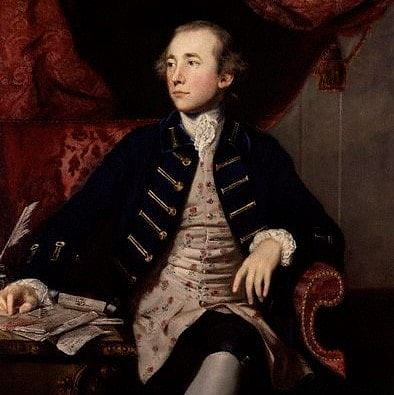 Warren Hasting (1732 - 1818)
Warren Hasting (1732 - 1818) - He started his career as a writer (clerk) in the East India Company at Calcutta in 1750.
- In 1758, he became the British resident at Murshidabad, the capital of Bengal, after Mir Jafar was installed as the Nawab after the Battle of Plassey.
- During his term, the First Anglo-Maratha war and the second Anglo-Mysore war were fought.
- The Regulating Act of 1773 was passed during his term.
- He supported Sir William Jones in the formation of the Asiatic Society of Bengal in 1785.
ABOLITION OF THE DUAL SYSTEM
- Hastings abolished the Dual System that had been established by Robert Clive. In the Dual System, the company had Diwani rights (rights to collect revenue) and the Nizam or Indian chiefs had the administrative authority.
- The Nawab’s annual allowance of Rs.32 lakh was reduced to Rs.16 lakh.
- The annual tribute paid to the Mughal Emperor was also stopped.
REVENUE REFORMS
- For revenue collection, a Board of Revenue was set up at Calcutta.
- Treasury was moved from Murshidabad to Calcutta. Calcutta became Bengal’s capital in 1772.
- British collectors were appointed for each district and an Accountant General was also appointed.
- Unreasonable fines were done away with and restrictions were placed on the raising of rent.
JUDICIAL REFORMS
- The judicial powers of the Zamindars were abolished.
- Civil and criminal courts were established. Two appellate courts were established at Calcutta, one for civil (Sadar Diwani Adalat) and one for criminal (Sadar Nizamat Adalat) cases.
- The criminal court was to have an Indian judge.
- Muslims were to be tried according to their law in the Koran and Hindus, according to Hindu laws. A code of Hindu Law, prepared by Hindu Pandits was translated into English.
- He also came down heavily on the dacoits in Bengal.
TRADE REGULATIONS
- Hastings abolished the system of dastaks which were misused by company officials and traders earlier.
- He enforced a uniform tariff of 2.5% for Indian and foreign goods.
- Private trade by company officials was restricted.
INTRODUCTION
Robert Clive was largely responsible for the East India Company getting control of Bengal thus leading to the conquest of the entirety of the Indian Subcontinent later on. So, it can be said that Clive laid the foundations of the British Raj in India.
Who was Robert Clive?
Major-General Robert Clive (29 September 1725 – 22 November 1774), was the first British Governor of the Bengal Presidency.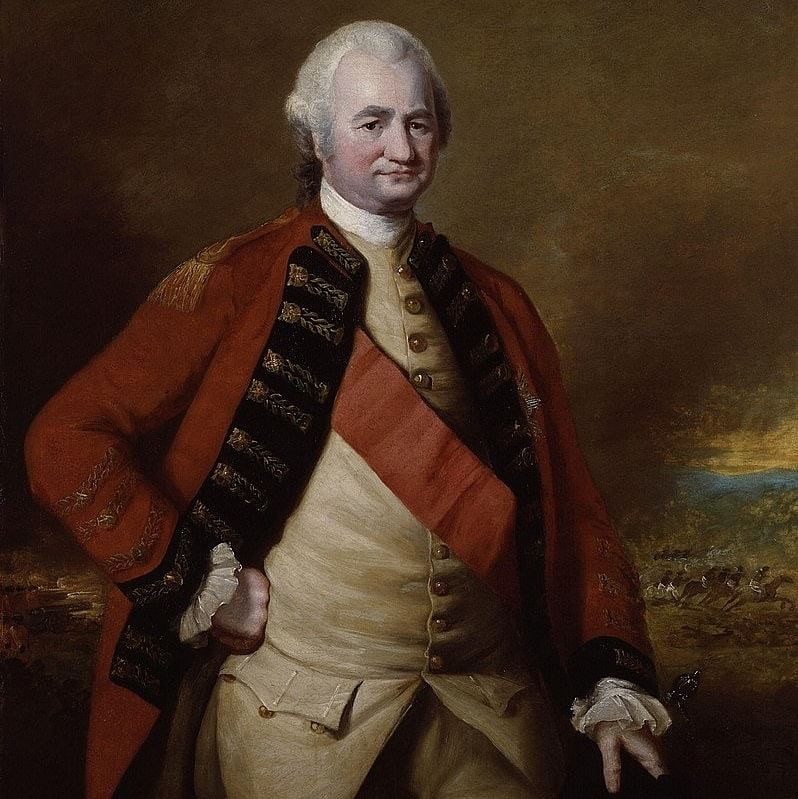 Robert Clive (1725 - 1774)He began as a writer for the East India Company (EIC) who established the military and political supremacy of the EIC by securing a decisive victory at the Battle of Plassey in Bengal.
Robert Clive (1725 - 1774)He began as a writer for the East India Company (EIC) who established the military and political supremacy of the EIC by securing a decisive victory at the Battle of Plassey in Bengal.
- He was born in 1725 in England.
- He Arrived in Fort St. George (Madras) in 1744 to work for the East India Company as a ‘factor’ or company agent.
- He enlisted in the company army where he was able to prove his ability.
- He earned great fame and praise for his role in the Siege of Arcot which saw a British victory against the larger forces of Chanda Sahib, the Nawab of the Carnatic and French East India Company’s forces.
- He is also known as “Clive of India”.
ROBERT CLIVE'S ACTIVITIES IN INDIA
- Clive’s initial stay in India lasted from 1744 to 1753.
- He was called back to India in 1755 to ensure British supremacy in the subcontinent against the French.
- He became the deputy governor of Fort St. David at Cuddalore.
- In 1757, Clive along with Admiral Watson was able to recapture Calcutta from the Nawab of Bengal Siraj Ud Daulah.
- In the Battle of Plassey, the Nawab was defeated by the British despite having a larger force.
- Clive delivered a decisive English victory by inducing the Nawab’s army Commander Mir Jaffar, who was installed as Bengal’s Nawab after the battle.
- Clive was also able to capture some French forts in Bengal.
- For these exploits, Robert Clive was made Lord Clive, Baron of Plassey.
- As a result of this battle, the British became the paramount power in the Indian subcontinent.
- Bengal became theirs and this greatly increased the company’s fortunes. (Bengal was richer than Britain at that time).
- This also opened up other parts of India to the British and finally led to the rise of the British Raj in India. For this reason, Robert Clive is also known as “Conqueror of India”.
ROBERT CLIVE'S RULE OF BENGAL
- Robert Clive was the Governor of Bengal from 1757-60 and from 1765-67.
- During his first tenure as Bengal’s governor, under the Nawab Mir Jaffar, corruption was rampant.
- The company’s sole aim was maximising revenue at the expense of the peasants.
- He amassed a great personal fortune in India and returned to Britain in 1760.
- He returned to India in 1765 as Governor and Commander-in-Chief of Bengal.
- At this time, there was widespread corruption in the company.
- So Clive forbade the company’s employees from engaging in private trade. He also barred them from accepting gifts.
- He started a ‘Society of Trade’ in 1765 but it was later abolished.
- Mir Jaffar’s son-in-law Mir Qasim had ascended the throne of Bengal.
- He wanted to wrest himself from English influence.
- The Battle of Buxar was fought between the British and the combined forces of Mir Qasim, Shuja Ud Daulah (the Nawab of Awadh) and the Mughal Emperor Shah Alam II. The British won this battle.
- As a result of this battle, the Diwani (right to collect revenue) of Bengal, Bihar and Odisha was granted to the British by the Mughal Emperor in return for an annual sum of money and Allahabad and Kora districts.
- Robert Clive, who could have had Awadh as well, refrained from annexing it. He intended to use it as a ‘buffer’ state between the British and the Marathas.
- The Nizamat (territorial jurisdiction) of Bengal remained with the Nawab. In reality, the English held this power.
- This was Clive’s Dual System where the company was the Diwan and the Nawab held the Nizamat.
LEGACY OF ROBER CLIVE
- He has been denounced by many in India for the atrocities he heaped upon its peasantry by imposing high taxes and forcing them to cultivate only cash-crops, leading to famines.
- Robert Clive faced censure in England upon his return due to the mass amount of personal fortune he accumulated during his stay in India.
- Aurangzeb left three sons— Muazzam, Azam, and Kam Baksh. Aurangzeb did not nominate any successor but partitioned the empire among his three sons.
- None of them was satisfied with anything less than the whole and so the struggle for the throne ensued.
- The eldest, Muazzam defeated and killed the remaining two and himself ascended the throne under the title of Bahadur Shah.
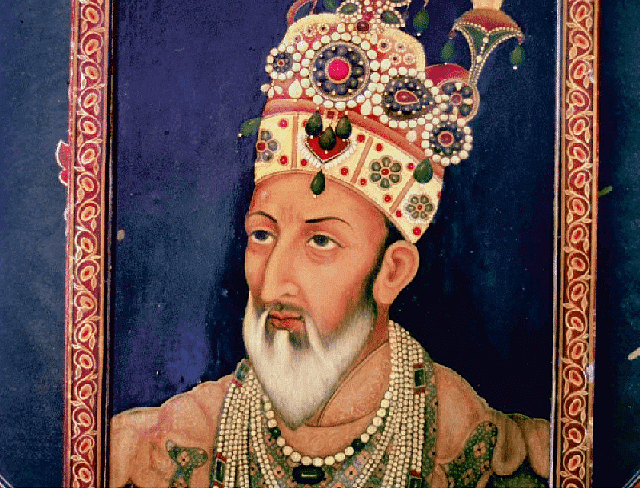 Bahadur Shah
Bahadur Shah
- He adopted a conciliatory and tolerant policy towards the Marathas and the Rajputs. In course of time the Marathas became powerful and the Rajputs independent.
- On account of the persecution of Aurangzeb, the Sikhs had grown into an aggressive militant sect under their leader Banda. The Sikhs attacked the town of Sirhind. They fought with the spirit of crusaders and Banda himself
fought at the forefront of his army.
− The situation became serious and Bahadur Shah marched personally against them.
− The Sikhs were defeated and driven into the hills though Banda escaped. - Bahadur Shah died in February 1712 A.D.
- After the death of Bahadur Shah there was a struggle for succession among his four sons. The eldest and the worst son, Uniz-ud-din, with the help of Zulfikar Khan defeated and killed his brothers and ascended the throne with the title of Jahandar Shah.
- He was a worthless debauchee and was not liked by the people.
Facts To Be Remembered:
- The founder of Rohil-Khand was Ali Muhammad Khan.
- Muhammad Khan Bangash founded the independent Kingdom of Bangash Pathans around Farrukhabad (1714).
- Sawai Jai Singh of Amber of the eighteenth century performed two as ramedha sacrifices.
- The Sarkar of Guntur was the bone of contention between Nizam Ali, the ruler of Hyderabad and the English.
- Safdarjang and Shuja-ud-daula, the Nawabs of Awadh, were appointed Wazirs of the Mughal empire.
- Ahmad Shah Abdali invaded India eight times.
- Travancore rose into prominence under King Martanda Verma.
- Fauz-i-Khas of Ranjit Singh constituted the ‘model brigade’ of the Sikh army. It was trained by French officers and was also known as the French Brigade or the French legion.
- The central organisation of the misl was the gurmatta i.e., advice of the spiritual Guru.
- After the third Battle of Panipat Ahmad Shah Abdali invaded India three more times to punish the Sikhs.
The two Sayyid brothers, Sayyid Abdulla, Governor of Allahabad, and Sayyid Hussain Ali Governor of Bihar, better known as Sayyid brothers, defeated and put Jahandar Shah to death and placed on the throne Farrukh Siyar, a nephew of Jahandar Shah.
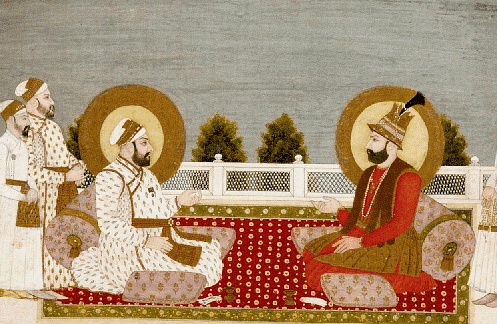 Sayyid Brothers
Sayyid Brothers
- Jahandar Shah, after a disgraceful reign of eleven months, defeated and killed by his nephew Farrukh Siyar, who was helped by the two Sayyid brothers.
- The Sayyid brothers exercised a mighty influence over the emperor and possessed all real power.
- The Sikhs took advantage of the political situation renewed their ravages under the intrepid Banda. A strong governor in the person of Abdul Samad was sent to Lahore and the suppression of the Sikhs was taken in hand.
- After a severe fighting Banda and about a thousand of his followers were taken prisoners and put to death with savage tortures (1716). The Sikhs were crushed for a time.
- The Marathas became very powerful in the Deccan and compelled Hussain Ali to conclude a humiliating treaty.
- Sahu, the grandson of Shivaji, was allowed to levy Chauth and Sardeshmukhi over the whole of the Deccan.
- The emperor got tired of the authority of the Sayyid brothers and began to intrigue against them. As soon as the Emperor showed signs of resisting the authority, the Sayyid brothers procured his murder in 1719.

- After the death of Farrukh Siyar, the Sayyid Brothers raised Rafi-ud-Darjat and Rafi-ud-Daula, two youths of the royal family, to the throne but they died within a year.
- Then the two brothers to whom historians give the title of “Kingmakers” placed Roshan on the throne under the name of Muhammad Shah in November 1719 A.D.
- Muhammad Shah was anxious to get rid of the Sayyid brothers, for by that time they had become extremely unpopular on account of their haughty and overbearing behavior.
Facts To Be Remembered:
- The Nawab of Awadh who committed suicide to save himself from disgrace at the hands of Nadir Shah was saadat Khan.
- The early capital of the nawabs of Awadh was Fyzabad.
- After nearly twelve years of exile, Shah Alam II was escorted back to the throne of Delhi by Mahasi Sindhia.
- From 1761 to 1770, the Supreme dictator of Delhi was Najib Khan.
- Sadashiv Rao Bhau stripped off the silver ceiling of the Diwan-i-Khas at Red Fort in Delhi and minted Rs. 9 Lakhs out of it.
- Ahmad Shah Abdali deposed Shah Alam II and proclaimed Ali Gauhar as emperor with the title of Shah Alam II.
- Alivardi Khan concluded a treaty with the Marathas and agreed to pay them an annual tribute as Chauth and ceded to them the revenues of part of Orissa.
- The governorship of Bengal became hereditary with Shujauddin Khan.
- Murshid Quli Khan was originally a South Indian Brahmin.
- Irani nobles were mostly Shias and Turani nobles were Sunnis.
- In 1788 the later Mughal emperor Shah Alam II was blinded by an Afghan Chief called Ghulam Kadir.
To undo their growing power and influence, a party was formed headed by Chin Kilich Khan, formerly the Governor of Deccan, and Saadat Khan, the Governor of Oudh.
- This party was secretly supported by emperor Muhammad Shah who was anxiously waiting for an opportunity for deliverance from the domination of the Sayyid brothers.
- Chin Qilich Khan revolted and twice defeated the army of the Sayyids. Hussain Ali was assassinated at the instigation of Muhammad Shah while he was on his way to subdue Qilich, also called Nizam-ul-Mulk.
- The other brothers, Sayyid Abdulla, was also defeated, taken prisoner and killed. The Sayyid brothers thus disappeared from the stage and their power came to an end. Nadir Shah’s Invasion
- Born in humble parents, Nadir Shah who had started life as a free booter, rose to a high position in Persia on account of his military genius and became king of Persia. After establishing himself on his throne he captured Ghazni and Kabul.
- The weakness of the Government and the disturbed state of affairs at Delhi. The wealth of India offered him a tempting field for immense spoil.
- His main grievance, rather a pretext for the invasion that Muhammad Shah had stopped sending embassies to the court of Persia.
- Nadir Shah sent an ambassador to Muhammad. Shah praying that the Afghans who were expelled from Persia should be given no quarter i.e. he wanted that the king of Delhi should close the Indian frontier against the Afghan refugees. The replies given by Muhammad Shah were evasive and Nadir Shah’s ambassador had to go dissatisfied. Nadir Shah decided to invade India.
- Nadir plundered the treasury, seized the crown jewels, the Peacock Throne, and Koh-i-Noor, and took away a large booty.
- Nadir Shah and his soldiers stayed in Delhi for about two months and got about seventy crores of rupees from Muhammad Shah, the nobles and the general public.
- This amount was so huge for Nadar Shah’s purposes that to please his own people he remitted the entire revenue of Persia for three years and lavishly gave prizes to his troops.
- Before his departure, Nadir Shah made a treaty with Muhammad Shah by which the latter was left emperor of India, but he had to cede to the Persians the country west of the Indus “from Kashmir to Sindh.“
- Muhammad Shah was succeeded by his son in 1748. He reigned only in name and his short reign was a time of great disturbance.
- The Rohillas rebelled openly and the government sought the help of the Marathas to put them down.
- Ahmad Shah Abdali invaded Punjab for the second time and obtained from the emperor the formal cessation of the whole province.
- A civil war broke out between the Nawab- Wazir and Ghazi-ud-din, grandson of Asaf Jah. Ghazi-ud-din assumed the office of the Wazir.
- The emperor being soon weary of him sought his blood. Ghazi-ud-din, therefore, blinded and disposed Ahmad Shah in 1754.
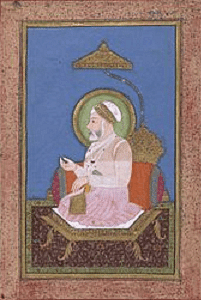
- After Ahmad Shah had been blinded and disposed of, Ghazi-ud-din raised to the throne a son of Jahandar Shah with the title of Alamgir II. Ghazi-uddin was now the all-powerful man in the State.
- Ahmad Shah Abdali made his third invasion during his reign. Ahmad Shah captured Delhi and horribly sacked it. Mathura also was given up to plunder and carnage (1758). Alamgir II was murdered in 1759 and was succeeded by his son, Shah Alam.
- Ali Gauhar, Alamgir’s son, assumed the title of Shah Alam II.
- Ghazi-ud-din created for him a host of enemies and so he called the Marathas to his aid against his rivals. The Marathas entered Delhi and then conquered the whole of Punjab.
- Two rival forces met at Punjab in 1761, known as the Third Battle of Panipat or the Fifth Invasion of Ahmad Shah Abdali, where Marathas suffered a crushing defeat and had their imperialistic dream shattered.
- In 1765 Shah Alam granted the Dewani of Bengal and Bihar to the English in return for a pension of 26 lacs a year. He, however, lost his pension when he left British protection and joined the Marathas.
- Shah Alam died in 1806 and was succeeded by his son Akbar II (1806-1837). He was the nominal king of Delhi, his authority being confined to the fort only.
- His son, Bahadur Shah (1837-1851), was also a titular king. He took part in the Mutiny of 1857 and was deported to Rangoon where he died in 1862. Thus ended the line of Babar.
Facts To be Remembered
- The later Mughal emperor Shah Alam II was actually known as Ali Gauhar.
- Ahmad Shah Abdali proclaimed Shah Alam II emperor of India after the third battle of Panipat.
- A courtesan called Lal Kunwar dominated the affairs of the Mughal empire during the reign of Jahandar Shah.
- The most powerful noble during the reign of Bahadur Shah and Jahandar was Zulfiqar Khan.
- Usmal Ali Khan was the last Nizam of Hyderabad.
- Nizam Ali signed the subisdiary Treaty with Lord Wellesley.
- Nizam-ul-Mulk got the confirmation of his viceroalty of the Deccan and the title of “Asaf Jah” from Emperor Mughammad Shah in 1725.
- Shuja-ud-daula purchased Kara and Allahabad from the British in 1773.
- Ahmad Shah Abdali was the treasurer of Nadir Shah.
- On the death of Nadir Shah, his kingdom has been divided. Ahmad Shah Abdali or Durrani, an Afghan of Herat, had secured the Afghan portion and set up himself as an independent king.
- He invaded Punjab for the second time in 1749 but retired on receiving a large amount of money from the Governor of Punjab.
- His last and most important invasion was that of the year 1760-61 when he defeated the Marathas on the plains of Panipat.
- After this great victory, the empire of Hindustan was within his grasp but the Afghan king was unable to profit from it. His army mutinied and demanded a return to Afghanistan.
- The Shah was forced to yield. Although he returned to punish the Sikhs, his health was failing and he died in 1764 leaving the Sikhs to capture Lahore and the major portion of Punjab.
- Aurangzeb’s religious persecution of the Hindus in the shape of demolishing their temples, imposing Jaziya and custom duties, dismissing Hindus from posts, forbidding the early celebration of their fair and festivals, subjecting them to a number of social and political disabilities, persecuting them in so many harsh and cruel ways coupled with his ill-treatment of the Rajputs and the Marathas were the most potent causes of the downfall of the Mughal Empire.

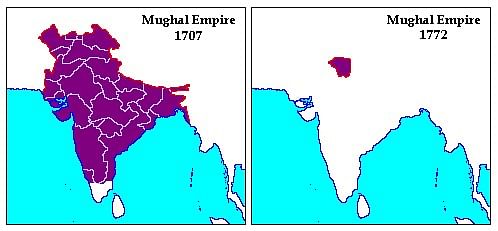 Decline of Mughal Empire
Decline of Mughal Empire
- The rising of the Jats under Gokla, which was the direct result of the destruction of the temple of Mathura was only temporarily suppressed.
- The trouble began in 1686 and lasted throughout the reign of Aurangzeb seriously impairing the prestige of the empire besides causing it a great loss in men and money.
- The haughty attitude of Aurangzeb towards Shivaji when he paid a visit to Agra after the treaty of Purandhar turned Shivaji all the more against him.
- His undignified treatment of the Marathas turned them into strong enemies of the Mughal empire; his excecution of Teg Bahadur, the ninth Guru of the Sikhs, led to the rise of the Sikh power which offered a strong opposition to the Mughal empire and became the deadly enemy of Islam.
- Aurangzeb’s long wars with the Marathas and the conquest of Bijapur and Golconda, two Shia kingdoms, proved very expensive and harmful.
- These wars ruined the emperor’s health, the morale of the army and the finances of the State.
- Aurangzeb was suspicious by nature and rarely trusted anybody. He tried to do everything himself. But it was humanly impossible for one single man, however great a genius he might be, to supervise the affairs of an empire as extensive as that of Aurangzeb.
Points To Be Remembered
- Puran Chand was the dewan of Nizam-ul- Mulk.
- Ramjivan was the favourite of Murshid Quli Khan.
- The highest post in Safdar Jang’s Government was held by a Hindu, Nawab Rai.
- Ajlaf Muslims were the lower class Muslims.
- In Kerala, the family was matrilineal.
- Ahilya Bai administered Indore successfully from 1766 to 1796.
- Najib Khan, the Rohilla chief was the confident of Ahmad Shah Abdali.
- Prasuram Bhau was a Maratha General of the 18th century.
- Music made great progress during the reign of Muhammad Shah, the Mughal emperor.
- Mirza Ghalib belonged to the 19th century.
- Mir Sauda and Nazir were famous Urdu poets of the 18th century.
- There was a revival of Malayalam literature under Martanda Varma and Rama Varma.
- The Padmanabhan palace with its remarkable architecture and moral paintings was also constructed in the 18th century.
- Wealth, luxury and the influence of climate brought general degradation of the Mughal nobility and the laxity of discipline and disorganisation weakened the Mughal army.
- The mansabdari system proved disruptive in its effects. The luxury, corruption and oppression by the officers of the State seemed to have been a permanent defect in the administration.
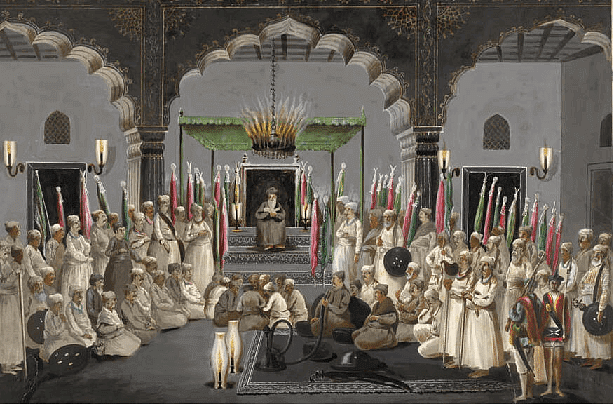 Mansabdari System
Mansabdari System - In the time of the later Mughal emperors the great nobles or officers of the empire turned the lands or jagirs with which they maintained troops into their hereditary property. Thus the empire had no strong body of personal troops with which to assert its authority.
- The vast extent of the Mughal empire rendered it almost ungovernable under medieval conditions without satisfactory means of communication.
- The prolonged anarchy involved in the repeated wars of succession was a potent influence in bringing about the ruin of the imperial fabric.
- The successors of Aurangzeb were weak and incompetent rulers and were mere puppets in the hands of their selfish and unscrupulous ministers. They had little personal ability and no strength of character.
- Nadir Shah’s invasion in 1739 weakened the tottering Mughal empire and he carried away money in crores besides a vast quantity of precious stones, the famous Koh-i-Noor and Peacock Throne.
- Ahmad Shah Abdali’s repeated invasions of India completed the devastation of remnants of the Mughal empire which was begun by Nadir Shah.
Facts To Be Remembered
- Tayaumanavar (1706-44) was one of the best exponents of sitar poetry, in Tamil.
- Heer Ranjha was composed by Warris Shah.
- Shah Abdul Latif composed Risalo, a collection of poems.
- Raja Sawai Singh was a distinguished statesman, lawmaker, a social reformer and a great astronomer. He founded the city of Jaipur.
- Saadatullah Khan, the nawab of Carnatic, freed himself of the control of the viceroy of the Deccan and make his office hereditary by making his nephew Dost Ali his successor without the approval of the Nizam.
- The Sarkar of Guntur was the bone of contention between Nizam Ali, the ruler of the Hyderabad, and the English. For the Nizam it was the only outlet to the sea; for the English its possession was necessary to connect their possessions in the north with those in the south.
- Chin Qulich Khan better known as Nizamul- Mulk founded the state of Hyderabad.
- Ranjit Singh acquired the world famous diamond the Koh-i-nur from Shah Shuja when the former gave him shelter when he was driven from Afghanistan (1813-14 A.D.).
- Nadir Shah carried with him the peacock throne and the Koh-i-Nur. Ahmad Shah Abdali was one of the Nadir Shah’s ablest generals.
INTRODUCTION
- The Marathas had important positions in the administrative and military systems of Ahmednagar and Bijapur.
- Marathas did not have any large, well-established states; however, a number of influential Maratha families, namely, the Mores, the Ghatages, the Nimbalkars, etc., exercised local authority in some areas.
- The Maratha ruler Shahji Bhonsle and his son, Shivaji, consolidated the Maratha kingdom. Shahji acted as the kingmaker in Ahmednagar, and defied the Mughals.
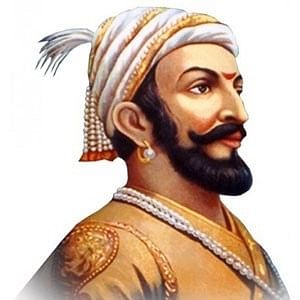 Chhatrapati Shahji Bhonsle
Chhatrapati Shahji Bhonsle - Taking advantage of the unsettled conditions, Shahji tried to set up a semi-independent principality at Bangalore, as Mir Jumla, the leading noble of Golconda, tried to carve out such a principality on the Coromandal coast. Further, Shivaji’s attempted to carve out a large principality around Poona.
EARLY CAREER OF SHIVAJI
- Shahji had left the Poona jagir to his neglected senior wife, Jija Bai and his minor son, Shivaji.
- Shivaji was brave and intellect since his childhood. When he was merely 18 years old, he overran a number of hill forts near Poona—Rajgarh, Kondana, and Torna in the years 1645-47.
- In 1647, after the death of his guardian, Dadaji Kondadeo, Shivaji became his own master and the full control of his father’s jagir came under his control.
- In 1656, Shivaji conquered Javli from the Maratha chief, Chandra Rao More and started his reigning career.
- The conquest of Javli made Shivaji the undisputed master of the Mavala region or the highlands and freed his path to the Satara region and to the coastal strip, the Konkan.
- Mavali foot-soldiers became a strong part of Shivaji’s army. With their support, Shivaji conquered a series of hill forts near Poona.
SHIVAJI AND THE MUGHALS
- In 1657, the Mughal invasion of Bijapur saved Shivaji from Bijapur reprisal. Shivaji first entered into negotiations with Aurangzeb and asked him for the grant of all the Bijapuri territories he held and other areas including the port of Dabhol in the Konkan. Later Shivaji betrayed and changed his side.
- Shivaji resumed-his career of conquest at the expense of Bijapur. He burst into the Konkan, the coastal strip between the Western Ghats and the sea, and seized the northern part of it.
- The ruler of Bijapur sent Afzal Khan (one of the premier nobles) along with 10,000 troops. Afzal Khan had been given instructions to capture Shivaji by any possible means.
- In 1659, Afzal Khan sent an invitation to Shivaji for a personal interview, promising to get him pardoned from the Bijapuri court. Convinced that this was a trap, Shivaji went with full preparation, and murdered Afzal Khan. Shivaji captured all Afzal Khan’s property, including equipment and artillery.
- Shivaji soon became a legendary figure. His name passed from house to house and he was credited with magical powers. People flocked to him from the Maratha areas to join his army, and even Afghan mercenaries who had been previously in the service of Bijapur, joined his army.
- Aurangzeb was anxious because of the rising of the Maratha power near to the Mughal frontiers. Poona and adjacent areas, which had been parts of the Ahmednagar kingdom had been transferred to Bijapur by the treaty of 1636. However, these areas were now again claimed by the Mughals.
- Aurangzeb instructed Shaista Khan, the new Mughal governor of the Deccan (he was also related to Aurangzeb by marriage), to invade Shivaji’s dominions and Adil Shah, the ruler of Bijapur, was asked to cooperate.
- Adil Shah sent Sidi Jauhar, the Abyssinian chief, who, invested Shivaji in Panhala. Getting trapped, Shivaji escaped and Panhala came under the control of the Bijapuri forces.
- Adil Shah took no further interest in the war against Shivaji, and soon came to a secret understanding with him. This agreement freed Shivaji to deal with the Mughals.
- In 1660, Shaista Khan occupied Poona and made it his headquarters. He then sent detachments to seize control of the Konkan from Shivaji.
- Despite harassing attacks from Shivaji, and the bravery of Maratha defenders, the Mughals secured their control on north Konkan.
- In 1663, on one night, Shivaji infiltrated into the camp and attacked on Shaista Khan, when he was in his harem (in Poona). He killed his son and one of his captains and wounded Khan. This daring attack of Shivaji put Khan into disgrace. In anger, Aurangzeb transferred Shaista Khan to Bengal, even refused to give him an interview at the time of transfer as was the custom.
- In 1664, Shivaji attacked Surat, which was the premier Mughal port, and looted it to his heart’s content.
TREATY OF PURANDAR
- After the failure of Shaista Khan, Aurangzeb deputed Raja Jai Singh of Amber, who was one of the most trusted advisers of Aurangzeb, to deal with Shivaji.
- Unlike Shaista Khan, Jai Singh did not underestimate the Marathas rather he made careful diplomatic and military preparations.
- Jai Singh planned to strike at the heart of Shivaji’s territories i.e. fort Purandar where Shivaji had lodged his family and his treasure.
- In 1665, Jai Singh besieged Purandar (1665), beating off all Maratha attempts to relieve it. With the fall of the fort at sight, and no relief likely from any quarter, Shivaji opened negotiations with Jai Singh.
- After hard bargaining with Shivaji, the following terms we agreed upon −
(i) Out of 35 forts held by Shivaji, 23 forts were surrendered to the Mughals; (ii) Remaining 12 forts were left with Shivaji on condition of service and loyalty to the Mughal throne;
(iii) Territory worth four lakhs of huns a year in the Bijapuri Konkan, which Shivaji had already held, was granted to him.
(iv) The Bijapur territory worth of five lakhs of huns a year in the uplands (Balaghat), which Shivaji had conquered, was also granted to him. In return for these, Shivaji was to pay 40 lakhs huns in instalments to the Mughals.
(v) Shivaji asked them to be excused from personal service. Hence, a mansab of 5,000 was granted to his minor son, Sambhaji.
(vi) Shivaji promised, however, to join personally in any Mughal campaign in the Deccan. - Jai Singh, later, cleverly threw a bone of contention between Shivaji and the Bijapuri ruler. But the success of Jai Singh’s scheme depended on Mughal support to Shivaji in making up from Bijapur territory worth the amount he had yielded to the Mughals.
- Jai Singh had considered the alliance with Shivaji from the starting point of the conquest of Bijapur to the entire Deccan. However, the Mughal-Maratha expedition against Bijapur failed. Shivaji who had been deputed to capture fort Panhala was also unsuccessful.
- As the plan failed, Jai Singh persuaded Shivaji to meet with Aurangzeb at Agra. Jai Singh though that if Shivaji and Aurangzeb could be reconciled, then Aurangzeb might be persuaded to give greater resources for a renewed invasion on Bijapur. But Shivaji’s meeting with Aurangzeb also became futile.
- When Shivaji met Aurangzeb, he kept him in the category of 5,000 mansabdar (the rank, which had been granted to his minor son). Further, the emperor, whose birthday was being celebrated, did not find time to speak to Shivaji. Therefore, Shivaji walked off angrily and refused imperial service.
- Since Shivaji had come to Agra on Jai Singh’s assurances, Aurangzeb wrote to Jai Singh for advice. In return, Jai Singh strongly argued for a lenient treatment for Shivaji. However, in 1666, before any decision could be taken, Shivaji escaped from the detention.
Foundation of Autonomous States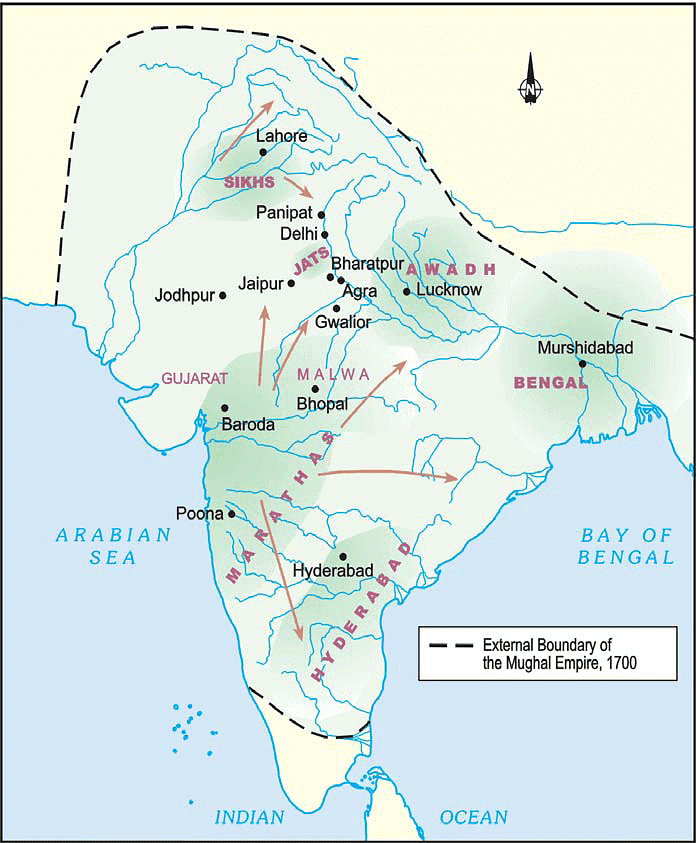
Hyderabad and the Carnatic
- The state of Hyderabad was founded by Nizam-ul-Mulk Asaf Jah (Chin Kilich Khan) in 1724.
- He was the Wazir of emperor Muhammad Shah. He was much disgusted by the indolence of the emperor. Finding no possibility of bringing the government into order he retired to Deccan where he became independent and founded the state of Hyderabad.
- The Carnatic was one of the Subahs of the Mughal Deccan and as such came under the Nizam of Hyderabad’s authority.
- But the Deputy Governor of Carnatic, known as the Nawab of Carnatic, had freed himself of the control of the Viceroy of Deccan and made his office hereditary. Thus Nawab Saadatullah Khan of Carnatic had made his nephew Dost Ali his successor without the approval of his superior, the Nizam.
Independence of Oudh
- Saadat Khan, who came of a Persian family from Khorasan, was the founder of the line of Nawab-Wazir.
Important Statements
|
- He had been originally appointed Faujdar of Biana but he happened to quarrel with some of the favourite nobles of Muhammad Shah’s court.
- He was sent away as Governor of Oudh in 1722 A.D. Before his death in 1739 A.D. he had become virtually independent and had made the province a hereditary possession.
- He was succeeded by his nephew Safdar Jang, who was simultaneously appointed the Wazir of the empire in 1748 A.D. and granted in addition the province of Allahabad.
- Safdar Jang gave a long period of peace to the people of Oudh and Allahabad before his death in 1754 A.D. Safdar Jang wrote: “The Avadh chiefs were capable of creating a disturbance in the twinkling of an eye and were more dangerous than the Marathas of the Deccan.”
Bengal
- After the death of Aurangzeb, Murshid Quli Khan and Alivardi Khan, made Bengal virtually independent.
- Even though Murshid Quli Khan was made Governor of Bengal as late as 1717 A.D., he had been its effective ruler since 1700 A.D., when he was appointed its Dewan.
- He established peace by freeing Bengal of internal and external danger. Bengal was now also relatively free of uprisings by zamindars.
Facts To Be Remembered
|
- The only three major uprisings during his period were; first by Sitaram Ray, Udai Narayan, and Ghulam Muhammad, and then by Shujat Khan and finally by Najat Khan.
- After defeating them, Murshid Quli Khan gave their zamindaris to his favourite, Ramjivan. Murshid Quli Khan died in 1727 A.D.
- Shuja-ud-din, son-in-law of Murshid Quli, usurped the throne in 1727 and ruled Bengal till 1739 A.D. With the incorporation of Bihar in Bengal Subah by the emperor Muhammad Shah in 1733 A.D., Shuja-ud-din became the Subahdar of an extensive administrative unit embracing the provinces of Bihar, Bengal and Orissa.
- After the death of Shuja-ud-din in 1739 A.D., his son Sarfaraz peacefully ascended the Masnad of Bengal. In that year, Alivardi Khan deposed and killed Shuja-ud-din’s son, Sarfaraz Khan and made himself the Nawab.
- From 1742 to 1751 A.D., the Marathas made repeated incursions and ravaged the territories of Alivardi Khan. Alivardi Khan agreed to pay to the Marathas an annual chauth of 12 lakhs of rupees, on condition that they would never cross the river Suvarnarekha.
- Alivardi Khan did not permit the English and the French to fortify their factories in Calcutta and Chandernagar.
- The Bengal Nawabs proved, however, to be short-sighted and negligent in one respect. They did not firmly put down the increasing tendency of the English East India company after 1707 A.D., to use military force, to threaten its use, to get its demands accepted.
- On the demise of Alivardi Khan in April 1756 his grandson Mirza Muhammad, better known by his title Siraj-ud-daula succeeded to the throne.
Mysore
- The kingdom of Mysore had preserved its precarious independence ever since the end of the Vijayanagar empire.
- Early in 18th century two ministers Nanjaraj and Devraj had seized power in Mysore.
- Haidar Ali started his career as a petty officer in the Mysore army. Cleverly using the opportunities that came his way, he gradually rose in the Mysore army. He soon recognised the advantages of western military training and applied it to the troops under his own command.
Facts To Be Remembered
|
- He established a modern arsenal in Dindigal in 1755. In 1761 he overthrew Nanjaraj and established his authority over the Mysore State.
- Almost from the beginning of the establishment of his power, he was engaged in wars with the Maratha Sardars, the Nizam, and the British.
- In 1769, he repeatedly defeated the British forces and captured the adjacent areas to Madras. He died in 1782 A.D. in course of second Anglo-Mysore War.
- He was succeeded by Tipu Sultan, who ruled Mysore till his death in 1799 A.D. He was an able administrator and a military genius.
- His infantry was armed with muskets and bayonets in the European fashion. He also made an effort to built a navy after 1796.
- For this purpose he established two dockyards, the models of the ships being supplied by the Sultan himself.
- His desire to change with the times was symbolised in the introduction of a new calendar, a new system of coinage, and new scales of weights and measures.
- He showed a keen interest in the French Revolution.
- He planted a Tree of Liberty at Sringapatnam and became a member of a Jacobian club.
- He tried to do away with the custom of giving Jagirs. He also made an attempt to reduce the hereditary possessions of the Poligars. His land revenue raised upto 1/3rd of the gross produce.
Punjab
- Sikhism had its birth at the same time when the Mughal rule was established in India. It was organised with a view to purging the society of its ills, promoting the Bhakti cult and securing unity between Hindu and Muslims.
- In its earlier phase, Sikhism remained a peaceful faith of devotion and service. It underwent transformation under the guidance of Guru Arjan Dev who gave his followers the idea of setting up self-government within the Mughal empire.
- The stream of persecutions that engulfed the Sikhs after the martyrdom of Guru Arjan Dev changed the entire out-look of the Sikhs.
- They continued to resist actively the tyranny of Mughal officials under the guidance of Guru
Facts To Be Remembered
|
Gobind Singh and Banda Bahadur.
- After Banda Bahadur they split themselves into several depradatory bands and took to guerilla warfare.
- They organised themselves in 65 roving bands in 1745. Later in 1748, at the instance of Nawab Kapur Singh, the bands were amalgamated into Dal Khalsa.
- The Dal Khalsa was placed under the command of Jassa Singh Ahluwalia. The Dal Khalsa was split up into 12 divisions, democratic in nature. After some time they came to be known as misls. ‘Misl’is an Arabic word. It means ‘equal’ or ‘alike’.
The twelve misls are as follows:
Name of the Mis Name of the Founder leader
- Singhpuria Misl: Nawab Kapur Singh
- Ahluwalia Misl: Jassa Singh Alhuwalia
- The Ramgarhia Jassa Singh
Misl: Ramgarhia - The Phulkian Phul Singh
Misl: - Kanhiya Misl: Jai Singh
- Bhagi Misl : Hari Singh
- Sukarchakya Misl: Charat Singh
- Nishanwalia Misl: Sardar Sangat Singh
- Karor Singhia Bhagel Singh
Misl: - Dallewalia Gulab Singh
Misl: - Nakai Misl : Hira Singh
- Shahidi Misl : Baba Dip Singh
- Every misl had its own chief who was quite independent in goveming his territory. When the misldars acted jointly, they divided the booty among themselves.
- The retainers had the perfect freedom in serving the chief of their misl or another chief whenever they so desired.
- The retainers did not receive any pay. They held land on the condition of rendering military service.
Panchayat System
- The village formed the administrative unit. It had its own panchayat which managed its affairs, decided disputes and arranged for defence in emergency.
- The village functionaries were the headman, accountant and watchman.
Revenue
The sources of income were:
- Land Revenue.
- Booty.
- Taxes on Trade.
- Heavy Fines.
Land Revenue
- For the puposes of land revenue, the villages were classified into two divisions viz.,
(i) Villages in the territory of the chief.
(ii) Villages under Rakhi system.
- Land revenue was collected at the rate of 1/5 of the produce of the artificially irrigated soil and 1/4 of the produce of rainy soil.
- It was collected in two six-monthly instalments in kind and cash.
- The villages under Rakhi system paid 1/5 to 1/2 of the rental or Government share. This cess was like Chauth of the Marathas.
Charity
- A cess called ‘Aya Gaya’ was levied to defray the expenses incurred in connection with the entertainment of guests and officials.
Justice
- There was no elaborate judicial system to dispense justice.
- Civil suits were decided by the local panchayats though they could be taken to the chief of the misl.
- Criminal cases were decided by the chief and his officials. Punishments were harsh and they varied with the nature of crime.
- Mutilation of limbs and capital punishments were awarded in rare cases ‘Shukrana’ and ‘Jurmana’ were also realised.
Land Tenure
- The following four system of land tenure were in vogue:
(i) Pattidari, (ii) Misldari, (iii) Tabedari, and (iv) Jagirdari.
Pattidari
- All constituents of a misl below the rank of a ‘Sardar’ held land as ‘Pattidar’. They were free in the management of their land.
Misldari
- Some petty chiefs who helped the misl got land under misldari system. If a misldar was not satisfied with the treatment meted out to him by the chief of the misl, he could shift to another chief’s territory with the same privileges.
Tabedari
- Under this system, retainers held the land which could be taken back if the chief was not satisfied with their work or conduct.
Jagirdari
- It gave hereditary possession to the jagirdars. Jagirdars were usually the near relatives and dependents of Sardars. They had to render military service to the chief.
RANJIT SINGH (1792-1839)
- Ranjit Singh was born on 13th November, 1780, at Gujranwala. His father Mohan Singh was a brave leader of the Sukerchakia Misl.
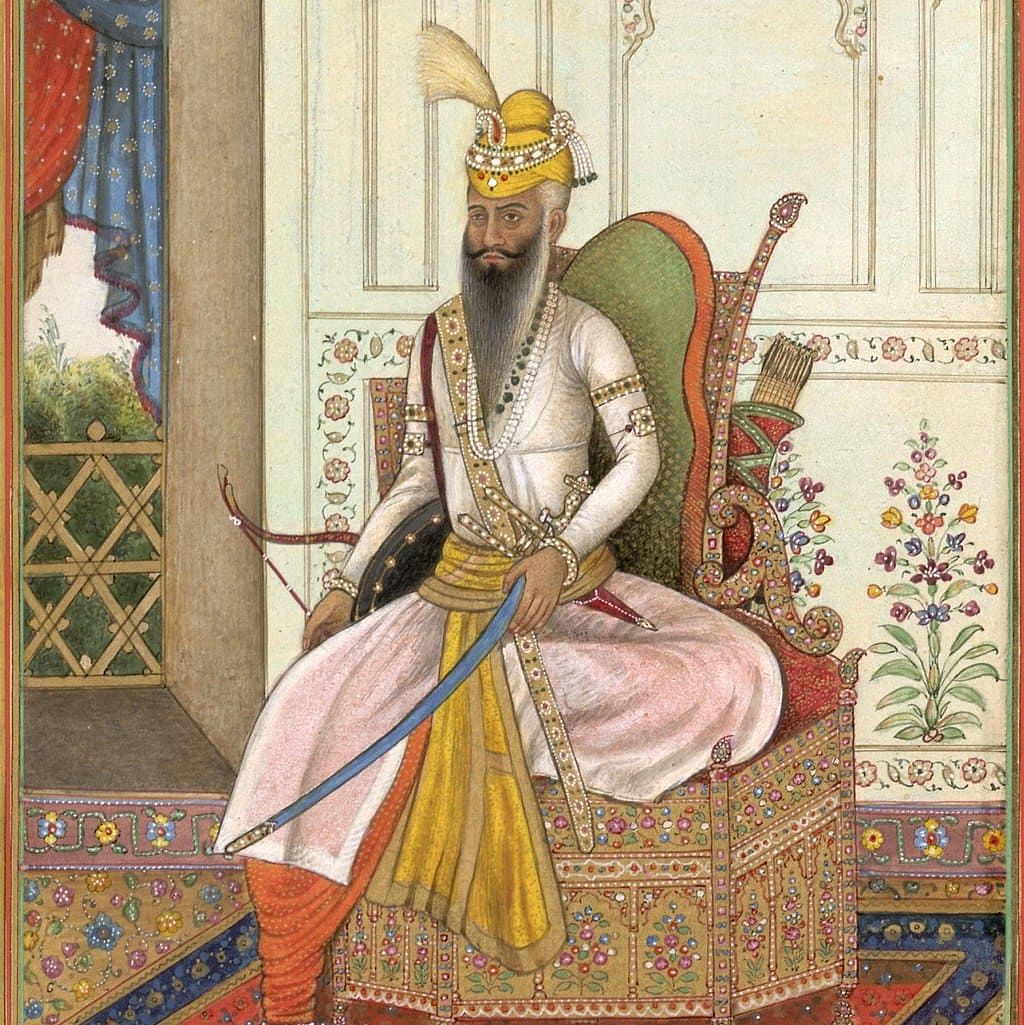 Ranjit Singh (1792 - 1839)
Ranjit Singh (1792 - 1839) - Mohan Singh’s father Charat Singh was a fearless fighter who had encountered Ahmed Shah Abdali several times successfully.
- Mohan Singh died in 1792. As a boy Ranjit Singh was brave and of strong determination. He took keen interest in practising arms, riding, hunting and manly sports He was short in size and a severe attack of small-pox deprived him of sight in the left eye.
- He remained illiterate though arrangements were made for his education. He was more interested in military exercises and field sports than in indoor study and literary pursuits.
- At the age of sixteen (in 1796) he was married to the daughter of the chief of the Kanchiya Misl of Batala.
- Ranjit Singh was very fortunate in having Rani Sada Kaur, a lady of great courage, intelligence and influence as his mother-in-law. She helped to enhance status and political strength of Ranjit Singh.
Conquest of Ranjit Singh
- Conquest of Lahore, 1799: People of Lahore were not satisfied with the rule of the Bhangi chiefs. They invited Ranjit Singh to rule over them. Saman Shah had already allowed Ranjit Singh to occupy Lahore. The joint armies of Ranjit Singh and Rani Sada Kaur attacked Lahore and it was conquered without much resistance. Ranjit Singh made Lahore his capital.
- Battle of Bhasin, 1800: Bhangi chiefs of Lahore, Nizam-ud-Din, Nawab of Kasur, Sahib Singh of Gujarat and the Ramgarhia sardars felt jealous of the growing power of Ranjit Singh and forrned a coalition against him. They met at Bhasin where they hatched a conspiracy to invite Ranjit Singh and murder him there. Coming to know of this Ranjit Singh reached Bhasin with his force. No regular battle was fought at Bhasin. In the irregular fighting Ranjit Singh defeated his enemies.
- Conquest of Gujarat, 1804: Sahib Singh of Gujarat was attacked and defeated for his joining the coalition that was formed against Ranjit Singh at Bhasin.
- Conquest of Amritsar, 1805: The Bhangi chief Gulab Singh refused to hand over the famous zamzama gun to Ranjit Singh. The fort and city were soon conquered by Ranjit Singh. He made Amritsar his religious capital.
- Cis-Sutlej Expeditions, 18061809: Ranjit Singh crossed the Sutlej in response to an invitation sent to him by the Sikh chiefs to settle their quarrel. He captured several places and compelled the chief of Patiala and other chiefs to recognise him as their overlord and pay him tributes. The Sikh rulers were alarmed at this and they applied to the British Government for protection. The Treaty of Amritsar was signed in 1806 by which Sutlej was made the boundary line of Ranjit Singh’s territory.
Battle of Rahon, 1807: When Tara Singh Gheba, the ruler of Dallewala Misl, died in 1807, Ranjit Singh attacked his estates. His widow resisted at Rahon but she was defeated.
Conquest of Kasur, 1807: Qutabud-Din refused to accept Ranjit Singh as his overlord. He was attacked and finally subdued. Kasur was annexed.
Conquest of Jhang, 1807: Ranjit Singh asked Ahmad Khan, the chief of Jhang and Chiniot, to recognise him as his overlord, but he refused. His territory was conquered and annexed.
Conquest of Kangra, 1809-11: Raja Sansar Chand of Kangra was attacked by the Gurkhas. He sought the help of Ranjit Singh. The Sikh forces drove away the Gurkhas and occupied the fort of Kangra.
Conquest of Attock and Battle of Hazro, 1813: Fateh Khan and Sikh forces made a joint invasion on Kashmir but the former proved false to Ranjit Singh by leaving the Sikh forces behind and conquering the valley of Kashmir single-handed. He gave no share to Ranjit Singh in the plunder and territory. Ranjit Singh resolved to make up this loss by occupying Attock. The Sikh army soon took the fort of Attock. Hearing of the fall of Attock, Fateh Khan sent his forces from Kashmir. A severe battle was fought at Hazro in which the Afghan army was defeated.
Conquest of Multan, 1818:During 1802-17 Ranjit Singh sent five expeditions against Multan and the Maharaja was contended with receiving tributes. Nawab Muzaffar Khan of Multan was irregular in the payment of tribute. At last Ranjit Singh decided to conquer Multan. Misl Diwan Chand was sent as the head of an army of 25,000 men and after a desperate fight the Nawab’s forces were defeated and Multan was annexed. The conquest added to the influence, territory and revenue of the Maharaja.
Conquest of Kashmir, Battle of Supin, 1819: In the first Sikh expedition (1810) Fateh Khan proved false to Ranjit Singh. In the second expedition (1814) Sikh forces were defeated by the Kashmir Governor, Azim Khan. The conquest of Multan (1818) had created fresh confidence and courage in the Sikh army. In 1819 Ranjit Singh resolved to conquer Kashmir. The invading army was sent in three parts.
Important Treaties
|
The Sikh army defeated the Afghans at the Battle of Supin (1819) and Kashmir became a part of the Maharaja’s territory.
Conquest of Hazara, 1819: Hazara formed part of Kashmir province but it refused to recognise the overlordship of Ranjit Singh. Hazara was occupied without much opposition.
Conquest of Derajat and Bannu, 1820-21: Dera Ghazi Khan which was a dependency of Kabul was conquered by the Sikh army in 1820 and given to nawab of Bahawalpur in return for a considerable yearly rent. Mankera was besieged in 1821. The nawab of Mankera was defeated and he had to surrender Mankera and also his estates of Dera Ismail Khan Bannu, Tonk, Bhakkar, etc.
Conquest of Peshawar, 1834: Conquest of Peshawar occupies a place of great prominence among the conquests and annexations of Maharaja Ranjit Singh.
First Expedition to Peshawar, 1818: Murder of Wazir Fateh Khan at Kabul created disturbances. Ranjit Singh took advantage of this chaos and sent his forces against Peshawar. Peshawar was conquered and Dost Muhammad was appointed its Governor.
Battle of Nowshera, 1823: Five years later Mohammad Azim, wazir of Kabul, regained Peshawar. The Sikh forces defeated Pathan Ghazis in the Battle of Nowshera of Tibba Tehri (1833). Peshawar was again in the possession of Ranjit Singh.
Battle of Saidu, 1827: Sayid Ahmad, a Muslim fanatic drove away the Sikhs from the North-West Frontier regions. Hari Singh Nalwa defeated the Afghan forces at Saidu and Peshawar was reoccupied by the Sikhs.
Peshawar Annexed, 1834: A quarrel arose out between Shah Shuja and Dost Mohammad for the throne of Kabul. Ranjit Singh thought it wise to annex Peshawar to his dominions. Sultan Mohammed, the Governor of Peshawar, a nominee of the Lahore Darbar, was driven out and Peshwar was annexed.
Conquest of Ladakh, 1836: The valley of Kashmir was not secure without the possession of Ladakh. Zorawar Singh defeated the forces of Ladakh at Iskardu.
Battle of Jamrud, 1837: After Peshawar the Sikh forces captured the fort of Jamrud, a palace of great strategic importance. Dost Mohammad of Kabul tried to regain Peshawar and Jamrud. A hard contested battle was fought in which Hari Singh Nalwa was killed but the Afghans were driven back and Jamrud remained a Sikh possession.
Period of Unfriendly Anglo-sikh Relations
- In 1834 a Sind tribe attacked the Sikh territory and occupied one of their outposts. Ranjit Singh at once invaded Sind and captured Shikarpur.
- Shikarpur was a rich and beautiful city and had great strategical importance being a key of the Bolan Pass and hence the nearest place from which Kandhar and Ghazni could be attacked.
- At this juncture Captain Wade reached Shikarpur as the head of an army and ordered the Sikh chiefs to withdraw their forces from the city.
- The Maharaja, as usual, thought it advisable to comply with the wishes of Captain Wade.
- The withdrawal of the Sikh forces from Shikarpur at the wish of the British Government gave the Sikhs a serious cause of offence.
- The British Govemment, however, caused a still great offence to the Sikhs by occupying Ferozepur in 1835, a part of the Sikh territory and an important place from strategic point of view. The British had occupied it without any justification and thus took the most undue advantage of the lenient and peaceful attitude of the Maharaja who wanted to abide honestly by the treaties of friendship made between him and the British Government.
- In 1838 the British Government made Ferozepur a military cantonment.
The Tripartite Treaty or the Triple Alliance
- The British Government wanted Ranjit Singh to join the war against Afghanistan. Ranjit Singh at first refused to join the Triple Alliance for he could see no personal gain in the restoration of Shah Shuja.
- Moreover, his restoration would strengthen the hands of the British whom Ranjit Singh looked upon with distrust and suspicion.
- But Ranjit Singh was forced and it was much against his will that he joined the Triple Alliance to help Shah Shuja re-establish himself at Kabul. He died on 27th June 1839.
BRITISH CONQUEST OF INDIA
First war (1745-1748)
- Capture of the French ships by the English navy under Barnett (1745); Retaliation of the French under Dupleix by the capture of Madras (1746).
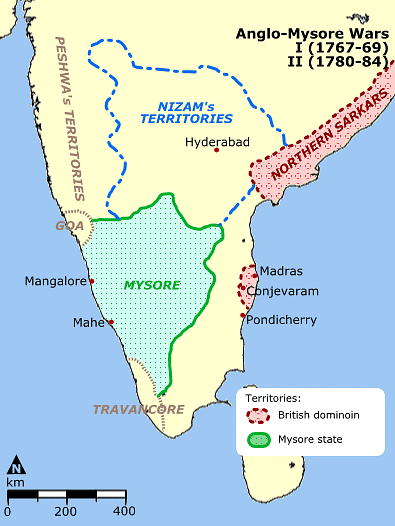 First War (1745 - 1748)
First War (1745 - 1748) - Appeal of the English to the Carnatic nawab to save them from the French and secure the release of Madras from the French; refusal of the French to obey the Nawab (Anwar-ud-din) and the battle between the forces of the Nawab (10,000) and the French (around 1,000) at St. Thome which resulted in a severe defeat to the Nawab, exposing the weakness of the traditional Indian armies against the European trained armies.
- End of the War of Austrian Succession in Europe resulting in the end of Anglo-French hostilities in India (1748); Restoration of Madras to the English by the French.
Second War (1749-1754)
- French support to Muzaffar Jang and Chanda Sahib in Hyderabad and Carnatic respectively; English support to their opponents in the two states (Nasir Jang in Hyderabad and Anwaruddin and later his son Muhammad Ali in the Carnatic).
- Success of the French in both states in defeating and murdering their opponents and placing their supports on the thrones in 1749.
- Capture of Arcot by the English under Clive (1751); successive defeats of the French by the English; capture and execution of Chanda Sahib (he was killed by a general of Tanjore, an ally of theEntish during the war-1752) and placement of Muhammad Ali on the the throne of the Carnatic.
- Futile efforts of Dupleix to reverse the trend (1753-1754), and his recall by the French Government (1754). (Still the French, through their agent Bussy, retained their position at Hyderabad).
Third War (1758-1 763)
- Outbreak of the Seven Year’s War in Europe in 1756 and the capture of Chanderngar by Clive and Watson (1757) in Bengal.
- Arrival of Count de Lally to retrieve the position of the French in India (1758).
- Defeat of the French fleet under ‘d’ Ache by the English navy under Pocock in three naval battles, and the departure of d’ Ache for France (1759).
- Defeat of Count Lally by the English General Eyre Coote in the Battle of Wandiwash (a fort in the Carnatic state) (22nd January, 1760).
- Replacement of the French by the English as the Nizam’s protectors (March, 1760).
- Surrender of Pondicherry to the English (1761) and loss of all other settlements in India by the French.
- Conclusion of peace and restoration of the settlements to the French (1763); but the French henceforth lived under British protection.
Anglo-Mysore Wars And The Conquest of Mysore State
First War (1766-1769)
- Haider’s ambition was to drive the British away from the Carnatic and finally from India.
- British realisation of the threat posed to them by Haider.
- Formation of Tripartite Alliance against Haidar by the British, the Nizam and the Marathas.
- Haider’s success in breaking the alliance and declaration of war on the British.
- Brilliant victories of Haidar over the British and his appearance within 5 miles of Madras in March, 1769.
- End of the War as a draw and conclusion of a Defensive Treaty (April, 1769) by which both sides agreed to restore the conquered areas to each other and to render assistance to each other in case of an attack by a third party.
Second War (1780-1784)
Mutual distrust and refusal of the English to fulfil the terms of the defensive treaty with Haidar when he was attacked by the Marathas in 1771.
- Outbreak of hostilities between the English and the French (an ally of Haidar) during the American War of Independence. British capture of Mahe, a French settlement within Haidar’s jurisdiction.
- Formation of an alliance by Ha dar with Nizam and Marathas against the English in 1779.
- Course of the War-Defeat of Colonel Baillie and seizure of Arcot by Haidar (1780); defeat of Haidar by Sir Eyre Coote at Porto Novo (1781); defeat of Colonel Braithwaite by Haidar (1782); Death of Haidar and succession of Tipu (Dec., 1782); capture of Brigadier Mathews and his men by Tipu (1783).
- End of war as a draw and conclusion of the Treaty of Mangalore (March, 1784) by Tipu and Lord Macartney (Governor of Madras), by which both parties agreed to restore the conquered territories to each other.
Third War (1790-1792)
- Success of Tipu in strengthening his position by undertaking various internal reforms; apprehensions of the British, the Nizam and the Marathas.
- Attempts of Tipu to acquire the help of France and Turkey by sending envoys to those countries (1787).
- Enlargement of his territories by Tipu at the cost of his neighbours particularly the Raja of Travancore, who was an ally of the British (1789).
- Conclusion of an alliance by the British with the Nizam and the Marathas against Tipu (1790).
- Course of the War–Defeat of Major-General Medows by Tipu (1790); assumption of command by Cornwallis himself (Jan, 1791); successs of Cornwallis in surrounding Seringapatam after some initial setbacks (Feb. 1792).
Treaty of Seringapatam (March, 1792)
- Surrender of almost half of Tipu’s territories, which were to be shared among the three allies (English, Marathas and Nizam).
- Payment of a war indemnity of Rs. 3 crores by Tipu.
- Sending two of his sons by Tipu as hostages to the British camp.
Fourth War (1799)
- Desire of Tipu to avenge his humiliating defeat and the terms imposed on him by the British; and his success in making Mysore strong once again.
- Tipu’s efforts to seek help from the Revolutionary France and the Muslims of Arabia, Kabul, Turkey, etc., in order to expel the British from India (he sent emissaries to these countries, and a small French force even landed at Mangalore in April, 1798).
- Determination of Lord Wellesley (the new Governor-General) to remove the threat from Tipu once for all.
- Course of the War–Defeat of Tipu first by Stuart at Sedaser (5th March) and then by General Harris at Malvelley (27th March); ret-reat of Tipu to Seringapatam where he died def-ending it (4th May). Arthur Wellesley, who was the brother of the Governor-General and who was to defeat Napoleon in the Battle of Waterloo, also participated in this war.
- Annexation of the major part of Mysore by the British and restoration of a small part of it to a successor (Krishnaraja III-a boy of 5 years) of the former Hindu Raja of Wodeyar dynasty signing of a Subsidiary Treaty by the new Raja with British (1799).
- In 1831, William Bentinck took over the administration of Mysore because of misgovernment by its ruler, but in 1880 Lord Ripon restored it to its raja.
ANGLO-MARATHA WARS AND CONQUEST OF MAHARASHTRA
First Anglo-Maratha War (1775-82)
Causes
- Struggle for power among the Marathas (between Sawai Madhav Rao, supported by Nana Phadavis, and Raghunatha Rao, uncle of Madhav Rao).
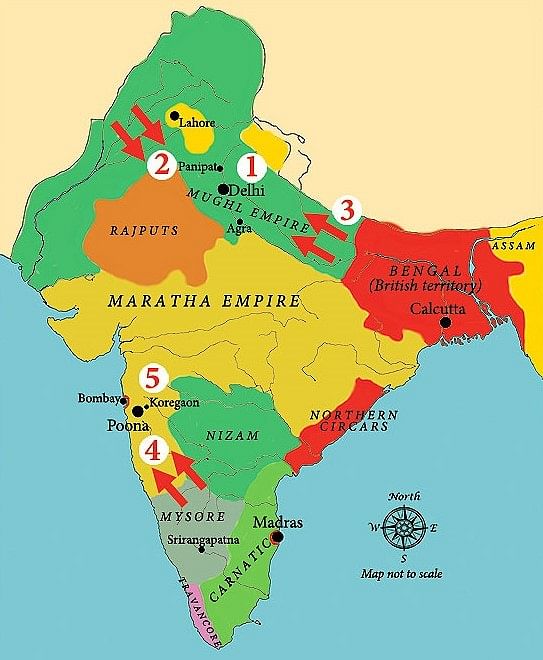
- Attempts of the British to take advantage of this struggle by intervening on behalf of one party (namely, Raghunatha Rao).
- Defeat of British by the Marathas at Talegoan (1726).
- March of British army under Goddar from Calcutta to Ahmedabad through centraIndia (which itself was a great military feat in those days) and the brilliant victories on the way (177980).
- Stalemate and deadlock for two years (1781-82).
Results
- Treaty of Salbai (1782) by which the status quo was maintained, and gave the British 20 years of peace with the Marathas.
- The Treaty also enabled the British to exert pressure on Mysore with the help of the Marathas in recovering their territories from Haider Ali.
- Thus, the British, on the one hand, saved themselves from the combined opposition of Indian powers, and on the other, succeeded in dividing the Indian powers.
Second Anglo-Marathas War (1803-05)
Causes
- Wallesley’s aggressive policy of interference in the internaaffairs of the Marathas—his desire to impose Subsidiary Alliance on the Marathas.
- Opportunity provided to the British by the death of almost alwise and experienced Maratha leaders by the end of the 18th century.
- Fratricidastrife among the Maratha chiefs, leading to the signing of the Subsidiary Treaty at Bassein (1902) by the Peshwa (Baji Rao II) with the British.
Results
- Defeat of the combined forces of Scindia and Bhonsle by the British under Arthur Wellesley at Assaye and Argaon in 1803 and the conclusion of Subsidiary Treaties with them.
- Failure of British to defeat Holkar and their finapeace with him by signing the Treaty of Rajghat.
- Establishment of British interests in the Maratha empire.
- Thus, the war resulted in the company becoming the paramount power in India.
Third Anglo-Maratha War (1817-18)
Causes
- Resentment of the Marathas against the loss of their freedom to the British.
- Rigid controexercised by the British residents on the Maratha chiefs.
Results
- Dethornement of the Peshwa (he was pensioned off and sent to Bithur near Kanpur) and the annexation of all his territories by the British (the creation of the Bombay Presidency).
- Creation of the kingdom of Satara out of Peshwa’s lands to satisfy Maratha pride
- Conceding of large territories by the Maratha chiefs to the company.
- Thus, after this war, the Maratha chiefs too existed at the marcy of the British.
ANGLO-SIKH WARS AND CONQUEST OF PUNJAB
First War (1845-1846)
- Anarchy in Punjab after the death of Ranjit Singh murder of three rulers (Kharag Singh, Nao Nihal Singh and Sher Singh) within 6 years (18391845); succession of Dalip Singh (5 year old son of Ranjit Singh—1845); absence of any control over the army (KhaIsa)
- British policy of encirclement of Punjab from 1833 itself (occupation of Ferozpur in 1835 and Sikharpur in 1836, and appointment of British residents at Ludhiana and in Sind 1838) and their military preparations (increase of their army from 2,500 in 1836 to 14,000 in 1843).
- Confirmation of the suspicions of the Sikh army by the annexation of Sind by the British in 1843.
- Course of the War: Defeat of the Sikh army under Lal Singh (Prime Minister) by Sir Hugh Gough at Mudki (1845); defeat of Sikh army under Tej Singh (commander-in-chief) by the British at Ferozpur (1845); defeat of the British under Harry Smith by the Sikhs under Ranjur Singh Majhithia at Buddewal (1846); defeat of Sikhs by Smith at Aliwal and Sobroan (1846) (the second one being one of the hardest-fought battles in Indian history); crossing of the Sutlej and occupation of Lahore by the British.
Treaty of Lahore (March 1846)
- Ceding of the Jullunder Doab to the British and payment of an indemnity of Rs. 1. 1/2 crores (Sikhs could pay only half of this amount and for the rest British got Kashmir which they sold to Gulab Singh).
- Appointment of a British Resident at Lahore (Sir Henry Lawrence) and recognition of Dalip Singh as the ruler of Punjab and Rani Jindan as his regent.
- Reduction of Sikh army and prohibition of its ruler from employing any European without the prior consent of the British.
- Permission to the British troops to pass through Sikh territory whenever need arose.
- Treaty of Bhairowal (December, 1846)
- Removal of Rani Jindan as regent and setting up of a Council of Regency for Punjab (consisting of 8 Sikh Sardars and presided over by Sir Henry Lawrence).
- Stationing of a British force at Lahore for which the Sikhs had to pay Rs. 22 lakhs.
- Power of the Govemor-General of India to take and garrison any fort in Punjab.
Second War (1848-1849)
- Desire of Sikh army to avenge their humiliation of the first war.
- Discontentment of the Sikh Sardars with the British control over Punjab.
- Treatment of Rani Jindan by the British (her transportation to Shaikpur first and then to Benares, and drastic reduction of her pension).
- Revolt of Mulraj (Govrnor of Multan) and the murder of two English officers (Vans Agnew and Lt. Anderson) sent to Multan to take over its administration .
- Revolt of Sher Singh (he was sent to suppress the revolt of Mulraj but he himself joined the revolt against the British) leading to the outbreak of a general rebellion by the Sikh army and the Sardars.
Course of War
- Battle of Ramnagar between Sher Singh and Lord Gough (Bntish Commander-in-Chief in 1848 ended in a draw.
- Battle of Chillianwala (1849) between the two also ended in a draw.
- Capture of Multan by Lord Gough and surrender of Muiraj who was transported for life.
- Final defeat of the Sikhs by Gough in the Battle of Gujarat (a town near the Chenab) in 1849, and the surrender of Sher Singh and other Sikh chiefs and the army in 1849.
- Annexation of Punjab by Lord Dalhousie and deposal of Dalip Singh (who was pensioned off and sent to England along with his mother Rani Jindan).
- Establishment of a Board of Three Commissioners (Lawrence brothers-Henry and John, and Charles G. Mansel) in 1849 to administer Punjab; abolition of the Board and appointment of a Chief Commissioner for Punjab in 1853 (Sir John Lawrence—the first Chief Commissioner for Punjab).
BRITISH ANNEXATION OF SIND (1843)
- Rise of Sind as an autonomous state-first under Kaloras and from 1783 under Amirs of Baluchistan after the disintegration of the Mughal empire; under the Amirs of the Baluchi tribe, it was divided into three units (Hyderabad, Mirpur and Khairpur), each under a separate branch of the tribe.
Causes
- Commercial possibilities of the Indus;
- British fear of the expansion of the Russian empire towards the East;
- British deisre to increase its influence in Persia and Afghanistan through control over Sindh.
Early relations between Sind and the British
- Lord Minto I sent an embassy to the Amirs in 1809 and concluded a friendship treaty with them.
- Journey of Alexander Burns up the Indus on highway of Lahore in 1831.
- Conclusion of a treaty by Lord Bentinck with them in 1832, by which the roads and rivers of Sind were opened to English trade.
- Lord Auckland forced the Amirs to sign the Subsidiary Treaty in 1839.
War and Annexation
- Lord Ellenborough unnecessarily provoked the Amirs and people of Sind into a war.
- Appointment of Sir Charles Napier as the British Resident in Sind in place of Major James Outram (1842).
- Destruction of Imamgarh, a famous desert fortress by Napier (1843).
- Attack on the British residency by the Baluchis (1843) and declaration of war.
- Defeat of the Baluchi army by Napier at Miani and the surrender of some of the Amirs.
Defeat of Sher Muhammad (Amir of Mirpur) by Napier at Dabo.
Expulsion of Sher Muhammad from Sind.
Formal annexation of Sind by the British (1843). Appointment of Sir Napier as the first Governor of Sind.
Class - 5
Expansion and Consolidation of British Power in India
India on the Eve of British Conquest
Do you know when Indian rulers lost a battle against the East India Company, they used to pay the compensation amount in lakhs in the 1700s to the company? Imagine the wealth our country had during that time which was eventually looted by the British. In this EduRev document, you will read about the conditions that prevailed when the Company entered India and how the great Mughal empire came to decline and how weak was the administration during that period.
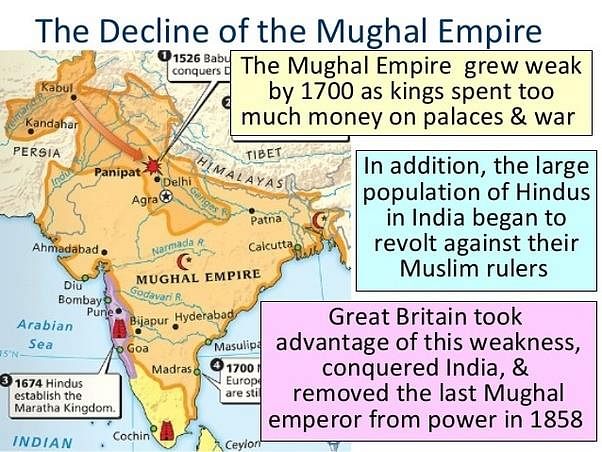
- The first half of the eighteenth century saw the decline of the mighty Mughals, who had been the envy of their contemporaries for almost two centuries.
- The reign of Aurangzeb (1658-1707) proved to signify the beginning of the end of Mughal rule in India. It is argued that Aurangzeb's misguided policies weakened the stability of the state and the decline gained momentum after his death due to wars of succession and weak rulers.
- Though Muhammad Shah ruled for a long spell of 29 years (1719-48), a revival of the imperial fortunes did not take place as he was an incompetent ruler.
➢ External Challenges
The northwestern borders had been neglected by the later Mughals and not much effort was expended in protecting the border.
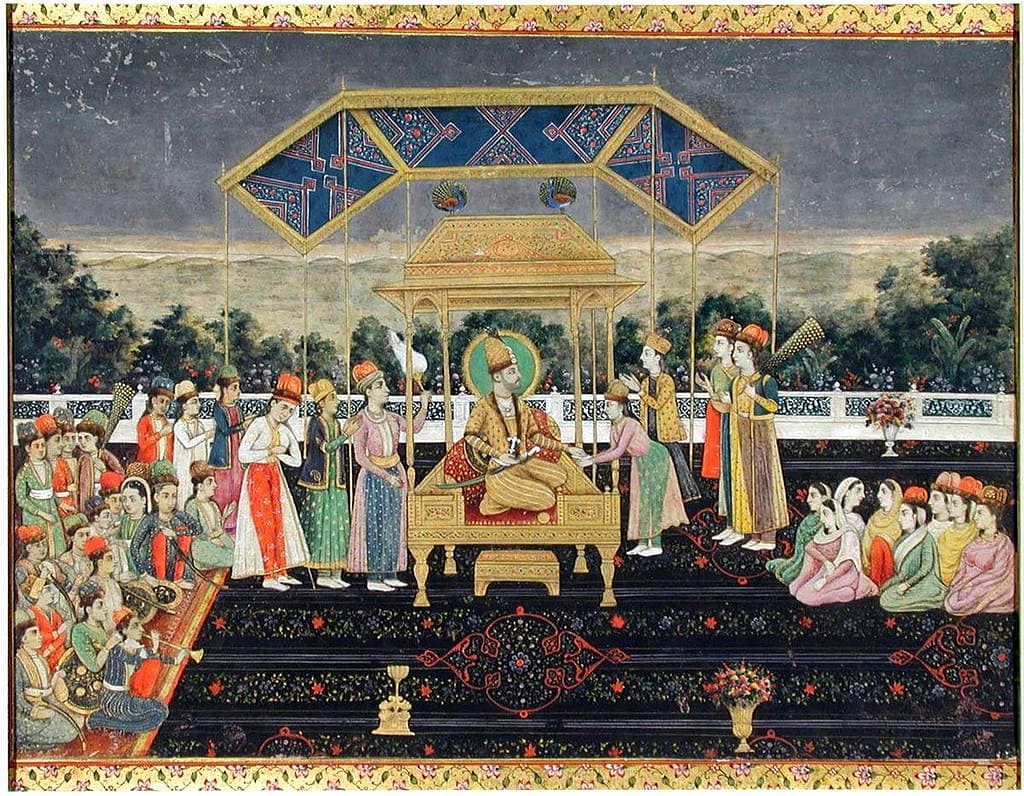
Nader Shah on Peacock Throne
- Nader Shah - Nadir Shah, the Persian emperor, attacked India in 1738-39, conquered Lahore and defeated the Mughal army at Karnal on February 13, 1739. Later, Muhammad Shah was captured, and Delhi was looted and devastated. According to an estimate, apart from the Peacock Throne and the Kohinoor diamond, seventy crore rupees were collected from the official treasury and the safes of the rich nobles
- Ahmad Shah Abdali (or Ahmad Shah Durrani) - who was elected the successor of Nadir Shah after the latter died in 1747, invaded India several times between 1748 and 1767. He continuously harassed the Mughals who tried to buy peace in 1751-52 by ceding Punjab to him. In 1757, Abdali captured Delhi and left behind an Afghan caretaker to watch over the Mughal emperor. Before his return, Abdali had recognised Alamgir II as the Mughal emperor and the Rohilla chief, Najib-ud-Daula, as Mir Bakhshi of the empire, who was to act as the personal 'supreme agent’ of Abdali.
- In 1761, Abdali defeated the Marathas in the Third Battle of Panipat. The last of Abdali's invasions came in 1767.
➢ Bahadur Shah I (1709-March 1712)
- After a nearly two-year-long war of succession, the 63-year-old Prince Muazzam, the eldest son of Aurangzeb, became the emperor, taking the title Bahadur Shah. He was later called Bahadur Shah I). He had killed his brothers Muhammad Azam and Kam Bakhsh in the war of succession. Khafi Khan gave the title of Shah-i-Bekhabar to Bahadur Shah.
- He adopted a pacific policy with the Marathas, the Rajputs and the Jats. Shahu, the Maratha prince, was released from Mughal captivity, and Rajput chiefs were confirmed in their respective states. However, the Sikh leader Banda Bahadur attacked the Muslims in Punjab and hence the emperor took action against him. Bahadur Shah I died in February 1712.
➢ Jahandar Shah (March 1712-February 1713)
- With the help of Zulfikar Khan, Jahandar Shah became the emperor. Zulfikar Khan was appointed prime minister; he introduced the bizarre system to improve the financial condition of the empire. Jahandar Shah abolished Jaziya.
- Farrukhsiyar (1713-1719) After killing Jahandar Shah with the help of Sayyid brothers— Abdulla Khan and Hussain Ali (known as King Makers ). Farrukhsiyar became the new emperor. He followed a policy of religious tolerance by abolishing Jaziya and the pilgrimage tax. In 1717 AD, Farrukhsiyar issued farman to the British which gave them the right to reside and trade in the Bengal. They were allowed to trade freely, except for a yearly payment of 3,000 rupees.
- Rafi-ud-Darajat (February 28 to June 4, 1719) - He ruled for the shortest period among the Mughals.
- Rafi-ud-Daula (June 6 to September 17, 1719) - The Sayyid brothers placed Rafi-ud-Daula with the title Shah Jahan II on the throne. The new emperor was an opium addict.
➢ Muhammad Shah (1719-48)
- Raushan Akhtar - given title Muhammad shah and Rangeela
- In 1724, Nizam-ul-Mulk became the wazir and founded the independent state of Hyderabad.
- In 1739, Nadir Shah defeated the Mughals in the Battle of Karnal
➢ Ahmad Shah (1748-1754)
- Udham Bai, the ‘Queen Mother’. Udham Bai, given the title of Qibla-i-Alam,
➢ Alamgir II (1754-1758)
- Ahmed Shah Abdali, the Iranian invader, reached Delhi in January 1757. During his reign, the Battle of Plassey was fought in June 1757.
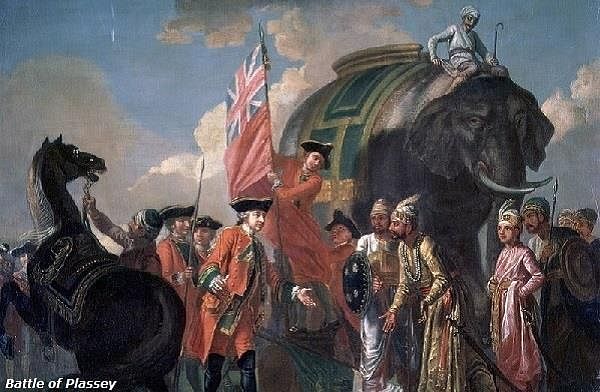
➢ Shahjahan III (1758-1759)
➢ Shah Alam II (1759-1806)
- His reign saw two decisive battles—the Third Battle of Panipat (1761) and the Battle of Buxar (1764).
- Treaty of Allahabad (August 1765), he was taken under the East India Company’s protection and resided at Allahabad. He also issued a farman granting to the Company in perpetuity the Diwani (the right to collect revenue) of Bengal, Bihar and Orissa.
➢ Akbar II (1806-37)
- He gave the title of Raja to Ram Mohan Rai.
- In 1835, the coins bearing the names of Mughal emperors were stopped.
➢ Bahadur Shah II (1837-1857)
- Bahadur Shah Zafar-the last Mughal emperor.
- Captured by the English and sent to Rangoon where he died in 1862.
- Mughal Empire came to an end on November 1, 1858, with the declaration of Queen Victoria
➢ Causes of Decline of the Mughal Empire
- Empire-related or Mughal-centric view sees the causes of the decline within the structure and functioning of the empire itself.
- Region related view finds the causes of the Mughal decline in the turmoil and instability in the different parts of the empire.
- Emperors who came after Aurangzeb proved to be incapable, weak and licentious monarchs who hastened the process of disintegration of the empire and, finally, its collapse.
➢ Shifting Allegiance of Zamindars
- The zamindars were hereditary owners of their lands who enjoyed certain privileges on a hereditary basis, and were variously known as rais, rajas, Thakur, khuts or Deshmukh.
- They helped in the collection of revenue and local administration and increased during Aurangzeb's reign.
➢ Jagirdari Crisis
- Mughal rule has often been defined as “the rule of the nobility”
- Divisiveness among the nobility based on religion, homeland and tribe.
- Mutual rivalry, jealousy and contest for power among the various groups during the rule of the later Mughals and the absence of strong central leadership) contributed to the decline of the empire.
➢ Rise of Regional Aspirations
- The Rajput struggle against the empire and the growing ambition and power of the Marathas, thus, adversely affected the Mughals.
➢ Economic and Administrative Problems
- The expenditure of the state much exceeded its income.
➢ Rise of Regional States
- Successor States- The Mughal provinces that turned into states after breaking away from the empire. Awadh, Bengal and Hyderabad.
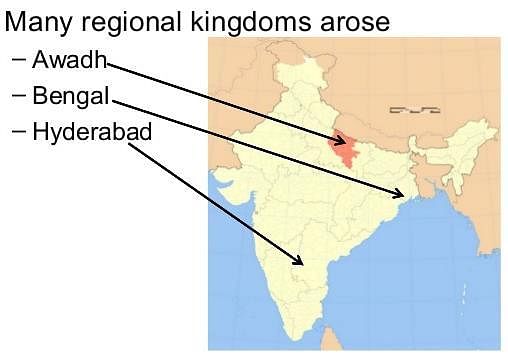
- Independent Kingdoms- These states came into existence primarily due to the destabilisation of the Mughal control over the provinces, Mysore, Kerala and the Rajput states.
- The New States - These were the states set up by the rebels against the Mughal empire, Maratha, the Sikh and the Jat states.
➢ Hyderabad
- The founder of the Asaf-Jah house of Hyderabad was Kilich Khan, popularly known as Nizam-ul- Mulk.
- The idea of an independent state in the Deccan-Zulfikar Khan.
- He killed Mubariz Khan in the Battle of Shakr-Kheda (1724). full-fledged viceroy of the Deccan.
- In 1725, he became the viceroy and conferred on himself the title of Asaf-Jah.
➢ Awadh
- The founder of the independent principality of Awadh was Saadat Khan, popularly known as Burhan-ul-Mulk.
- He was succeeded by Safdar Jang as the Nawab of Awadh
➢ Bengal
- Murshid Kuli Khan was the founder of the independent state of Bengal.
- Succeeded in 1727 by his son Shujaud- din. His successor, Sarfaraz Khan, was killed in 1740 by Alivardi Khan, the deputy governor of Bihar at Gheria.
➢ The Rajputs
- The Rajputs tried to re-establish their independence in the 18th century. This forced the Mughal ruler Bahadur Shah I to march against Ajit Singh (1708), who had allied with Jai Singh II and Durgadas Rathor. But the alliance was broken and the situation was saved for the Mughals. At one time the Rajputs controlled the entire territory extending from the south of Delhi up to the western coast.
➢ Mysore
- This territory located at the junction of the Eastern and Western Ghats was ruled by the Wodeyars.
- Mysore state was brought under the rule of Haider Ali.
➢ Kerala
- Martanda Varma established an independent state of Kerala with Travancore as his capital. He extended the boundaries of his state from Kanyakumari to Cochin.
➢ The Jats
- Churaman and Badan Singh succeeded in setting up the Jat state of Bharatpur. But it was under Suraj Mai that Jat power reached its zenith.
- State included territories from Ganga in the east to Chambal in the south and included the Subahs of Agra, Mathura, Meerut and Aligarh.
- The Jat state suffered a decline after the death of Suraj Mai in 1763.
➢ The Sikhs
- Guru Gobind Singh transformed the Sikhs into a militant sect in defence of their religion and liberties.
- Banda Bahadur, later assumed the leadership of the Sikhs in 1708.
- 12 misls or confederacies which exercised control over different parts of the kingdom.
- The credit for establishing a strong kingdom of Punjab goes to Ranjit Singh. He was the son of Mahan Singh, the leader of the Sukarchakiya misl. Ranjit Singh brought under control the area extending from the Sutlej to the Jhelum. He conquered Lahore in 1799 and Amritsar in 1802.
- The Treaty of Amritsar with the British, Ranjit Singh acknowledged the British right over the cis- Sutlej territories.
- The Tripartite Treaty in 1838 with Shah Shuja and the English Company whereby he agreed to provide passage to the British troops through Punjab with a view to placing Shah Shuja on the throne of Kabul. Ranjit Singh died in 1839.
➢ The Marathas
- Under the capable leadership of the Peshwas, the Marathas uprooted the Mughal authority from Malwa and Gujarat and established their rule.
- Their authority was challenged by Ahmed Shah Abdali in the Third Battle of Panipat (1761).
➢ Rohilakhand and Farukhabad
- The states of Rohilakhand and the kingdom of the Bangash Pathans were a fall out of the Afghan migration into India.
- Ali Muhammad Khan set the petty kingdom, Rohilakhand.
- This was the area of the Himalayan foothills between Kumaon in the north and the Ganga in the south.
- Mohammad Khan Bangash, an Afghan, set up an independent kingdom to the east of Delhi in the area around Farrukhabad.
➢ Nature and Limitations of Regional States
- The polity that emerged in these states was regional in character, and functional with the collaborative support of the different local groups like the zamindars, merchants, local nobles and chieftains.
- The provincial rulers failed to develop a system based on sound financial, administrative and military organisation.
- The jagirdari crisis intensified as income from agriculture declined, and the number of contenders for a share of the surplus multiplied.
➢ Socio Economic Conditions
- Agriculture- Though agriculture was technically backward, it was worked by the hard labour of peasants.
- Trade and Industry- India was known as a sink of precious metals.
(i) Items of Import From the Persian Gulf Region— pearls, raw silk, wool, dates, dried fruits, and rose water; from Arabia—coffee, gold, drugs, and honey; from China— tea, sugar, porcelain, and silk; from Tibet—gold, musk, and woollen cloth; from Africa— ivory and drugs; from Europe— woolen cloth, copper, iron, lead and paper. Items of Export Cotton textiles, raw silk and silk fabrics, hardware, indigo, saltpetre opium, rice, wheat, sugar pepper and other spices, precious stones, and drugs. - Important Centres of Textile Industry
(i) Dacca, Murshidabad, Patna, Surat, Ahmedabad, Broach, Chanderi, Burhanpur, Jaunpur, Varanasi, Lucknow, Agra, Multan, Lahore, Masulipatnam, Aurangabad, Chicacole, Vishakhapatnam, Bangalore, Coimbatore, Madurai, etc.; Kashmir was a centre of woollen manufactures. - Ship-building Industry Maharashtra, the Andhra region and Bengal were the leaders in shipbuilding. Indian shipping also flourished on the Kerala coast at Calicut and Quilon. The Zamorin of Calicut used the Muslim Kunjali Marakkars.
- Status of Education
(i) The Hindu and Muslim elementary schools were called pathshalas and maktabs respectively. The education was confined to reading, writing, and arithmetic.
(ii) Chatuspathis or Tools, as they were called in Bihar and Bengal, were the centres of higher education. Some of the famous centres for Sanskrit education were Kasi (Varanasi), Tirhut (Mithila), Nadia and Utkala. Madrasas were the institutions of higher learning for Persian and Arabic. Azimabad (Patna) was a famous centre for Persian education.
➢ Societal Set up
- Many Castes, Many Sects
(i) The family system was primarily patriarchal and caste was the central feature of the social life of the Hindus.
(ii) The sharif Muslims consisting of nobles, scholars, priests and army affairs often looked down upon the ajlaf Muslims or the lower class Muslims. - Position of Women in Society
(i) Upper class women remained at home, lower class women worked in fields and outside their homes supplementing the family income.
(ii) purdah, sati, child marriage, polygamy did exist which hindered the progress of women. - Menace of slavery
(i) Higher classes of Rajputs, Khatris and Kayastha kept women slaves for domestic work.
➢ Development in Art, Architecture and Culture
- At Lucknow, Asaf-ud-Daula built the bara Imambara in 1784.
- Sawai Jai Singh built the pink city of Jaipur and five astronomical observatories at Delhi, Jaipur, Benares, Mathura and Ujjain. He also prepared a set of time-tables called Jij Muhammad-shahi, to help the people in the study of astronomy.
- In the south, in Kerala, the Padmanabhapuram Palace, famous for its architecture and mural paintings.
- Kanchan Nambiar was a noted Malayalam poet.
- The Tamil language was enriched by sittar poetry. Thayumanavar (1706-44), one of the best exponents of sittar poetry, protested against the abuses of temple-rule and the caste system.
- Heer Ranjha, the romantic epic in Punjabi literature, was composed by Warris Shah. In Sindhi literature, Shah Abdul Latif composed Risalo, a collection of poems.
British Power in India Part - 2
Do you know the English East India Company was the mere agent of the British Imperialism and not some normal traders? In this EduRev document, you will read about how the company got control over Bengal and other territories till the first war of independence in 1857. How did they succeed in getting control over more regions and weaknesses of those kingdoms? How other kingdoms reacted to the supremacy of the company and how did they respond to it? This EduRev document will provide a brief overview of how the company worked and the policies they implemented to strengthen their power in India.
The entire imperial history of Britain can be divided into two phases, the 'first empire' stretching across the Atlantic towards America and the West Indies, and the 'second empire' beginning around 1783 (Peace of Paris) and swinging towards East Asia and Africa. Flag of the British Empire
Flag of the British Empire
The imperial history of Britain started with the conquest of Ireland in the sixteenth century. The English then sprang up as the new Romans, charged with civilising so-called backward races throughout the world.
- Our acquisition of India was made blindly. Nothing great that has ever been done by Englishman was done so unintentionally and so accidentally, as the conquest of India. — John Seeley
- School of opinion argues that the British came to trade in India and had no desire to acquire territories or to squander their profits on war waged for territorial expansion.
- The English, it is argued, was unwillingly drawn into the political turmoil created by the Indians themselves, and were almost forced to acquire territories.
- The other group says that the British came to India with the clear intention of establishing a large and powerful empire.
- A desire for quick profits, personal ambitions of individuals, plain avarice and effects of political developments in Europe were some of the factors.
- B. L. Grover writes: "Lord Wellesley resorted to aggressive application of the subsidiary alliance system to extend British dominion in India as a defensive countermeasure against the imperialistic designs of France and Russia".
- Some historians regard the year 1740, when the Anglo-French struggle for supremacy in India began in the wake of the War of Austrian Succession in Europe, as the beginning of the British period.
- Some see the year 1757, when the British defeated the Nawab of Bengal at Plassey, as the designated date.
- Others regard 1761, the year of the third Battle of Panipat when the Marathas were defeated by Ahmad Shah Abdali, as the beginning of this phase of Indian history.
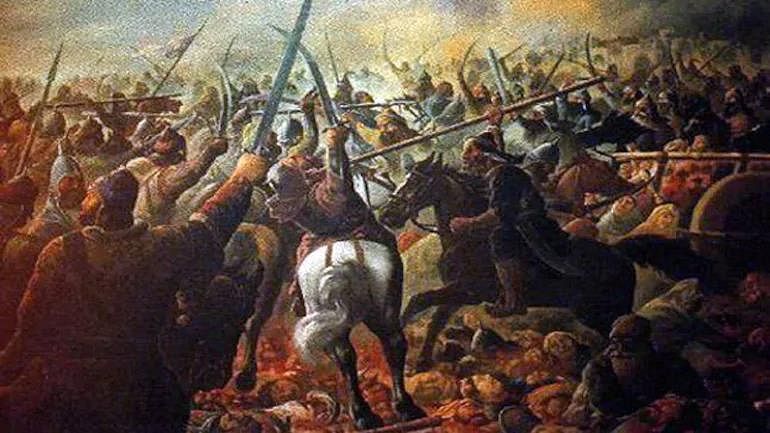 The Third battle of Panipat
The Third battle of Panipat
The British were not averse to using unscrupulous tactics to exploit a situation or a regional ruler to get their way.
The causational forces and factors for the success of the British are as follows:
- Superior Arms, Military and Strategy
The firearms used by the English, which included muskets and cannons, were better than the Indian arms both in the speed of firing and in range. - Better Military Discipline and Regular Salary
A regular system of payment of salaries and a strict regime of discipline were how the English Company ensured that the officers and the troops were loyal. - Civil Discipline and Fair Selection System
The Company officers and troops were given charge based on their reliability and skill and not on hereditary or caste and clan ties. - Brilliant Leadership and Support of Second Line Leaders
Clive, Warren Hastings, Elphinstone, Munro, Marquess of Dalhousie, etc., displayed rare qualities of leadership. The English also had the advantage of a long list of secondary leaders like Sir Eyre Coote, Lord Lake and Arthur Wellesley who fought not for the leader but the cause and the glory of their country. - Strong Financial Backup
The income of the Company was adequate to pay its shareholders handsome dividends as also to finance the English wars in India. - Nationalist Pride
The lack of materialistic vision among Indians was also a reason for the success of the English Company.
➢ Bengal on the Eve of British Conquest
- Bengal, the richest province of the Mughal Empire included present-day Bangladesh, and its Nawab had authority over the region constituting present-day states of Bihar and Odisha.
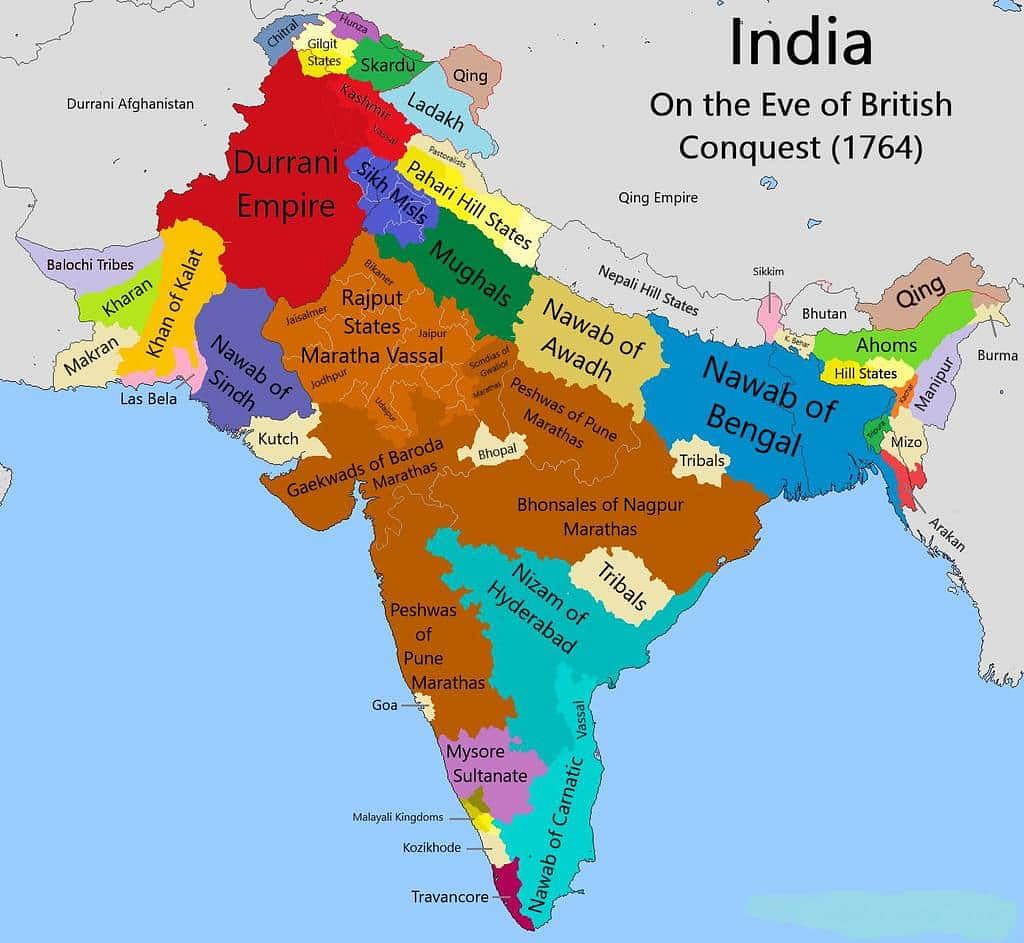
- Exports from Bengal to Europe consisted of raw products such as saltpetre, rice, indigo, pepper, sugar, silk, cotton textiles, handicrafts, etc.
- The Company paid a sum of Rs 3,000 (£ 350) per annum to the Mughal emperor who allowed them to trade freely in Bengal. In contrast, the Company's exports from Bengal were worth more than £ 50,000 per annum. The region of Bengal was fortunate enough to escape these challenges.
- The population of Calcutta rose from 15,000 (in 1706) to 1,00,000 (in 1750) and other cities like Dacca and Murshidabad became highly populous.
- Between 1757 and 1765, the power gradually got transferred from the Nawabs of Bengal to the British.
➢ Alivardi Khan and the English
- In 1741, Alivardi Khan, the Deputy Governor of Bihar, killed the Nawab of Bengal Sarfaraz Khan in a battle and certified his position as the new Subahdar of Bengal.
- He died in April 1756 and was succeeded by his grandson, Siraj-ud-daula.
➢ Challenges Before Siraj-ud-daula
- There was a dominant group in his court comprising Jagat Seth, Omichand, Rai Ballabh, Rai Durlabh and others who were opposed to him. To these internal rivals were added the threat to Siraj's position from the ever-growing commercial activity of the English company.
- Impulsive by nature and lacking experience, Siraj felt insecure, and this prompted him to act in ways which proved counterproductive.
- Black Hole Tragedy Siraj-ud-daulah is believed to have imprisoned 146 English persons who were lodged in a very tiny room due to which 123 of them died of suffocation.
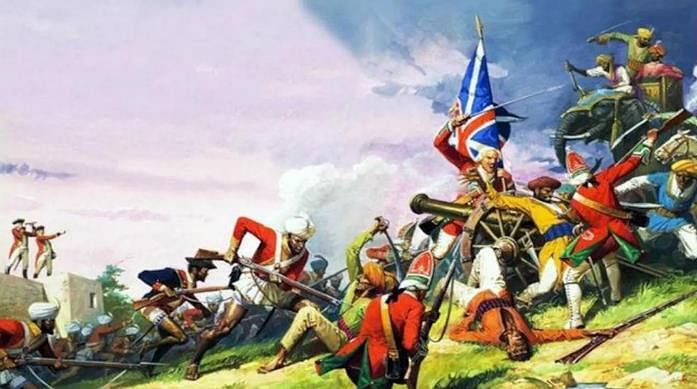 The Battle of Plassey
The Battle of Plassey - The Battle, the arrival of a strong force under the command of Robert Clive forged a secret alliance with the traitors of the nawab—Mir Jafar, Rai Durlabh, Jagat Seth (an influential banker of Bengal) and Omichand.
- Under the deal, Mir Jafar was to be made the nawab who in turn would reward the Company for its services. So the English victory in the Battle of Plassey (June 23, 1757) was decided before the battle was even fought.
- Siraj-ud-daula was captured and murdered by the order of Mir Jafar’s son, Miran. Mir Jafar became the Nawab of Bengal. He gave large sums of money plus the zamindari of 24 Parganas to the English.
- The Battle of Plassey had political significance for it laid the foundation of the British empire in India, it has been rightly regarded as the starting point of British rule in India.
- The battle established the military supremacy of the English in Bengal.
- Mir Kasim, the son-in-law of Mir Jafar, and the Company was signed in 1760.
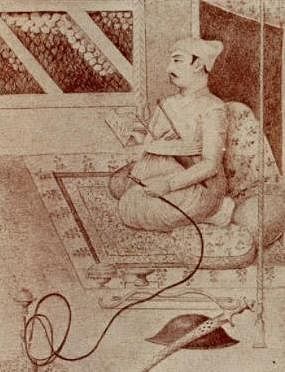 Mir Kasim
Mir Kasim - Important features of the treaty were as follows:
(i) Mir Kasim agreed to pay off the outstanding dues to the Company.
(ii) Mir Kasim promised to pay a sum of rupees five lakh towards financing the Company's war efforts in southern India.
(iii) It was agreed that Mir Kasim's enemies were the company's enemies, and his friends, the company’s friends.
(iv) It was agreed that tenants of the nawab’s territory would not be allowed to settle in the lands of the Company, and vice-versa. - A pension of Rs 1,500 per annum was fixed for Mir Jafar. Mir Kasim shifted the capital from Murshidabad to Munger in Bihar. The move was taken to allow a safe distance from the Company at Calcutta.
- His other important steps were reorganising the bureaucracy.
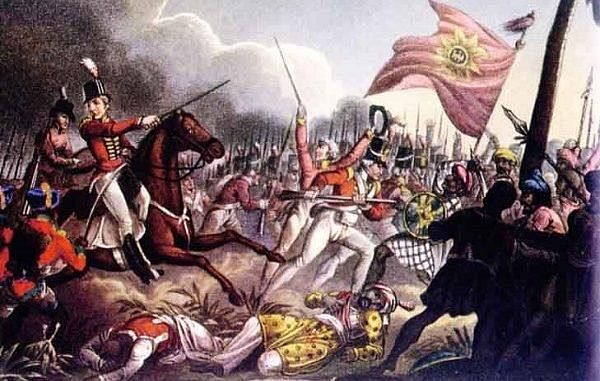 The Battle of Buxar
The Battle of Buxar
- By an imperial Farman, the English company had obtained the right to trade in Bengal without paying transit dues or tolls.
- The combined armies of Mir Kasim, the Nawab of Awadh, and Shah Alam II were defeated by the English forces under Major Hector Munro at Buxar on October 22, 1764, in a closely contested battle.
- The victory made the English a great power in northern India and contenders for supremacy over the whole country.
- After the battle, Mir Jafar, who was made Nawab in 1763 agreed to hand over the districts of Midnapore, Burdwan, and Chittagong to the English for the maintenance of their army.
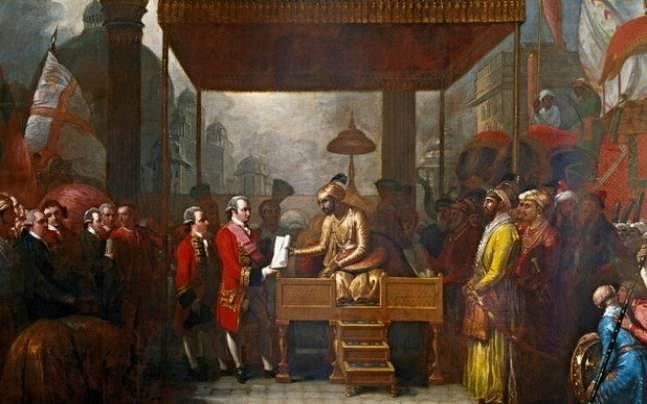 Treaty of Allahabad
Treaty of Allahabad
- Robert Clive concluded two important treaties at Allahabad in August 1765—one with the Nawab of Awadh and the other with the Mughal Emperor, Shah Alam II.
- Nawab Shuja-ud-Daula agreed to:
(i) Surrender Allahabad and Kara to Emperor Shah Alam II.
(ii) Pay Rs. 50 lakh to the Company as war indemnity and
(iii) Give Balwant Singh, Zamindar of Banaras, full possession of his estate. - Shah Alam II agreed to:
(i) Reside at Allahabad, to be ceded to him by the Nawab of Awadh, under the Company’s protection.
(ii) Issue a Farman granting the Diwani of Bengal, Bihar and Orissa to the East India Company instead of an annual payment of Rs. 26 lakh and
(iii) A provision of Rs. 53 lakh to the Company in return for nizamat functions (military defence, police, and administration of justice) of the said provinces.
- Robert Clive introduced the dual system of government, i.e., the rule of the two—the Company and the Nawab—in Bengal in which both the Diwani, i.e., collecting revenues, and Nizamat, i.e., police and judicial functions, came under the control of the company.
- The Company exercised Diwani rights as the diwan and the Nizamat rights through its right to nominate the deputy subahdar. The Company acquired the Diwani functions from the emperor and Nizamat functions from the subahdar of Bengal.
- The dual system led to an administrative breakdown and proved disastrous for the people of Bengal.
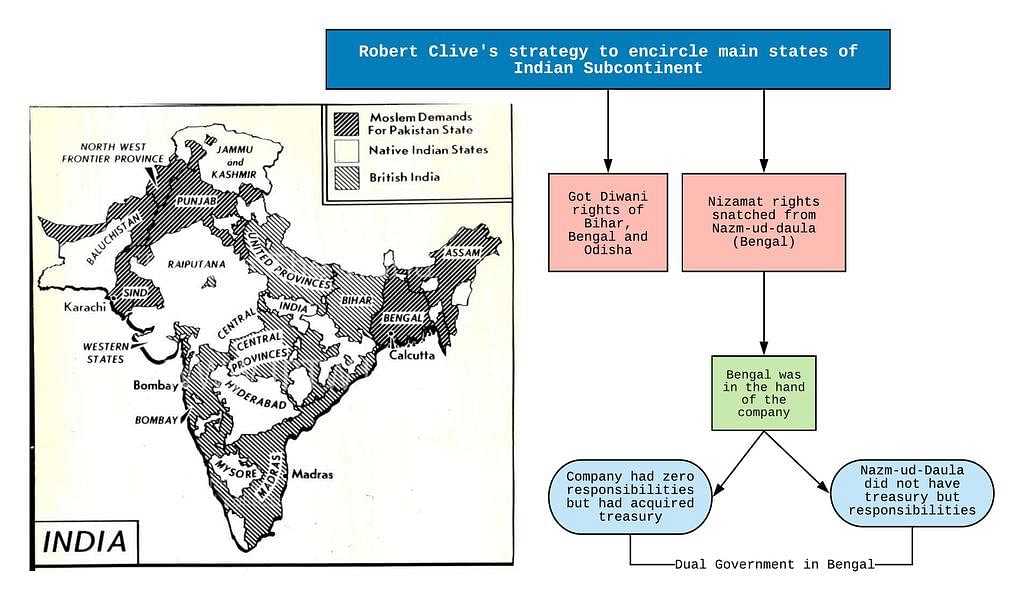 The Dual Government in Bengal
The Dual Government in Bengal
➢ The Wodeyar / Mysore Dynasty
- The battle of Talikota (1565) gave a deadly blow to the great kingdom of Vijayanagara.
- In 1612 a Hindu kingdom under the Wodeyars emerged in the region of Mysore.
- Chikka Krishnaraja Wodeyar II ruled from 1734 to 1766. Mysore emerged as a formidable power under the leadership of Haidar Ali and Tipu Sultan.
➢ Rise of Haidar Ali
- Haidar Ali became the de facto ruler of Mysore in 1761. He realized that the French-trained Nizami army could be silenced only by effective artillery.
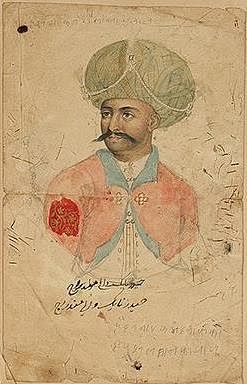 Haider Ali
Haider Ali - Haidar Ali took the help of the French to set up an arms factory at Dindigul (now in Tamil Nadu), and also introduced Western methods of training for his army.
- With his superior military skill he captured Dod Ballapur, Sera, Bidnur and Hoskote in 1761- 63, and brought to submission the troublesome Poligars of South India (in what is now Tamil Nadu).
- Recovering from their defeat at Panipat, the Marathas under Madhavrao attacked Mysore and defeated Haidar Ali in 1764, 1766, and 1771. And recovered all the territories during 1774-76.
➢ First Anglo-Mysore War (1767-69)
- The Nizam, the Marathas, and the English allied together against Haidar Ali.
- English conclude a treaty with Haidar on April 4, 1769— Treaty of Madras.
- The treaty provided for the exchange of prisoners and mutual restitution of conquests.
- Haidar Ali was promised the help of the English in case he was attacked by any other power.
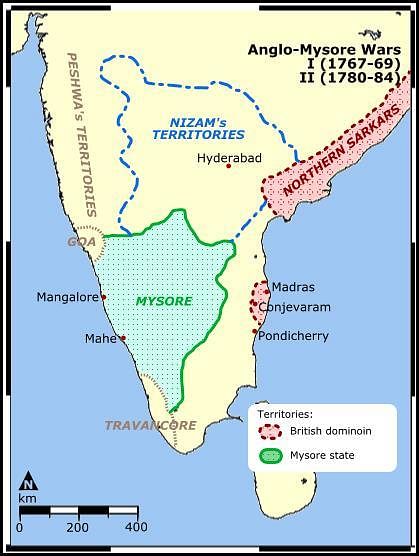
➢ Second Anglo-Mysore War (1780-84)
- Haidar considered the English attempt to capture Mahe a direct challenge to his authority.
- Haidar forged an anti-English alliance with the Marathas and the Nizam.
He followed it up by an attack in the Carnatic, capturing Arcot, and defeating the English army under Colonel Baillie in 1781. - Haidar faced the English boldly only to suffer a defeat at Porto Novo in November 1781.
- Fed up with an inconclusive war, both sides opted for peace, negotiating the Treaty of Mangalore (March 1784) under which each party gave back the territories it had taken from the other.
- Haidar Ali died of cancer on December 7, 1782.
➢ Third Anglo-Mysore War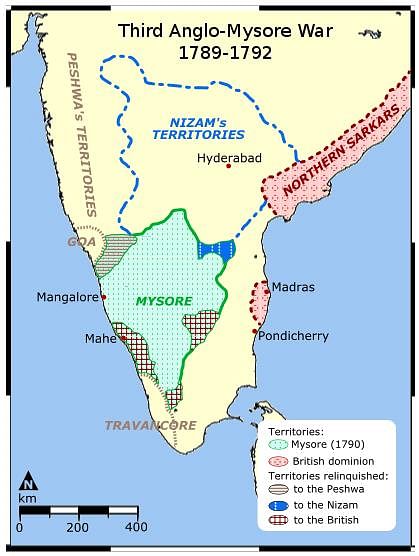
- In April 1790, Tipu declared war against Travancore for the restoration of his rights. In 1790, Tipu defeated the English under General Meadows.
- In 1791, Cornwallis took the leadership and at the head of a large army marched through Ambur and Vellore to Bangalore (captured in March 1791) and from there to Seringapatam.
- Treaty of Seringapatam- Under this treaty of 1792, nearly half of the Mysorean territory was taken over by the victors, Baramahal, Dindigul and Malabar went to the English.
- While the Marathas got the regions surrounding the Tungabhadra and its tributaries and the Nizam acquired the areas from the Krishna to beyond the Pennar. Besides, war damage of three crore rupees was also taken from Tipu.
➢ Fourth Anglo-Mysore War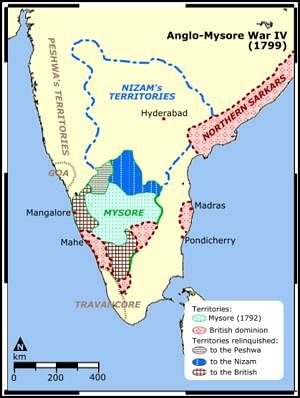
- In 1798, Lord Wellesley succeeded Sir John Shore as the new Governor-General.
- The war began on April 17, 1799, and ended on May 4, 1799, with the fall of Seringapatam.
- Tipu was defeated first by English General Stuart and then by General Harris.
- The English were again helped by the Marathas and the Nizam. The Marathas had been promised half of the territory of Tipu and the Nizam had already signed the Subsidiary Alliance.
➢ Mysore After Tipu
- Wellesley offered Soonda and Harponelly districts of Mysore Kingdom to the Marathas, which the latter refused.
- The Nizam was given the districts of Gooty and Gurramkonda.
- The English took possession of Kanara, Wynad, Coimbatore, Dwaraporam and Seringapatam.
- The new state of Mysore was handed over to the old Hindu dynasty (Wodeyars) under a minor ruler Krishnaraja III, who accepted the subsidiary alliance.
- In 1831 William Bentinck took control of Mysore on grounds of misgovernance.
- In 1881 Lord Ripon restored the kingdom to its ruler.
British Power in India part - 3
ANGLO-MARATHA STRUGGLE FOR SUPREMACY
Rise of the Marathas
- Bajirao I (1720-40), considered greatest of all the Peshwas, had started a confederacy of rapidly expanding Maratha power, and to some extent appease the Kshatriya section of the Marathas (Peshwas were brahmins) led by the Senapati Dabodi.
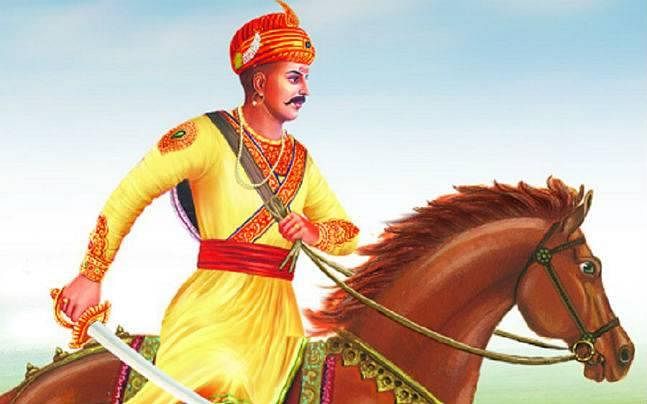 Bajirao I
Bajirao I - The Maratha families which emerged prominently were—
(a) The Gaekwad of Baroda
(b) The Bhonsle of Nagpur
(c) The Holkars of Indore
(d) The Sindhias of Gwalior and
(e) The Peshwa of Poona - The defeat at Panipat and later the death of the young Peshwa, Madhavrao I, in 1772, weakened the control of the Peshwas over the confederacy.
The Entry of the English into Maratha Politics
The English in Bombay wanted to establish a government on the lines of the arrangement made by Clive in Bengal, Bihar and Orissa.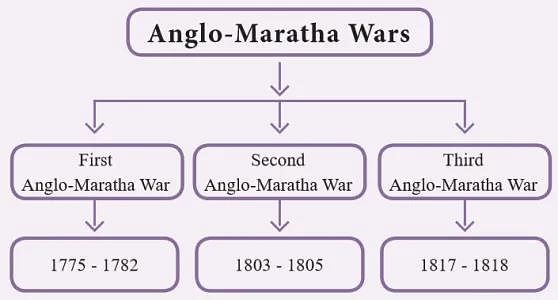
➢ First Anglo-Maratha War (1775-82)
- After the death of Madhavrao in 1772, his brother Narayanrao succeeded him as the fifth Peshwa.
- Treaties of Surat and Purandhar Raghunathrao, unwilling to give up his position in power, sought help from the English at Bombay and signed the Treaty of Surat in 1775.
- Under the treaty, Raghunathrao ceded the territories of Salsette and Bassein to the English along with a portion of the revenues from Surat and Bharuch districts. In return, the English were to provide Raghunathrao with 2,500 soldiers.
- The British Calcutta Council condemned the Treaty of Surat (1775) and sent Colonel Upton to Pune to annul it and make a new treaty (Treaty of Purandhar, 1776) with the regency renouncing Raghunath and promising him a pension. The Bombay government rejected this and gave refuge to Raghunath.
- In 1777, Nana Phadnavis violated his treaty with the Calcutta Council by granting the French a port on the west coast.
- Mahadji lured the English army into the ghats (mountain passes) near Talegaon and trapped the English from all sides and attacked the English supply base at Khopali. The Marathas also utilised a scorched earth policy, burning farmland and poisoning wells.
- The English surrendered by mid-January 1779 and signed the Treaty of Wadgaon that forced the Bombay government to relinquish all territories acquired by the English since 1775.
- Treaty of Salbai (1782): End of the first phase of the struggle Warren Hastings, the Governor-General in Bengal, rejected the Treaty of Wadgaon and under Colonel Goddard who captured Ahmedabad in February 1779, and Bassein in December 1780.
- Another Bengal detachment led by Captain Popham captured Gwalior in August 1780. In February 1781 the English, under General Camac, finally defeated Sindhia at Sipri.
- Sindhia proposed a new treaty between the Peshwa and the English, and the Treaty of Salbai was signed in May 1782, it was ratified by Hastings in June 1782 and by Phadnavis in February 1783.
- The treaty guaranteed peace between the two sides for twenty years.
- The main provisions of the Treaty of Salbai were:
(i) Salsette should continue in the possession of the English.
(ii) The whole of the territory conquered since the Treaty of Purandhar (1776) including Bassein should be restored to the Marathas.
(iii) In Gujarat, Fateh Singh Gaekwad should remain in possession of the territory which he had before the war and should serve the Peshwa as before.
(iv) The English should not offer any further support to Raghunathrao and the Peshwa should grant him a maintenance allowance.
(v) Haidar Ali should return all the territory taken from the English and the Nawab of Arcot.
(vi) The English should enjoy the privileges at trade as before.
(vii) The Peshwa should not support any other European nation.
(viii) The Peshwa and the English should undertake that their several allies should remain at peace with one another.
(ix) Mahadji Sindhia should be the mutual guarantor for the proper observance of the terms of the treaty.
➢ Second Anglo Maratha War (1803-1805)
- The death of Nana Phadnavis in 1800 gave the British an added advantage.
On October 25, 1802, Jaswant defeated the armies of the Peshwa and Sindhia decisively at Hadaspar near Poona and placed Vinayakrao, son of Amritrao, on the Peshwa’s seat. - A terrified Bajirao II fled to Bassein on December 31, 1802.
- Treaty of Bassein (1802) Under the treaty, the Peshwa agreed:
(a) To receive from the Company a native infantry (consisting of not less than 6,000 troops), with the usual proportion of field artillery and European artillerymen attached, to be permanently stationed in his territories.
(b) To cede to the Company territories yielding an income of Rs 26 lakh.
(c) To surrender the city of Surat.
(d) To give up all claims for Chauth on the Nizam's dominions.
(e) To accept the Company’s arbitration in all differences between him and the Nizam or the Gaekwad.
(f) Not to keep in his employment Europeans of any nation at war with the English and
(g) To subject his relations with other states to the control of the English.
(h) Defeat of Bhonsle (December 17, 1803, Treaty of Devgaon), the defeat of Sindhia (December 30, 1803, Treaty of Surajianjangaon) and the defeat of Holkar (1806, Treaty of Rajpurghat). - Treaty was signed by a Peshwa who lacked political authority, but the gains made by the English were immense.
- The treaty "gave the English the key to India”.
➢ Third Anglo-Maratha War (1817-19)
- By the Charter Act of 1813, the East India Company’s monopoly of trade in China (except tea) ended.
- Bajirao II made the last bid in 1817 by rallying together the Maratha chiefs against the English in course of the Third Anglo-Maratha War.
- The Peshwa attacked the British Residency at Poona. Appa Sahib of Nagpur attacked the residency at Nagpur.
- The Peshwa was defeated at Khirki, Bhonsle at Sitabuldi, and Holkar at Mahidpur.
- Important treaties were signed. These were:
(i) June 1817, Treaty of Poona, with Peshwa.
(ii) November 1817, Treaty of Gwalior, with Sindhia.
(iii) January 1818, Treaty of Mandasor, with Holkar. In June 1818. - The Peshwa finally surrendered and the Maratha confederacy was dissolved. The peshwaship was abolished. Peshwa Bajirao became a British retainer at Bithur near Kanpur.
- Pratap Singh made ruler of Satara, formed out of the Peshwa's dominions.
Why the Marathas Lost
- Inept Leadership-the later Maratha leaders Bajirao II, Daulatrao Sindhia and Jaswantrao Holkar were worthless and selfish leaders.
- Defective Nature of Maratha State - The cohesion of the people of the Maratha state was not organic but artificial and accidental, and hence precarious.
- Loose Political Set-up-the lack of a cooperative spirit among the Maratha chiefs proved detrimental to the Maratha state.
- Inferior Military System- Though full of personal prowess and valour, the Marathas were inferior to the English in the organisation of the forces, in war weapons, in disciplined action and ineffective leadership.
- Unstable Economic Policy- The Maratha leadership failed to evolve a stable economic policy
- Superior English Diplomacy and Espionage- The English had the better diplomatic skill to win allies and isolate the enemy.
- Progressive English Outlook- The English were rejuvenated by the forces of Renaissance The English attacked a 'divided house' which started crumbling after a few pushes.
The Conquest of Sindh
Rise of Talpuras Amirs
- Before the rule of Talpuras Amirs, Sindh was ruled by the Kallora chiefs.
- In 1758, an English factory was built at Thatta, owing to a parwana given by the Kallora prince, Ghulam Shah. In 1761, Ghulam Shah, on the arrival of an English resident in his court, not only ratified the earlier treaty but also excluded other Europeans from trading there.
- This advantage was enjoyed by the English up to 1775
- In the 1770s, a Baluch tribe called Talpuras descended from the hills and settled in the plains of Sindh.
- In 1783, the Talpuras, under the leadership of Mir Fath (Fatah) Ali Khan, established a complete hold over Sindh.
- They conquered Amarkot from the Raja of Jodhpur, Karachi from the chief of Luz, Shaikarpur and Bukkar from the Afghans.
Gradual Ascendancy over Sindh
- Under the influence of Tipu Sultan and the jealousy of the local traders, aided by the anti-British party at Hyderabad (Sindh), the amir in October 1800, ordered the British agent to quit Sindh within ten days.
- Treaty of ‘Eternal Friendship’
(i) Metcalfe was sent to Lahore, Elphinstone to Kabul and Malcolm to Teheran.
(ii) After professing eternal friendship, both sides agreed to exclude the French from Sindh and to exchange agents at each other's court.
(iii) The treaty was renewed in 1820 with the addition of an article excluding the Americans and resolving some border disputes on the side of Kachch after the final defeat of the Maratha confederacy in 1818. - Treaty of 1832- In 1832, William Bentinck sent Colonel Pottinger to Sindh to sign a treaty with the Amirs.
The provisions of the treaty were as follows:
(i) Free passage through Sindh would be allowed to the English traders and travellers and the use of Indus for trading purposes, however, no warships would ply, nor any war materials would be carried.
(ii) No English merchant would settle down in Sindh, and passports would be needed for travellers.
(iii) Tariff rates could be altered by the Amirs if found high and no military dues or tolls would be demanded.
(iv) The Amirs would work with the Raja of Jodhpur to put down the robbers of Kutch. - Lord Auckland and Sindh - Lord Auckland, who became the Governor-General in 1836.
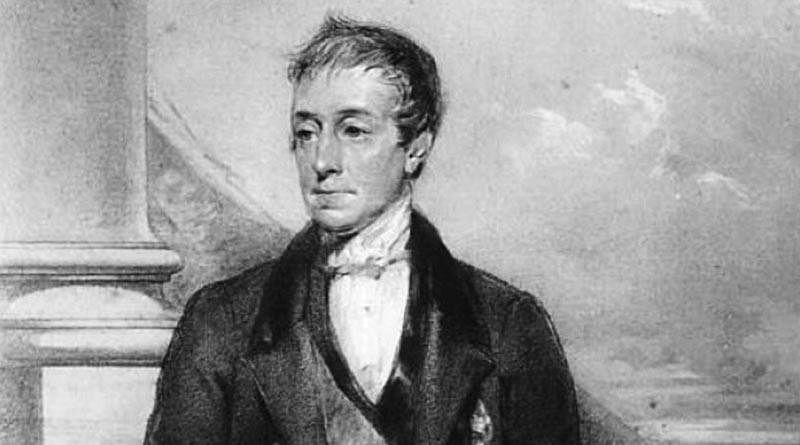 Lord Auckland
Lord Auckland - Tripartite Treaty of 1838 - The Company persuaded Ranjit Singh to sign a tripartite treaty in June 1838 agreeing to British mediation in his disputes with the Amirs, and then made Emperor Shah Shuja give up his sovereign rights on Sindh, provided the arrears of tribute were paid.
- Sindh Accepts Subsidiary Alliance (1839) - B. L. Grover writes: “Under threat of superior force, the Amirs accepted a treaty in February 1839 by which a British subsidiary force had to be stationed at Shikarpur and Bukkar and the Amirs of Sindh were to pay Rs. 3 lakh annually for the maintenance of the Company’s troops”.
- The capitulation of Sindh -The First Anglo-Afghan War (1839-42), fought on the soil of Sindh. The whole of Sindh capitulated within a short time, and the Amirs were made captives and banished from Sindh. In 1843, under Governor-General Ellenborough, Sindh was merged into the British Empire and Charles Napier was appointed its first governor.
Criticisms of the Conquest of Sindh
- In the instance of the First Afghan War, the English suffered terribly at the hands of the Afghans with a corresponding loss of prestige.
- To compensate for this, they annexed Sindh which prompted Elphinstone to comment: “Coming from Afghanistan it put one in mind of a bully who has been knocked in the street and went home to beat his wife in revenge.”
A NEW PHASE IN EUROPE'S EASTERN TRADE
- India's trade relations with Europe go back to the ancient days of the Greeks. During the Middle Ages trade between Europe and India and South-East Asia was carried on along several routes.
- The Asian part of the trade was carried on mostly by Arab merchants and sailors, while the Mediterranean and European part was the virtual monopoly of the Italians. The trade remain highly profitable.
- The old trading routes between the East and the West came under Turkish control after the Ottoman conquest of Asia Minor and capture of Constantinople in 1453.
- The West European states and merchants therefore began to search for new and safer sea routes to India and the Spice Islands in Indonesia, then known as the East Indies.
- The first steps were taken by Portugal and Spain whose seamen, sponsored and controlled by their governments, began a great era of geographical discoveries.
- In 1492 Columbus of Spain set out to reach India and discovered America instead.
- In 1498, Vasco da Gama of Portugal discovered a new and all-sea route from Europe to India.
- He sailed round Africa via the Cape of Good Hope and reached Calicut. He returned with a cargo which sold for 60 times the cost of his voyage.
- These and other navigational discoveries opened a new chapter in history of the world. The 17th and 18th centuries were to witness an enormous increase in world trade. The vast new continent of America was opened to Europe and relations between Europe and Asia were completely transformed.
- Portugal had a monopoly of the highly profitable Eastern trade for nearly a century. In India, she established her trading settlements at Cochin, Goa, Diu and Daman.
- Under the viceroyalty ofAlfonso d'Albuquerque, who captured Goa in 1510, the Portuguese established their domination over the entire Asian coast from Hormuz in the Persian Gulf to Malacca in Malaya and the Spice Islands in Indonesia.
- In the latter half of the 16the century, England and Holland, and later France, all growing commercial and naval powers, waged a fierce struggle against the Spanish and Portuguese monopoly of world trade.
- In 1602, the Dutch East India Company was formed.
- The main interest of the Dutch lay not in India but in the Indonesian Islands where spices were roduced.
- They also established trading depots at Surat, Broach, Cambay and Ahmedabad in Gujarat in West India, Cochin in Kerala, Nagapatam in Madras, Masulipatam in Andhra, Chinsura in Bengal, Patna in Bihar and Agra in Uttar Pradesh.
- An English association or company to trade with the East was formed in 1599 under the auspices of a group of merchants known as the Merchant Adventurers.
- The company, popularly known as the East India Company, was granted a royal charter and the exclusive privilege to trade in the East by Queen Elizabeth on 31 December, 1600.
- In 1608 it sent Captain Hawkins to Jahangir's court to obtain royal favours.
- Consequently, the English Company was given permission by a royal farman to open factories at several places on the west coast.
- The English were not satisfied with this concession. In 1615 their ambassador Sir Thomas Roe reached the Mughal court.
- Roe succeeded in getting an imperial farman to trade and establish factories in all parts of the Mughal Empire.
- Farman means a royal edict, or a royal order.
- In 1662 the Portuguese gave the island of Bombay to King Charles II of England as dowry for marrying a Portuguese princess.
- Eventually, the Portuguese lost all their possessions in India except Goa, Diu and Daman.
THE GROWTH OF THE EAST INDIA COMPANY'S TRADE AND INFLUENCE, 1600-1714
- From the very beginning, it tried to combine trade and diplomacy with war and control of the territory where their factories were situated.
- The English opened their first 'factory9 in the south at Masulipatam in 1611.
- But they soon shifted the centre of their activity to Madras, the lease of which was granted to them by the local Raja in 1639.
- Here the English built a small fort around their factory called Fort St. George.
- In Eastern India, the English Company had opened its first factories in Orissa in 1633. In 1651 it was given permission to trade at Hugli in Bengal.
- In 1698, the Company acquired the zamindari of the three village Sutanati, Kalikata and Govindpur where it built Fort William around its factory. The villages soon grew into a city which came to be known as Calcutta.
- In 1717 the Company secured from Emperor Farrukh Siyar a farman confirming the privileges granted in 1691 and extending them to Gujarat and the Deccan.
- But during the first half of the 18th century Bengal was ruled by strong Nawabs such as Murshid Quii Khan and Alivardi Khan.
- They exercised strict control over the English traders and prevented them from misusing their privileges.
THE ANGLO-FRENCH STRUCK IN SOUTH INDIA
- For nearly 20 years from 1744 to 1763 the French and the English were to wage a bitter war for control over the trade, wealth and territory of India.
- The French East India Company was founded in 1664. It was firmly established at Chandranagar near Calcutta and Pondicheny on the east coast.
- It had also acquired control over the islands of Mauritius and Reunion in the Indian Ocean.
- The French East India Company was heavily dependent on the French Government which helped it by giving it treasury grants, subsidies and loans, and in various other ways.
- Dupleix, the French Governor-General at Pondicheny at this time, now evolved the strategy of using the well-disciplined, modem French army to intervene in the mutual quarrels of the Indian princes and by supporting one against the other, securing monetary, commercial or territorial favours from the victor.
- In 1748, a situation arose in the Camatic and Hyderabad which gave full scope to Dupleix's talents for intrigue. In the Camatic, Chanda Sahib began to conspire against the Nawab, Anwaruddin, while in Hyderabad the death ofAsafJah, Nizam-ul-Mulk, was followed by civil war between his son Nasir Jang and his grandson Muzaffar Jang.
- Robert Clive, a young clerk in the Company's service, proposed that French pressure on Muhammad Ali, besieged at Trichinopoly, could be released by attacking Arcot, the capital of Camatic.
- In the end, the French Government, weary of the heavy expense of the war in India and fearing the loss of its American colonies, initiated peace negotiations and agreed in 1754 to the English demand for the recall of Dupleix from India. This was to prove a big blow to the fortunes of the French Company in India.
- The decisive battle of the war was fought at Wandiwash on 22 January, 1760 when the English general Eyre Coot, defeated Lally. Within a year the French had lost all their possessions in India. "
- The war ended in 1763 with the signing of the Treaty of Paris.
BRITISH OCCUPATION OF BENGAL
- The beginnings of British political sway over India may be traced to the battle of Plassey in 1757, when the English East India Company's forces defeated Siraj-ud-Daulah, the Nawab of Bengal.
- This farman of 1717 was a perpetual source of conflict between the Company and the Nawabs of Bengal.
- For one, it meant loss of revenue to the Bengal Government. Secondly, the power to issue dastaks for the Company's goods was misused by the Company's servants to evade taxes on their private trade.
- Matters came to a head in 1756 when the young and quick-tempered Siraj-ud-Daulah succeeded his grandfather, Alivardi Khan. He demanded of the English that they should trade on the same basis as in the times of Murshid Quii Khan.
- Siraj was willing to let the Europeans remain as merchants but not as masters. He ordered both the English and the French to demolish their fortifications at Calcutta and Chandranagar and to desist from fighting each other.
- Nevertheless the English Company demanded the absolute right to trade freely in Bengal irrespective of the Bengal Nawab's orders. This amounted to a direct challenge to the Nawab's sovereignty.
- Siraj-ud-Daulah seized the English factory at Kasimbazar, marched on to Calcutta, and occupied the Fort William on 20 June, 1756.
- The English officials took refuge at Fulta near the sea protected by their naval superiority. Here they waited for aid from Madras and, in meantime, organised a web of intrigue and treachery with the leading men of the Nawab's court.
- Chief among these were Mir Jafar, the Mir Bakshi, Manick Chand, the Officer-in-Charge of Calcutta, Amichand, a rich merchant, Jagat Seth, the biggest banker of Bengal, and Khadim Khan, who commanded a large number of the Nawab's troops.
- From Madras came a strong naval and military force under Admiral Watson and Colonel Clive. Clive reconquered Calcutta in the beginning of 1757 and compelled the Nawab to concede all the demands of the English.
- They met for battle on the field of Plassey, about 30 km from Murshidabad, on 23 June. 1757. The fateful battle of Plassey was a battle only in name.
- The battle of Plassey was followed, in the words of the Bengali poet Nabin Chandra Sen. by “a night of eternal gloom for India".
- The English proclaimed Mir jafar the Nawab of Bengal and set out to gather the reward. Mir Jafar was called a puppet ruler of Bengal.
- The battle of Plassey was of immense historical importance. It paved the way for the British mastery of Bengal and eventually of the whole of India.
- The rich revenues of Bengal enabled them to organise a strong army and meet the cost of the conquest of the rest of the country.
- Mir Jafar soon discovered that it was impossible to meet the full demands of the Company and its officials who, on their part, began to criticise the Nawab for his incapacity in fulfilling their expectations.
- And so, in October, 1760, they forced him to abdicate in favour of his son-in-law, Mir Qasim, who rewarded his benefactors by granting the Company the zamindari of the district of Burdwan, Midnapore, and Chittagong, and giving handsome presents totaling 29 lakhs of rupees to the high English officials.
- Mir Qasim however, belied English hopes, and soon emerged as a threat to their position and designs in Bengal.
- He was an able, efficient, and strong ruler determined to free himself from foreign control.
- These years have been described by a recent British historian, Percival Spear, as "the period of open and unashamed plunder".
- In fact the prosperity for which Bengal was renowned was being gradually destroyed.
- Mir Qasim was defeated in a series of battles in 1763 and fled to Awadh where he formed an alliance with Shuja-ud-Daulah, the Nawab of Awadh, and Shah Alam II, the fugitive Mughal Emperor.
- The three allies clashed with the Company's army at Buxar on 22 October, 1764 and were thoroughly defeated.
- This was one of the most decisive battle of Indian history for it demonstrated the superiority of English arms over the combined army of two of the major Indian powers.
- It firmly established the British as masters of Bengal, Bihar and Orissa and placed Awadh at their mercy.
- In 1763, the British had restored Mir Jafar as Nawab and collected huge sums for the Company and its high officials.
- On Mirjafar's death, they placed his second son Nizam-ud-Daulah on the throne and as a reward to themselves made him sign a new treaty on 20 February, 1765.
- From Shah Alam II, who was still the titular head of the Mughal Empire, the Company secured the Diwani, or the right to collect revenue of Bihar, Bengal and Orissa.
DUAL SYSTEM OF ADMINISTRATION OF BENGAL
- The East India Company became the real master of Bengal at least from 1765.
- The Nawab depended for his internal and external security on the British.
- On 12 August, 1765, the Mughal emperor appointed the East India Company as the Diwan of Bengal.
- As the Diwan, the Company directly collected its revenues, while through the right to nominate the Deputy Subahdar, it controlled the nizamat or the police and judicial powers.
- This arrangement is known in history as the 'Dual9 or 'Double9 government.
- It held a great advantage for the British: they had power without responsibility. The Nawab and his officials had the responsibility of administration but not the power to discharge it.
- We can quote Clive himself : "I shall only say that such a scene of anarchy, confusion, bribery, corruption, and extortion was never seen or heard of in any country but Bengal; nor such and so many fortunes acquired in so unjust and rapacious a manner".
- Robert Clive himself amassed a fortune in India. Interestingly, when he was appointed Governor of Bengal in 1764, he was asked to remove corruption in company administration but he was himself cross-examined in 1772 by the British Parliament which was suspicious of his vast wealth. Although he was acquitted, he committed suicide in 1774.
- The Company's authorities on their part set out to gather the rich harvest and drain Bengal of its wealth. They stopped sending money from England to purchase Indian goods. Instead, they purchased these goods from the revenues of Bengal and sold them abroad.
WARS UNDER WARREN HASTINGS (1772-85) AND CORNWALLIS (1768 - 93)
- The East India Company had by 1772 become an important Indian power and its directors in England and its officials in India set out to consolidate their control over Bengal before beginning a new round of conquests.
- However, their habit of interfering in the internal affairs of the Indian states and their lust for territory and money soon involved them in a series of wars.
- Thus the British were faced with the powerful combination of the Marathas, Mysore and Hyderabad.
- Peace was concluded in 1782 by the Treaty of Salbai by which the status quo was maintained. It saved the British from the combined opposition of Indian powers.
- In July, 1781 the British army under Eyre Coote defeated Haidar Ali at Porto Novo and saved Madras. After Haidar All's death in December, 1782, the war was carried on by his son, Tipu Sultan.
- War between the two began again in 1789 and ended in Tipu's defeat in 1792. By the treaty of Seringapatam, Tipu ceded half of his territories to the English and their allies and paid 330 lakhs of rupees as indemnity.
EXPANSION UNDER LORD WELLESLEY (1798 - 1805)
- The next large-scale expansion of British rule in India occurred during the Governor- Generalship of Lord Wellesley who came to India in 1798.
- To achieve his political aims Wellesley relied on three methods: the system of 'Subsidiary Alliances9, outright war, and the assumption of the territories of previously subordinated rulers.
- Under his Subsidiary Alliance system, the ruler of the allying Indian state was compelled to accept the permanent stationing of a British force within his territory and to pay a subsidy for its maintenance.
- Sometimes the ruler ceded part of his territory instead of paying annual subsidy. The 'Subsidiary Treaty' usually also provided that the Indian ruler would agree to the posting at his court of a British Resident, that he would not employ any European in his service without the approval of the British, and that he would not negotiate with any other Indian ruler without consulting the Governor-General.
- In return, the British undertook to defend the ruler from his enemies. They also promised non- terference in the internal affairs of the allied state, but this was a promise theyseldom kept.
- In reality, by signing a Subsidiary Alliance, an Indian state virtually signed away its independence. It lost the right of self-defence, of maintaining diplomatic relations, of employing foreign experts, and of settling its disputes with its neighbours.
- The cost of the subsidiary force provided by the British was very high and, in fact, much beyond the paying capacity to the state.
- The payment of arbitrarily-fixed and artificially-bloated subsidy invariably disrupted the economy of the state and impoverished its people.
- The system of Subsidiary Alliances also led to the disbandment of the armies of the protected states. Lakhs of soldiers and officers were deprived of their livelihood spreading misery and degradation in the country.
- Lord Wellesley signed his Subsidiary Treaties with the Nizam of Hyderabad in 1798 and 1800.
- The Nawab of Awadh was forced to sign a Subsidiary Treaty in 1801. In return for a larger subsidiary force, the Nawab was made to surrender to the British nearly half his kingdom, consisting of Rohilkhand and the territory lying between the Ganga and the Yamuna.
- The British army attacked and defeated Tipu in a brief but fierce war in 1799, before French help could reach him.
- The Marathas were the only major Indian power left outside the sphere of British control. The Maratha Empire at this time consisted of a confederacy of five big chiefs, namely, the Peshwa at Poona, the aekwad at Baroda, the Sindhia at Gwalior, the Holkar at Indore and the Bhonsle at Nagpur, the Peshwa being the nominal head of the confederacy.
- Peshwa Baji Rao II rushed into the arms of the English and on the fateful last day of 1802 signed the Subsidiary Treaty at Bassein.
- Wellesley was, recalled from India and the Company made peace with Holkar in January 1806 by the treaty of Raighat, giving back to the Holkar the greater part of his territories
EXPANSION UNDER LORD HASTINGS (1813 - 22)
- The Second Anglo-Maratha War had shattered the power of the Maratha chiefs but not their spirit. They made a desperate last attempt to regain their independence and old prestige in 1817.
- By 1818, the entire Indian subcontinent excepting the Punjab and Sindh had been brought under British control. Part of it was ruled directly by the British and the rest by a host of Indian rulers over whom the British exercised paramount power.
THE CONQUEST OF SINDHU
- The conquest of Sindh occurred as a result of the growing Anglo-Russian rivalry in Europe and Asia and the consequent British fears that Russia might attack India through Afghanistan or Persia.
- The roads and rivers of Sindh were opened to British trade by a treaty in 1832.
- The chiefs of Sindh, known as Amirs, were made to sign a Subsidiary Treaty in 1839.
- Sindh was annexed in 1843 after a brief camaign by Sir Charles Napier who had earlier written in his diary : “We have no right to seize Sind, yet we shall do so, and a very advantageous, useful humane piece of rescality it will be". He received seven lakhs of rupees as prize money for accomplishing the task.
THE CONQUEST OF THE PUNJAB
- The death of Maharaja Ranjit Singh in June 1839 was followed by political instability and rapid changes of government in the Punjab.
- Lord Gough, the Commander-in-Chief, and Lord Hardinge, the Governor-General, were marching towards Ferozepur, it decided to strike. War between the two was thus declared on 13 December 1845.
- The Punjab Army was forced to concede defeat and to sign the humiliating Treaty of Lahore on 8 March 1846.
- The British annexed the Jullundhar Doab and handed over Jammu and Kashmir to Raja Gulab Singh Dogra for a cash payment of five million rupees.
- Lord Dalhousie seized this opportunity to annex the Punjab. Thus, the last independent state of India was absorbed in the British Empire of India.
DALHOUSIE AND THE POLICY OF ANNEXATION (1848 - 56)
- Lord Dalhousie came out to India as the Governor-General in 1848. He was from the beginning determined to extend direct British rule over as large an area as possible. He had declared that "the extinction of all native states of India is just a question of time".
- The chief instrument through which Lord Dalhousie implemented his policy of annexation was the ‘Doctrine of Lapse’.
- Under this Doctrine, when the ruler of a protected state died without a natural heir, his state was not to pass to an adopted heir as sanctioned by the age-old tradition of the country.
- Instead, it was to be annexed to British India, unless the adoption had been clearly approved earlier by the British authorities.
- Many states, including Satara in 1848 and Nagpur and Jhansi in 1854, were annexed by applying this doctrine.
- Dalhousie also refused to recognise the titles of many ex-rulers or to pay their pensions.
- The titles of the Nawabs of Carnatic and of Surat, and the Raja of Tanjore were extinguished.
- Similarly, after the death of the ex-Peshwa Baji Rao II, who had been made the Raja of Bithur, Dalhousie refused to extend his pay or pension to his adopted son, Nana Saheb.
- Lord Dalhousie was keen on annexing the kingdom of Awadh.
- The Nawab of Awadh had many heirs and could not therefore be covered by the Doctrine of Lapse.
- Finally, Lord Dalhousie hit upon the idea of alleviating the plight of the people of Awadh. Nawab Wajid Ali Shah was accused of having misgoverned his state and refusing to introduce reforms. His state was therefore annexed in 1856.
- Most of us think of the 1857 Revolt as the first major show of resentment against the British who were represented by the rule of the East India Company.
- However, there were many incidents before the 1857 revolt that indicated all was not well and that there was a building resentment against the alien rule. This resentment manifested itself in several bouts of resistance by different groups of people in different regions of India.
Do you know that sepoy mutiny was not the immediate cause for the first war of independence in 1857? The revolt and unrest were because of myriad of revolts and uprisings happened between 1757 to 1857. Tribes and communities across the country rose against the company and fought with them. In this EduRev document you will read about those uprisings and revolts.
- In the context of people’s resistance against the British rule, the word 'people' encompasses several sections of the Indian society who were affected by the alien rule. The peasants, artisans, tribal, ruling classes (active or dispossessed), military personnel (those under the Company as well as the demobilised soldiers of ex-rulers), religious leaders (Hindu and Muslim), etc., fought for the protection of their interests, at times separately and at times together.
- The agitation in Benares in 1810 against a house tax imposed by the colonial government, the Surat riots in 1814 against the salt duty, the rising in Bareilly in 1816 against police tax and municipal taxes, are some examples of urban movements in which people from lower strata like artisans.
- According to Bipan Chandra, people’s resistance took three broad forms: civil rebellions, tribal uprisings, and peasant movements. We have also considered military revolts as a form of people’s resistance, which involved Indians employed in the Company’s forces, to make the study of people’s resistance more comprehensive.
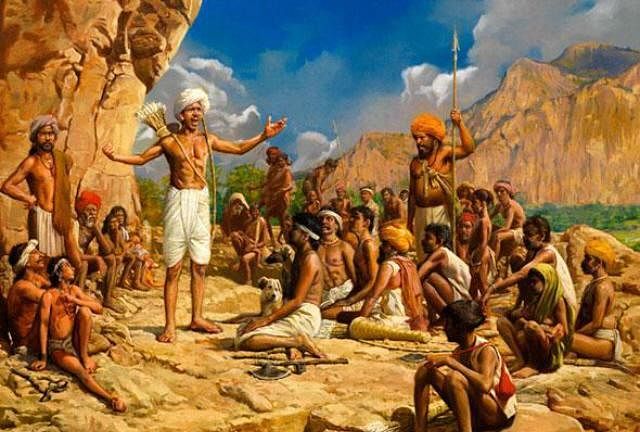 Tribal-Peasant Revolt
Tribal-Peasant Revolt
In pre-colonial India, people’s protests against the rulers and their officials were not uncommon—high land revenue demand by the State, corrupt practices and hard attitude of the officials being some of the instigating factors. However, the establishment of colonial rule and its policies had a much more annihilative effect on the Indians as a whole.
The major factors responsible for the people's resentment and uprisings against the Company rule are as follows:
- Colonial land revenue settlements, heavy burden of new taxes, eviction of peasants from their lands, and encroachments on tribal lands. Exploitation in rural society coupled with the growth of intermediary revenue collectors, tenants, and moneylenders.
- Expansion of revenue administration over tribal lands leading to the loss of tribal people's hold over agricultural and forest land.
- Promotion of British manufactured goods, heavy duties on Indian industries, especially export duties, leading to the devastation of Indian handloom and handicraft industries.
- Destruction of indigenous industry leading to migration of workers from industry to agriculture, increasing the pressure on land/agriculture.
The word 'civil' encompasses everything which is not related to defence/military.
- Under the Company rule, there were rapid changes in the economy, administration and land revenue system that went against the people.
- Several zamindars and poligars who had lost control over their land and its revenues due to the colonial rule, had personal scores to settle with the new rulers.
- The ego of traditional zamindars and poligars was hurt due to being sidelined in rank by government officials and a new class comprising of merchants and money-lender.
- The ruin of Indian handicraft industries due to colonial policies impoverished millions of artisans whose misery was further compounded by the disappearance of their traditional patrons and buyers—princes, chieftains, and zamindars.
- The priestly classes instigated hatred and rebellion against the alien rule, because the religious preachers, priests, pundits, maulvis, etc., had been dependent on the traditional landed and bureaucratic elite. The fall of zamindars and feudal lords directly affected the priestly class.
- The foreign character of the British rulers, who always remained alien to this land, and their contemptuous treatment of the native people hurt the pride of the latter.
Represented common conditions, though separated in time and place.
➢ Sanyasi Revolt (1763-1800)
- A group of sanyasis in Eastern India to fight the British yoke. They raided Company factories and the treasuries and fought the Company's forces.
- Sometimes referred to as the Fakir Rebellion.
- Majnum Shah (or Majnu Shah), Chirag Ali, Musa Shah, Bhawani Pathak, and Debi Chaudhurani were important leaders.
- Debi Chaudhurani's participation recognizes the women’s role in early resistances against the British.
- Anandamath, a semi-historical novel by Bankim Chandra Chattopadhyay, is based on the Sanyasi Revolt.
- Bankim Chandra also wrote a novel, Devi Chaudhurani.
➢ Revolt in Midnapore and Dhalbhum (1766-74)
- The English took hold of Midnapore in 1760.
- The zamindars of Dhalbhum, Manbhum, Raipur, Panchet, Jhatibuni, Karnagarh, and Bagri, living in the vast tract of Jungle Mahals of west and north-west Midnapore—were ultimately dispossessed of their zamindaries by 1800s.
- The important leaders of the uprisings were Damodar Singh and Jagannath Dhal.
➢ Revolt of Moamarias (1769-99)
- The revolt of the Moamarias in 1769 was a potent challenge to the authority of Ahom kings of Assam.
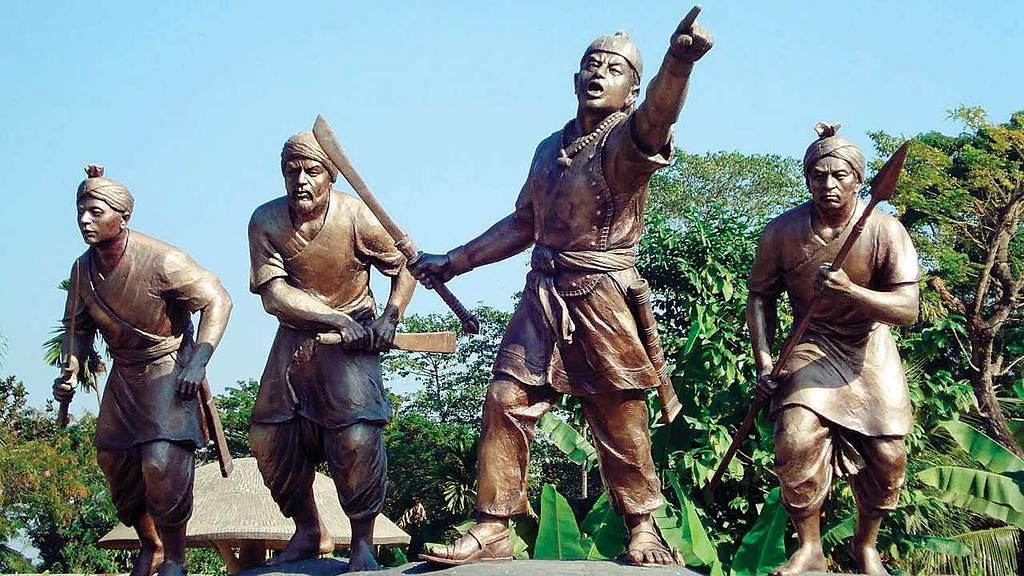 Revolt of Moamarias
Revolt of Moamarias - The Moamarias were low-caste peasants who followed the teachings of Aniruddhadeva (1553-1624).
- Their revolts weakened the Ahoms and opened the doors for others to attack the region, for instance, in 1792, the King of Darrang (Krishnanarayan), assisted by his band of burkandazes (the demobilised soldiers of the Muslim armies and zamindars) revolted. The Moamarias made Bhatiapar their headquarters. Rangpur (now in Bangladesh) and Jorhat were the most affected region.
➢ Civil Uprisings in Gorakhpur, Basti, and Bahraich (1781)
- Warren Hastings made a plan to earn money by involving English officers as izaradars (revenue farmers) in Awadh.
- Hannay secured the izara of Gorakhpur and Bahraich to the amount of 22 lakh rupees for one year. The zamindars and cultivators rose against the unbearable exactions in 1781.
➢ Revolt of Raja of Vizianagaram (1794)
- In 1758, a treaty was made between the English and Ananda Gajapati raju, the ruler of Vizianagaram, to jointly oust the French from the Northern Circars.
- The East India Company went on to demand a tribute of three lakh rupees from Vizayaramaraju, the Raja of Vizianagaram.
- This angered the raja as there were no dues to be paid to the Company supported by his subjects rose up in revolt.
➢ Revolt of Dhundia in Bednur (1799-1800)
- Dhundia Wagh, a local Maratha leader, who was converted to Islam by Tipu Sultan and put into jail.
- Dhundia organised a force which consisted of anti-British elements, and carved out a small territory for himself.
- A defeat by the English in August 1799 forced him to take refuge in Maratha region.
- In September 1800, he was killed while fighting against the British forces under Wellesley.
➢ Resistance of Kerala Varma Pazhassi Raja (1797; 1800-05)
- Kerala Varma Pazhassi Raja, popularly known as Kerala Simham (Lion of Kerala) or Pyche raja’, was the de facto head of Kottayam (Cotiote) in Malabar region.
- Kerala Varma fought against the British between 1793 and 1805. The English appointed Vira Varma, the uncle of Pazhassi Raja, as the Raja of Kottayam. The new raja, to meet the revenue target fixed by the Company, levied exorbitant rates of tax on the peasants.
- This led to a mass resistance by the peasants under the leadership of Pazhassi Raja in 1793. Pazhassi Raja fought bravely using guerilla warfare, and in 1797 a peace treaty was made in November 1805, the Kerala Simham died in a gun-fight at Mavila Todu near the present-day Kerala-Karnataka border.
➢ Civil Rebellion in Awadh (1799)
- Wazir Ali Khan, the fourth Nawab of Awadh, with the help of the British, had ascended the throne in September 1797.
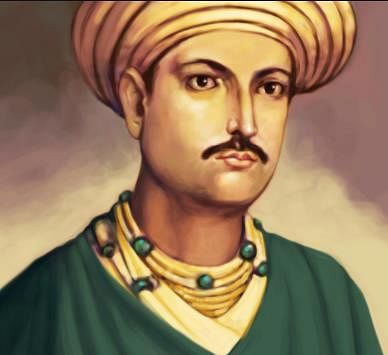 Wazir Ali Khan
Wazir Ali Khan
- In January 1799, he killed a British resident, George Frederik Cherry, who had invited him to lunch. Wazir Ali's guards killed two other Europeans and even attacked the Magistrate of Benares.
- The whole incident became famous as the Massacre of Benares. After surrender in December 1799, wazir ali was placed in confinement at Fort William, Calcutta.
➢ Uprisings in Ganjam and Gumsur (1800,1835-37)
- Strikara Bhanj, a zamindar of Gumsur in Ganjam district, refused to pay revenues in 1797. In 1800, he openly rebelled and defied the public authorities. Dhananjaya rebelled against the English but was forced to surrender in June 1815.
- Dhananjay Bhanj rose in rebellion for the second time when the British forces occupied Gumsur and Kolaida in November 1835.
- The revolt greatly reduced the government's authority. The struggle lasted till February 1837, when Doora Bisayi, a formidable leader, was arrested.
➢ Uprisings in Palamau (1800-02)
- In 1800, Bhukhan Singh, a Chero chief, rose in rebellion. Colonel Jones camped for two years in Palamau and Sarguja to suppress the rebellion.
➢ Poligars’ Revolt (1795-1805)
- The poligars (or palayakkarargal) of South India gave stiff resistance to the British between 1795 and 1805.
- The main centres of these strong uprisings were Tinneveli (or Thirunelveli), Ramanathapuram, Sivaganga, Sivagiri, Madurai, and North Arcot.
- The problem started in 1781, when the Nawab of Arcot gave the management and control of Tinneveli and the Carnatic Provinces to the East India Company.
- The first revolt of the poligars against the Company was basically over taxation but had a larger political dimension in that the English considered and treated the poligars as enemies.
- Kattabomman Nayakan, the poligar of Panjalankurichi, led the insurrection between 1795 and 1799. Company forces were defeated by Veerapandiya Kattabomman, a price was put on the latter’s head.
- This led to greater rebellion by the poligars. The second phase, started in February 1801 The fugitives led by Oomathurai, brother of Kattabomman, who fled to Sivaganga in Ramnad joined the rebellion of the ‘Marudus’ led by Marathu Pandian which was suppressed in October 1801.
- Between 1803 and 1805, the poligars of North Arcot rose in rebellion, when they were deprived of their right to collect the kaval fees. By February 1805, the rebels were suppressed.
➢ Uprising in Bhiwani (1809)
- In 1809, the Jats of Haryana broke into rebellion.
➢ Diwan Velu Thampi’s Revolt (1808-1809)
- The highhanded attitude of the Company compelled Prime Minister (or Dalawa) Velu Thampi to rise against the Company, assisted by the Nair troops.
- Velu Thampi addressed a gathering in Kundara, openly calling for taking up arms against the British to oust them from the native soil.
- This was later known as the Kundara Proclamation.
➢ Disturbances in Bundelkhand (1808-12)
- The vast province of Bundelkhand, conquered by the British during the Second Anglo-Maratha Wars (1803-05), was put within the Presidency of Bengal.
- The first major resistance came from Lakshaman Dawa, the killadar (fort commander) of Ajaygarh fort, Lakshman was permitted to retain the fort as a temporary arrangement for two years ending in 1808.
- The next resistance came from killadar of Kalanjar, Darya Singh, which was suppressed in January 1812.
- The most serious threat came from Gopal Singh. To put a stop to these disturbances, the British had to adopt a policy of binding down the hereditary chieftains of Bundelkhand by a series of contractual obligations—Ikarnamahs.
➢ Parlakimedi Outbreak (1813-34)
- When the Company acquired Ganjam, Narayan Deo was the raja of Parlakimedi whose resistance forced the British to dispatch an army under Colonel Peach.
➢ Kutch or Cutch Rebellion (1816-1832)
- There was a treaty between the British and Maharaja Bharamal II of Kutch in 1816, by which power was vested in the throne.
- The British interfered in the internal feuds of the Kutch and, in 1819, Raja Bharmal II raised Arab and African troops with the firm intention of removing the British from his territory.
- A British resident governed the areas as the de facto ruler with the help of a regency council.
➢ Rising at Bareilly (1816)
- The immediate cause of upsurge was the imposition of the police tax which aroused the burning indignation of the citizens.
- Several armed Muslims from Pilibhit, Shahjahanpur, and Rampur rose in rebellion for the defence of the faith and the Mufti.
➢ Upsurge in Hathras (1817)
- Due to progressively increasing high revenues, Dayaram constantly failed to pay arrears and even committed many acts of hostility by giving harbour to government fugitives. So, the Company with a large army attacked Hathras in February 1817.
➢ Paika Rebellion (1817)
- The Paiks of Odisha were the traditional landed militia (Toot soldiers’ literally) and enjoyed rent-free land tenures for their military service and policing functions on a hereditary basis.
- The English Company’s conquest of Odisha in 1803, and the dethronement of the Raja of Khurda.
- Bakshi Jagabandhu Bidyadhar had been the military chief of the forces of the Raja of Khurda.
- In 1814, Jagabandhu’s ancestral estate of Killa Rorang was taken over by the Company, reducing him to penury.
- The spark was lighted by the arrival of a body of Khonds from Gumsur into the Khurda territory in March 1817. With active support of Mukunda Deva, the last Raja of Khurda, and other zamindars of the region, Bakshi Jagabandhu Bidyadhar led a sundry army of Paikas forcing the East India Company forces to retreat for a time.
- The rebellion came to be known as the Paika Bidroh (rebellion). The Paik Rebellion succeeded in getting large remissions of arrears, reductions in assessments, suspension of the sale of the estates of defaulters at discretion, a new settlement on fixed tenures, and other adjuncts of liberal governance.
➢ Waghera Rising (1818-1820)
- Resentment against the alien rule coupled with the exactions of the Gaekwad of Baroda supported by the British government compelled the Waghera chiefs of Okha Mandal to take up arms.
- The Wagheras carried out inroads into British territory during 1818-19. A peace treaty was signed in November 1820.
➢ Ahom Revolt (1828)
- After the First Burma War (1824-26), instead of withdrawing, the British attempted to incorporate the Ahoms’ territories in the Company’s dominion.
- This sparked off a rebellion in 1828 under the leadership of Gomdhar Konwar, an Ahom prince, along with compatriots.
- Finally, the Company decided to follow a conciliatory policy and handed over Upper Assam.
➢ Surat Salt Agitations (1840s)
- A strong anti-British sentiment resulted in attacks by the local Surat population on the Europeans in 1844 over the issue of the government’s step to raise the salt duty from 50 paise to one rupee.
➢ Kolhapur and Savantvadi Revolts
- Facing the spectre of unemployment, the Gadkaris rose in revolt and occupied the Samangarh and Bhudargarh forts. Similarly, the simmering discontent caused a revolt in Savantvadi areas.
➢ Wahabi Movement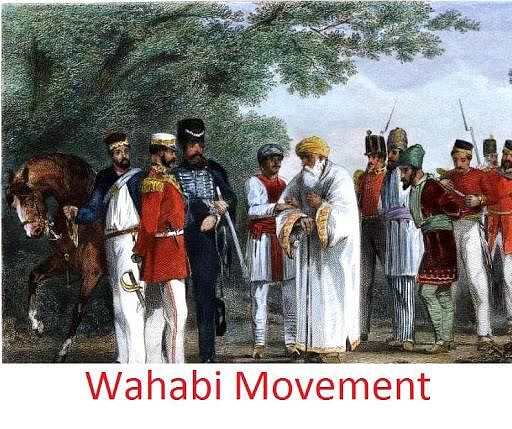
- The Wahabi Movement was essentially an Islamic revivalist movement founded by Syed Ahmed of Rai Bareilly who was inspired by the teachings of Abdul Wahab (1703-87) of Saudi Arabia and Shah Waliullah of Delhi.
- After the defeat of the Sikh ruler and incorporation of Punjab into the East India Company’s dominion in 1849, the English dominion in India became the sole target of the Wahabis’ attacks.
- Wahabis played an important role in spreading anti-British sentiments. A series of military operations by the British in the 1860s on the Wahabi base in Sithana and various court cases of sedition on the Wahabis weakened the Wahabi resistance.
➢ Kuka Movement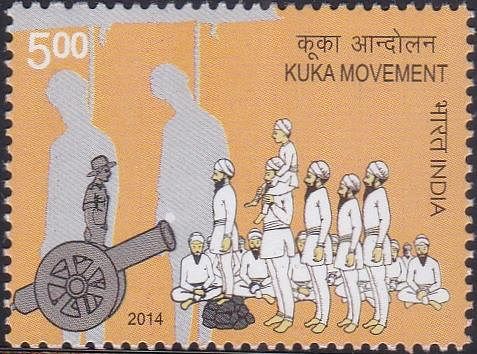
- The Kuka Movement was founded in 1840 by Bhagat Jawahar Mai (also called Sian Saheb) in western Punjab.
- Its basic tenets were abolition of caste and similar discriminations among Sikhs, discouraging the consumption of meat and alcohol and drugs, permission for intermarriages, widow remarriage, and encouraging women to step out of seclusion.
- On the political side, the Kukas wanted to remove the British and restore Sikh rule over Punjab; they advocated wearing hand-woven clothes and boycott of English laws and education and products. So, the concepts of Swadeshi and non-cooperation were propagated by the Kukas.
Peasant uprisings were protests against evictions, increase in rents of land, and the moneylenders’ greedy ways, and their aim was occupancy rights for peasants among other things. They were revolts and rebellions of the peasants themselves though led by local leaders in many cases.
The peasant movements in India till the outbreak of the Revolt of 1857 (and in its immediate aftermath) are given below:
➢ Narkelberia Uprising
- Mir Nithar Ali (1782-1831) or Titu Mir inspired the Muslim tenants in West Bengal to rise against landlords, mainly Hindu, who imposed a beard-tax on the Faraizis, and British indigo planters.
- Often considered the first armed peasant uprising against the British later merged into the Wahabi movement.
➢ The Pagal Panthis
- The Pagal Panthi, a semi-religious group mainly constituting the Hajong and Garo tribes of Mymensingh district (earlier in Bengal), was founded by Karam Shah.
- The tribal peasants organised themselves to fight the oppression of the zamindars. From 1825 to 1835, the Pagal Panthis refused to pay rent above a certain limit.
➢ Faraizi Revolt
- The Faraizis were the followers of a Muslim sect founded by Haji Shariat-Allah of Faridpur in Eastern Bengal. They advocated radical religious, social and political changes.
- Shariat-Allah son of Dadu Mian (1819-60) organised his followers with an aim to expel the English intruders from Bengal. The sect also supported the cause of the tenants against the zamindars.
➢ Moplah Uprisings
- Hike in revenue demand and reduction of field size, coupled with the oppression of officials, resulted in widespread peasant unrest among the Moplahs of Malabar. Twenty- two rebellions took place between 1836 and 1854.
➢ Peasants’ Role in the 1857 Revolt
- The peasants united with the local feudal leaders in many places to fight against foreign rule. After the revolt, the plight of the peasants worsened with the British Government’s decision to gain the support of the landed classes while ignoring the peasants.
Tribal movements under British rule were the most frequent, militant, and violent of all movements.
Different Causes for Mainland and North-Eastern Tribal Revolts:
- The mainland tribal rebellions were sparked off by the tribal lands or forests.
- The land settlements of the British affected the joint ownership tradition.
- As agriculture was extended in a settled form by the company government, the tribals lost their land, shifting cultivation in forests was curbed and this added to the tribal's problems.
- Exploitation by the police, traders, and money-lenders.
- Some general laws were also abhorred for their intrusive nature.
- The British entered the north-eastern areas much later than the non-frontier tribal areas.
- The frontier tribal revolts under the British continued for a longer time than the non-frontier tribal movements.
- Tribal identity or ethnic ties lay behind the solidarity shown by these groups.
- The resentment against the imposition of laws by the “foreign government" that was seen as an effort at destroying the tribal's traditional socioeconomic framework.
- Many uprisings were led by messiah-like figures who encouraged their people to revolt.
- The tribal uprisings were doomed from the beginning, given the outdated arms.
The frontier tribal areas were concentrated in central India, the west-central region, and the south.
➢ Pahariya's Rebellion
- The British expansion on their territory led to an uprising by the martial Pahariyas of the Raj Mahal Hills in 1778.
- The British were forced to usher in peace by declaring their territory as damnikol area.
➢ Chuar Uprising
- Famine enhanced land revenue demands and economic distress goaded the Chuar aboriginal tribesmen of the Jungle Mahal of Midnapore district and also of the Bankura district (in Bengal) to take up arms.
- The uprising lasted from 1766 to 1772 and then, again surfaced between 1795 and 1816.
- The Chuars were prominent in Manbhum and Barabhum, especially in the hills between Barabhum and Ghatsila.
➢ Kol Mutiny (1831)
- The Kols, along with other tribes, are inhabitants of Chhota Nagpur. This covered Ranchi, Singhbhum, Hazaribagh, Palamau, and the western parts of Manbhum.
- The trouble in 1831 started with large-scale transfers of land from Kol headmen to outsiders.
- The British judicial and revenue policies badly affected the traditional social conditions of the Kols. The Kols resented this and in 1831, under the leadership of Buddho Bhagat.
➢ Ho and Munda Uprisings (1820-1837)
- The Raja of Parahat organised his Ho tribals to revolt against the occupation of Singhbhum (now in Jharkhand).
- The revolt continued till 1827 when the Ho tribals were forced to submit, in 1831 organised a rebellion, joined by the Mundas of Chota nagpur, to protest against the newly introduced farming revenue policy and the entry of Bengalis into their region.
➢ The Santhal Rebellion (1855-56)
- The continued oppression of the Santhals, an agricultural people, who had fled to settle in the plains of the Rajmahal hills (Bihar) led to the Santhal rebellion against the zamindars.
- The rebellion turned into an anti-British movement. Under Sidhu and Kanhu, two brothers, the Santhals proclaimed an end to Company rule, and declared the area between Bhagalpur and Rajmahal as autonomous.
➢ Khond Uprisings (1837-1856)
- From 1837 to 1856, the Khonds of the hilly tracts extending from Odisha to the Srikakulam and Visakhapatnam districts of Andhra Pradesh revolted against Company rule.
➢ Koya Revolt
- The Koyas of the eastern Godavari track (modern Andhra), joined by Khonda Sara chiefs, rebelled in 1803, 1840, 1845, 1858, 1861, and 1862.
- Their complaints were oppression by police and moneylenders, new regulations, and denial of their customary rights over forest areas.
➢ Bhil Revolts
- The Bhils who lived in the Western Ghats controlled the mountain passes between the north and the Deccan.
- They revolted against Company rule in 1817-19, as they had to face famine, economic distress, and misgovernment.
➢ Koli Risings
- The Kolis living in the neighbourhood of Bhils rose up in rebellion against the Company’s rule in 1829, 1839 and again during 1844-48.
➢ Ramosi Risings
- The Ramosis, the hill tribes of the Western Ghats, had not reconciled to British rule and the British pattern of administration.
- They rose under Chittur Singh in 1822 and plundered the country around Satara.
➢ Khasi Uprising
- The Khasis, Garos, Khamptis, and the Singphos organized themselves under Tirath Singh to drive away the strangers from the Brahmaputra Valley.
- The uprising developed into a popular revolt against British rule in the area.
➢ Singphos Rebellion
- The rebellion of the Singphos in Assam in early 1830 was immediately quelled.
- Chief Nirang Phidu led an uprising in 1843, which involved an attack on the British garrison and the death of many soldiers.
- Some of the smaller movements were those of the Mishmis (in 1836), the Khampti rebellion in Assam between 1839 and 1842, the Lushai's revolt in 1842 and 1844.
- Discrimination in payment and promotions.
- Mistreatment of the sepoys by the British officials.
- Refusal of the government to pay foreign service allowance while fighting in remote regions.
- Religious objections of the high caste Hindu sepoys to Lord Canning’s General Service Enlistment Act (1856).
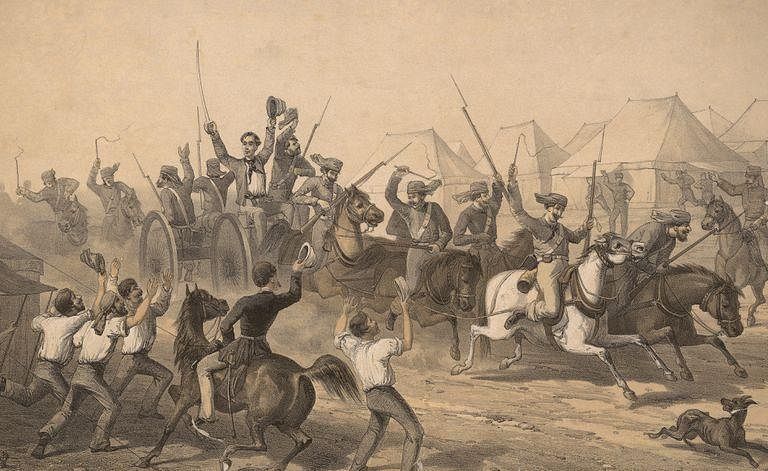 Sepoy Mutiny: Indian Revolt of 1857
Sepoy Mutiny: Indian Revolt of 1857
- In 1806, the replacement of the turban by a leather cockade caused a mutiny at Vellore.
- In 1844, there was a mutinous outbreak of the Bengal army sepoys for being sent to far away Sind.
- In 1824 the sepoys at Barrackpore rose in revolt when they were asked to go to Burma because crossing the sea would mean loss of caste.
- The mutiny of the sepoys in Bengal in 1764.
- The Vellore mutiny of 1806 when the sepoys protested against interference in their social and religious practices and raised a banner of revolt unfurling the flag of the ruler of Mysore.
- The mutiny of the sepoys of the 47th Native Infantry Unit in 1824.
- The revolt of the Grenadier Company in Assam in 1825.
- The mutiny of an Indian regiment at Sholapur in 1838.
- The mutinies of the 34th Native Infantry (N.I), the 22nd N.I., the 66th N.I., and the 37th N.I. in 1844, 1849, 1850, and 1852 respectively.
- These uprisings drew a large number of participants, localised and occurred at different times in different regions.
- They mostly arose out of local grievances.
- The leadership was semi-feudal in character, backward looking, traditional in outlook and their resistance did not offer alternatives to the existing social set-up.
- If many of these revolts seemed similar to one another in wanting to oust the alien rule, it was because they were protesting against conditions that were common to them.
- These rebellions were centuries-old in form and ideological/cultural content.
- Those who were not so uncooperative or obstinate were pacified through concessions by the authorities.
- The methods and arms used by the fighters in these uprisings were practically obsolete compared to the weapons and strategy—as well as deception and chicanery—employed by their opponents.
As you have gathered knowledge about minor events that led to the first war of independence. In the next EduRev document you will read about the major events and about 1857 war which is considered as first fight for Indian independence and also the first signs of unity of the princely states against the common enemy that is the English East India Company.
All the previous documents that you have read is to gather knowledge about the background events. In this EduRev document you will reading about the first war of independence which considered as the starting point of the unity between people across the country. You will read about what are the causes that led to this war and what is outcome of this and how company rule ended and crown rule started in our country.
- In 1757, after the Battle of Plassey, the British laid the first step towards getting power in northern India, And in 1857 took place the major "Revolt" which was a product of the character and policies of colonial rule after 1757, and after which noteworthy changes took place in the British policy of ruling over India.
- The cumulative effect of British expansionist policies, economic exploitation, and administrative innovations over the years had adversely affected the positions of all—rulers of Indian states, sepoys, zamindars, peasants, traders, artisans, pundits, maulvis, etc. The simmering discontent burst in the form of a violent storm in 1857 which shook the British empire in India to its very foundations.
- However, the period between 1757 and 1857 was not all peaceful and trouble-free, it saw a series of sporadic popular outbursts in the form of religiopolitical violence, tribal movements, peasant uprisings, and agrarian riots, and civil rebellions. Enhanced revenue demands—even in famine years - caused anger.

➢ Economic Causes
- The colonial policies of the East India Company destroyed the traditional economic fabric of Indian society.
- British rule also meant misery to the artisans and handicrafts people.
- The annexation of Indian states by the Company cut off their major source of patronage.
- The Indian trade and mercantile class were deliberately crippled by the British who imposed high tariff duties on Indian-made goods.
- At the same time, the import of British goods into India attracted low tariffs, thus encouraging their entry into India.
- Free Trade and refusal to impose protective duties against the machine-made goods from Britain, simply killed Indian manufacture.
- Zamindars, the traditional landed aristocracy, often saw their land rights forfeited with frequent use of a quo warranto by the administration.
Example- In Awadh, the storm center of the revolt, 21,000 taluqdars had their estates confiscated and suddenly found themselves without a source of income, "unable to work, ashamed to beg, condemned to penury". - The ruin of the Indian industry increased the pressure on agriculture and land.
➢ Political Causes
- The East India Company’s greedy policy of aggrandizement accompanied by broken pledges and promises resulted in contempt for the Company and loss of political prestige, besides causing suspicion in the minds of almost all the ruling princes in India, through policies as of 'Effective Control’, 'Subsidiary Alliance' and 'Doctrine of Lapse'.
- The collapse of rulers—the erstwhile aristocracy—also adversely affected those sections of the Indian society.
➢ Administrative Causes
- Rampant corruption in the Company’s administration, especially among the police, petty officials, and lower law courts, was a major cause of discontent.
➢ Socio-Religious Causes
- Racial overtones and a superiority complex characterized the British administrative attitude towards the native Indian population.
- The government’s decision to tax mosque and temple lands and making laws such as the Religious Disabilities Act, 1856.
➢ Influence of Outside Events
- The revolt of 1857 coincided with certain outside events in which the British suffered serious losses—the First Afghan War (1838-42), Punjab Wars (1845-49), and the Crimean Wars (1854-56).
➢ Discontent Among Sepoys
- The conditions of service in the Company's Army and cantonments increasingly came into conflict with the religious beliefs and prejudices of the sepoys.
- In 1856, Lord Canning's government passed the General Service Enlistment Act which decreed that all future recruits to the Bengal Army would have to give an undertaking to serve anywhere their services might be required by the government. This caused resentment.
- The immediate cause of the sepoys' dissatisfaction was the order that they would not be given the foreign service allowance (Bhatta) when serving in Sindh or in Punjab.
- History of revolts in the British Indian Army—in Bengal (1764), Vellore (1806), Barrackpore (1825), and during the Afghan Wars (1838-42).
➢ The Spark
- The reports about the mixing of bone dust in atta (flour) and the introduction of the Enfield rifle enhanced the sepoy's growing disaffection with the government.
- The greased wrapping paper of the cartridge of the new rifle had to be bitten off before loading and the grease was reportedly made of beef and pig fat.
➢ Starts at Meerut
- The revolt began at Meerut, 58 km from Delhi, on May 10, 1857, and then, gathering force rapidly, soon embraced a vast area from Punjab in the north and the Narmada in the south to Bihar in the east and Rajputana in the west.
- Sepoy of the 34th Native Infantry, Mangal Pande, went a step further and fired at the sergeant major of his unit at Barrackpore.
- On April 24, ninety men of the 3rd Native Cavalry refused to accept the greased cartridges.
- On May 9, eighty-five of them were dismissed, sentenced to 10 years imprisonment, and put in fetters.
- On May 10, they released their imprisoned comrades, killed their officers, and unfurled the banner of revolt.
➢ Choice of Bahadur Shah as Symbolic Head
- This spontaneous raising of the last Mughal king to the leadership of the country was a recognition of the fact that the long reign of the Mughal dynasty had become the traditional symbol of India’s political unity.
- The broad outlook of the rebels was not influenced by religious identity but by the perception of the British as the common enemy.
- The entire Bengal Army soon rose in a revolt which spread quickly. Awadh, Rohilkhand, the Doab, Bundelkhand, central India, large parts of Bihar, and East Punjab shook off British authority.
➢ Civilians Join
- The revolt of the sepoys was accompanied by a rebellion of the civil population, particularly in the north-western provinces and Awadh. The peasants and petty zamindars took advantage of the revolt to destroy the moneylender's account books and debt records.
➢ Storm Centres and Leaders of the Revolt
- At Delhi, the real command lay with a court of soldiers headed by General Bakht Khan Sir Hugh Wheeler, commanding the station, surrendered on June 27, 1857, and was killed on the same day.
- Nana Saheb expelled the English from Kanpur, proclaimed himself the Peshwa, acknowledged Bahadur Shah as the Emperor of India, and declared himself to be his governor.
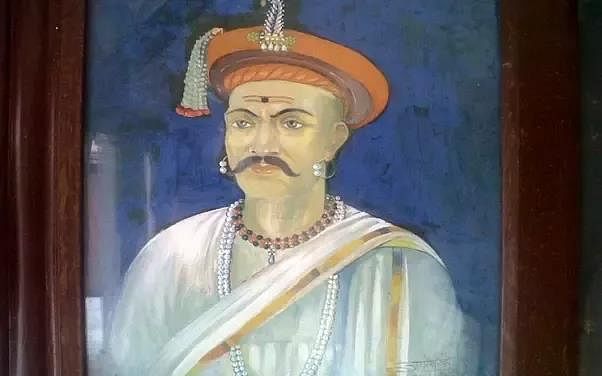 Nana Saheb
Nana Saheb - Begum Hazrat Mahal took over the reins at Lucknow where the rebellion broke out on June 4, 1857, and popular sympathy was overwhelmingly in favor of the deposed nawab. In March 1858, the city was finally recovered by the British.
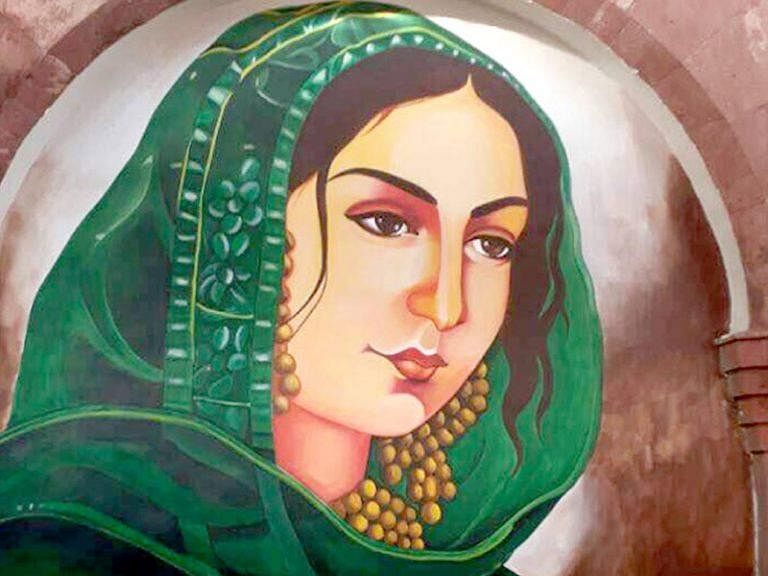 Begum Hazrat Mahal
Begum Hazrat Mahal - At Bareilly, Khan Bahadur, a descendant of the former ruler of Rohilkhand, not enthusiastic about the pension being granted by the British, organized an army of 40,000 soldiers and offered stiff resistance to the British.
- In Bihar, the revolt was led by Kunwar Singh, the zamindar of Jagdishpur. He unhesitatingly joined the sepoys when they reached Arrah from Dinapore (Danapur).
- Maulvi Ahmadullah of Faizabad fought a stiff battle against the British troops. He emerged as one of the revolt’s acknowledged leaders once it broke out in Awadh in May 1857.
- Rani Laxmibai, who assumed the leadership of the sepoys at Jhansi. The Rani of Jhansi and Tantia Tope marched towards Gwalior. Gwalior was recaptured by the English in June 1858.
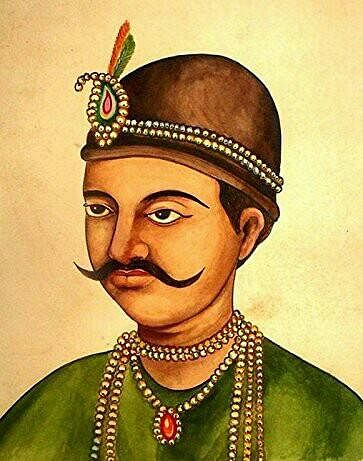 Tantia Tope
Tantia Tope - Shah Mal, a local villager in Pargana Baraut (Baghpat, Uttar Pradesh) organized the headmen and peasants of 84 villages (referred to as chaurasia desh), marching at night from village to village, urging people to rebel against the British hegemony. Shah Mal's body was cut into pieces and his head displayed on July 21, 1857.
 Shah Mal
Shah Mal
- The revolt was finally suppressed. The British captured Delhi on September 20, 1857, thus the great House of Mughals was finally and completely extinguished.
- Sir Colin Campbell occupied Kanpur on December 6, 1857.
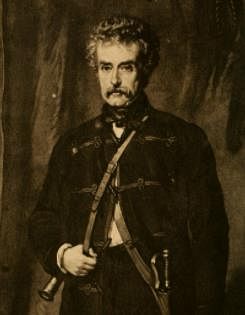 Sir Colin Campbell
Sir Colin Campbell - Tantia Tope was captured while asleep in April 1859 and put to death. The Rani of Jhansi had died on the battlefield earlier in June 1858. Jhansi was recaptured by Sir Hugh Rose.
➢ The British Resistance
- Delhi - Lieutenant Willoughby, John Nicholson, Lieutenant Hudson
- Kanpur - Sir Hugh Wheeler, Sir Colin Campbell
- Lucknow - Henry Lawrence, Brigadier Inglis, Henry Havelock, James Outram, Sir Colin Campbell
- Jhansi - Sir Hugh Rose
- Benaras - Colonel James Neill
➢ Why the Revolt Failed?
- All-India participation was absent.
- The limited territorial spread was one factor, there was no all - India veneer about the revolt.
➢ All classes did not join
- Big zamindars acted as "break-waters to storm", even Awadh taluqdars backed off once promises of land restitution were spelled out.
- Educated Indians viewed this revolt as backward-looking, supportive of the feudal order, and as a reaction of traditional conservative forces to modernity.
- Rulers who did not participate included the Sindhia of Gwalior, the Holkar of Indore, the rulers of Patiala, Sindh and other Sikh chieftains, and the Maharaja of Kashmir.
➢ Poor Arms and Equipment
- The Indian soldiers were poorly equipped materially, fighting generally with swords and spears and very few guns and muskets.
➢ Uncoordinated and Poorly Organised
- The revolt was poorly organized with no coordination or central leadership.
- The principal rebel leaders—Nana Saheb, Tantia Tope, Kunwar Singh, Laxmibai.
- The mutineers lacked a clear understanding of the colonial rule, nor did they have a forward-looking program, a coherent ideology, a political perspective, or a societal alternative.
➢ Hindu-Muslim Unity Factor
- According to Maulana Azad, “Two facts stand out clearly in the midst of the tangled story of the Rising of 1857. The first is the remarkable sense of unity among the Hindus and the Muslims of India in this period. The other is the deep loyalty which the people felt for the Mughal Crown.”
- Thus, the events of 1857 demonstrated that the people and politics of India were not basically communal or sectarian before 1858.
- It was a mere 'Sepoy Mutiny’ to some British historians—"a wholly unpatriotic and selfish Sepoy Mutiny with no native leadership and no popular support”, said Sir John Seeley.
- Dr. K. Datta considers the revolt of 1857 to have been “in the main a military outbreak, which was taken advantage of by certain discontented princes and landlords, whose interests had been affected by the new political order”. It was "never all-Indian in character, but was localized, restricted and poorly organized". Further, says Datta, the movement was marked by the absence of cohesion and unity of purpose among the various sections of the rebels.
- A "planned war of national independence", by V.D. Savarkar in his book, The Indian War of Independence, 1857. Savarkar called the revolt the first war of Indian independence.
- Dr. S.N. Sen in his Eighteen Fifty- Seven considers the revolt as having begun as a fight for religion but ending as a war of independence.
- Dr. R.C. Majumdar, however, considers it as neither the first, nor national, nor a war of independence as large parts of the country remained unaffected According to some Marxist historians, the 1857 revolt was "the struggle of the soldier-peasant democratic combine against foreign as well as feudal bondage".
- Jawaharlal Nehru considered the Revolt of 1857 as essentially a feudal uprising though there were some nationalistic elements in it (Discovery of India).
- M.N. Roy felt the Revolt was a last-ditch stand of feudalism against commercial capitalism.

- R.P. Dutt also saw the significance of the Revolt of the peasantry against foreign domination It had seeds of nationalism and anti-imperialism but the concept of common nationality and nationhood was not inherent to the revolt of 1857.
- S.B. Chaudhuri observes, the revolt was "the first combined attempt of many classes of people to challenge a foreign power. This is a real if remote, approach to the freedom movement of India of a later age".
➢ Consequences
- The revolt of 1857 marks a turning point in the history of India. It led to far-reaching changes in the system of administration and the policies of the British government.
- The British Parliament, on August 2, 1858, passed an Act for the Better Government of India. The Act declared Queen Victoria as the sovereign of British India and provided for the appointment of a Secretary of State for India
- The assumption of the Government of India by the sovereign of Great Britain was announced by Lord Canning at a durbar at Allahabad in the 'Queen’s Proclamation’ issued on November 1, 1858.
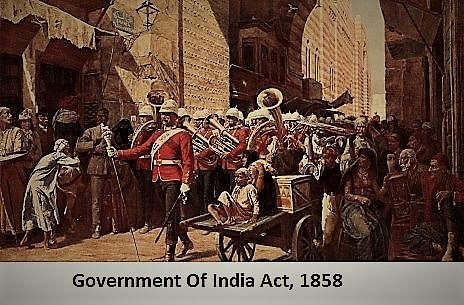
- The proclamation also promised equal and impartial protection under the law to all Indians, besides equal opportunities in government services irrespective of race or creed. It was also promised that old Indian rights, customs, and practices would be given due regard while framing and administering the law.
- The Army Amalgamation Scheme, 1861 moved the Company’s European troops to the services of the Crown.
- 'Conservative brand of liberalism’, as it was called by Thomas Metcalf—had the solid support of the conservative and aristocratic classes of England who espoused the complete non-interference in the traditional structure of Indian society. The Indian economy was fully exploited without fear.
- In accordance with the Queen’s Proclamation of 1858, the Indian Civil Service Act of 1861 was passed, which was to give an impression that under the Queen all were equal, irrespective of race or creed.
- Racial hatred and suspicion between the Indians and English was probably the worst legacy of the revolt.
- The complete structure of the Indian government was remodeled and based on the notion of a master race justifying the philosophy of the ‘Whiteman’s burden’.
➢ Significance of the Revolt
- For the British, the Revolt of 1857 proved useful in that it showed up the glaring shortcomings in the Company’s administration and its army, which they rectified promptly. These defects would never have been revealed to the world if the Revolt had not happened.
- For the Indians, the 1857 Revolt had a major influence on the course of the struggle for freedom. It brought out in the open grievances of people and the sepoys, which were seen to be genuine.
- However, it was also obvious that the primitive arms that the Indians possessed were no match for the advanced weapons of the British. Furthermore, the senseless atrocities committed by both sides shocked the Indian intellectuals who were increasingly convinced that violence was to be eschewed in any struggle for freedom.
- The educated middle class, which was a growing section, did not believe in violence and preferred an orderly approach. But the Revolt of 1857 did establish local traditions of resistance to British rule which were to be of help in the course of the national struggle for freedom.
- The revolt was localised and not countrywide.
- The revolt began prematurely.
- The superiority of the English was in weapons, post and telegraph systems and in the Navy.
- Support of the native rulers to the English and lack of it to Indian mutineers.
- Lack of unity of purpose and organisation.
- Lack of leadership.
- Personal jealousies amongst the mutineers.
- Bahadur Shah, a broken reed.
- Noble efforts of Lord Canning for the pacification of the Mutiny.
- Queen Victoria’s Proclamation of November.
- Year: Events
- 1789, 1794-95: Revolts in Taman District (Chhotanagpur).
- 1807-1808: Chhotanagpur Tribal Revolt.
- 1820, 1832: Munda Revolts.
- 1858-59: Land seizers.
- 1869-80: Sardars movements encouraged Tribals to make claims to Government land survey. District-wise survey of Tribal lands, the arrival of Catholic and Lutheran Mission.
- 1889: Sardars (Munda) leaders agitations against the British.
- 1890-91: Birsa Munda Movements in Ranchi.
- 1920-21: Tana Bhagat Movement in Chhotanagpur.
- 1855: The Revolts of the Santhals Paragnas Districts.
- 1871-72: Agrarian Protests, a survey of lands and settlement.
- 1874-75: Famine religious-political movement led by Bhagirath.
- 1880-81: Religious movement inspired by Dubia Gosain.
- 1884-86: Review of Policy towards moneylenders by the Govt.
- 1862, 1879: Andhra Agency Koya Pradesh Tribal Revolts against Muttdars (Petty Tribal Landlords) and their Supporters (British).
- 1922: Rampa rebellion of Koyas under Allurli Sreerama Raju against British).
- 1941: The Gond and Kilam agitations against the British Government in Adabad district of Andhra Pradesh led by Bhimu.
- 1824-26: First Burmese War against the Burmese occupation of Assam in which the British first espoused Assam’s case and after defeating Burmese usurped Assam.
- 1835: Raja of the Jaintia Hills was deposed by the British owing to his anti-British activities.
- The Company’s rule ceased in India and henceforward India was to be governed by the British Crown and the British Parliament.
- In relation to the Indian states and the rest of India, the GovernorGeneral was to be called the Viceroy in future.
- All the treaties and agreements which the East India Company had hitherto entered with the Indian states were to be completely accepted by the Crown.
- The territories of the Indian Princes were not to be annexed by the hated ‘Doctrine of Lapse’ which was not to be applied henceforward. The Indian Princes were allowed to adopt sons in future.
- Another very important constitutional effect of the Revolt of 1857 was the passing of the Indian Councils Act of the year 1861.
- According to this Act, a system of administration called decentralization was adopted and the Indians were now associated with the administration of India in the matter of legislation as well as administration
- The European element in the army was strengthened and the European officers became the permanent features of the Indian Army.
- The artillery was taken entirely from the Indians.
- This was done according to the recommendations of the Army Commission which was appointed in 1859.
- The Company’s regiments were disbanded and now all the army men became directly the servants of the Crown of England.
- The policy of territorial expansion was slackened and the states guaranteed the integrity of their territories.
- The Mughal Imperial dynasty came to an end and the last Mughal emperor, Bahadur Shah II, was sent as a State prisoner to Burma.
- Freedom of religion and equal treatment was guaranteed.
- More association of Indians in the administration of the country.
- In 1857, Universities were established at Calcutta and Madras.
- The Bengal Rent Act of 1859 gave rights of occupancy to all cultivators who possessed certain fields for more than 12 years and forbade the rents from being raised except on definite grounds specified in the Act itself.
- The Penal Code on which Macaulay’s Commission had begun to work so many years before, became the law of the land.
- The Company’s Sadar Courts and the Crown’s Supreme Court were amalgamated in the High Courts which were now established at each Presidency headquarters.
- The Khasis, a primitive tribe residing in the hilly region between Jaintia and Garo hills in Assam, revolted against the authority of the British. The first contact between the British and the Khasis was established in 1765 when the British were granted Diwani and acquired control over Sylhet.
- After the Burmese War the British, under Scott, conceived the idea of linking this territory with Sylhet by road with a view to cut short the military route. The idea of the construction of roads did not find favour with the Khasis chiefs. The chiefs of various Khasi hills states united under the leadership of Tirhut Singh. On 5th May 1892 a party of Khasis raided Nunklow and massacred the Europeans. The British tried to crush the revolt through the use of force and repression. After four years Tirhut Singh surrendered. Similarly, revolts were organised by the chiefs of Kapaschor Alps in 1835, the Nagar in 1849 and Kukis between 1826-1849.
- The Kolarian tribes were ruled by petty chieftains. They strongly resented the occupation of Singhbhum by the British. Raja of Porhat reached an agreement with the British and agreed to pay an annual tribute to them, the Hos (his subject) could not reconcile with this and continued to harass the English. The Hos submitted to the English authority in 1827. But they again joined in the Munda revolution.
- The Mundas revolted against the British in 1831. This revolt was a protest against the new policy of farming revenue to outsiders and the introduction of judicial and revenue regulations of the Bengal Government into the country. The Munda Revolt was so strong that even the military forces found it difficult to keep it under control. It was only after the British restored to massive military operations that the revolt was suppressed in March 1832.
- In the second half of the nineteenth century, the Mundas under the leadership of Birsa revolted against the British. They wanted to replace the British government with Munda self-government. The British succeeded in arresting Birsa in February 1900 and put him in prison where he died of cholera. Another Munda leader Gaya Mund was shot dead. Thus the English suppressed the Munda revolt with firmness.
- The Santhals organised a revolt in 1855-56. This revolt was organised against the oppressions of the Mahajan's and traders from Bengal and Upper India who lent money to the Santhals and charged them excessive rates of interest. At the initial stages, the revolt was primarily economic in nature and there was no anti-British feeling. They turned against the government when they found that it was trying to side with the oppressors without bothering to remedy their grievances. In June 1855 about ten thousand Santhals under the leadership of Sidhu and Kanhu, two brothers, revolted. They destroyed the postal and railway communication between Bhagalpur and Rajmahal. The Santhals also proclaimed the end of the Company’s rule and set up their own regime. It was only in 1856 the British succeeded in capturing the leaders of the Santhals. The British committed inhuman barbarities against the Santhals and completely crushed them.
- Realising that they could not achieve their objective against the English through violent methods the Santhals launched another social movement known as Karwar Movement. This movement aimed at reviving the golden age of the Santhals. In the closing years of the nineteenth century, the Karwar Movement got split into three parts viz. Sapha Hor, Samra and Babaji. The members of Sapha Hor sect played a prominent role in the Indian freedom movement in the 1930s.
- In 1879-80 the Rampas, a forest tribe, rose in revolt against the oppressive and injudicious action of the Tahsildar of Bhadrachalam. The British sent forces from Madras which suppressed the insurrection.
THE DRAIN OF WEALTH
- India had emerged as industrial workshop of the world before the advent of the Europeans. Despite her predominantly agricultural economy, a variety of other industries also flourished in India.
- Even the Industrial Commission (1918) observed, “At a time when the west of Europe, the birth place of modern industrial system, was inhabited by uncivilized tribes, India was famous for the wealth of her rulers and the high artistic skill of her craftsmen.
And even at a much later period, when the merchant adventures from the West made their first appearance in India, the industrial development of this country was, at any rate, not inferior to that of the more advanced European nations. - The British manufacturers put pressure on their government to restrict and prohibit the sale of Indian goods in England. By 1720 laws had been passed forbidding the wear or use of printed or dyed cotton cloth.
- Before the acquisition of Diwani of Bengal in 1765, the East India Company had begun to exercise considerable political influence in Bengal, Bihar and Orissa.
- The Company had obtained a farman from Mughal emperor Farrukh Siyar by which the company got the exemption from payment of transit duties on the inland movement of goods.
 Farrukh Siyar
Farrukh Siyar - The servants of the Company began to sell dastaks or permits, certifying their ownership of goods belonging to any party to pass duty-free.
- The Indian merchants freely purchased these dastaks to escape payment of duties to the State.
- The foreign trade of Bengal which, at that time was the richest part of India, became the monopoly of the Company, while internal trade in more important commodities like raw cotton was monopolized by superior servants of the company in their personal capacity.
- Whereas the aggregate duty on cotton piece-goods manufactured in India worked out in 1813 at 17 per cent ad valorem, the duty on the imported cloth fixed under the Charter Act of 1813 was only 2.5 per cent ad valorem.
- The British historian Wilson remarked, it was stated in evidence (before the Select Committee in 1813) that the cotton and silk goods of India could be sold for a profit in British market at a price from 50 per cent lower than those fabricated in England. It consequently became necessary to protect the latter by duties of 70 to 80 per cent on their value or by positive prohibition.
- From 1765 to 1770, the Company sent out in the form of goods nearly four million pounds or about 33 per cent of the net revenue of Bengal.
- Lord Ellenborough admitted in 1840 that India was “required to transmit annually to this country (Britain), without any return except in the small value of military stores, a sum amounting to between two and three million sterling.”
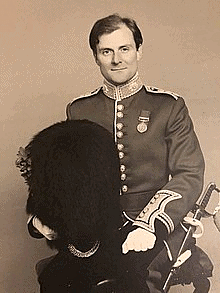 Lord Ellenborough
Lord Ellenborough - The Act of 1833 threw open the door to expansion of trade and investment of British capital in India. But though upto the middle of 19th century British citizens were in possession of plantations, shares in commercial and banking enterprises and rupee loans of the Government of India, the actual flow of British capital into India till the Revolt of 1857 remained very small.
- The private investor was hesitant and was not willing to risk his funds in an unfamiliar land without assurance about the safety of invested capital and the state guarantee of reasonable returns on investment.
RAILWAYS
- Several schemes of construction of railway in India were put forward in 1845, and in 1848 two companies, namely, the East India Railway Company and the Great India Peninsular Company, were given guarantee of interest of 5 per cent per annum on capital invested by them in the railway construction in India. But it was not till 1853 that the first railway line in India was opened to traffic.
Facts To Be Remembered
|
- The earliest suggestion to build a railway in India was made in Madras in 1831. But the wagons of this railway were to be drawn by horses. Construction of steam-drive railways in India was first proposed in 1834 in England.
FACTORY
- A beginning in the establishment of factory industries in India was made in the middle of the 19th century. The first cotton mill was started at Broach in the Bombay Presidency in 1853, and the first jute mill was established by George Aukland at Rishra in Bengal in 1855.
- The construction of East India Railway which passed through the Raniganj coal-fields led to the development of coal-mining.
- The iron and steel industry may be said to have really common into existence with the establishment of Tata Iron and Steel Company in 1907. The company started working in 1911, while steel was first produced in 1913.
Protection of Indian Industries
- The ‘Fiscal Autonomy Convention’ paved the way to the adoption of the policy of ‘protection’ of Indian Industries in place of free trade that had been the rule earlier.
- A fiscal commission under the presidentship of Sir Ibrahim Rahimatullah was appointed in October, 1921.
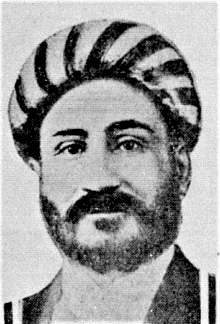 Sir Ibrahim Rahimatoola
Sir Ibrahim Rahimatoola - The commission recommended the adoption of the scheme of ‘discriminating protection’ under which protection was to be granted after proper enquiry into each individual case to those industries which applied for it and which satisfied certain minimum conditions laid down by the commission.
- The Government of India accepted these recommendations and protection was granted, in the inter-war period, to iron and steel, cotton textiles, paper, matches, sugar and heavy chemical industries.
BANKING
- Banking institutions modelled on European lines were first established in Bengal by the European merchants to finance European trade in 1870’s.
- The General Bank was started in 1786; the Bengal Bank was in existence in 1784 but when it was first established is not known; Hindustan Bank was the earliest among them in the field.
- The first Indian enterprize in the field of banking based on the joint stock limited liability principle was the Oudh Commercial Bank started in 1881.
- The beginning of the modern Indian joint-stock banking may, therefore, be traded back to the establishment of the Punjab National Bank in 1894 and the People’s Bank in 1901, both started by Lala Harkishan Lal Gauba.
- The Indian joint-stock banks made rapid progress after the establishment of the Reserve Bank of India in 1935.
Facts To Be Remembered
|
Facts To Be Remembered
|
According to historians, at the beginning of the eighteenth century, India had some 23 percent of the world economy. This share came down to some 3 percent when India got independence.
A detailed survey of the economic impact of British rule follows.
- Cheap and machine-made imports flooded the Indian market after the Charter Act of 1813 allowing one-way free trade for the British citizens.
- Tariffs of nearly 80 percent were imposed on Indian textiles so that Indian cloth could no longer be cheap.
- The loss of traditional livelihood was not accompanied by a process of industrialization in India
- The feature of deindustrialization was the decline of many cities and a process of realization of India
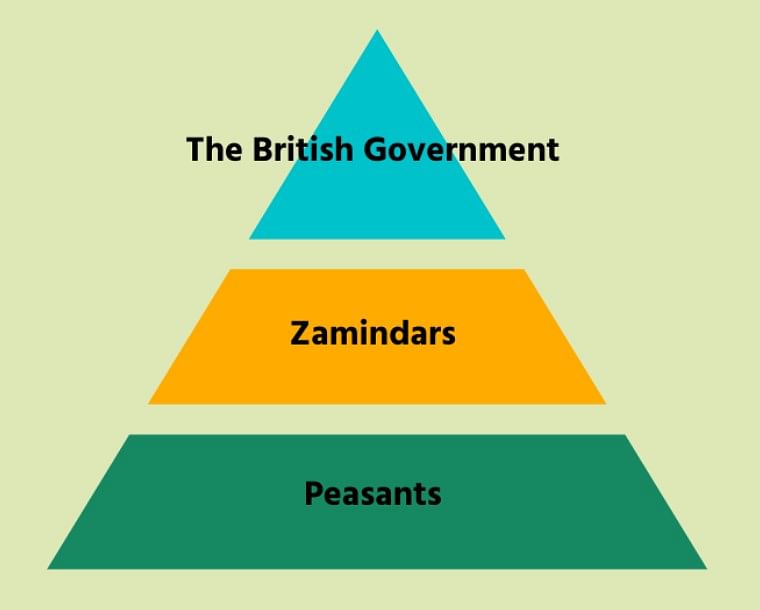
- Transferability of land was one feature of the new settlement which caused great insecurity to the tenants who lost all their traditional rights inland.
- The peasant turned out to be the ultimate sufferer under the triple burden of the Government, zamindar, and moneylenders.
- The new zamindars, with increased powers but with little or no avenues for new investments, resorted to land grabbing and sub-infeudation. An increase in the number of intermediaries to be paid gave rise to absentee landlordism and increased the burden on the peasant.
- The cultivator had neither the means nor any incentive to invest in agriculture.
- Regular recurrence of famines became a common feature of daily existence in India.
 Starving Indians beg for food at a British Army Post in 1897
Starving Indians beg for food at a British Army Post in 1897
- Commercial crops like cotton, jute, groundnut, oilseeds, sugarcane, tobacco, etc., were more remunerative than food grains. Again, the cultivation of crops like condiments, spices, fruits, and vegetables could cater to a wider market.
- The commercialization trend reached the highest level of development in the plantation sector, i.e., in tea, coffee, rubber, indigo, etc., which was mostly owned by Europeans and the produce was for sale in a wider market.
- Indian industry was steadily destroyed. The destruction of the textile competition of India is a glaring example of the deindustrialization of India.
- A thriving shipbuilding industry was crushed. Surat and Malabar on the western coast and Bengal and Masulipatnam on the eastern coast were known for their shipbuilding industries.
- Indian traders, moneylenders, and bankers had amassed some wealth as junior partners of English merchant capitalists in India. Their role fitted in the British scheme of colonial exploitation. The Indian moneylender provided loans to hardpressed agriculturists and thus facilitated the state collection of revenue.
- The first cotton textile mill was set up in 1853 in Bombay by Cowasjee Nanabhoy and the first jute mill came up in 1855 in Rishra (Bengal). The industrial development was characterized by a lopsided pattern—core and heavy industries and power generation were neglected and some regions were favored more than the others—causing regional disparities
- Dadabhai Naoroji, the 'Grand Old Man of India’, who after a brilliant analysis of the colonial economy put forward the theory of economic drain in Poverty and un-British Rule in India.
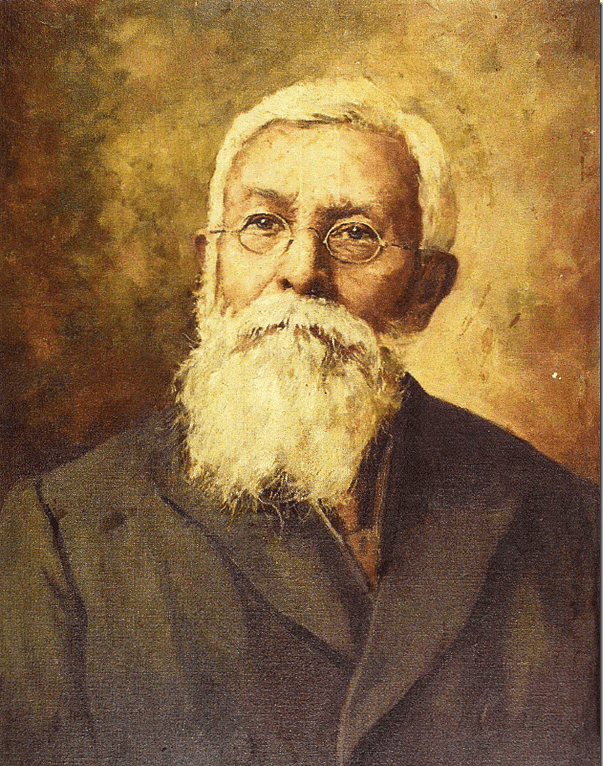 Dadabhai Naoroji: Grand Old Man of India
Dadabhai Naoroji: Grand Old Man of India
- The essence of nineteenth-century colonialism, they said, lay in the transformation of India into a supplier of foodstuffs and raw materials to the metropolis, a market for metropolitan manufacturers, and a field for the investment of British capital.
- British Policies Making India Poor, The problem of poverty was seen as a problem of raising the productive capacity and energy of the people or as a problem of national development, thus making poverty a national issue.
- Growth of Trade and Railways to Help Britain, The development of railways, they argued, was not coordinated with India's industrial needs and it ushered in a commercial rather than an industrial revolution. The net effect of the railways was to enable foreign goods to outsell indigenous products.
- One-Way Free Trade and Tariff Policy, The nationalists claimed that one-way free trade was ruining the Indian handicrafts industry, exposing it to premature, unequal, and unfair competition
- Effect of Economic Drain, According to nationalist estimates, the economic drain at that time was—
i. more than the total land revenue, or
ii. half the total government revenue, or
iii. third of the total savings
The nationalist agitation on economic issues served to undermine the ideological hegemony of alien rulers over Indian minds that the foreign rule was in the interest of Indians, thus exposing the myth of its moral foundations.
- The Period of Merchant Capital (Mercantilism), often described as the Period of Monopoly Trade and Direct Appropriation (or the Period of East India Company's Domination, 1757-1813), was based on two basic objectives—
(i) to acquire a monopoly of trade with India, against other English or European merchants or trading companies as well as against the Indian merchants;
(ii) to directly appropriate or take over governmental revenues through control over State power. - The only changes made were:
(i) in military organization and technology which native rulers were also introducing in their armed forces, and
(ii) in administration at the top of the structure of revenue collection so that it could become more efficient and smooth. - In this phase, there was a large-scale drain of wealth from India which constituted 2-3 percent of Britain's national income at the time.
- Owing to its mode of exploitation being trade, this stage is also termed as Colonialism of Free Trade. In this phase the following dominant features were visible:
- India's colonial economy was integrated with the British and world capitalist economy.
- Free entry was also granted to the British capitalists to develop tea, coffee, and indigo plantations, trade, transport, mining, and modern industries in India.
- The Permanent Settlement and the Ryotwari system in agriculture were introduced to transform the traditional agrarian structure into a capitalist one.
- The administration was made more comprehensive and included villages and outlying areas of the country.
- Personal law was largely left untouched since it did not affect the colonial transformation of the economy.
- Modern education was introduced to provide cheap manpower to the vastly expanded administration. It was also aimed at transforming India's society and culture for two reasons:
(a) create an overall atmosphere of change and development and,
(b) give birth to a culture of loyalty to the rulers. - The taxation and the burden on peasants rose sharply due to economic transformation and costly administration (civil as well as military).
- India absorbed 10 to 12 percent of British exports and nearly 20 percent of Britain’s textile exports.
- The Indian army was used for British expansion of colonialism in Asia and Africa.
- The third stage is often described as the Era of Foreign Investments and International Competition for Colonies. These changes were as follows.
- Britain’s industrial supremacy was challenged by several countries of Europe, the United States, and Japan.
- Asa result of the application of scientific knowledge to the industry, the pace of industrialization increased sharply.
- The British thus tried to justify their rule over Indians for centuries to come—all in the name of civilizing a barbaric people—“the White Man’s burden ".
PERMANENT SETTLEMENT OF LAND REVENUE OF BENGAL, 1793
- The settlement was made with the zamindars who were given proprietary rights over land with the condition that in case of a defalcation, a part of their land could be disposed of by the State to realise its dues.
- The State being relieved of all ownership rights, it could not claim any feudal dues such as the succession fee.
- The rates fixed with the zamindars were double the rates that obtained in 1765, on the plea that the permanent settlement would not entitle the State to any share in the future increase of production and prosperity.
- All judicial powers were taken away from the zamindars.
- They were made free in their relations with the ryots on the condition that they would give them pattas. If a zamindar violated a patta given to his ryot, the latter had the right to go to a court of law against him.
- The permanent system thus introduced had its merits as well as demerits. Among the merits one nay count:
- That the system introduced by Cornwallis was no hasty measure. The matter had been discussed in the time of Hastings; it had been discussed among the Directors and the Parliament. Pitt, the Prime Minister, Dundas the President of the Board of Control and many other statesmen of the time gave their blessings to it.
- As a result of this system the income of the State was considerably increased, as the rates fixed were double the rates that obtained in 1765.
- Yet the expenditure involved in periodical settlements, and on the army of officials constantly kept busy in the revenue matters, was now considerably cut down.
- The Company officers could now sit calmly in contentment, for cultivation or no cultivation the tax once fixed had to be paid and the Company was sure of its annual income, and of the time it would accrue and be realised.
- The Company in India was short in supply of experienced and trained officers. The permanent settlement relieved a large number of them to be available for other duties, and the Company could now give serious attention to the administrative reforms in the country.
- The zamindars, whether they, had any locus standi or not, were at the time the only people who counted in the society. The ryots had no voice, and an organised class of intellectuals had yet to take its birth. If the zamindars were mollified the whole people were calm, and the British could hope for peace to reign the whole length and breadth of the country. But if they were dissatisfied, they could arouse the common man, and make it difficult for the British to rule. They had developed a position which just could not be ignored. By making a settlement with them on permanent lines the British created in the country a class of people who for their very existence depended on them and therefore formed a loyal section of the society which could stand by them through thick and thin.
- Prior to the Permanent Settlement there was no stability in the agricultural profession. Already in 1772 there had been a lot of dislocation when land was farmed out for five years to the highest bidders and many hereditary zamindars were sent adrift into the streets. Thereafter, yearly settlements left everybody guessing as to what would come next. Nobody was sure of his future and therefore there was discontentment, disaffection and lack of concentration on the job. These evils were now removed.
- Periodical settlements dampened the spirit of reforms. For the moment an increase in production was shown, it would come to the notice of the appraising officials and in the next settlement a major part of it would be mopped up. The zamindars the farmers and ryots everybody was afraid of applying his mind to the land. Now when the rates were permanently fixed, the increase in production was expected to remain with those who worked. It gave them inducement to work and to invest in the improvement of land.
- The State interference into the private lives of the zamindars at times such as of new successions when a succession fee would have to be paid was stopped.
- If the State could not participate in the increasing prosperity of those who worked hard on the land for the State rates were fixed once for all it could benefit indirectly through entertainment taxes and the taxes on other economic activities such as trade which were bound to develop with the devel opment of the agricultural produce.
Facts To Be Remembered
|
- The system was introduced all over the State and it gave it uniformity. The judicial po- wers were taken away from the zamindars and this brought about a two-fold advantage. Whereas— on the one and, it left zamindars free to apply themselves to agriculture, on the other hand, it introduced an efficiency in the system of justice when it was transferred into the hands of those who were trained for this job.
- Lastly, its supporters said if the system showed a bias towards the zamindars it did not completely overlook the interests of the ryots. The zamindars had to grant them pattas and if they encroached upon their rights, the ryots could straightway go to a court of law and fight for their protection.
The advantages of the Permanent System, thus, were varied and many. But it had darker side as well:
- The settlement was not made with the real proprietors of the land and the position of a zamindar was not in every case clearly defined. In the initial stages therefore there was a lot of litigation against the Government and amongst the people themselves which ruined many a family.
- The rates fixed were high. Those who could not pay had to see their lands snatched away and sold off by the State. In this way many were dispossessed of their hereditary profession.
- Those who could withstand the pressure of the State demand at the earliest stage by dint of hard work and industry later on grew rich, deserted their villages and settled in the cities as absentee landlords, a class of parasites who lived on land but who never looked after it.
- The absentee landlords appointed their agents who collected rent from the ryots and this brought about subfeudation and created a class of intermediaries another set of parasites who increased the burden on the ryots through all sorts of legal and illegal exactions.
- The pattas were not always granted by the zamindars to the ryots and where they were granted they were never properly followed. The law permitted the ryots to go to a court of law for their protection against the zamindars but it gave them neither the means to do so nor the contacts which the zamindars enjoyed and could manipulate at will.
- Settlement was made with zamindars who were mere revenue farmers. The ryots real owners of the land became homeless in their own homes. Such justice was never heard of before.
Ryoatwari Settlement
- In the ryotwari areas of Madras and Bombay presidencies the mistake made in Bengal of creating a class of landlords was avoided and settlements were made either with individual cultivators or collectively with the village bodies consisting of cultivating proprietors. Reed and Munro recommended that settlement should be made directly with the actual cultivators.
- The settlement under the Ryotwari system was not made permanent. It was revised periodically after 20 to 30 years when the revenue demand was usually raised.
- The proprietor could mortgage, sell or transfer these rights to anyone he pleased.
- In most areas the land revenue fixed was exorbitant; for instance, in Madras the Government claim was fixed as high as 45 to 55 per cent of the gross production. The Government retained the right to enhance land revenue at will.
Mahalwari System
- It was introduced in the Gangetic Valley, the North-West provinces, parts of Central India, and the Punjab.
- The revenue settlement was to be made village by village or estate by landlords. In the Punjab a modified Mahalwari System as the village system was introduced.
- The condition of the agriculturalist were very bad. Sir William Hunter observed in 1880 that 40 millions of population go through life on insufficient food, and Sir Charles Elliot wrote in 1887 that “half of our agricultural population never know from year’s end to year’s end what it is to have their hunger fully satisfied.”
- A country-wide economic enquiry ordered by Lord Dufferin in 1887 to “ascertain the truth behind the general assertion that the greater proportion of the population of India suffer from a daily insufficiency of food”, confirmed the correctness of the views expressed by Hunter and Elliot.
Permanent settlement was introduced in 1793 by Lord Cornwallis and covered around one fifth of British territory in India, including Bengal, Bihar, Orissa, parts of Northern Karnataka, Varanasi and some other areas. With the permanent settlement, the auctioning of land (Izaredar system in Bengal) came to at an end.
SALIENT FEATURES OF PERMANENT SETTLEMENT
- The previous experiment of Izaredar system was based on annual assessment of revenue. To streamline the revenues of the company, Cornwallis changed the settlement schedule from annual to decennial (10 years).
- Zamindars were hitherto only collectors of revenue and had no ownership rights over land. In the permanent settlement, the company recognized them as owners of soil. They were given permanent hereditary rights to collect revenue.
- The Zamindars needed to pay a fixed amount of land revenue on a fixed date every year. This amount could not be increased later, however, if the Zamindar failed to pay the amount on fixed date, the Company could sell their land via public auction. This made sure that Zamindars were strict enough to collect revenues from peasants and pay it to company at fixed time.
- Zamindars were allowed to keep force and maintain order in their districts. They were expected to improve the conditions of the tenants but the company would not interfere in their internal dealings with the tenants so long they paid the fixed land revenue.
ASSESSMENT OF PERMANENT SETTLEMENT
Some historians called permanent settlement a bold step and a wise measure adopted by company while some others called it a sad blunder.
Class - 8
The Freedom Struggle
The Beginning of Modern Nationalism
- The rise and growth of Indian nationalism have been traditionally explained in terms of Indian response to the stimulus generated by the British Raj through the creation of new institutions, new opportunities, resources, etc. In fact, it would be more correct.
- The worldwide upsurge of the concepts of nationalism and the right of self-determination initiated by the French Revolution.
- Indian Renaissance.
- An offshoot of modernization initiated by the British in India.
- Strong reaction to British imperialist policies in India.
➢ Understanding of Contradictions in Indian and Colonial Interests
- Colonial rule was the major cause of India’s economic backwardness and that the interests of the Indians involved the interests of all sections and classes.
- The nationalist movement arose to take up the challenge of these contradictions.
➢ Political, Administrative and Economic Unification of the Country
- The British rule in the Indian subcontinent extended from the Himalayas in the north to the Cape Comorin in the south and from Assam in the east to Khyber Pass in the west.
 Khyber Pass
Khyber Pass - While Indian provinces were under 'direct’ British rule, the princely states were under indirect’ British rule.
- The necessities of administrative convenience, considerations of military defense, and the urge for economic penetration and commercial exploitation (all in British interests) were the driving forces behind the planned development of modern means of transport and communication.
- This process of unification had a two-fold effect:
(a) The economic fate of the people of different regions got linked together, for instance, the failure of crops in one region affected the prices and supply in another region.
(b) Modern means of transport and communication brought people, especially the leaders, from different regions together. This was important for the exchange of political ideas and for mobilization and organization of public opinion on political and economic issues.
➢ Western Thought and Education
- The introduction of a modern system of education afforded opportunities for assimilation of modern Western ideas.
- The liberal and radical thought of European writers like Milton, Shelley, John Stuart Mill, Rousseau, Paine, Spencer, and Voltaire helped many Indians imbibe modern rational, secular, democratic, and nationalist ideas.
➢ Role of Press and Literature
- In 1877, there were about 169 newspapers published in vernacular languages and their circulation reached the neighborhood of 1,00,000.
- The press while criticizing official policies, on the one hand, urged the people to unite, on the other.
➢ Rediscovery of India's Past
- The historical researches by European scholars, such as Max Mueller, Monier Williams, Roth, and Sassoon, and by Indian scholars such as R.G. Bhandarkar, R.L. Mitra, and later Swami Vivekananda, created an entirely new picture of India’s past.
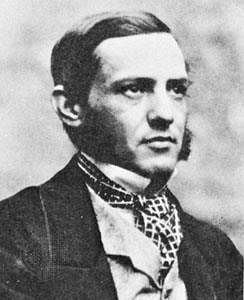 Max Mueller
Max Mueller
➢ Progressive Character of Socio-Religious Reform Movements
- These reform movements sought to remove social evils that divided the Indian society.
➢ Rise of Middle-Class Intelligentsia
- According to Percival Spear, ''The new middle class was a well-integrated all-India class with the varied background but a common foreground of knowledge, ideas, and values It was a minority of Indian society, but a dynamic minority It had a sense of unity of purpose and of hope.”
➢ Impact of Contemporary Movements in the World
- The rise of a number of nations in particular deeply influenced the nationalist ranks.
➢ Reactionary Policies and Racial Arrogance of Rulers
- Lytton’s reactionary policies such as reduction of maximum age limit for the I.C.S. examination from 21 years to 19 years 1 1876), the grand Delhi Durbar of 1877 when the country was in the severe grip of famine, the Vernacular Press Act (1878), and the Arms Act (1878) provoked a storm of opposition in the country.
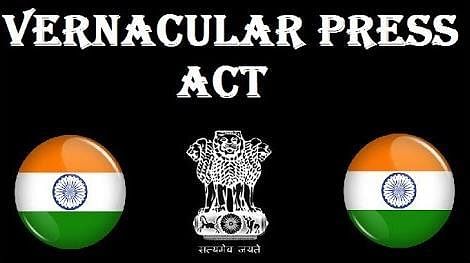
- Ripon had to modify the bill, thus almost defeating the original purpose, because of the stiff opposition from the European community.
- Through long petitions to the British Parliament, most of them demanded:
(a) Administrative reforms
(b) An association of Indians with the administration.
(c) The spread of education.
➢ Political Associations in Bengal
- The Bangabhasha Prakasika Sabha was formed in 1836 by associates of Raja Rammohan Roy.
- The Zamindari Association, more popularly known as the 'Landholders' Society’, was founded to safeguard the interests of the landlords.
- The Bengal British India Society was founded in 1843 In 1851, both the Landholders’ Society and the Bengal British India Society merged into the British Indian Association.
- The East India Association was organized by Dadabhai Naoroji in 1866 in London
- The Indian League was started in 1875 by Sisir Kumar Ghosh
- The Indian Association of Calcutta (also known as the Indian National Association) superseded the Indian League and was founded in 1876 by younger nationalists of Bengal led by Surendranath Banerjea and Ananda Mohan Bose It protested against the reduction of the age limit 1877 for candidates of the Indian Civil Service examination.
- The association sponsored an all-India conference which first took place in Calcutta on December 28 to 30, 1883. It later merged with the Indian National Congress in 1886.
➢ Political Associations in Bombay
- The Poona Sarvajanik Sabha was founded in 1870 by Mahadeo Govind Ranade.
- The Bombay Presidency Association was started by Badruddin Tyabji, Pherozshah Mehta, and K.T. Telang in 1885.
➢ Political Associations in Madras
- The Madras Mahajan Sabha was founded in 1884 by M. Viraraghavachari, B. Subramaniya Aiyer, and P. Anandacharlu.
- The associations organized various campaigns before the Indian National Congress appeared on the scene.
- For the imposition of import duty on cotton (1875).
- For Indianisation of government service (1878-79).
- Against Lytton’s Afghan adventure.
- Against Arms Act (1878).
- Against Vernacular Press Act (1878).
- For the right to join volunteer corps.
- Against plantation labour and against Inland Emigration Act.
- In support of Ilbert Bill.
- For an All India Fund for Political Agitation.
THE SWADESHI MOVEMENT AND THE PARTITION OF BENGAL
The rise of a new self-reliant and defiant nationalism from 1905 onwards was a consequence of several factors:
- The callousness and repression of the Anglo-lndian bureaucracy,
- Frustration and disillusionment among the nationalists at the British attitude in initiating political reforms,
- The rising aspirations of the educated class,
- The growth of discontent in industrial sectors, and
- A great political idealism, generated by the teachings of Vivekanand, Dayananda, Bankim Chandra, Tilak, Pal, Aurobindo and other leaders and writers.

- With the start of the Swadeshi movement, the Indian National movement took a major leap forward.
- Women, students and a large section of the urban and rural population of Bengal and other parts of India became actively involved in politics for the first time.
- The day partition took effect on 16 October 1905 and was declared a day of mourning throughout Bengal. In Calcutta a hartal was declared.
- People took out processions and bathed in the Ganges in the morning and then paraded the streets singing Bande Mataram.
- People tied rakhis on each other’s hands as a symbol of unity of the two halves of Bengal. Later in the day Ananda Mohan Bose and S.N. Banerjee addressed two huge mass meetings .
- The message of Swadeshi and the boycott of foreign goods soon spread to the rest of the country.
- The INC took up the Swadeshi call and the Banaras Session, 1905, presided by Gokhale, supported the Swadeshi and boycott movement for Bengal .
- The militant nationalists led by Tilak, Pal and Lajpat Rai were, however, in favour of extending the movement to the rest of India and carrying it beyond the programme of just Swadeshi and boycott to a full-fledged political mass struggle.
- The aim was now Swaraj and the abrogation of partition had become the ‘pettiest and narrowest of all political objects.
The Political demands of the Moderate leaders included:
- Increase in the employment of Indians to civil services.
- Separation of judicial and executive functions.
- Extension of trial by jury.
- Expansion of membership of legislative bodies.
- Repeal of the Sedition Act of 1898.
- Expansion of education, especially technical education.
- Grant of commissions in the army and military training to the people.
- Simultaneous examination for the ICS in England and India.
- The political techniques of the Moderate leaders can be thus summarized as:
- Articulation of political consciousness in the literate classes.
- Petitioning to the authorities and holding meetings.
- Demanding administrative reforms and the termination of anti-popular legislation like the one effectuating the partition of Bengal.
- Using the electoral machinery to get into the Legislative Council
- Sending deputation to England to prevent the Indian point of view before the members of Parliament and the bar of the British public opinion.
- tary expenditure between India and Britain. Reduction of military expenditure.
- Reduction of Home charges.
- Adoption of measures for relief of agricultural indebtedness.
- Encouragement of technical education and promotion of Indian industries by subsidies and protection.
- Abolition of Salt Tax.
- Reduction of land revenue and income tax.
- Setting up of agricultural banks and extension of irrigational facilities.
- Loan for agriculturists.
- Measures to remove poverty.
- Revision of Abkari and Excise policy to encourage temperance.
- With the death of Gokhale on February 19, 1915, of Pherozeshah on November 5, 1915, and the Dadabhai, the grand old man of Indian politics, on June 30, 1917, Moderatism ceased to be an effective political force.
- Since extremism was an attitude of mind, no definite date can be fixed for its beginning.
- The Extremist trend began in 1890s and its creed crystallized by 1905.
- After the famine of 1896 Tilak asked the distressed people not to pay taxes.
- British Govt. considered his teachings and editorials responsible for creating an atmosphere which led to the murders of Rand and Ayerst in June 1897.
- Bipin Chandra Pal (1858-1932) and Aurobindo were another important Extremist leaders.
- The Extremists formulated the fourfold techniques (the Chatusutri as Tilak called them) of the New Party:
- Swadeshi
- Boycott of foreign goods
- National education
- Arbitration in place of seeking justice in courts established by the foreign rulers.
- The methods and tactics used by the Extremists can be summed up as:
- Use of self-reliant methods.
- Need for making sacrifices for the country.
- Condemned political mendicancy.
- Intense hatred for foreign rule, which was held responsible for all evils of Indian society.
- Faith in mass political action.
- Boycott of British goods.
- Use of Swadeshi goods.
- National Education.
- Passive resistance.
- Stages of the Moderates-Extremists tussle can be traced as below:
- Banaras Congress Session in Dec. 1905: Extremists wanted a strong resolution on Boycott and Swadeshi. Moderates emphasised the use of constitutional methods only.
- Compromise: Mild resolution on Boycott and Swadeshi.
- Calcutta Congress Session in Dec. 1906: Extremists wanted Tilak or Lajpat Rai as President, Moderates proposed name of Dadabhai Nauroji, who was elected.
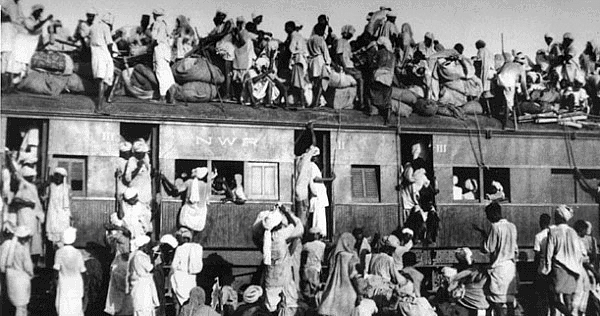
Compromise:
(i) Swaraj declared goal of Congress.
(ii) Resolution on Boycott, Swadeshi and National Education passed.
- Surat Congress Session in Dec. 1907: Extremists wanted
(i) The session at Nagpur
(ii) Lajpat Rai as Congress President, and
(iii) Reiteration of resolutions on Boycott, Swadeshi and National Education. - Moderates wanted:-
(i) The session at Surat,
(ii) Rash Behari Ghosh as President, and
(iii) To drop the resolutions on Boycott, Swadeshi and National Education.
[Intext Question]
Outcome of the Surat split was:
- With Government encouragement Moderates adopted an uncompromising attitude.
- Pandemonium at Surat and session adjourned.
- Moderates captured the Congress in April, 1908 and adopted a loyalist constitution for the Congress.
- Extremists eclipsed from national forums.
- Even Moderates suffered disillusionment and lost popularity with the masses.
Morley-Minto Reforms, 1909
- Reasons due to which this Act was passed can be summed up as:
- Indian dissatisfaction with Act of 1892.
- Extremists in the Congress advocated the policy of pressure to win political rights. The Indian council Act, 1892 did not satisfy even the Moderates.
- Curzon’s reactionary policies and partition of Bengal awoke the latent national consciousness of Indians.
- Economic distress and famines alienated the people from British rule.
- Minto’s plan was to placate political unrest by a dose of political reforms.
Facts To Be Remembered
|
- Government’s plan was to use political reforms as a device to drive a wedge between Hindus and Muslims through communal electorates.
- Important provisions can be summed up as:
- Legislative Councils both at the Centre and in the provinces were expanded.
- Total strength of Central Legislative Council was raised to 68 (Governor General + 7 Executive Councillors + 60 additional members). Term of ‘additional’ members was to be 3 years.
- Regulations provided qualifications both for candidates for election and for voters. Women, minors, persons below age of 25 years could not vote.
- Powers of Central Legislative Councils was enlarged. Members could discuss annual financial statement, propose resolutions, but Budgets as a whole was not subject to vote of Legislative Council. Members could ask questions and supplementary questions on matters of public interest.
- Non-officials were to be in majority in Provincial Legislatures.
- For the first time, system of class and communal electorates was introduced in Legislative Councils.
- Number of members of Provincial Executive Councils of Bengal, Madras and Bombay was raised to 4 each.
➢ Foundation of Indian National Congress
- The final shape to the establishment of an all-India organisation idea was given by A.O. Hume, who organised the first session of the Indian National Congress at Gokuldas Tejpal Sanskrit College in Bombay in December 1885.
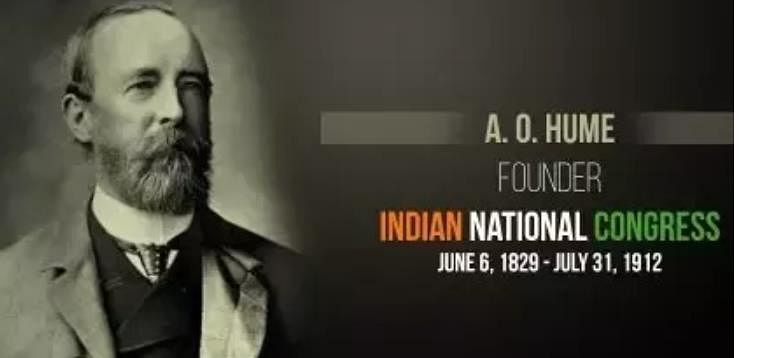
- Two sessions of the Indian National Conference had been held in 1883 and 1885, Surendranath Banerjee and Ananda Mohan Bose were the main architects of the Indian National Conference.
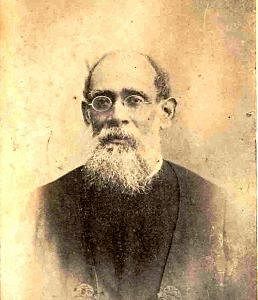 Surendranath Banerjee
Surendranath Banerjee - The first session of the Indian National Congress was attended by 72 delegates and presided over by Womesh Chandra Bonnerjee.
- Kadambini Ganguly, the first woman graduate of Calcutta University, addressed the Congress session.
➢ Was It a Safety Valve?
- Hume formed the Congress with the idea that it would prove to be a safety valve’ for releasing the growing discontent of the Indians.
- Even the Marxist historian’s 'conspiracy theory’ was an offspring of the "safety valve’ notion.
- R.P. Dutt opined that the Indian National Congress was born out of a conspiracy to abort a popular uprising in India and the bourgeois leaders were a party to it.
- Bipan Chandra observes, the early Congress leaders used Hume as a "lightning conductor to bring together the nationalistic forces even if under the guise of a "safety valve’.
➢ Aims and Objectives of the Congress-The main aims of the Indian National Congress in the initial stage were to—
- found a democratic, nationalist movement;
- politicize and politically educate people;
- establish the headquarters for a movement;
- promote friendly relations among nationalist political workers from different parts of the country;
- develop and propagate an anti-colonial nationalist ideology;
- formulate and present popular demands before the government with a view to unifying the people over a common economic and political programme;
- Develop and consolidate a feeling of national unity among people irrespective of religion, caste or province.
- Carefully promote and nurture Indian nationhood.
➢ The era of Moderates (1885-1905)
- The national leaders like Dadabhai Naoroji, Pherozshah Mehta, D.E. Wacha, W.C. Bonnerjea, S.N. Banerjea
➢ Moderate Approach
- They worked on a two-pronged methodology—one, create a strong public opinion to arouse consciousness and national spirit and then educate and unite people on common political questions; and two, persuade the British Government and British public opinion to introduce reforms in India on the lines laid out by the nationalists.
- A British committee of the Indian National Congress was established in London in 1899 which had India as its organ.
➢ Contributions of Moderate Nationalists
- The early nationalists, led by Dadabhai Naoroji, R.C. Dutt, Dinshaw Wacha and others, carefully analysed the political economy of British rule in India and put forward the “drain theory" to explain British exploitation of India.
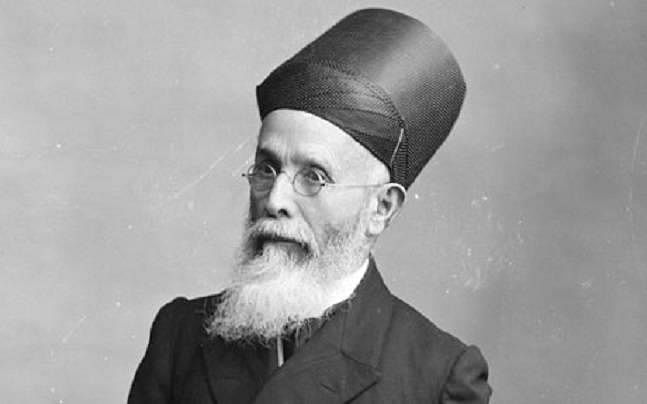 Dadabhai Naoroji
Dadabhai Naoroji - They opposed the transformation of a basically self-sufficient Indian economy into a colonial economy.
➢ Constitutional Reforms and Propaganda in Legislature-From 1885 to 1892, the nationalist demands for constitutional reforms were centered around—
- Expansion of councils—i.e., greater participation of Indians in councils; and
- Reform of councils—i.e., more powers to councils, especially greater control over finances. They gave the slogan—“No taxation without representation".
➢ Campaign for General Administrative Reforms-The Moderates campaigned on the following grounds -
- Indianisation of government service
- Call for separation of judicial from executive functions.
- Criticism of an oppressive and tyrannical bureaucracy and an expensive and time-consuming judicial system.
- Criticism of an aggressive foreign policy which resulted in the annexation of Burma, attack on Afghanistan and suppression of tribals in the North-West—all costing heavily for the Indian treasury.
- Call for increase in expenditure on welfare (i.e., health, sanitation), education— especially elementary and technical—irrigation works and improvement of agriculture, agricultural banks for cultivators, etc.
- Demand for better treatment for Indian labour abroad in other British colonies, where they faced oppression and racial discrimination.
- Protection of Civil Rights- Through an incessant campaign, the nationalists were able to spread modern democratic ideas, and soon the defence of civil rights became an integral part of the freedom struggle.
➢ An Evaluation of the Early Nationalists
- They represented the most progressive forces of the time.
- They were able to create a wide national awakening of all Indians having common interests and the need to rally around a common programme against a common enemy, and above all, the feeling of belonging to one nation.
- They trained people in political work and popularized modern ideas.
- They exposed the basically exploitative character of colonial rule, thus undermining its moral foundations.
- Their political work was based on hard realities, and not on shallow sentiments, religion, etc.
- They were able to establish the basic political truth that India should be ruled in the interest of Indians.
- They created a solid base for a more vigorous, militant, mass-based national movement in the years that followed.
- They failed to widen their democratic base and the scope of their demands.
➢ Role of Masses
- The moderate phase of the national movement had a narrow social base and the masses played a passive role. This was because the early nationalists lacked political faith in the masses; they felt that there were numerous divisions and subdivisions in the Indian society, and the masses were generally ignorant and had conservative ideas and thoughts.
➢ The attitude of the Government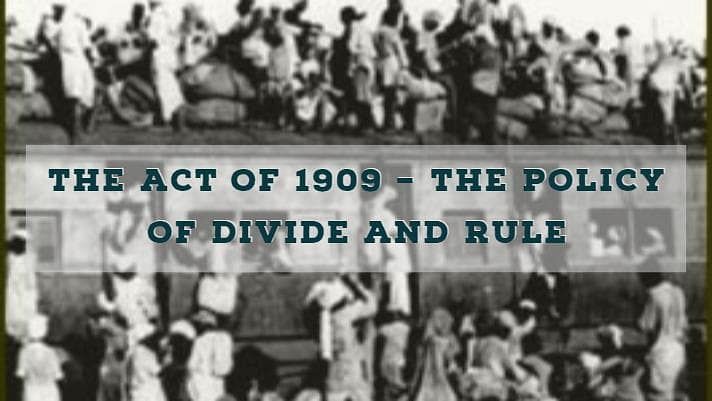
- The government resorted to open condemnation of the Congress, calling the nationalists “seditious brahmins", “disloyal babus", etc. Dufferin called the Congress “a factory of sedition". Later, the government adopted a "divide and rule' policy.
The Indian National Congress ([INC], often called the Congress Party or simply Congress) is a broadly based political party in India. Founded in 1885, it was the first modern nationalist movement to emerge in the British Empire in Asia and Africa. From the late 19th century, and especially after 1920, under the leadership of Mahatma Gandhi, Congress became the principal leader of the Indian independence movement. Congress led India to independence from Great Britain and powerfully influenced other anti-colonial nationalist movements in the British Empire.
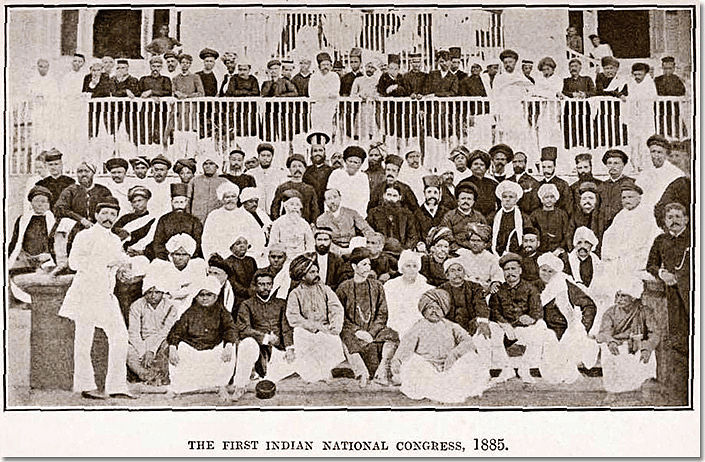
- Vernacular Press Act imposed by Lord Lytton, which resulted in widespread discontentment in the country.
- Second Afghan War. The Indians felt that the British by waging Second Afghan War (1878-80) had unnecessarily intruded into Afghan affairs.
- Lord Ripon’s Liberal Policy engendered political awakening and thirst for sharing the local administration.
- Ilbert Bill- The controversy that ensued between the Indians and the British Government over the llbert Bill made the former alive to the necessity of having an All India political organisation to forge a united opposition to anti-national measures of the Government.
- In 1885 under the inspiration of Allan Octavian Hume (1829-1912) and the silent encouragement of Dufferin, the Viceroy, the Indian National Congress was established.
- In March 1883, Hume had addressed a letter to the graduates of the Calcutta University advising them to conduct a firm struggle for securing freedom and affirming “they who would be freed themselves must strike the blow.”
- After his retirement from the l.C.S, Hume organized an Indian National Union in 1884 which released a memorandum for the meeting of an Indian National Conference.
- This proposed conference met on 28 December 1885 at the Gokuldas Tejpal High School and this was the birth of the Indian National Congress.
- Lord Dufferin who had inspired Hume with the vision of an all-India association wanted a body of a person who could perform functions similar to those of Her Majesty’s Opposition in England, that is, a body engaged in the interpretation of the public will before the Government.
- Its aims, as stated by A.O. Hume in 1889, were:
- The fusion of different elements of the Indian population.
- The mental, moral, social and political regeneration of the nation.
- The consolidation of the union between England and India.
- Really, Hume wanted a loyal substitute for the Indian National Conference held in Calcutta. But soon the attitude of the Government towards Congress began to change.
- In 1890, the Government debarred Government officials from attending the Congress sessions.
- In the nineteenth century, the Congress had its social base in the Western-educated Indians and the commercial and industrial bourgeoisie.
- Indian National Congress was a truly national organisation, for:
- It represented all races, all creeds and all communities.
- Its membership was open to persons of all communities.
- All communities have worked for its development.
- It approached the country’s problems from an all-India point of view.
- The fundamental principles of the Congress were:
- To blend the heterogeneous elements of the Indian population into a single national whole.
- To reconstruct the Indian Nation mentally, morally, socially and politically.
- To cement the union between India and England and to secure modification of conditions detrimental to the interests of the former.
- The violent propaganda of the Congress succeeded in having some reforms enacted. Consequently, the Indian Council Act was passed in 1892 which enlarged the various Legislative Councils and extended franchise to the Chambers of Commerce, Universities, Landlords and Municipalities. But the Act could not satisfy the younger generation.
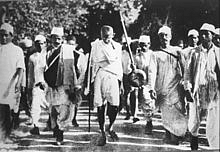
- Hereafter, a very severe famine broke out in India in 1896 and the British Government failed to cope with the exigencies of the situation.
- The famine exacted a heavy toll on lives due to the different attitudes of the government towards the suffering Indian community.
- B.G. Tilak organised a ‘no-tax’ campaign. His plea was that the Indians were incapacitated by the famine to meet the demand of taxes.
- The murder of two British officials at Poona intensified the repressive measures of the government who arrested Tilak on the charge of having incited an Indian through speeches and writings, to perpetrate the murder.
- The Congress had in its fold workers of extreme and liberal views, the former was called Extremists while the latter was styled as Moderates.
- The Moderates stood for self-government equivalent to Dominion Home Rule achieved through constitutional measures.
- Surender Nath Banerjee and Pheroz Shah Mehta belonged to this camp and Gokhale was their leader.
- The Extremists did not advocate constitutional agitation. Many of them harboured separatist tendencies They were led by B. G. Tilak, who had Lala Lajpat Rai and Bipin Chander Pal as his close adherents.
- The regime of Lord Curzon (1890-1905), instead of appeasing the Indians, embittered the relations between the rulers and the ruled.
- Lord Curzon’s educational policy, lavishing of money on the Darbar, his hatred of Indian culture and civilisation and bifurcation of Bengal exhausted the Indian patience and forced the Indians to resort to violent measures.
- He made as extensive use of the Sedition Act. Several Congress leaders were arrested and deported. The reign of terror had set in.
- Maulvi Chirag Ali (1844-95): Sought to reform Muslim society; stood for monogamy.
- Sir Syyed Ahmad Khan (1817-98): Condemned the system of ‘Piri’ and ‘Muridi’. His book—’commentaries on the Quran’. Opened the AngloMuslim School at Aligarh in 1875.
- Ahmadiya Movement: Muslim religious movement by Mirza Gulam Ahmad.
- B.M. Malabari (a Parsi reformer of the 19th century): Efforts against child marriage were crowned by the enactment of the Age of Consent Act (1891) which forbade the marriage of girls below the age of 12.
- The Sharda Act (1930): Pushed up the marriage age and provided for penal action in the marriage of boys under 18 and girls under 14 years of age.
- The Indian National Social Conference: Founded by M.G. Ranade in 1887.
- The Bombay Social Reform Association: in 1903.
- The All India Anti Untouchabillty League: Founded in 1932 and later renamed Harijan Sevak Sangh.
- All India Women’s Conference: was organised in 1922 by women themselves.
- In 1945, Dr. Ambedkar criticised Gandhiji in his famous book “What Congress and Gandhi have done to the untouchables”.
Chronology of Revolutionary Activities
First Phase
Maharashtra
- B.G. Tilak a pioneer in starting politico-religious festivals like Ganapati and Shivaji festivals to popularise the concept of Swaraj among the people.
- Chapekar brother killed Mr. Rand, the cruel Plague Commissioner at Poona on 22 June, 1897.
- On 18 Feb., 1905 Krishnavarma set up India Home Rule Society in London to work for India’s freedom.
- Madan Lal Dhingra shot dead Col. William Curzon Wyllie at India House, London on 1 July, 1909.
- Jackson, the District Magistrate of Nasik, was shot dead on 21 Dec., 1909.
Bengal
- Agitation against partition of Bengal stirred political consciousness at an unprecedented pitch during the early 20th century.
- Violent activities and robberies erupted in different parts of Bengal during 1906-1907.
- Muzaffarpur murder on 30 April, 1908 by Khudiram Bose.
- Public Prosecutor was shot dead in Calcutta in Feb., 1909.
- Deputy Suprintendent of Police, Calcutta was killed on 24 Feb., 1909.
Delhi
Bomb thrown at Lord Hardinge on 23 Dec., 1912.
Ghadar Morement
- Ghadar organisation formed by Indian revolutionaries at San Francisco, U.S.A. on 1 Nov., 1913. Its aim was to send volunteers to organise mutiny and rebellion in India
- Kamagata Maru incident at Calcutta on 29 Sept., 1914.
Second Phase
- Meeting of All-lndia revolutionaries at Kanpur in Oct., 1924.
- Kakori Dacoity case on 9 August, 1925.
- Hindustan Socialist Republican Association founded in Sept., 1928 to:
(a) do propaganda against non-violent methods.
(b) propagate value of Direct Action.
(c) preach Socialist ideology.
- Shooting of Mr. Saunders, Assistant Police Suprintendent at Lahore on 17 Dec., 1928.
- Bomb thrown in Central Legislative Assembly, Delhi on 8 April, 1929.
- Chittagong Armoury raid on 18 April, 1930.
- Execution of Freedom martyrs Bhagat Singh, Sukhdev and Rajguru on 23 March, 1931.
- Popular revolts in many parts of India in August, 1942.
Important Statements
|
THE LUCKNOW PACT
- After the declaration of First World War in 1914, the British asked the Indian leaders for their cooperation. Indian response was three fold:
- Moderate Congress leaders wanted to help in defence of the empire as a matter of duty.
- Extremist leaders promised to help in the hope of getting concessions.
- Terrorist Revolutionaries hoped to gain their objective out of England’s difficulties.
- Two major developments during First World War in Indian politics were reunion of the Moderates and the Extermists and the Congress League Lucknow Pact of 1916.
- Reunion of the Moderates and the Extremists took place due to following factors:
- Tilak clarified his objective of attainment of self-govt. by constitutional means.
- Death of Gokhale and Mehta in 1915 softended Moderates’ attitude.
- Mrs. Besant played the role of mediator.
- Congress constitution amended to make possible the entry of Extremists.
- Due to all this, the union was achieved at Lucknow session in Dec., 1916.
Congress-League Lucknow Pact, 1916
- Indian Muslims were estranged from British Government over:
- Annulment of Partition of Bengal.
- Britain’s anti-Turkish attitude.
- Arrest of Muslim leaders.
- Congress was willing to make compromise with the League so that the national movement could be made stronger. A compromise formula was worked out.
- Muslim League was to support Congress demand for self-government. Congress was to accept League’s demand for communal electorates.
- Reform Scheme Demands were:
- Reduction of Secretary of State’s control over Indian affairs.
- 80% members of Central and Provincial Legislative Councils to be elected.
- 50% members of Governor General’s and Governor’s Executive Councils to be Indians.
- Legislative Councils not to discuss any bill if 75% councils members of any community objected to it.
- The Congress of 1916 at Lucknow was memorable in several ways. It was attended by extremists, moderates, Muslim League–in short all political workers belonging to different schools of thought and owning different creeds participated in it.
- The Congress and the League drew up a joint scheme for reforms. It marked the unity of the Hindus and the Muslims under what is known as Lucknow Pact.
- The Congress called upon the British
Facts To Be Remembered
—Balgangadhar Tilak
—Abul Kalam Azad
—M.K. Gandhi
|
Government:
- To declare that its aim was to grant self-government to India in view of its cultural and educational advancement;
- To accept the Congress-League scheme for Home Rule;
- To grant Dominion status to India;
- To apply Defence of India Act under the circumstances similar to those for Defence of Realm Act.
THE HOME RULE MOVEMENT
- Mrs. Besant’s Home Rule League was estab-lished on 1 Sept., 1916. It was established outside the Congress but was not opposed to its policies.
- Its Programme of Action was very much similar to that of Moderate leaders i.e.
- holding of frequent meetings.
- arranging lecture tours to arouse the people.
- distribution of Home Rule literature.
- propaganda in India, London and U.S.A.
- two newspapers were started in 1914-Commonwealth and New India.
- Its area of activity was the whole of India minus Maharashtra and C.P.
- Tilak’s Home Rule League was founded on 28 April, 1916. Its centres of activities were Maharashtra and C. P. It worked in cooperation with Besant’s Home Rule League
- Government attitude was belligerent. In July, 1916 the Government instituted a libel case against Tilak. And in June, 1917 Mrs. Besant and her two colleagues were arrested. Restrictions were imposed on newspapers.
- Slackening of Home Rule Movement was due to the following factors:
- Mrs. Besant’s opposition to policy of Passive Resistance.
- Montague’s announcement in British Parliament about Responsible Government in India on 20 Aug., 1917.
- Government’s policy of suppression.
Achievements
- It filled an important stage in the development of national struggle.
- It broadened the base of the national movement. Women and students participated in its activities.
- Mrs. Besant and Tilak came in forefront of national politics.
- The League did propaganda for self-government at international forums.
- For the first times idea of use of Passive Resistance was mooted so strongly.
THE MONTAGUE-CHELMS-FORD REFORMS
- Major provisions can be summed up as:
- Secretary of State to be henceforth paid salary out of the British Exchequer.
- India Council’s importance and strength reduced. Secretary of State not obliged to consult India Council except (i) in financial matters and (ii) matters concerning l.C.S.
- Secretary of State retained control over Indian administration except over transferred bloc of subjects in the provinces.
- Devolution Rules: Demarcation of two lists of subjects: Central List and Provincial List.
- Number of Indian members in the Governor General’s Executive Council raised from 1 to 3 out of a total of 8 members.
- Increase in Governor General’s powers. He could restore cuts in grants, certify bills rejected by the General Legislature and issue ordinances.
- Central Legislature made bicameral.
- Term of Council of State 5 years, that of Legislative Assembly 3 years.
- System of communal and class electorates was further extended to Sikhs, Indian Christians, Anglo-lndians and Europeans.
- Powers of Central Legislature enlarged but 75% of Budget still not votable .
Gandhi’s Return To India
- He founded the Natal Indian Congress in May, 1894 and fought against the ‘Black Act’ or registration applicable exclusively to Indian settlers.
- It was there that he organised passive resistance or Satyagraha against the government and tested the strength of the weapon.
- The famous Gandhi-Smuts agreement sealed the struggle in Africa and Gandhiji returned to India in 1914 richer in the spirit of service and equipped with the novel weapon of Satyagrah.
Political Achievements
- Abolition of Indenture System. Realising that Indenture system drained away India’s manpower, he led an agitation against it in 1916-1917 and had the system abolished successfully.
- Satyagraha in Bihar. Poor labourers working on Indigo plantations were treated cruelly by their White Masters. Headless of the dire consequences, a threat of which was held out to him, he conducted the struggle to a victorious end by means of peaceful Satyagraha.
- Rowlatt Act. The British government instead of rewarding the Indians for their meritorious services in the First World War, passed the Rowlatt Act in 1919 to perpetuate Defence of India Act. Gandhiji organised Civil Disobedience Movement and India-wide strike took place. A peaceful mob at Jallianwala Bagh (Amritsar) was massacred and martial law was declared in the Punjab. Gandhiji, being disallowed to study the situation in person in the Punjab, called off the Movement, much to the disappointment of his followers.
- Participation in the Khilafat Movement. Ali Brothers started the Khilafat Movement and Gandhiji attended its conference and decided to work for it with the object of securing Hindu-Muslim unity which was very essential for the attainment of Swaraj. It was in this conference at Karachi that Gandhiji for the first time talked on non-cooperating with the government.
- Non-Co-operation Movement. Gandhiji launched the Non-Co-operation Movement in April 1920 with the object of carrying out Triple Boycott and social reforms. Success was near when riots broke out in Bombay and U.P. Twenty two policemen were burnt alive at Chauri Chaura (U.P.). Gandhiji was charged with instigation to violence and though sentenced to six years’ imprisonment he was let off in 1924 on grounds of ill-health.
- Boycott of Simon Commission. The Country did not co-operate with the Simon Commission in 1927 at Gandhiji’s instance who reiterated the demand for Swaraj and threat of Civil Disobedience Movement.
Violation of Salt Laws. Gandhiji arrived at Dandi on 6th April, 1930 and defied the salt laws.
- Gandhiji Irwin Pact was concluded in March, 1931 which paved the way for the participation of the Congress in the Second Round Table Conference .
- Participation in R.T.C. (1931). Gandhiji represented the Congress in II R.T.C., but his mission failed due to non-compromising attitude of the Muslim League.
- Poona Pact (1932). The Communal Award (August 1932) aimed at shattering the solidarity of the Hindus. Gandhiji went on fast to have the clause undone. At last Poona Pact was concluded between the Hindu and Harijan leaders. The British Government recognised the pact and Gandhiji maintained the solidarity of the Hindu community by staking his life.
- Formation of Congress Ministries. The Congress contested elections in 1937 and formed ministries in seven provinces with the blessings of Gandhiji.
- Individual Satyagraha was started by Gandhiji when the Congress Ministries resigned office in protest to making India a party to World War II without consulting her people.
- Cripps Mission (1942). Cripps Mission failed because Sir Stafford Cripps could not satisfy Gandhiji with his proposals which were ultimately rejected by all political parties.
- Quit India Resolution. Congress passed the ‘Quit India Resolution’ in 1942 in its meeting at Bombay asking the British to leave India forthwith. The resolution was carried out at the suggestion of Gandhiji.
- Gandhiji participated in the Simla Conference (1945 and 1946) not as representative of the Congress but as an adviser to its President. He strove every nerve to win round M.A. Jinnah who remained adamant and spared no pains to torpedoed his efforts aimed at Hindu-Muslim unity or achievement of Swaraj.
ROWLATT SATYAGRAHA AND JALLIANWALA BAGH TRAGEDY
- Rowlatt Act was passed in March 1919. It was passed for three years. The Act provided that:
- Executive officers will have powers to make arbitrary arrests.
- It provided for trial of revolutionary offences by a special court.
- The court was to meet in camera.
- The court was to disregard the Indian Evidence Act.
- No appeal against the decision of the court was permissible.
- Provincial governments authorised to demand security from suspected persons, search their premises and arrest them without warrants.
- Jallianwala Bagh Tragedy Developments were
- Lt. Governor O’Dwyer ruled through an
- oppressive administration in Punjab during World War I.
- Protests all over Punjab over the Black (Rowlatt) Acts on 6 April, 1919.
- Deportation of Amritsar leaders—Dr. Satyapal and Dr. Kitchlew on 9 April.
- Firing on the public outside Hall Gate, Amritsar on 10 April.
- Brigadier Dyer appointed Military Administrator of Amritsar on 11 April, 1919.
- Dyer prohibited public meetings and processions on 12 April.
- Dyer’s men fired at peaceful assembly at Jallianwala Bagh, killing 379 persons and wounding 1200 persons on 13 April, the day of Baisakhi.
- Martial law imposed in the Punjab on 15 April, 1919.
Khilafat MOVEMENT
- The Muslims formed a Khilafat Committee under the leadership of Maulana Muhammad Ali, Maulana Shaukat Ali, Maulana Azad, Hakim Azmal Khan and Hasrat Mohani after the First World War.
- Britain announced its peace terms to Turkey on May 15, 1920 and decided to abolish the title of Khalifa enjoyed by the Sultan of Turkey.
- The Central Khilafat Committee adopted the Non-Cooperation resolution at its Bombay Session in May, 1920.
- The Congress met in a special session in September, 1920 at Calcutta and agreed to start the Non-Cooperation Movement till the Punjab and Khilafat wrongs were undone and Swaraj was established.
- The decision was further endorsed at its Nagpur Session held in December, 1920.
- The leaders of the Khilafat Movement also endorsed the Non-Cooperation Movement led by Gandhi.
- Progress of Non-Cooperation Movernent during 1921
- Gandhi returned his title of Kaiser-i-Hind.
- Congressmen boycotted elections.
- Government courts boycotted and Arbitration courts set up to settle disputes.
- Students boycoted schools and colleges and joined N.C.M.
- Bonfire of foreign goods a common site in cities.
- Congress Ashrams set up all over India as centres for political propaganda.
- Prince of Wales’ visit boycotted by the Congress.
- NCM was suspended on 12 Feb., 1922 by Gandhi after the Chauri Chaura incident. Outbreak of violent incidents at Chauri Chaura had upset Gandhi. He did not want the NCM to turn violent.
THE SWARAJ PARTY
- The withdrawal of the Non-cooperation Movement in Feb. 1922 and the arrest of Gandhi led to the spread of disintegration, disorganisation and demoralization in the nationalist ranks.
- A new line of political activity was taken by C.R. Das and Motilal Nehru. They suggested that the nationalists should end the boycott of the legislative councils, enter them, expose them as ‘sham parliaments’ and as ‘a mask which the bureaucracy has put on’ and ‘obstruct every work of the council’.
- C.R. Das put forward this programme at the Gaya Congress in Dec. 1922.
- Another section of the Congress headed by Vallabhbhai Patel, Rajendra Prasad and C. Rajagopalachari opposed the proposal and the proposal was defeated.
- Das and Motilal resigned from their respective offices in the Congress and on 1 Jan., 1923 announced the formation of Congress-Khilafat Swaraj Party better known later as the Swaraj Party.
- Das was the President and Motilal one of the Secretaries.
- The adherents to the council entry came to be known as ‘pro-changers’ and those opposing it as ‘no-changers’.
- Their main techniques of action were:
- the refusal to pass the budget,
- opposition to repressive legislation,
- cooperation in passing social welfare legislation,
- occasional acceptance of offices,
- quitting the offices and resigning the membership when asked to do so by the Congress.
- In 1923 elections, the Swarajists got a majority in Bengal and C.P. In the Central Legislative Assembly, Motilal Nehru was chosen the leader of the Swarajists.
- On 24 August, 1925, Vithalbhai~ Patel was elected the first non-official President (Speaker) of the Indian Legislative Assembly and was re-elected to this office on January 20, 1927.
- Causes of decline of Swara3 Party were:
- Death of C.R. Das in June 1925.
- Motilal Nehru’s inability to keep the party together.
- Swarajists accepted positions in Government Committees, in Assemblies and Executive Councils.
- Appearance of splinter groups in the party.
- Contribution of Swaraj Party to Freedom Struggle
- Pressurised the British Government into acceptance of some Indian demands.
- Party kept up the political struggle for freedom during 1923-28.
- British Labour Party accepted Dominion Status as goal of constitutional development in India.
- Legislatures used as platform for national propaganda.
- Exposed the autocracy of British Government and callousness of l.C.S.
- Promoted the cause of Indian Freedom and added parliamentary dimension to freedom struggle after 1922.
SIMON COMMISSION
Why Indians Protested
- All members of the Commission were Englishmen.
- No Indian was included in the Commission.
- Denial to Indians of the right to participate in determination of their constitution.
- Britain posed as sole arbiter of India’s destiny.
Forms of Protest
- Congress opposed Simon Commission ‘at every stage and every form’.
- Hartals in principal towns.
- Black flag demonstrations against the Commission.
- Police oppression angered the people and this became a further grievance.
- Provisions
- Dyarchy, because of its inherent effects, should be scrapped and the whole field of provincial administration entrusted to Ministers responsible to the Legislature.
- Safeguards were considered necessary for some specific purposes like the maintenance of peace and tranquility of a province and the protection of the legitimate interest of the ministry.
- A unitary type of Govemment, as then existed, was considered unsuitable for India.
- In order to help the growth of political consciousness in the people, “franchise should be extended, and the Legislature enlarged.”
- A strong and stable government at the Centre was considered essential, “while the provincial councils were learning by experience to bear the full weight of new and heavy responsibilities.”
- The method of periodical parliamentary inquiry should be abandoned, and the new Constitution should be so elastically framed as to enable it to develop by itself.
- The method of indirect election, through the provincial councils, was recommended for both the Houses of the Central Legislature.
- The power of the Indian Council was to be limited.
- Central Legislature was to be enlarged and elected by the provincial councils.
- Burma was to be separated from India and Sind from the Bombay Presidency.
NEHRU REPORT AND JINNAH’S FOURTEEN POINTS
- After 1922, the demands of Swaraj was raised from various quarters. The Conservative Secretary of State for India, Birkenhead challenged the Indian leaders to produce a constitution.
- At the Madras Congress (1927), a committee was constituted, with Motilal Nehru as the President, to frame a Constitution of India.
- Lajpat Rai and T. B. Sapru were also its members. The Nehru Report was approved by the All-Parties Conference in Aug. 1928, at Lucknow.
- Main points of the Report:
- India was to remain within the Empire, but was to have a status like the Dominions.
- A responsible government was to be established.
- The fundamental rights of speech and association of citizens were to be guaranteed.
- The House of the People was to consist of 500 members chosen on the basis of adult franchise.
- The Upper House (or Senate) was to consist of 200 members chosen by the Provincial Assemblies or Councils.
- The principle of separate electorate was not accepted except to a limited extent.
- The acceptance of adult franchise, joint electorates with reservation of seats in some areas only for a ten-year period, the responsibility to the legislature of the executive and provincial autonomy were some other features.
- The Muslim League opposed the Nehru Report. Their demands were elaborated by Jinnah in the form of an amendment at the representative convention of Calcutta (22 December 1928), which reviewed the Nehru Report adopted by the All Parties Conference.
- The Muslims should have onethird representation in the Central Legislature.
- The Punjab and Bengal legislatures should have Muslim representation on the basis of population for ten years in the event of adult suffrage not being granted.
- Residuary powers should be vested in the Provinces and not in the Centre.
Gandhi’s Eleven Demands and Salt Satyagraha
- Although the resolution affirming complete independence as the goal of the Congress, and moved by Gandhi himself, was passed in 1929, the Mahatma put forward before the Viceroy Lord Irwin, on 30 January 1930, his Eleven Demands which were:
- Total Prohibition.
- The rupee to be valued at 16 pence.
- At least 50 per cent reduction in land revenue.
- Abolition of salt tax.
- Reduction of military expenditure to at least 50 per cent to begin with.
- Reduction in Government expenditure and salaries of Government officials.
- Protective tariff on the foreign cloth.
- Indian ships to discharge the duty of coastal transport.
- Release of all political prisoners and elimination of Section 124A from the Indian Penal Code.
- Doing away with the services of the C.l.D. (The Criminal Investigation Department).
- Freedom to keep firearms.
THE GANDHI-IRWIN PACT
- The detailed terms of the Gandhi-lrwin Pact were as follows:
- The people living near sea-shores were to prepare salt without paying any duty.
- The confiscated property of participants in the Salt-Satyagraha was to be restored to them.
- All political prisoners were to be released, but not they against whom there were criminal charges.
- All ordinances promulgated during the Satyagraha were to be withdrawn.
- Peaceful picketing of foreign cloth shops was permitted.
- The Government was to be liberal in reinstating those who had resigned from service.
- The Congress agreed to suspend civil disobedience. Mahatma Gandhi agreed not to press his demand for enquiry into police excesses during the Satyagraha The Congress also agreed to suspend boycott.
- The Gandhi-lrwin Pact made the Tory leader Churchill exclaim that it was nauseating that the half-naked seditionist, a former barrister and now a Fakir was discussing on equal terms with the Viceroy, the representative of the King-Emperor
Civil Disobedience Movement (1932-34)
- On December 28, 1931, Gandhiji reached Bombay on his way back from the London Round Table Conference. In a letter to the Viceroy, Lord Willington, he protested against the reign of oppression in N. W. Frontier Province, Bengal and Uttar Pradesh. In a letter to him on December 31, the Private Secretary to the Viceroy justified the measures.
- In the context of the veiled threat of the resumption of civil disobedience, the Viceroy refused to meet Gandhiji.
- On January 10, 1932, the Congress Working Committee prepared the following 12-Point programme for civil disobedience:
- Picketing of Foreign liquor shops by women.
- Use of hand-spun khaddar by all congressmen
- Boycott of foreign cloth.
- Preparation of salt without obtaining any licence.
- Boycott of British goods and British Companies.
- Civil disobedience of immoral and anti-people laws.
- Civil disobedience of all unjust orders passed under the Ordinances.
- The workers were to maintain the strictest Ahimsa in thought, word and deed even in critical situations.
- Harmful social boycott of Govemment officers and policemen to be avoided.
- Only those persons were to take part in processions and demonstrations who were ready to suffer lathis and bullets without moving from their positions.
- Civil disobedience was to be started only at those places where the people understood the norm of Ahimsa and were ready to follow it fully even at the cost of their life and property.
- Maintenance allowance was to be paid in cases of great hardship to dependents of the volunteers who had gone to prison or had been killed.
Forms of Civil Disobedience Movement
- Dandi March was organised to manufacture illegal salt. Breach of law by boiling sea water to manufacture salt by Gandhi on 6 April, 1930.
- Bengal: Defence of law by:
(i) Reading seditious literature in public.
(ii) Picketing of shops selling foreign cloth.
(iii) Picketing of shops selling liquor.
- C.P.: Defiance of forest laws by cutting timber.
- Gujarat: Defiance of law by non-payment of Land Revenue.
- North West Frontier Province:
Defiance of Govt. Iaws by non-payment of taxes.
- Congressmen resign from Legislatures.
- Many Govemment servants resigned.
- Local officers tendered resignations.
THE ROUND TABLE CONFERENCES
First Round Table Conference
- The First Round Table Conference which met from 12.11.1930 to 19.1.1931 could not achieve any solid success because the Congress was not represented in it.
- Maulana Muhammad Ali and Jinnah had attended it. Some of the non-Congress participants debated the question of representation to the minorities.
Second Round Table Conference
- Gandhi attended the Second Round Table Conference along with Madan Mohan Malaviya, Sarojini Naidu and B.R. Ambedkar, but no agreed solution could be reached on the communal and national problems.
- In spite of Gandhi’s insistence, Dr. Ansari was not nominated to the Second Round Table Conference.
- Ramsay MacDonald, the British Prime Minister wanted that all members should agree to accept his verdict on the question of minorities.
- But Gandhi was of the firm view that the glow of the sun of independence alone would serve to melt the iceberg of communalism.
- The declaration of MacDonald at the Plenary session of the Conference was immensely dissatisfying because it contained no reference to the grant of Dominion Status to India.
- There was no assurance for the establishment of responsible government in the provinces and at the centre.
- Moreover, there was no assurance regarding fundamental rights. The proposed constitutional reforms, as outlined by the British Prime Minister, in December 1931 totally reserved defence and military affairs for control by the British Parliament and the Viceroy. Gandhiji could not agree to such proposals specially in the context of the Independence Resolution of 1929.
- He, all along, was concerned with the basic question of freedom and was disinclined to discuss the details of monetary and financial schemes.
Third Round Table Conference
- The Third Round Table Conference was held from November 17 to December 24, 1932 but it could not make any progress towards Swaraj.
- However, the deliberations at the three Round Table Conferences formed the basis on which the draft of the Government of India Act of 1935 was prepared.
Communal Award
- As no agreement was forthcoming (at the Second Round Table conference), Mr. Ramsay MacDonald issued on 16th August, 1932, what is famously known as the Communal Award.
- The Award was confined to the seats to be allotted to the various communities in the Provincial Legislatures.
- Separate electorates were introduced for Muslims, Sikhs, Indian Christians, Anglo-lndians and women.
- Labour, Commerce, Industry, Landlords and Universities were given separate constituencies and fixed seats. Seven seats were reserved for Marathas in Bombay.
Member of the Depressed Classes qualified to vote were given right to vote in the general constituencies.
- Apart from this, a specific number of seats was assigned to them, to be filled by election from special constituencies in which only members of the Depressed Classes, electorally qualified, were entitled to vote.
Poona Pact
- But the effort to separate the Depressed Classes from the rest of Hindus by treating them as separate political entities was vehemently opposed by all the nationalists. Gandhiji, in Yeravada jail at the time, in particular, reacted very strongly.
- Gandhiji demanded that the representatives of the Depressed Classes should be elected by the general electorate under a wide, if possible universal, common franchise.
- At the same time he did not object to the demand for a large number of the reserved seats for the Depressed Classes.
- He went on a fast unto death on 20 September 1932 to enforce his demand. Political leaders of different political persuasions, including Madan Mohan Malaviya, M.C. Rajah and B.R. Ambedkar, now became active.
- In the end they succeeded in hammering out an agreement, known as the Poona Pact, according to which the idea of separate electorates for the Depressed Classes was abandoned but the seats reserved for them in the provincial legislatures were increased from seventy-one in the Award to 147 and in the Central Legislature to eighteen per cent of the total.
THE GOVERNMENT OF INDIA ACT 1935
Important features of the Act were:
- Proposal for All India Federation of (a) British Indian Provinces and (b) willing Indian States.
- Provincial Autonomy replaced Dyarchy.
- Statutory division of powers between the Centre and Provinces. Three lists of subjects for legislation i.e. Central, Provincial and Concurrent.
- Power of Amendments of Constitution reserved for British Parliament.
- Elaborate ‘safeguards’ and ‘reservations’ provided to protect British interests in India.
- System of Communal and Class electorates further extended.
- Provision for a Federal Court, Federal Bank, Federal Public Service Commission and Federal Railway Authority.
Second World War, August Offer and Individual Satyagraha
- To placate Indian opinion, the Viceroy Linlithgow announced on 17 Oct., 1939 that:
- Dominion Status was the goal of British policy in India.
- Indian Constitution to be reviewed after the end of war.
- Minorities interests to be properly safeguarded.
- Viceroy to set up a Consultative Committee of Indians to advise him on war effort.
- In protest against Government’s policies, the Congress ministries resigned in 8 provinces during Oct.-Nov. 1939.
- Muslim League celebrated resignation of Congress government as ‘Day of Deliverance and Thanks-giving’.
- August Offer
- In order to placate Indian political opinion, which was angry at the involvement of India in the War without India’s consent, in August 1940, the Viceroy made a constitutional offer a reformist type.
- The main points of the August Offer were:
- Dominiion Status, the objective for India.
- Expansion of Viceroy’s Executive Council.
- Setting up of an Advisory War Council.
- Minorities assured of full weightage in any revision of Indian Constitution.
- After the war a Constituent Assembly of Indians to be called to frame a constitution for India.
- Peace and defence to continue to be British responsibility.
CRIPP’S MISSION
- The causes to send Cripps Misdon can be summed up as:
- The reverses that British forces suffered in the Far East_the fall of Singapore (15 Feb.), Malaya and Rangoon (17 Feb.) frightened the imperial rulers to a conciliatory mood.
- When Japanese invasion of India became a near reality, the rulers felt the need to win Indian support in the defence effort.
- British Government’s attempt to get Congress support through liberal constitutional proposals.
- President Roosevelt of the U.S.A. urged Churchill to settle matters with India and obtain India’s military participation against Japan.
Main Points in Cripps Proposals
- The following proposals were published:
- Proposal to create a new Indian Union with the full status of Dominion.
- After end of the war to set up an elected body of provinces and Indian states to frame a new constitution.
- The British Government would accept the new constitution subject to two conditions:
- Any province(s) not willing to accept the new constitution could form a separate union and a separate constitution;
- The new constitution-making body and the British Government would negotiate a treaty to sort out matters arising out of transfer to power to Indian hands.
- In the meantime the British Government would be responsible for the defence of India.
- Congress Objections to Cripps Proposals
- Cripps made only long-term proposals to be operative after end of the war.
- The right of provinces to secede from the Indian Union would work against Congress demand for a united India.
- During the interim period Defence was to remain in British hands.
- Viceroy’s veto power was to remain intact.
Muslim League’s Objections
- It opposed the idea of a single government for the whole of India.
- It demanded the right of self-determination tor Muslims.
- It did not concede the Muslim League’s demand for Pakistan.
An Overview
For
- The Indian demand for a Constituent Assembly conceded.
- Indian representatives alone would frame the new constitution/constitutions.
- Free India could withdraw from the British Commonwealth.
- Indians allowed a large share in administration in the interim period.
Against
- Cripps’ stand not to accept any modifications in proposals showed a rigid attitude.
- It opened the possibility of partition of India.
- It was a propaganda device for American and Chinese consumption.
- The sudden withdrawal of the offer on the basis of ‘take it or leave it’ made British intentions suspect.
THE QUIT INDIA MOVEMENT
- The Quit India Movement and Revolt of 1942 should not be viewed as sudden developments but as culmination of all that had gone before.
- The World War acted as catalytic agent. Various factors can be summed up as:
- Congress decision not. to support Britain’s war effort without introduction of responsible government in India.
- Churchill’s announcement that Atlantic Charter was not applicable to India disappointed the people.
- Failure of Cripps Mission caused frustration bordering on revolt.
- Display of Racialism in evacuation of refugees from Burma to India. Two roads were provided:
Black Road—Open for Indian refugees.
White Road_exclusively reserved for European refugees.
- War time excess of the Government of India:
- The Government of India Amending Act gave extensive powers to the Central Executive.
- Defence of India Act suspended civil liberties in India.
- Anglo-lndian bureaucracy hoped to take advantage of war emergency to crush the Congress—its Enemy No. 1.
- Economic hardships caused by War:
- Scarcities, inflation, profiteering, hoarding.
- Forcible collection of War Funds.
- Large-scale stationing of AngloAmerican troops in 1942 caused scarcities and famine.
- Danger of Japanese invasion of India: Indians not allowed to organise volunteer corps for defence.
- Fear of Britain following scorched-earth policy in Assam, Bengal and Orissa against possible Japanese advance.
- Quit India Resolution, was passed by Congress Working Committee on 14 July, 1942.
- This resolution was endorsed by All India Congress Working Committee on Aug 8. It demanded:
- Immediate end of British rule in India.
- Free India will defend herself against all types of Fascism, Imperialism.
- Provisional Government of Free India to be formed after British withdrawal.
- Mass Civil Disobedience Movement against British rule sanctioned.
- Gandhi named as the leader of the struggle.
Effects of the Revolutionary Movement of 1942-43
- It is true that the Quit India movement failed to oust the British from India immediately and certainly, there was, agonizing mental depression in 1943 and 1944 in the country.
- But the moral and political lessons of the ‘Do or Die’ programme were profound.
- The Revolution revealed that India’s youth had grown defiant and would not tolerate the slavery of the British.
- Although the Communists, the Muslim League, the Akalis and the Ambedkar group were opposed to the 1942 Revolution, it did have, unmistakably, a wide territorial and popular base.
- The Revolution, generally, was fiercest in the areas where the great patriotic revolt of 1857 had taken place.
Subhash Chandra Bose And Indian National Army
- Subhas Bose had been a Swarajist and was considered the Lieutenant of C.R.Das. He was elected Congress President in 1938 and 1939. In 1939 at Tripuri, he won agasinst the wishes of Gandhi.
- Due to the controversy that began regarding the nomination of the members of the Congress Working Committee, Bose resigned from the Congress presidentship and was succeeded by Dr. Rajendra Prasad.
- l Bose organized an Anti-Compromise Front at the Ramgarh Congress of 1940. On January 27, 1941 he fled from the country. On May 29, he had a meeting with Hitler but the latter was not willing to accept Bose’s suggestion of the declaration of a free India. Bose used to German Radio for broadcasting heroic messages to India.
- He organized the Indian National Army with the cooperation of Rash Bihari Bose, the old revolutionist, who had organized the bomb attack on Lord Hardinge in 1912.
- The Indian National Army (I.N.A.) consisted of more than sixty thousand soldiers.
- On 20 June, 1943 Bose reached Tokyo. On August 25, 1943, he declared from Singapore that the national flag would be hoisted on the Viceregal Lodge in Delhi.
- After meeting with Bose, Prime Minister Tojo of Japan declared in the Japanese Diet that full support would be given for the independence of India and for the elimination of the British influence from the country.
- On 21 October 1943, the Provisional Government of Independent India (Azad Hind) was set up in Singapore and on 23 October Japan and on 26 October Germany recognized the Azad Hind Government. Burma, Rhodesia, China, Thailand, Italy and Philippines also recognised it.
- The Provisional Government of Azad Hind declared war on Britain and U.S.A. on 22 October, 1943.
- On December 30, 1943, the Indian national flag was hoisted on Port Blair and with the control over Andaman and Nicobar islands, the Azad Hind Government got a territorial base of its own.
- On March 18, 1944 the l.N.A. crossed the frontiers of Burma and India. It captured Tiddin and after crossing the Burma border reached Indian territories.
- On October 2, 1944, while celebrating the Gandhi Jayanti, Subhas Bose declared that after India had become independent through the armed might of the l.N.A., it (India) under the prophetic leadership of Mahatma Gandhi would deliver the message of non-violence to the world.
- A battalion of the Subhas Brigade was able to defeat contingent of the British India Army. In January 1945, Netaji Subhas reached Burma. However, eventually, the INA had to re- treat.
- After the surrender of Japan in Aug., 1945 Netaji advised the INA to surrender to the British army. He died on 23 August, 1945 in a plane accident, while going from Bangkok to Tokyo.
THE WAVELL PLAN, 1945
- Lord Wavell sought to muster Indian national support for war against Japan which was expected to last another year. Wavell Proposals were broadcasted over A.l.R. on 14 June, 1945. 21 Indian leaders invited to Simla Conference to discuss Wavell Plan.
- Aim of the Simla Conference was to evolve agreed formula for formation of Viceroy’s Executive Council as contemplated under Cripps proposals.
Main points of Wavell Plan were:
- With the exception of the Governor-General and Commander-in-Chief all members of Executive Council to be Indians.
- Hindus and Muslims to have equal repres-entation.
- New Executive Councils to work under the existing Indian Conslitution.
- Governor-General to retain right to override Executive Council but not to use it unreasonably.
- However, Wavell announced failure of Simla Conference on 14 July, 1945.
- Reason for failure can be summed up as:
- Jinnah wanted the right to supply list of all Muslim Executive Councillors.
- Jinnah wanted special safeguards for Muslim bloc within the Council.
- Wavell conceded a virtual veto to Jinnah.
- Anglo-lndian bureaucracy worked for its failure.
Outcome of Wavell Plan
- It exposed the real character of the Conservative Government of Churchill.
- It boosted the position of Jinnah in Indian politics.
- Jinnah became the unquestioned leader of Indian Muslims.
- The establishment of Pakistan was no longer in doubt.
- Release of Congress leaders from jails gave them fresh opportunity to prepare for forthcoming general elections of 1945-46.
CABINET MISSION PLAN
- Factors which led to Cabinet Mission Plan can be summed up as:
- The Labour Government under Attlee assumed office in England replacing Conservative Government of Churchill in July, 1945.
- Wavell announced Labour Government’s decision to introduce early responsible government in India on 19 Sept. 1945.
- International pressures on England for early grant of independence to India.
- The Naval Mutiny of Feb. 1946 gave an indication of the difficulties that confronted British administrators in India.
- The depletion of Britain’s civil and military resources in India after World War II lent urgency to transfer of power to Indian hands.
- National spirit had permeated all wings of armed forces and even the police and their loyalty to Govemment of India was always doubtful.
- Indian elections of 1945-46 revealed that Muslim League dominated Muslim opinion as Congress dominated Hindu opinion.
- A British Parliamentary Delegation, after visiting India during the winter of 1945-46, recommended to Labour Government that Indian freedom could not be delayed.
- Attlee explained (on 15 March 1946) the British policy towards India:
- British Govemment aware of the rights and apprehension of Indian minorities.
- Minorities not to be allowed to place veto on the advance of Majority.
- Cabinet Mission to visit India to help India to attain freedom speedily.
- Cabinet Mission comprising Pethick-Lawrence, Cripps and Alexander reached India on 24 March 1946.
Recommendation of Cabinet Mission
A . Rejection of Demand for Pakistan
- Problem of communal minorities could not be solved because of large per cent of non-Muslims in the proposed north-west & north-eastern wings of Pakistan.
- Population of Muslim minorities in the rest of India would be 2 crores.
- Unitary nature of British Indian administrative, economic and military set-up was an argument against partition.
B. Union of India recornmended
- British India and Indian States to have a common union to deal with Defence, Foreign Affairs and Communications.
- Indian Union to have an Executive and a Legislature. Provision made for solution of communal issues.
- Indian States to retain all subjects and powers not ceded to the Centre.
- Residuary powers vested in provinces.
- Provinces free to form groups with separate sub-constitutions.
C. Provision for formation of Constituent Assembly
- Provincial Legislative Assemblies to elect representatives for Constituent Assembly.
- Constituent Assembly to conclude treaty with Britain.
- British Paramountcy over States to lapse.
D. Proposal for Interim Government
- Interim national government of India to be formed.
Merits of Cabinet Mission Scheme
- Constituent Assembly to be formed on democratic basis of population.
- Communal issues to be decided by simple majority.
- Demand for partition of India rejected.
- British Government and nonofficial Europeans denied representation in Constituent Assembly.
- Constituent Assembly given wide powers to frame a constitution for free India.
Demerits
- Interest of Muslim minority looked after, but of Sikhs ignored.
- Formation of separate groups could trigger off separatist tendencies.
- Provision for separate sub-constitutions for provinces and groups encouraged those who wanted Pakistan.
- Muslim League rejected the Cabinet Mission Plan as also Constituent Assembly Plan on 29 July, 1946.
Why the Congress accepted Pakistan?
- On June 3, 1947, Mr Jawaharlal Nehru, wh- ile recommending the proposal for partition to the people said, “For generations we have dreamt and struggled for a free, independent and united In- dia. The proposal to allow certain parts to secede is painful for any of us to contemplate. Neverthel- ess, I am convinced that our present decision is the right one.”
- This shows that the Congress accepted Pakistan as a necessary evil.
The Indian Independence Act, 1947
- The Act gave legal shape to 3rd June 1947 Plan. It did not provide for any new constitution for India or Pakistan, but gave full powers to Constituent Assembly of each dominion to frame its own constitution.
Provisions
- British Indian territories to be divided into two independent dominions of India and Pakistan w.e.f. 15 August 1947.
- Pakistan to include Sind, British Baluchistan, N.W.F.P., West Punjab and East Bengal (boundaries of last two provinces to be settled by Boundary Commission).
- Free India to include the rest of the provinces of the former British India.
- British Paramountcy over Indian States withdrawn.
- Indian States free to join India or Pakistan.
- Each dominion to have a Governor-General.
- Legislature of each dominion to be free to enact any laws for its own country.
- Constituent Assembly of each dominion to function as its legislature.
- Unless otherwise altered or omitted, Government of India Act, 1935 to be operative in each dominion.
- Governor-General of each dominion to be responsible for effective operation of Indian Independence Act.
- Provision made for safeguarding interests of former l.C.S. officers.
- Armed forces of British India to be divided between India and Pakistan.
- Provision made for exercise of functions of Secretary of State and Auditor of Indian Home Accounts.
Significance of Indian Independence Act
- It marked the end of British sovereignty over India.
- Crown of England ceased to be source of authority in India.
- Henceforth Governor-General and Governors to act as constitutional heads.
- It marked the end of colonial era in Indian sub-continent.
Introduction
The chief religious and social movements set afoot in the 19th century were the Brahmo Samaj, the Paramhans Sabha, the Theosophical Society, The Rama Krishna Mission, the Arya Samaj, the Rahnumai Mazdayasnan, the Ahmediya Movement, Gurudwara Prabandhak Committee and several others. They have exercised a healthy influences in reforming several religions.
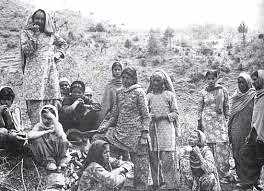
- The Brahmo Samaj came into being in 1828 as a result of the ceaseless efforts of Raja Ram Mohan Roy who had at first organised the Atmiya Sabha.
- It preached the unity of God and being dissatisfied with the orthodox creed of idol worship, denounced it.
- It accepted only rationalistic explanation of religious tenets and rejected the dogmas. With the object of propagating his views the Raja started the Samavada Kaumadi.
- His death in 1833 gave a rude shock to the Sabha, but it regained strength under the guidance of Devendranath Tagore and Keshab Chandra Sen.
- The Paramhansa Sabha was founded in 1849 but its influence did not extend to a large number of people. Then Dr. Atma Ram established the Prarthana Samaj with the object of introducing rational worship and social reform.
- The Theosophical Society was first started in U.S.A. in 1875 by Blavatsky in conjunction with Olcott. They came to India in 1879 and set up their headquarters at Adyar (Madras). Mrs. Annie Besant enrolled herself as a member of the society in 1889. She was its chief organiser and promoter in this country and dedicated her life to its work. The aims of the Society were to rejuvenate ancient religions and lend them sufficient strength.
- The Rama Krishna Mission. Swami Vivekanand a seer of magnetic personality and world-famed expositor of the Hindu philosophy, founded the Rama Krishna Mission in 1889 with the object of expounding the Hindu religion of rational basis.
- The Arya Samaj. Swami Dayanand who could not reconcile himself to the dogmas in the Hindu religion founded the Arya Samaj in 1875 with the object of purging it. His teachings are contained in the Satyarth Prakash and he has criticized almost all religions He desired to restore religious view of the Rig Vedic period. He was a staunch opponent of idol worship. He really did yeoman’s service to Hinduism and the wave of conversions to Christianity and Islam was checked considerably.
- The Rahnumai Mazdayasan. It was a Parsi organisation brought into existence in 1851 under the patronage of Dadabhai Naurojee. It did commendable service to the Parsi religion and community .
- Christian Missionaries. There was a great influx of Christian Missionaries in India after 1813. They came to this land with the object of carrying on proselytisation and in the beginning succeeded in converting some high caste Hindus to Christianity, but later on they diverted their attention to the depressed classes where they found much scope for their work. They succeeded in creating a small Christian community in India but the indirect effect of their activities was that the Indians began to reform their religions to checkmate exploitation of their shortcomings by the Christian Missionaries.
- The Gurudwara Prabandhak Committee. The Sikhs did not lag behind other communities in matters of reform. They felt that their Gurudwaras were not being managed properly and the Mahants who held their charge had given themselves up to a life of luxury. So the Gurudwara Prabandhak Committee was constituted. It was recognised by the government who transferred the control of Gurudwaras to this committee.
- The Prarthana Samaj opened night schools for the labourers. It also maintained a Depressed Classes Mission, a Ladies Association and an Orphanage and Founding Asylum at Pandharpur. Justice Ranade was one of its most active workers.
- The Deccan Education Society was started in 1884 with the purpose of spreading the principle of ‘simple living and high thinking’. It also aimed at spreading education. The Fergusson College was founded by it. Gokhale and Tilak were its members.
- Bhoodan Yajna. Acharya Vinoba Bhave realising the hard lot of the landless people in villages undertook to effect Agrarian revolution.
- He started his work in 1950 and since then has been touring the country on foot appealing to big landlords to donate land to him for distribution among the poor landless villagers.
- The object of this movement is to secure economic justice in the country. The Acharya has received sincere co-operation from all quarters of the country and several hundred thousand acres of land has been made available to him.
Facts To Be Remembered
|
Facts To Be Remembered
|
- Shri Jai Prakash Narain, the leader of the Socialist Party, has followed the suit.
- Aligarh Movement—Sir Syed Ahmed Khan, the pioneer of Aligarh Movement attempted to modernize the Muslims and encouraged them to get English education. The Movement made valuable contribution to the educational, social and economic progress of the Muslims. It opposed to Indian nationalism and the All India Congress because it depended on the favour of the English.
- Arhar Movement—The Movement was founded under the leadership of Maulana Muhammed Ali, Hakim Ajmal Khan, Hasan Imam and others. These youngmen disliked the Loyalist politics of the Aligarh school. Influenced by the modern ideas they advocated active participation on the militant nationalist movement.
- Ahmedia Movement—This Muslim Reform Movement was launched by Mirza Ghulam Ahmed in 1899. It emphasised the universal and humanitarian character of Islam and tried to promote cordial relations among members of various communities. It started a number of schools and colleges where modern education was imparted.
- Servants of India Society— Founded in 1905 by Gokhale with its headquarters at Poona. It imparted welfare work for the Adivasis, Harizans, Backward classes and tribals organized the work of political education and agitation, basing it on a careful study of public questions. Created among the people a deep and passionate love of India and seeking its highest fulfilment in service and sacrifice.
Promoted good will and cooperation among the different communities.
Points To Be Remembered
|
- Ghadar Party— It was formed in 1913 in USA by Indian revolutionaries in USA and Canada. Its purpose was to wage revolutionary war against the British to India. The Ghadarists fixed 21st February, 1915 as the date for an armed revolt in the Punjab. Unfortunately, the authorities came to know of these plans and took immediate action. The rebellious regiments were disbanded and their leaders were either imprisoned or hanged.
- Red Shirts Movement— Inspired by the Dandi March of Gandhi, Khan Abdul Ghaffar Khan, popularly known as the “Frontier Gandhi” organised the Society of Khudai Khidmatgars, popularly known as Red Shirts. They were pledged to non-violence and the freedom struggle.
- Satya Shodhak Samaj— One of the earliest movements which took up the cause of the lower castes against Brahman domination was Satya Shodak Samaj of Jyotiba Phule in Maharashtra. It insisted on the discarding of sacrodotal authority of the Brahmanas and tried to make the lower castes conscious of their rights through education.
Facts To Be Remembered
|
- Sri Narayana Dharma Pratipalana Yogam—In the South the first step in the direction of organising a movement of lower castes was taken by the Ezhavas. Sri Narayan Guru founded the SNDP Yogam with a view to break the social taboos imposed by the Brahmanas.
- Justice Movement—In 1915 T.N. Nair and P. Tyagaraja started the Justice Movement to service jobs and representation for the non-Brahmanas in legislature.
- All India Depressed Classes Federation—In 1920, B.R. Ambedkar organised this federation for the protection of depressed classes against higher castes.
- Vaikom Satyagraha—A satyagraha was organised in Kerala (March 1924) for the use of the temple roads by avarnas like Ezhavas and Pulayas. Many savarna organisations such as Nair service Society, Nair Samajam and Kerala Hindu Sabha supported the Satyagraha. On 30th march, the satyagrahis led by K.P. Kesava Menon, marched towards the temple. They were arrested and sentenced to imprisonment.
- Harijan Sevak Sangh—In 1932 Mahatma Gandhi founded it which worked for the upliftment of the backward classes and provided necessary facilities for education, medical treatment etc. Ambedkar was also associated with their sangh. However, he was not quite happy with the activities of the Harijan Sevak Sangh and the attitude of the Indian National Congress towards the lower castes. Therefore, he withdrew from the sangh and started a fresh movement for the protection of interests of the lower castes.
Caste, Peasant And Trade Union Movements
South India
Justice Movement
- It was an intermediate caste movement launched in Madras around 1915-16 by C.M Mudaliar, T.M. Nair and P. Tyagaraja Chetti on behalf of intermediate castes (like Tamil Vellalas, Mudaliars, and Chettiars; Telugu Reddis, Kammas and Baliza Naidus; and Malayali Nairs) and against Brahmin predominance in education, government service and politics.
- They founded a new political party, known as the “Justice Party” which exhibited its loyalty to the British government in the hope of getting more government jobs and representation in the new legislatures.
Self Respect Movement
- It was a populist and radical movement founded in 1925 in Tamil Nadu by E. V. Ramaswami Naicker popularly known as “Periyar”, against the Brahmin dominations.
- It advocated weddings without Brahmin priests, forcible temple entry, burning of the Manusmriti and outright atheism at times.
- Periyar founded a Tamil Journal, “Kudi Arasu”, in 1924 in order to propagate his ideas.
- Nadar Movement
- In the Remmad district of South Tamil Nadu, an untouchable caste of toddy tappers, and agricultural labourers, originally called “Shanans”, emerged as a prosperous mercantile class by the end of the 19th century, and began to call themselves by the prestigious title of “Nadars” and to claim Kshatriya status.
- They organised a “Nadar Mahajan Sangam” in 1910, imitated upper caste customs and manners (Sanskritization), and raised funds for educational and social welfare activities.
Movement of The Pallis
- In northern Tamil Nadu, the Pallis, a lower caste people, began to claim Kshatriya status from 1871.
- They called themselves “Vanniya Kula Kshatriya” and imitated upper caste customs like the taboo on widow remarriage.
Ezhava Movement
- The untouchable Ezhavas of Kerala, under the leadership of Nanu Asan (also known as “Narayan Guru”), began in the early 20th century and also imitate some of the customs of the higher castes.
- In the later period they became the firmest supporters of the communists in Kerala.
Nair Movement
- In the state of Travancore the intermediate caste of Nairs (numerically the dominant caste) started in the late 19th century a strong movement against the social and political domination of the Nambudri Brahmins and the non-Malayali Brahmins (Tamil and Maratha).
Facts To Be Remembered
|
Facts To Be Remembered
|
- C.V. Raman Pillai organised the Malayali Memorial (1891) which attacked Brahmin Predominance in government jobs, and his historical novel “Martanda Varma” (1891) attempted an evocation of the lost Nair military glory, but his group was easily accomodated within the official elite by the late 1890’s.
- After 1900, however, a more energetic Nair leadership emerged under K. Rama Krishna Pillai and M. Padmanabha Pillai. The former edited the “Swadeshabhimani” from 1906 till 1910 when its attacks on the court and demands for political rights led to his expulsion from Travancore.
- Padmanabha Pillai founded the Nair Service Society (1914) which worked for the social and political advancement of the Nairs.
Western India
Satyashodak Movement
- It was a movement started by Jyotiba Phule in Maharashtra.
- Phule, through his book “Ghulamgiri” (1872), and his organisation “Satyashodak Samaj” (1873), proclaimed the need to save the lower castes from the hypocritical Brahmins and their opportunic scriptures.
- This movement was dual in character. That is, it has an urban elite-based conservatism (the trend representing the desire of the urban-educated members of the intermediate and lower castes to move upwards in the social ladder by sanskritization) as well a more genuine rural mass-based radicalism (the trend representing the desire of the rural Maratha peasants to do away with the evils of the caste system itself).
Mahar Movement
- It was the movement of the untouchable Mahars of Maharashtra under the leadership of Dr. B.R. Ambedkar (their first graduate) from 1920’s. Their demands included the right to use tanks and enter temples, abolition of the ‘Mahar watan’ (traditional services to village chiefs), and separate representation in the legislative councils. From 1927, some of them even started burning of the Manusmriti as a symbol of a sharper break with Hinduism.
- In the late 19th century also the Mahars organised themselves under Gopal Baba Walangkar, an ex-serviceman and demanded more jobs in the army and other government services.
Northern and Eastern India
- Kaivartas of Midnapur in Bengal, belonging to a lower caste but economically being well-off, began calling themselves “Mahishyas”, and started a “Jati Nirdharani Sabha” (1897) and a “Mahishya Samiti (1901), which later played a prominent role in the nationalist movement.
- Namasudras of Faridpur in Bengal, an untouchable caste of poor peasants, started developing associations after 1901 at the initiative of a tiny elite of educated men and some missionary encouragement.
- Kayasthas of Northern and Eastern India, having interprovincial professional connections, started an All-lndia Kayastha Association and a newspaper, the Allahabad-based “Kayastha Samachar” by 1910.
- But on the whole, in northern and eastern India, Brahmin domination was less clear-cut, with other high-caste groups (like Rajputs and Kayasthas in Uttar Pradesh and Bihar, and Vaidyas and Kayasthas in Bengal) serving as buffers. Hence, mobilisation along caste lines came much later in these regions than in western and southern India. Further, movements of the lower and intermediate castes in these regions were not as prominent and powerful as those in Western and Southern India.
Causes for Their Rise
- Grievances of the educated men belonging to the lower and intermediate caste, eg. Justice Movement in South India, Satyashodak Movement (its urban aspect) in Maharashtra, etc.
- Desire of some of the lower castes to move upward in the social ladder through the process of Sanskritization (i.e., castes asserting a higher status for themselves through borrowing customs, manners and taboos from groups traditionally superior) eg; Movements of the Nadars and Pallis of Tamilnadu, those of Ezhavas and Nair of Kerala, etc.
- Desire of some radical elements to improve the lot of the lower and intermediate castes by attacking Brahmin domination. and at times by challenging the very basis of caste system, eg, Self-Respect Movement in Tamil Nadu, Mahar and Satyashodak movements (the latter in its rural aspect) in Maharashtra etc.
Peasant Movements And Trade Union Movements
Peasant Movements
Indigo Agitation of Bengal (1859-60)
- Oppression and exploitation of the peasants of Bengal by the European monopolistic indigo planters (vivid portrayal of this oppression by Dina Bandhu Mitra in his play, “Nil Darpan” 1860).
- Refusal of the peasants to cultivate indigo and their armed resistance against the platers (Bishnu Charan Biswas and Digambar Biswas) played a prominent role in this resistance).
- Organisation of powerful campaign by the Bengal intelligensia in support of the rebellious peasants.
- Appointment of the Indigo Commission of 1860 by the Government and removal of some of the abuses of Indigo cultivation.
Pabna Movement of Peasant Unrest in East Bengal (1872-76)
- Oppression of the peasantry by Zamindars through frequent recourse to ejection, harassment, illegal seizure of property, arbitrary enhancement of rent and use of force.
- Organisation of no-rent unions by the peasants and their armed attacks on the Zamindars and their agents (Pabna district was the storm-centre of this movement, and hence the movement is known as the “Pabna Movement”)
- Suppression of the movement only after armed intervention by the government .
- Appointment of an enquiry committee to look into the complaints of the peasantry and the enactment of the Bengal Tenancy Act of 1885 which conferred permanency of tenure upon some classes of tenants.
Deccan Riots (1875)
- Excessive land revenue demand of the British facilitating exploitation of peasantry by money-lenders.
- Social boycott of money-lenders by the peasants and its transformation into armed peasant revolt in the Poona and Ahmednagar districts of Maharashtra (here the peasants forcibly seized from the money-lenders debt bonds, decrees and other documents, and set them on fire).
- Failure of the police to suppress the riots which were finally put down with army help.
- Appointment of a Commission and the enactment of the Deccan Agriculturists’ Relief Act of 1879 which prohibited the imprisonment of the peasants of the Maharashtra Deccan for failure to repay debts to the moneylenders.
Peasant Unrest in Punjab (1890- 1900)
- Resentment of the peasants against the growing alienation of their lands to the moneylenders.
- Assaults and murders of money-lenders by the peasants.
- Enactment of the Punjab Land Alienation Act of 1902 which prohibited the transfer of lands from peasants to moneylenders and the mortgages for more than 20 years.
Champaran Satyagraha (1917)
- Oppression of the peasants of Champaran (a district in Bihar) by the European indigo planters through the system of “Tinkathia” (a system in which European planters holding thikadari leases from the big local zamindars made peasants cultivate indigo on part of their land at unremunerative price) and by charging Sharabheshi’ (rent-enhancement) or ‘Tawan’ (lumpsum compensation) if the peasants wanted to be exempted from the obligation to grow indigo.
- Refusal of the peasants either to grow indigo or to pay the illegal taxes; arrival of Gandhi along with Rajendra Prasad, J.B. Kripalani, A.N. Sinha, Mazhar-ul-Haq, Mahadev Desai, etc., in order to conduct a detailed enquiry into the condition of the peasantry and to get their grievances redressed.
- Initial attempt of the government to suppress the movement; Success of Gandhi in forcing the government to appoint an Enquiry Committee with himself as one of its members; Acceptance of the recommendations of the Committee by the Government and the abolition of the “Tinkathia” system.
Khaira Satyagraha (1918)
- Failure of crops due to drought in the Khaira district of Gujarat; refusal of the Government to exempt the peasants from the payment of land-revenue.
- Launching of a no-revenue campaign by the Khaira peasants under the leadership of Gandhi and Vallabhai Patel.
- Suspension of the land-revenue collection for the time being by the government.
- Moplah Rebellion (1921)
- Oppression and exploitation of the Muslim Moplah peasants of Malabar (N. Kerala) by the Hindu Zamindars (Jennis) and British government.
- Outbreak of the rebellion in August 1921 (after a police raid on Tirurangadi mosque in search of arms) and widespread attacks on police stations, public offices, communications, and houses of oppressive landlords and moneylenders.
- Total loss of control by the British over Ernad and Walluvanad taluks for several months; Establishment of “Republics” at several places by the Moplahs under leaders like Kunhammad Haji, Kalathingal Mammad, Ali Musaliar, Sithi Koya Thangal. etc.
- Bloody suppression of the rebellion by the British, leaving 2337 rebels killed, 1650 wounded and more than 45,000 as prisoners. (At Podnur 66 Moplah prisoners were shut in a railway wagon and died of suffocation on 20th November 1921).
- It was anti-British as well as anti-Zamindar, and to some extent anti-Hindu also because most of the local zamindars were Hindus.
Bardli Satyagraha (1928)
- Enhancement of land revenue by 22% in the Bardoli district of Gujarat by the British Government (1927).
- Organisation of a ‘No Revenue Campaign’ by the Bardoli peasants under the leadership of Sardar Vallabhbhai Patel, and their refusal to pay the land revenue at the newly enhanced rates.
- Unsuccessful attempts of the British to suppress the movement by large scale attachment of cattle and land; appointment of an Enquiry Committee to look into the land revenue assessment; Reduction of the land revenue on the basis of the Committee’s recommendations .
Emergence of Class-conscious Peasant Organisations
- Organisaffon of Ryots Assoclaffons and Agricultural Labour Unions in the Guntur district of Andhra by N.G. Ranga (July-December 1923) and their gradual spread to Krishna and West Godavari District (1924-26).
- Organisation of Kisan Sabhas in Bengal, Bihar. Uttar Pradesh and Punjab (1926-27).
- Organisations of the Andhra Provincial Ryots Associations by N.G. Ranga and B.V. Ratnam (1928).
- Foundation of the South Indian Federation of Peasants and Agricultural Labour in 1935 with N.G. Ranga as General Secretary and E.M.S. Namboodripad as a Joint Secretary.
- Holding of the first All-lndia Kisan Congress at Lucknow and the formation of the All-lndia Kisan Sabha (1936). Its first session was presided over by Swami Sahajanand, the peasant leader from Bihar. From 1936 onward All India Kisan Day was celebrated on Ist September every year.
Trade Union Movements
First Factories Commission and Act
- Due to the growing menace of all the evils of factory system, the First Factory Commission was appointed in Bombay in 1875 and the First Factories Act was passed in 1881.
Second Factories Commission and Act
- Another Factory Commission was appointed in 1884. Mr. Lokhande organised a conference of workers in Bombay and drew up a memorandum to be presented to the Factory Commission.
- This was the beginning of trade unionism in India. The memorandum included demands for a weekly rest, half an hour recess, compensation for disablement, payment of wages not later than 15th of every month, and limitation of hours work from 6 A.M. to 6 P.M.
- But the Second Factory Act (1891) which was passed on the recommendations of the second factory commission was another great disappointment, because it provided only a few improvements like a weekly holiday, fixation of working hours for only women and children, but the hours of work for men were still left unregulated.
Second Stage (1818-24)
- During the second stage, a good number of trade unions were organised. The Madras Labour Union (1918), was the first trade union of modern type in India. Its President Mr. B. P. Wadia, an active member of Home rule Movement took pains to develop it. Many unions were organised in other places.
- In 1920, the All India Trade Union Congress (AITUC) was organised at Bombay by N.M. Joshi and others and 64 trade unions with a total membership of about 1,40,000 were affiliated to it. While the interests of workers of different industries were looked after by the concerned unions, the AITUC looked after the interests of labour in general.
- The rise of trade unions was accompanied by a large number of strikes. The demands of the workers were an increase in wages, grant of bonus, rice allowance, reduction of working hours and extra holiday.
- Another important feature of trade unionism in India during this period was its inability to make much headway in the well established manufacturing industries like mining, textile, jute, etc. But it was strong and stable among those who are called “white colored employees”.
Third Stage (1924 - 34)
- During this stage the influence of Communist ideology was clearly seen at work. Communists have begun to infiltrate into the trade unions as early as 1920. Their infiltration had brought about a change in the pattern of strikes.
- Trade unionism during this stage received a set back due to the ideological conflicts among the trade unionists. Radical elements with an intention to use the trade union movement to further their political motives towed the line of the fraternal political body at Moscow. On the contrary, the moderates in trade unions desired to keep the movement away from the communists. Consequently the struggle to capture and strengthen their respective positions in the AITUC began widening the gulf between the Congress and the Communist followers.
- The ideological differences led to the division of the AITUC in 1929, when the moderate faction left it and formed a new organisation, viz. Indian Trade Union Federation (ITUF). A further split occured in the AITUC, and a section formed the “Red Tuc”. All these developments occurred when the country was under the impact of economic depression and Civil Disobedience Movement.
- One important achievement of the trade union movement during this period was the enactment of the Trade Union Act in 1926. This Act made provisions for voluntary registration and gave certain rights and privileges to registered trade unions in return for certain obligations.
- Towards the end of this period attempts were made to forge unity among various trade unions. The attempts by people like N.M. Joshi, R.R. Bakhale, etc. resulted in the foundation of National Trade Union Federation (NTUF) in 1933.
Fourth Stage (1935-39)
- In the fourth stage union activities were revived and there was also an increase in strikes. There are some reasons for the revival of the union activities during this period:
- The Provincial Congress Ministries, which had come into existence with the government of India Act of 1935 had adopted a policy of keeping industrial peace not by suppressing the labour organisations and denying their demands, but by prescribing minimum standards of living and general rights of citizenship.
- The Act of 1935 provided for the election of labour representative through labour or trade union constituencies.
- A change of attitude of the employers also encouraged the growth of trade unionism. It had been suggested by the ILO that the employers should not be hostile but friendly towards the trade unions.
- Unity moves were also initiated which resulted in the merger of Indian Trades Union Federation (ITUF) with the National Trade Union Federation (NTUF), the merger of the Red Tuc with AITUC and finally the affiliation of NTUF with AITUC in 1938.
Fifth Stage (1939-45)
- The fifth stage corresponds with the War period. The World War II indirectly offered unprecedented protection to Indian Industries. The supply of foreign goods was denied to the Indian market partly because there was shortage of shipping facilities and partly because British industries in India and abroad swtiched over to war production. As a result Indian Industries stepped up their activity. Industrial production in India increased and established new records. However, prices rose sharply and inflation prevailed on account of the continuous purchase by Great Britain in India against sterling securities. There was rapid increase in profits but not in the wages.
- Strikes were, however, very few and wherever they were, they brought concessions to workers. The decline in the number of strikes was due to certain factors:
- l The communist leaders who supported war did not favour strikes.
- l Other sections of trade unions did not have the right type of leaders to guide the movement and to formulate the grievances of the workers.
- l The attitude of the employers was not that hostile.
- l The government of India, under the Defence of India Rules, assumed powers to prevent strikes and refer any dispute for adjudication and enforce the award.
- On the whole, the importance given to trade unions was enhanced.
- A permanent tripartite collaborative, machinery was formed consisting of government representatives, labour union leaders and employers.
- And under the National Service Ordinance of 1940, the rights of the workers were protected, while it was made clear that it was their duty to work.
- Likewise the Essential Services Maintenance Ordinance of 1941 prohibited the employers from dismissing the workers without valid reasons.
Sixth Stage (1945-47)
- The sixth stage i.e., the postwar period was also marked by a further growth in trade unionism, since the end of war brought no material benefits to the workers. The rise in prices and the cost of living showed no signs of abatement in the post-war period. The political developments in the country during this period also promoted the growth of trade unionism. Every political party wanted to secure a foot-hold in the labour movement. Moreover, the attitude of the government was also helpful in this regard. Both the Central and State governments, far from suppressing the labour movement, have realised that labour has to play a valuable role in the changed circumstances. So, the Trade Union Act was amended in 1947 to secure compulsory recognition of trade unions by the employers, provided they fulfilled certain requirements.
- Another important feature of trade union movement during this period was the increase in the number of women member of the trade union. Due to this, their position in trade unions as well as society enhanced considerably.
- A large number smaller unions came to be organised. But these small and local unions could not carry out effective collective bargaining and ensure the effective implementation of awards and agreements, while the employees organisations became powerful and centrally organised. This necessitated the formation of new inter-state, regional organisations among the workers.
- As a result, the strikes increased in number. Bombay and West Bengal, followed by Madras and Uttar Pradesh were the leading states so far as the industrial disputes are concerned.The Government of Independent India was gre- atly worried, becuase the rising unrest caused a decline in the industrial production. Therefore, in December 1947, an Industries Truce Conference was held and attended by the representatives of government workers and employers. This concil- iated the workers, who accepted the principle of compulsory conciliation and arbitration by the government and the Industrial Disputes Act of 1947 (which provided for the appointment of concilia- tion machinery) was passed.
Miscellaneous Informations
- Rabindranath Tagore remarked: Rammohan was the only person in his time, in the whole world of man, to realise completely the significance of the Modern Age. He knew that the ideal of human civilization does not lie in the isolation of independence, but in the brotherhood of interdependence of individuals as well as nations in all spheres of thought and activity.”
- Surendranath Banerjee described the Derozians as, the pioneers of the modern civilization of Bengal, the conscript fathers of our race whose virtues will excite veneration and whose failings will be treated with gentlest consideration.
- The Rahnumai Mazdayasnan: It was a Parsi organisation brought into existence in 1851 under the patronage of Dadabhai Naurojee. It did commendable service to the Parsi religion and community.
- Mirza Ghulam Mohammed of quadian (Punjab) declared himself the promised Mahdi and started the Ahmediya movement. He was a great reactionary in matters of social reform and opposed the abolition of the Purdah and defended divorce and polygamy.
- Gokhale could not pull on with Tilak, so he started the Servants of India Society in 1885. It aimed at producing national workers for India and promoting interests of the Indians by all means.
- Mr. N.M. Joshi founded the Social Service League in 1909. His object was to survey the Indian society to ascertain the nature and scope of work needed to reform the Indian Society.
- The evil custom of infanticide was wiped out of this land through the efforts of Lord Bentinck, Wilkinson and others.
- The Charter Act of 1833 abolished slavery in India. Slave trade became illegal in 1843 while it became a criminal offence under the Penal Code of 1860.
- Rai Sahib Harbilas Sarda put forth a Bill in the Legislative Assembly in 1928 with a view to securing prohibition of child marriage. The Bill became an Act in 1929 and is called the Sarda Act of 1929. According to this Act, a girl below 14 or a boy below 18 cannot contract marriage.
➢ Factors Giving Rise to Desire for Reform
- The dawn of the nineteenth century witnessed the birth of a new vision—a modern vision among some enlightened sections of Indian society.
- Which have become as much a part of daily existence in the whole of the Indian subcontinent as having the fruits of these reform movements.
➢ Impact of British Rule
- It came at a time when India, in contrast to an enlightened Europe of the eighteenth century affected in every aspect by science and scientific outlook, presented the picture of a stagnant civilization and a static and decadent society.
➢ Social Conditions Ripe for Reform
- Religious and Social: Indian society in the nineteenth century was caught in a vicious web created by religious superstitions and social obscurantism. Hinduism had become steeped in magic and superstition.
- Depressing Position of Women: Attempts to kill female infants at birth were not unusual. Child marriage was another bane of society. The practice of polygamy prevailed and in Bengal, under Kulinism, even old men took very young girls as wives, Sati which Raja Rammohan Roy described as a "murder according to every shastra”
- The Caste Problem: This entailed a system of segregation, hierarchically ordained on the basis of ritual status. Under a rigid caste system, social mobility was checked, the social division grew, and individual initiative was thwarted.
- Opposition to Western Culture: Faced with the challenge of the intrusion of colonial culture and ideology, an attempt to reinvigorate traditional institutions and to realize the potential of traditional culture developed during the nineteenth century.
➢ New Awareness among Enlightened Indians
- The impact of modern Western culture and consciousness of defeat by a foreign power gave birth to a new awakening. Factors such as the growth of nationalist sentiments, the emergence of new economic forces, the spread of education, the impact of modern Western ideas and culture, and increased awareness of the world strengthened the resolve to reform.
➢ Middle-Class Base
- There was a significant contrast between the broadly middle-class ideals derived from a growing awareness of contemporary developments in the West, and a predominantly non-middle class social base.
- The intelligentsia of nineteenth-century India's roots lay in government service or the professions of law, education, journalism, or medicine—with which was often combined some connection with the land in the form of the intermediate tenures.
➢ The Intellectual Criteria
- Raja Rammohan Roy firmly believed in the principle of causality linking the whole phenomenal universe and demonstrability as the sole criterion of truth.
- Akshay Kumar Dutt, while declaring that "rationalism is our only preceptor", held that all-natural and social phenomena could be analyzed and understood by purely mechanical processes.
- According to Swami Vivekananda, the same method of investigation which applies to sciences should be the basis on which religion must justify itself.
- The evolution of an alternative cultural-ideological system and the regeneration of traditional institutions were two concerns of these movements. These concerns were manifest in the attempts to reconstruct traditional knowledge, the use and development of vernacular languages, creation of an alternative system of education, defense of religion, efforts to regenerate Indian art and literature, the emphasis on Indian dress and food, attempts to revitalize the Indian systems of medicine and to research the precolonial technology for its potential.
➢ Two Streams
- The reform movements could broadly be classified into two categories—the reformist movements like the Brahmo Samaj, the Prarthana Samaj, the Aligarh Movement, and the revivalist movements like Arya Samaj and the Deoband movement.
- The only difference between one reform movement and the other lay in the degree to which it relied on tradition or reason and conscience.
➢ The direction of Social Reformat
- The humanistic ideals of social equality and the equal worth of all individuals which inspired the newly educated middle class influenced the field of social reform in a major way.
- The social reform movements were linked to the religious reforms primarily because nearly all social ills like untouchability and gender-based inequity derived legitimacy from religion in one way or the other.
- Organizations such as the Social Conference, Servants of India Society, and the Christian missionaries were instrumental in social reform along with many enlightened individuals like Jyotiba Phule, Gopalhari Deshmukh, K.T. Telang, B.M. Malabari, D.K. Karve, Sri Narayana Guru, E.V. Ramaswami Naicker and B.R. Ambedkar.
➢ Fight for Betterment of Position of Women
- The improvement of the status of women in the society was considered to be vital, and social reformers worked towards this since a radical change in the domestic sphere— where initial socialization of the individual takes place and where a crucial role is played by women— was the need of the hour.
➢ Abolition of Sati
- Influenced by the frontal attack launched by the enlightened Indian reformers led by Raja Rammohan Roy, the government declared the practice of Sati illegal and punishable by criminal courts as culpable homicide.
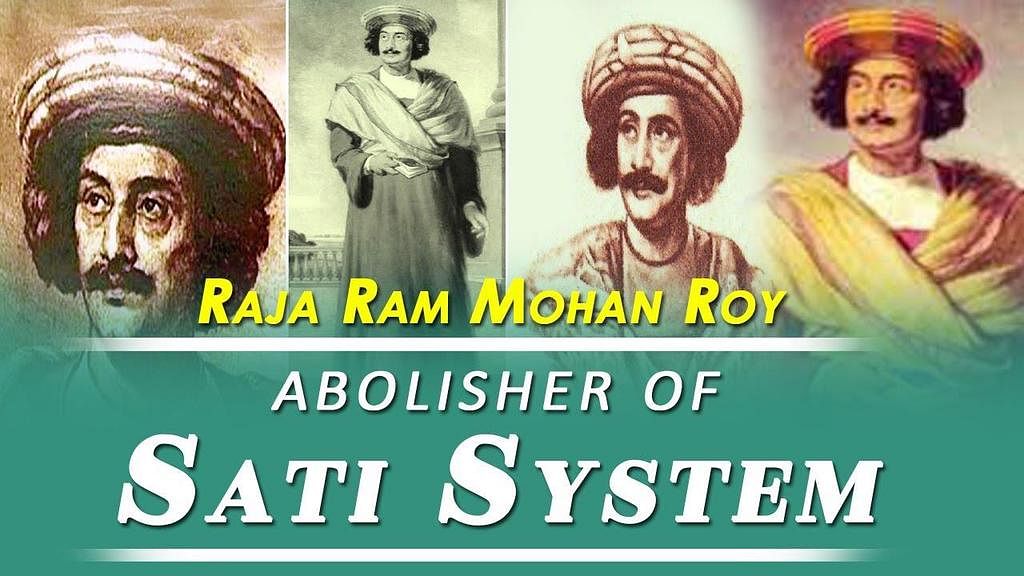
- The regulation of 1829 (Regulation XVII, A.D. 1829 of the Bengal Code) was applicable in the first instance to Bengal Presidency.
➢ Preventing Female Infanticide
- The practice of murdering female infants immediately after their birth was a common practice among upper-class Bengalis and Rajputs who considered females to be an economic burden.
- The Bengal regulations of 1795 and 1804 declared infanticide illegal and equivalent to murder.
- An Act passed in 1870 made it compulsory for parents to register the birth of all babies.
➢ Widow Remarriage
- The Brahmo Samaj had the issue of widow remarriage high on its agenda and did much to popularise it due to the efforts of Pandit Ishwar Chandra Vidyasagar (1820-91), that the Hindu Widows’ Remarriage Act, 1856, was passed.
 Pandit Ishwar Chandra Vidyasagar
Pandit Ishwar Chandra Vidyasagar - Jagannath Shankar Seth and Bhau Daji were among the active promoters of girls’ schools in Maharashtra.
- Vishnu Shastri Pandit founded the Widow Remarriage Association in the 1850s.
- Karsondas Mulji started the Satya Prakash in Gujarati in 1852 to advocate widow remarriage.
- Similar efforts were made by Professor D.K. Karve in western India and by Veerasalingam Pantulu in Madras. Karve himself married a widow in 1893.
- The right of widows to remarriage was also advocated by B .M. Malabari, Narmad (Narmadashankar Labhshankar Dave), Justice Govind Mahadeo Ranade, and K. Natarajan among others.
➢ Controlling Child Marriage
- The Native Marriage Act (or Civil Marriage Act), 1872 signified legislative action in prohibiting child marriage.
- The relentless efforts of a Parsi reformer, B.M. Malabari was rewarded by the enactment of the Age of Consent Act (1891) which forbade the marriage of girls below the age of 12.
- The Sarda Act (1930) further pushed up the marriage age to 18 and 14 for boys and girls, respectively.
- In free India, the Child Marriage Restraint (Amendment) Act, 1978 raised the age of marriage for girls from 15 to 18 years and for boys from 18 to 21.
➢ Education of Women
- The Christian missionaries were the first to set up the Calcutta Female Juvenile Society in 1819.
- The Bethune School, founded by J.E.D. Bethune, president of the Council of Education in Calcutta in 1849 was the first fruit of the powerful movement for women’s education that arose in the 1840s and 1850s.
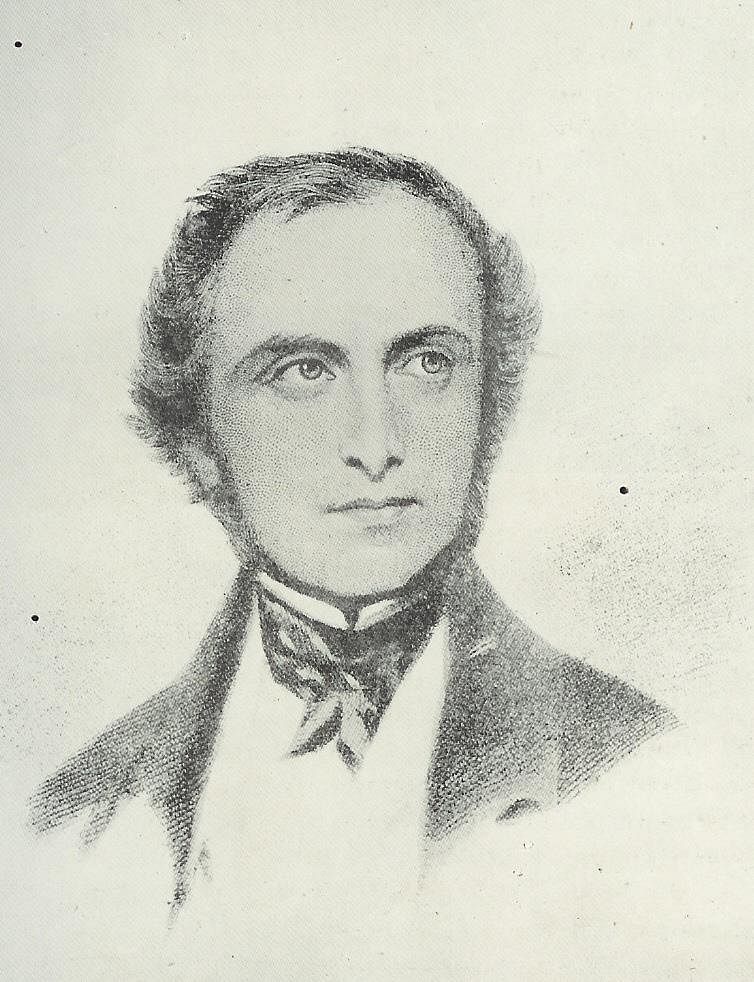 J.E.D Bethune
J.E.D Bethune - Pandit Ishwar Chandra Vidyasagar was associated with no less than 35 girls’ schools in Bengal and is considered one of the pioneers of women's education.
- Charles Wood’s Despatch on Education (1854) laid great stress on the need for female education.
- In 1914, the Women’s Medical Service did a lot of work in training nurses and midwives.
- The Indian Women’s University set up by Professor D.K. Karve in 1916 was one of the outstanding institutions imparting education to women. In the same year, Lady Hardinge Medical College was opened in Delhi.
- Health facilities began to be provided to women with the opening of Dufferin Hospitals in the 1880s.
- Sarojini Naidu went on to become the president of the Indian National Congress (1925) and later the governor of the United Provinces (1947- 49).
➢ Women’s Organisations
- In 1910, Sarla Devi Chaudhurani convened the first meeting of the Bharat Stree Mahamandal in Allahabad. Considered the first major Indian women’s organization set up by a woman, its objectives included the promotion of education for women, the abolition of the purdah system, and improvement in the socio-economic and political status of women all over India. Sarla Devi believed that the man working for women’s upliftment lived ‘under the shade of Manu’.
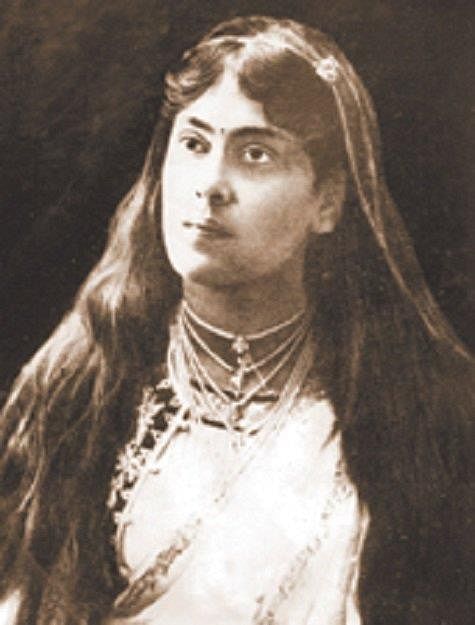 Sarla Devi Chaudhurani
Sarla Devi Chaudhurani - Ramabai Ranade founded the Ladies Social Conference (Bharat Mahila Parishad), under the parent organization National Social Conference, in 1904 in Bombay.
 Ramabai Ranade
Ramabai Ranade - Pandita Ramabai Saraswati founded the Arya Mahila Samaj to serve the cause of women. She pleaded for improvement in the educational syllabus of Indian women before the English Education Commission which was referred to Queen Victoria. This resulted in medical education for women which started in Lady Dufferin College.
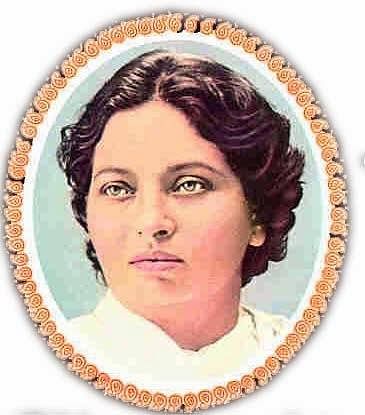 Pandita Ramabai Saraswati
Pandita Ramabai Saraswati - Later Ramabai Ranade established a branch of Arya Mahila Samaj in Bombay.
- In 1925, the National Council of Women in India, a national branch of the International Council of Women, was formed. Mehribai Tata played a vital role in its formation and advancement.
- Other women who held important positions on the executive committee of the council included Cornelia Sorabji, India’s first lady barrister; Tarabai Premchand, wife of a wealthy banker; Shaffi Tyabji, a member of one of Mumbai’s leading Muslim families; and Maharani Sucharu Devi, daughter of Keshab Chandra Sen.
- The All India Women’s Conference (AlWCf founded by Margaret Cousins in 1927, was perhaps the first women’s organization with an egalitarian approach. Its first conference was held at Ferguson College, Pune. Its objectives were to work for a society based on principles of social justice, integrity, equal rights, and opportunities; and to secure for every human being, the essentials of life, not determined by the accident of birth or sex but by planned social distribution.
- Sarda Act (1929), Hindu Women's Right to Property Act (1937), Factory Act (1947), Hindu Marriage and Divorce Act (1954), Special Marriage Act (1954), Hindu Minority and Guardianship Act (1956), Hindu Adoption and Maintenance Act (1956), the Suppression of Immoral Traffic in Women Act (1958), Maternity Benefits Act (1961), Dowry Prohibition Act (1961) and Equal Remuneration Act (1958,1976).
The worst-hit by the discriminatory institution of caste were the 'untouchables' or the scheduled castes/Dalits
➢ Factors that Helped to Mitigate Caste-based Discrimination
- British rule, perhaps without intention, created certain conditions that undermined caste consciousness to an extent.
- The social reform movements also strove to undermine caste-based exploitation.
- The national movement took inspiration from the principles of liberty and equality against the forces which tended to divide the society. Gandhi, in 1932, founded the All India Harijan Sangh.
- With increasing opportunities for education and general awakening, there were stirrings among the lower castes themselves.
- The struggle of the depressed classes led to the provision of special representation for these classes in the Government of India Act, 1935.
- Sri Narayana Guru in Keralacoined the slogan “one religion, one caste, one God for mankind”, which his disciple Sahadaran Ayyapan changed into “no religion, no caste, no God for mankind”.
- Dr Bhimrao Ambedkar led the Mahad Satyagraha in March 1927 to challenge the regressive customs of the caste Hindus. Dr Ambedkar established the Bahishkrit Hitakarini Sabha in 1924 to highlight the difficulties and grievances of the Dalits before the government, its motto was: 'Educate, Agitate and Organise’.
- The Constitution of free India has made equality and non-discrimination on basis of caste imperative.
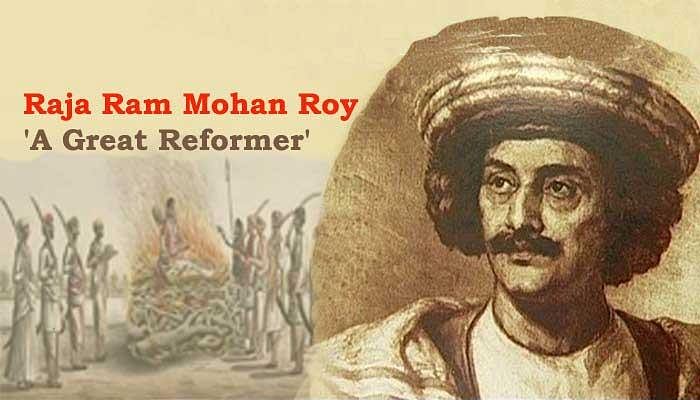
- Raja Rammohan Roy (1772-1833), often called the father of the Indian Renaissance and the maker of Modern India, wrote Gift to Monotheists (1809) and translated into Bengali the Vedas and the five Upanishads to prove his conviction that ancient Hindu texts support monotheism.
- In 1814, he set up the Atmiya Sabha (or Society of Friends) in Calcutta. He declared that Vedanta is based on reason and that, if reason demanded it, even a departure from the scriptures is justified.
- In his Precepts of Jesus (1820), he tried to separate the moral and philosophical message of the New Testament Raja Rammohan Roy founded the Brahmo Sabha in August 1828, it was later renamed Brahmo Samaj.
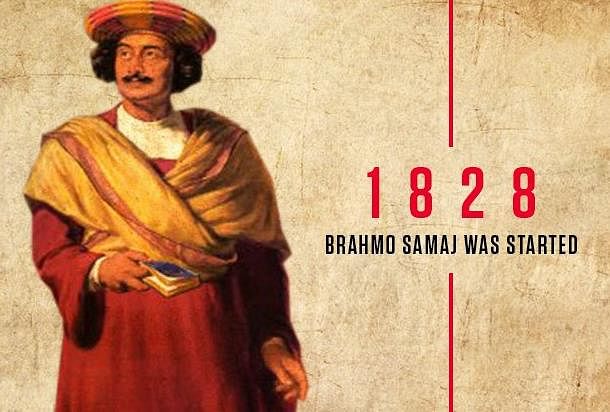
- The Samaj was committed to “the worship and adoration of the Eternal, Unsearchable, Immutable Being who is the Author and Preserver of the Universe” the Samaj s opposition to idolatry and meaningless rituals.
- The long-term agenda of the Brahmo Samaj—to purify Hinduism and to preach monotheism— was based on the twin pillars of reason and the Vedas and Upanishads.
- Roy's progressive ideas met with strong opposition from orthodox elements like Raja Radhakant Deb who organized the Dharma Sabha to counter Brahmo Samaj propaganda.
- Roy's death in 1833 was a setback for the Samaj’s mission.
The features of Brahmo Samaj may be summed thus:
(i) It denounced polytheism and idol worship.
(ii) It discarded faith in divine avatars (incarnations).
(iii) It denied that any scripture could enjoy the status of ultimate authority transcending human reason and conscience.
(iv) It took no definite stand on the doctrine of karma and transmigration of soul and left it to individual Brahmos to believe either way.
(v) It criticized the caste system.
(a) Raja Rammohan Roy’s Efforts at Social Reform
- Rammohan was a determined crusader against the inhuman practice of sati. He started his anti- sati struggle in 1818.
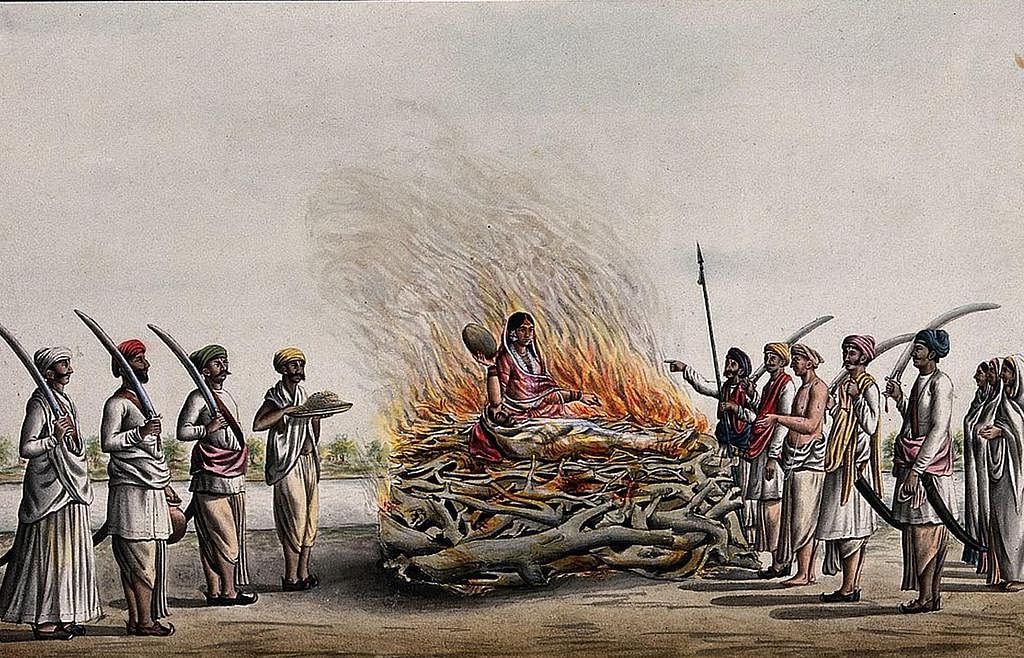 Practice of Sati
Practice of Sati - His efforts were rewarded by the Government Regulation in 1829 which declared the practice of sati a crime. Roy attacked polygamy and the degraded state of widows and demanded the right of inheritance and property for women.
- He supported David Hare's efforts to found the Hindu College in 1817, while Roy’s English school taught mechanics and Voltaire's philosophy. In 1825, he established a Vedanta college where courses in both Indian learning and Western social and physical sciences were offered.
- Rammohan was a gifted linguist Roy condemned oppressive practices of Bengali zamindars and demanded fixation of maximum rents. He also demanded abolition of taxes on tax-free lands.
- Roy had David Hare, Alexander Duff, Debendranath Tagore, P.K. Tagore, Chandrashekhar Deb, and Tarachand Chakraborty as his associates.
(b) Debendranath Tagore and Brahmo Samaj
- Maharishi Debendranath Tagore (1817-1905), father of Rabindranath Tagore joined the Samaj in 1842.
- Tagore headed the Tattvabodhini Sabha (founded in 1839 ) which, along with its organ Tattvabodhini Patrika in Bengali, was devoted to the systematic study of India’s past with a rational outlook and to the propagation of Rammohan’s ideas the Brahmo Samaj came to include prominent followers of Rammohan, the Derozians and independent thinkers such as Ishwar Chandra Vidyasagar and Ashwini Kumar Datta.
- Tagore worked on two fronts:
(i) Within Hinduism, the Brahmo Samaj was a reformist movement.
(ii) Outside, it resolutely opposed the Christian missionaries for their criticism of Hinduism and their attempts at conversion.
(c) Keshab Chandra Sen and the Brahmo Samaj
- The Brahmo Samaj experienced another phase of energy when Keshab Chandra Sen (1838-1884) was made the acharya by Debendranath Tagore soon after the former joined the Samaj in 1858.
- Keshab (also spelled Keshub) was instrumental in popularising the movement, and branches of the Samaj were opened outside Bengal—in the United Provinces, Punjab, Bombay, Madras and other towns.
- Keshab Chandra Sen was dismissed from the office of acharya in 1865. Keshab and his followers founded the Brahmo Samaj of India in 1866, while Debendranath Tagore's Samaj came to be known as the Adi Brahmo Samaj.
- After 1878, the disgusted followers of Keshab set up a new organization, the Sadharan Brahmo Samaj. The Sadharan Brahmo Samaj was started by Ananda Mohan Bose, Shibchandra Deb, and Umesh Chandra Datta. A number of Brahmo centers were opened in Madras province.
- In Punjab, the Dayal Singh Trust sought to implant Brahmo ideas by the opening of Dayal Singh College at Lahore in 1910.
➢ Significance of the Brahmo Samaj
- It condemned the prevailing Hindu prejudice against going abroad. It worked for a respectable status for women in society—condemned sati, worked for abolition of purdah system, discouraged child marriage and polygamy, crusaded for widow remarriage and for provisions of educational facilities.
- It also attacked casteism and untouchability though in these matters it attained only limited success.
- In 1867, Keshab Chandra Sen helped Atmaram Pandurang found the Prarthana Samaj in Bombay.
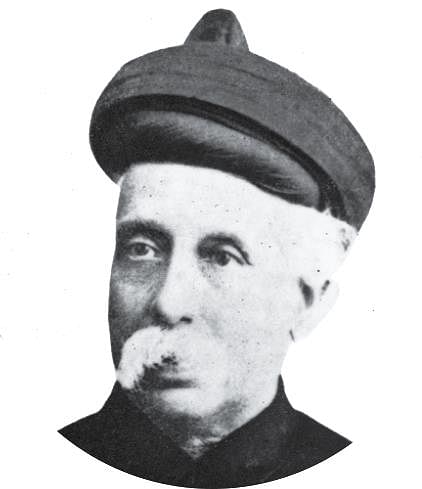 Atmaram Pandurang
Atmaram Pandurang - A precursor of the Prarthana Samaj was the Paramahansa Sabha, something like a secret society to spread liberal ideas and encourage the breakdown of caste and communal barriers.
- Mahadeo Govind Ranade (1842-1901), joined the samaj in 1870, Other leaders of the samaj were R.G. Bhandarkar (1837- 1925) and N.G. Chandavarkar (1855-1923). The Prarthana Sabha was very attached to the bhakti cult of Maharashtra.
- There was a four-point social agenda also:
(i) Disapproval of caste system.
(ii) Women’s education.
(iii) Widow remarriage.
(iv) Raising the age of marriage for both males and females. - Dhondo Keshav Karve and Vishnu Shastri were champions of social reform with Ranade.
- ‘Young Bengal Movement’- The late 1820s and early 1830s. A young Anglo-Indian, Henry Vivian Derozio (1809-31), who taught at the Hindu College from 1826 to 1831, was the leader and inspirer of this progressive trend.
Henry Vivian Derozio
- The main reason for their limited success was the prevailing social conditions at that time, which were not ripe for the adoption of radical ideas.
- The Derozians lacked any real link with the masses, for instance, they failed to take up the peasants’ cause. Their radicalism was bookish in character.
- Despite their limitations, the Derozians carried forward Rammohan Roy's tradition of public education on social, economic and political questions. For instance, they demanded induction of Indians in higher grades of services, protection of ryots from oppressive zamindars, better treatment to Indian labour abroad in British colonies, revision of the Company’s charter, freedom of press and trial by jury.
- Surendranath Banerjea was to describe the Derozians as "the pioneers of the modern civilization of Bengal, the conscript fathers of our race whose virtues will excite veneration and whose failings will be treated with gentlest consideration”.
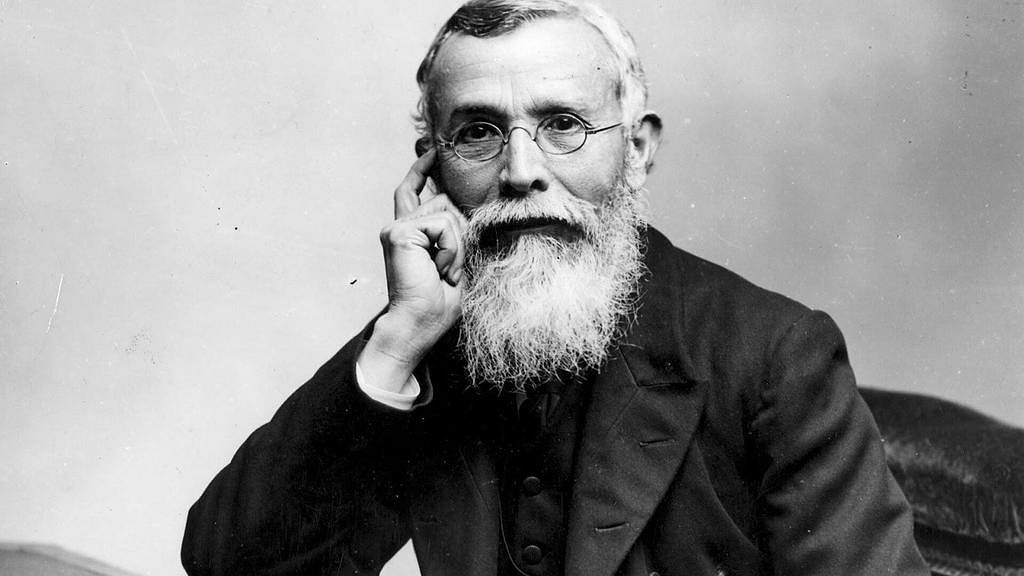 Surendranath Banerjea
Surendranath Banerjea
- Vidyasagar’s ideas were a happy blend of Indian and Western thought. He believed in high moral values, was a deep humanist, and was generous to the poor.
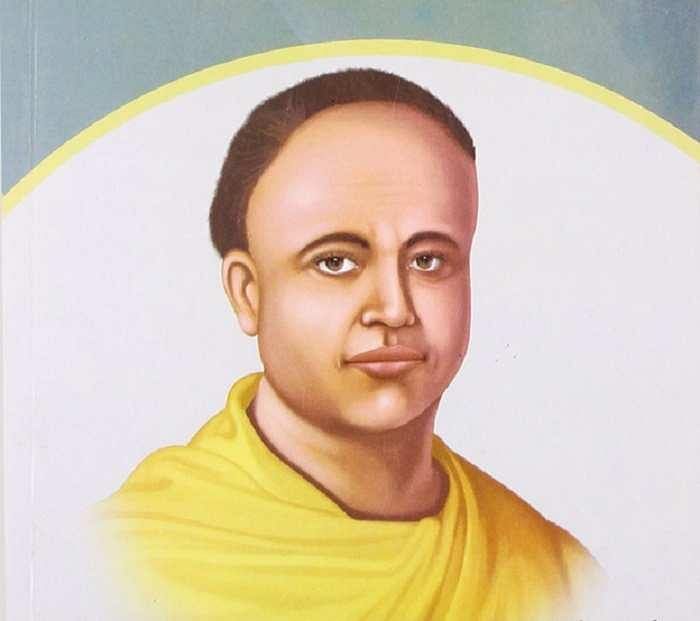 Ishwar Chandra Vidyasagar
Ishwar Chandra Vidyasagar - Vidyasagar started a movement in support of widow remarriage which resulted in legalization of widow remarriage. He was also a crusader against child marriage and polygamy. He did much for the cause of women’s education.
- As government inspector of schools, he helped organize thirty-five girls’ schools many of which he ran at his own expense.
- Balshastri Jambhekar (1812-1846) was a pioneer of social reform through journalism in Bombay, he attacked brahminical orthodoxy and tried to reform popular Hinduism. He started the newspaper Darpan in 1832.
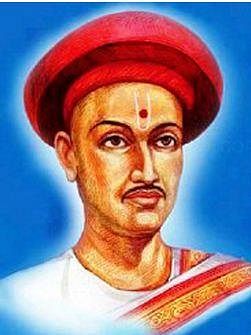 Balshastri Jambhekar
Balshastri Jambhekar - Known as the father of Marathi journalism. In 1840, he started Digdarshan which published articles on scientific subjects as well as history.
- Jambhekar founded the Bombay Native General Library and started the Native Improvement Society of which an offshoot was the Students Literary and Scientific Library.
- He was the first professor of Hindi at the Elphinston College, besides being a director of the Colaba Observatory.
- Founded in 1849 in Maharashtra, the founders of the Paramahansa Mandali—Dadoba Pandurang, Mehtaji Durgaram and others—began as a secret society that worked to reform Hindu religion and society in general.
- The ideology of the society was closely linked to that of the Manav Dharma Sabha.
- Jyotiba Phule (1827-1890), organized a powerful movement against upper caste domination and brahminical supremacy. Phule founded the Satyashodhak Samaj (Truth Seekers’ Society) in 1873, with the leadership of the samaj coming from the backward classes.
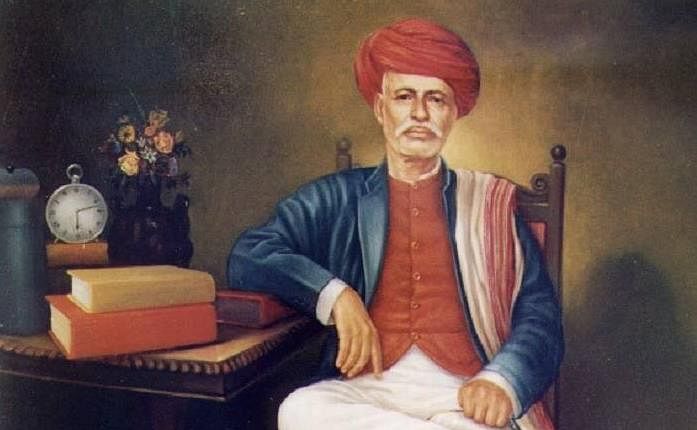 Jyotiba Phule
Jyotiba Phule - The main aims of the movement were:
(i) Social service
(ii) Spread of education among women and lower caste people. - Phule's works, Sarvajanik Satyadharma and Gulamgiri, became sources of inspiration for the common masses. Phule used the symbol of Rajah Bali as opposed to the brahmins’ symbol of Rama. Phule was awarded the title 'Mahatma’ for his social reform work.
 Gopalhari Deshmukh
Gopalhari Deshmukh
- Gopal Hari Deshmukh (1823-1892) was a social reformer and rationalist from Maharashtra.
- He wrote for a weekly Prabhakar under the pen name of Lokahitawadi on social reform issues.
- He said, " If religion does not sanction social reform, then change religion.”
- He started a weekly, Hitechhu, and also played a leading role in founding the periodicals, Gyan Prakash, Indu Prakash, and Lokahitawadi.
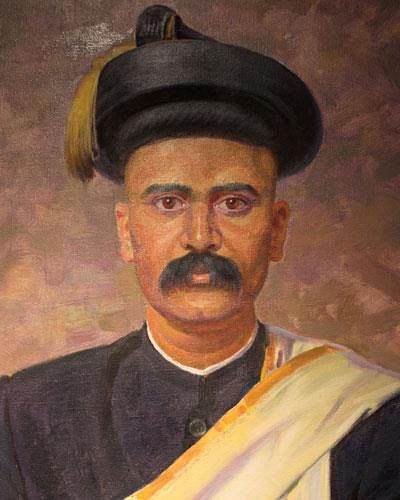 Gopal Ganesh Agarkar
Gopal Ganesh Agarkar
- Gopal Ganesh Agarkar (1856-1895) was an educationist and social reformer from Maharashtra. He criticized the blind dependence on tradition and false glorification of the past.
- He was also the first editor of Kesari, the journal started by Lokmanya Tilak. Later, he started his own periodical, Sudharak, which spoke against untouchability and the caste system.
- Gopal Krishna Gokhale (1866-1915), a liberal leader of the Indian National Congress, founded the Servants of India Society in 1905 with the help of M.G. Ranade.
- The aim of the society was to train national missionaries for the service of India, to promote, by all constitutional means, the true interests of the Indian people, and to prepare a cadre of selfless workers who were to devote their lives to the cause of the country in a religious spirit.
- In 1911 the Hitavada began to be published to project the views of the society. After Gokhale's death (1915), Srinivasa Shastri took over as president.
- Narayan Malhar Joshi founded the Social Service League in Bombay with an aim to secure for the masses better and reasonable conditions of life and work.
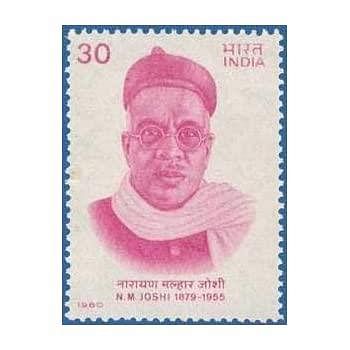
- Joshi also founded the All India Trade Union Congress (1920).
- The teachings of Ramakrishna Paramahamsa (1836-1886) found many followers. He is considered to have attained the highest spiritual experience available to Hindus.
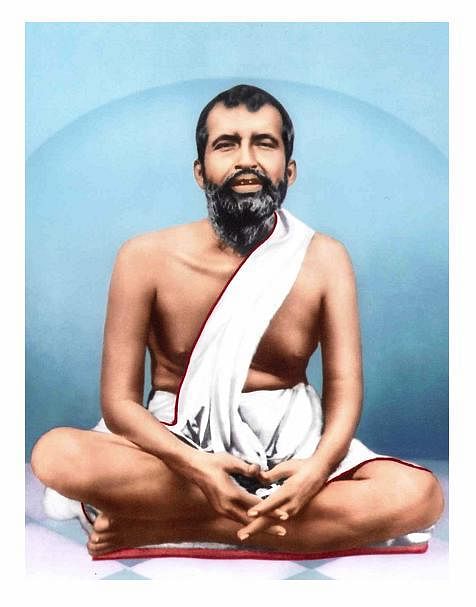 Ramakrishna Paramahamsa
Ramakrishna Paramahamsa - Two objectives of the Ramakrishna movement were:
(i) To bring into existence a band of monks dedicated to a life of renunciation and practical spirituality, from among whom teachers and workers would be sent out to spread the universal message of Vedanta as illustrated in the life of Ramakrishna.
(ii) In conjunction with lay disciples to carry on preaching, philanthropic and charitable works, looking upon all men, women and children, irrespective of caste, creed or colour, as veritable manifestations of the Divine. - Paramahamsa himself laid the foundations of the Ramakrishna Math as a nucleus to fulfill the first objective. The second objective was taken up by Swami Vivekananda after Ramakrishna's death when he founded the Ramakrishna Mission in 1897.
- The headquarters of the Ramakrishna Math and Mission are at Belur near Calcutta.
- Narendranath Datta (1862-1902), who later came to be known as Swami Vivekananda spread Ramakrishna's message.
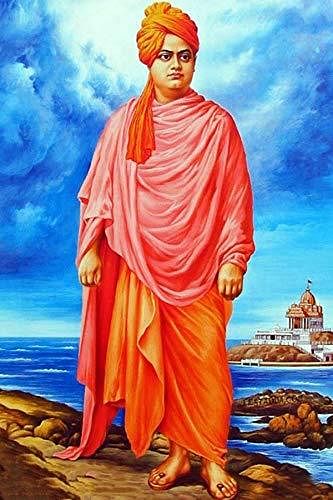 Swami Vivekananda
Swami Vivekananda - His mission was to bridge the gulf between paramartha (service) and vyavahara (behaviour), and between spirituality and day-to-day life. Vivekananda believed in the fundamental oneness of God and said, ‘For our own motherland a junction of the two great systems, Hinduism and Islam, is the only hope.”
- At the Parliament of Religions held at Chicago in 1893, Swami Vivekananda made a great impression on people by his learned interpretations. In 1897 he founded the Ramakrishna Mission. Vivekananda was a great humanist and used the Ramakrishna Mission for humanitarian relief and social work.
- The Mission stands for religious and social reform. Vivekananda advocated the doctrine of service.
- Its founder, Dayananda Saraswati or Mulshankar (1824-1883). The first Arya Samaj unit was formally set up by him at Bombay in 1875 and later the headquarters of the Samaj was established at Lahore.
- Dayananda's views were published in his famous work, Satyarth Prakash (The True Exposition). He took inspiration from the Vedas and considered them to be ‘India's Rock of Ages', the infallible and the true original seed of Hinduism. He gave the slogan “Back to the Vedas”.
- Dayananda had received education on Vedanta from a blind teacher named Swami Virajananda in Mathura. Swami Dayananda once lamented the Hindu race as “the children of children”.
- The nucleus for this movement was provided by the Dayananda Anglo-Vedic (D.A.V.) schools, established first at Lahore in 1886, which sought to emphasise the importance of Western education.
- Swami Shraddhanand started the Gurukul at Hardwar in 1902 to impart education in the traditional framework.
- The ten guiding principles of the Arya Samaj are:
(i) God is the primary source of all true knowledge.
(ii) God, as all-truth, all-knowledge, almighty, immortal, creator of Universe, is alone worthy of worship.
(iii) The Vedas are the books of true knowledge.
(iv) An Arya should always be ready to accept truth and abandon untruth.
(v) Dharma, that is, due consideration of right and wrong, should be the guiding principle of all actions.
(vi) The principal aim of the Samaj is to promote world's well-being in the material, spiritual and social sense.
(vii) Everybody should be treated with love and justice.
(viii) Ignorance is to be dispelled and knowledge increased.
(ix) One's own progress should depend on uplift of all others.
(x) Social well-being of mankind is to be placed above an individual’s well-being. - The work of the Swami after his death was carried forward by Lala Hansraj, Pandit Gurudutt, Lala Lajpat Rai and Swami Shraddhanand, among others.
- A Parsi social reformer, Behramji M. Malabari (1853- 1912), founded the Seva Sadan in 1908 along with a friend, Diwan Dayaram Gidumal.
- It was his efforts that led to the Age of Consent Act regulating the age of consent for females.
- Founded in 1887 at Lahore by Shiv Narayan Agnihotri (1850- 1927) Its teachings were compiled in a book, Deva Shastra. Agnihotri spoke against child marriage.
- Radhakant Deb founded this sabha in 1830. An orthodox society, it stood for the preservation of the status quo.
- Other organizations created to defend orthodox Hinduism were the Sanatana Dharma Sabha (1895), the Dharma Maha Parishad in South India, and Dharma Mahamandali in Bengal. These organizations combined in 1902 to form the single organization of Bharat Dharma Mahamandala, with headquarters at Varanasi.
- This organization sought to introduce proper management of Hindu religious institutions, open Hindu educational institutions, etc. Pandit Madan Mohan Malaviya was a prominent figure in this movement.
- Tulsi Ramknown as Shiv Dayal Saheb, founded this movement in 1861. The Radhaswamis believe in one supreme being, supremacy of the guru, a company of pious people (Satsang), and a simple social life.
- The SNDP movement was an example of a regional movement born out of conflict between the depressed classes and upper castes.
- It was started by Sree Narayana Guru Swamy (1856- 1928) among the Ezhavas of Kerala. The Ezhavas were the single largest caste group in Kerala constituting 26 per cent of the total population.
- Narayana Guru took a stone from the Neyyar river and installed it as a Sivalinga at Aruvippuram on Sivaratri in 1888. The movement (Aruvippuram movement) drew the famous poet Kumaran Asan as a disciple of Narayana Guru.
- In 1889, the Aruvippuram Kshetra Yogam was formed. Thus the Aruvippuram Sree Narayana Guru Dharma Paripalana Yogam (in short SNDP) was registered in 1903 under the Indian Companies Act, with Narayana Guru as its permanent chairman, and Kumaran Asan as the general secretary.
- On the wall of the Aruvippuram temple he got inscribed the words, "Devoid of dividing walls of caste or race, or hatred of rival faith, we all live here in brotherhood.”
- The SNDP Yogam took up several issues for the Ezhavas, such as
(i) Right of admission to public schools.
(ii) Recruitment to government services.
(iii) Access to roads and entry to temples.
(iv) Political representation.
- The Vokkaiiga Sangha in Mysore launched an anti-brahmin movement in 1905.
- This movement in Madras Presidency was started by C.N. Mudaliar, T.M. Nair and P. Tyagaraja In 1917, Madras Presidency Association was formed.
- This movement was started by E.V. Ramaswamy Naicker, a Balija Naidu, in the mid-1920s.
- In the meanwhile, Vaikom, in the northern part of Travancore, became a center of agitation for temple entry.
- In 1924, the Vaikom Satyagraha led by K.P. Kesava, was launched in Kerala demanding. Again in 1931 when the Civil Disobedience Movement was suspended, temple entry movement was organized in Kerala, on November 12, 1936, the Maharaja of Travancore issued a proclamation throwing open all government-controlled temples to all Hindus.
- A similar step was taken by the C. Rajagopalachari administration in Madras in 1938.
- Founded by M.G. Ranade and Raghunath Rao, the Indian Social Conference met annually from its first session in Madras in 1887.
- The conference advocate inter-caste marriages, opposed polygamy and kulinism. It launched the ‘Pledge Movement' to inspire people to take a pledge against child marriage.
- The teachings of Abdul Wahab of Arabia and the preachings of Shah Walliullah (1702-1763) inspired this essentially revivalist response to Western influences and the degeneration which had set in among Indian Muslims and called for a return to the true spirit of Islam.
- Two-fold ideals of this movement:
(i) Desirability of harmony among the four schools of Muslim jurisprudence which had divided the Indian Muslims (he sought to integrate the best elements of the four schools).
(ii) Recognition of the role of individual conscience in religion where conflicting interpretations were derived from the Quran and the Hadis. - The Wahabi Movement fizzled out in the face of British military might in the 1870s.
- Mir Nithar Ali, popularly known as Titu Mir, was a disciple of Sayyid Ahmed Barelvi, the founder of the Wahabi Movement.
- Titu Mir adopted Wahabism and advocated the Sharia.
- The movement also called the Fara'idi Movement because of its emphasis on the Islamic pillars of faith, was founded by Haji Shariatullah in 1818.
- The movement survived merely as a religious movement without political overtones after the death of Dudu Mian in 1862.
- Ahmadiyya forms a sect of Islam that originated from India. It was founded by Mirza Ghulam Ahmad in 1889.
- The Ahmadiyya community is the only Islamic sect to believe that the Messiah had come in the person of Mirza Ghulam Ahmad to end religious wars 30. Sir Syed Ahmed Khan and the Aligarh Movement.
- A section of Muslims led by Syed Ahmed Khan (1817-1898) stimulates a process of growth among Indian Muslims through better education and employment opportunities.
- After retirement in 1876, he became a member of the Imperial Legislative Council in 1878.
- His loyalty earned him a knighthood in 1888. He translated into Urdu and started the Mohammedan Anglo-Oriental College (later, the Aligarh Muslim University) at Aligarh in 1875.
- He believed in the fundamental underlying unity of religions or practical morality". Syed’s progressive social ideas were propagated through his magazine Tahdhib-ul-Akhlaq (Improvement of Manners and Morals).
- It aimed at spreading:
(i) Modern education among Indian Muslims without weakening their allegiance to Islam.
(ii) Social reforms among Muslims relating to purdah, polygamy, widow remarriage, women's education, slavery, divorce, etc.
- The Deoband Movement was organized by the orthodox section among the Muslim ulema.
- The Deoband Movement was begun at the Darul Uloom (or Islamic academic center), Deoband, in Saharanpur district (United Provinces) in 1866 by Mohammad Qasim Nanotavi (1832-80) and Rashid Ahmed Gangohi (1828-1905) to train religious leaders for the Muslim community.
- The aim of the Deoband Movement was moral and religious regeneration of the Muslim community the Nadwatal.
- Ulama and Darul Uloom in Lucknow in 1894-96 was founded.
- The Rahnumai Mazdayasnan Sabha (Religious Reform Association) was founded in 1851 by a group of English educated Parsis for the "regeneration of the social conditions of the Parsis and the restoration of the Zoroastrian religion to its pristine purity”.
- The movement had Naoroji Furdonji, Dadabhai Naoroji, K.R. Cama, and S.S. Bengalee as its leaders. The message of reform was spread by the newspaper Rast Goftar (Truth-Teller).
- The Singh Sabha Movement was founded at Amritsar in 1873 with a two-fold objective:
(i) To make available modern western education to the Sikhs.
(ii) To counter the proselytising activities of Christian missionaries as well as the Brahmo Samajists, Arya Samajists and Muslim maulvis. - The Akali movement (also known as Gurudwara Reform Movement) was an offshoot of the Singh Sabha Movement. It aimed at liberating the Sikh gurudwaras from the control of corrupt Udasi mahants.
- The government tried its repressive policies against the non-violent non-cooperation satyagraha launched by the Akalis in 1921, but had to bow before popular demands, it passed the Sikh Gurudwaras Act in 1922 (amended in 1925) which gave the control of gurudwaras to the Sikh masses to be administered through Shiromani Gurudwara Prabandhak Committee (SGPC) as the apex body.
- A group of westerners led by Madame H.P. Blavatsky (1831- 1891) and Colonel M.S. Olcott, who were inspired by Indian thought and culture, founded the Theosophical Society in New York City, United States in 1875.
- In 1882, they shifted their headquarters to Adyar, on the outskirts of Madras (at that time) in India. The society believed that a special relationship could be established between a person’s soul and God.
- In India, the movement became somewhat popular with the election of Annie Besant (18471933) as its president after the death of Olcott in 1907.
- Annie Besant had come to India in 1893. She laid the foundation of the Central Hindu College in Benaras in 1898. The college became the nucleus for the formation of Benaras Hindu University in 1916.
➢ Positive Aspects
- Liberation of the individual from the conformity born out of fear and from uncritical submission to exploitation by the priests and other classes.
- Simplification of rituals made worship a more personal experience, translation of religious texts into vernacular languages, emphasis on an individual's right to interpret the scriptures.
- Emphasized the human intellect’s capacity to think and reason.
- Enabled their followers to meet the official taunt that their religions and society were decadent and inferior.
- Served the purpose of reducing the sense of humiliation which the conquest by a foreign power had produced.
- Promoting a modern, this-worldly, secular, and rational outlook was a major contribution of these reform movements. A basic change in the notions of pollution and purity’.
➢ Negative Aspects
- Had a narrow social base, namely the educated and urban middle classes, while the needs of the vast masses of peasantry and the urban poor were ignored.
- The tendency of reformers to appeal to the greatness of the past and to rely on scriptural authority encouraged mysticism.
- Insufficient emphasis on other aspects of culture—art, architecture, literature, music, science, and technology.
- The rise and growth of Indian nationalism have been traditionally explained in terms of Indian response to the stimulus generated by the British Raj through the creation of new institutions, new opportunities, resources, etc. In fact, it would be more correct.
- The worldwide upsurge of the concepts of nationalism and the right of self-determination initiated by the French Revolution.
- Indian Renaissance.
- An offshoot of modernization initiated by the British in India.
- Strong reaction to British imperialist policies in India.
➢ Understanding of Contradictions in Indian and Colonial Interests
- Colonial rule was the major cause of India’s economic backwardness and that the interests of the Indians involved the interests of all sections and classes.
- The nationalist movement arose to take up the challenge of these contradictions.
➢ Political, Administrative and Economic Unification of the Country
- The British rule in the Indian subcontinent extended from the Himalayas in the north to the Cape Comorin in the south and from Assam in the east to Khyber Pass in the west.
 Khyber Pass
Khyber Pass - While Indian provinces were under 'direct’ British rule, the princely states were under indirect’ British rule.
- The necessities of administrative convenience, considerations of military defense, and the urge for economic penetration and commercial exploitation (all in British interests) were the driving forces behind the planned development of modern means of transport and communication.
- This process of unification had a two-fold effect:
(a) The economic fate of the people of different regions got linked together, for instance, the failure of crops in one region affected the prices and supply in another region.
(b) Modern means of transport and communication brought people, especially the leaders, from different regions together. This was important for the exchange of political ideas and for mobilization and organization of public opinion on political and economic issues.
➢ Western Thought and Education
- The introduction of a modern system of education afforded opportunities for assimilation of modern Western ideas.
- The liberal and radical thought of European writers like Milton, Shelley, John Stuart Mill, Rousseau, Paine, Spencer, and Voltaire helped many Indians imbibe modern rational, secular, democratic, and nationalist ideas.
➢ Role of Press and Literature
- In 1877, there were about 169 newspapers published in vernacular languages and their circulation reached the neighborhood of 1,00,000.
- The press while criticizing official policies, on the one hand, urged the people to unite, on the other.
➢ Rediscovery of India's Past
- The historical researches by European scholars, such as Max Mueller, Monier Williams, Roth, and Sassoon, and by Indian scholars such as R.G. Bhandarkar, R.L. Mitra, and later Swami Vivekananda, created an entirely new picture of India’s past.
 Max Mueller
Max Mueller
➢ Progressive Character of Socio-Religious Reform Movements
- These reform movements sought to remove social evils that divided the Indian society.
➢ Rise of Middle-Class Intelligentsia
- According to Percival Spear, ''The new middle class was a well-integrated all-India class with the varied background but a common foreground of knowledge, ideas, and values It was a minority of Indian society, but a dynamic minority It had a sense of unity of purpose and of hope.”
➢ Impact of Contemporary Movements in the World
- The rise of a number of nations in particular deeply influenced the nationalist ranks.
➢ Reactionary Policies and Racial Arrogance of Rulers
- Lytton’s reactionary policies such as reduction of maximum age limit for the I.C.S. examination from 21 years to 19 years 1 1876), the grand Delhi Durbar of 1877 when the country was in the severe grip of famine, the Vernacular Press Act (1878), and the Arms Act (1878) provoked a storm of opposition in the country.

- Ripon had to modify the bill, thus almost defeating the original purpose, because of the stiff opposition from the European community.
- Through long petitions to the British Parliament, most of them demanded:
(a) Administrative reforms
(b) An association of Indians with the administration.
(c) The spread of education.
➢ Political Associations in Bengal
- The Bangabhasha Prakasika Sabha was formed in 1836 by associates of Raja Rammohan Roy.
- The Zamindari Association, more popularly known as the 'Landholders' Society’, was founded to safeguard the interests of the landlords.
- The Bengal British India Society was founded in 1843 In 1851, both the Landholders’ Society and the Bengal British India Society merged into the British Indian Association.
- The East India Association was organized by Dadabhai Naoroji in 1866 in London
- The Indian League was started in 1875 by Sisir Kumar Ghosh
- The Indian Association of Calcutta (also known as the Indian National Association) superseded the Indian League and was founded in 1876 by younger nationalists of Bengal led by Surendranath Banerjea and Ananda Mohan Bose It protested against the reduction of the age limit 1877 for candidates of the Indian Civil Service examination.
- The association sponsored an all-India conference which first took place in Calcutta on December 28 to 30, 1883. It later merged with the Indian National Congress in 1886.
➢ Political Associations in Bombay
- The Poona Sarvajanik Sabha was founded in 1870 by Mahadeo Govind Ranade.
- The Bombay Presidency Association was started by Badruddin Tyabji, Pherozshah Mehta, and K.T. Telang in 1885.
➢ Political Associations in Madras
- The Madras Mahajan Sabha was founded in 1884 by M. Viraraghavachari, B. Subramaniya Aiyer, and P. Anandacharlu.
- The associations organized various campaigns before the Indian National Congress appeared on the scene.
- For the imposition of import duty on cotton (1875).
- For Indianisation of government service (1878-79).
- Against Lytton’s Afghan adventure.
- Against Arms Act (1878).
- Against Vernacular Press Act (1878).
- For the right to join volunteer corps.
- Against plantation labour and against Inland Emigration Act.
- In support of Ilbert Bill.
- For an All India Fund for Political Agitation.
➢ Foundation of Indian National Congress
- The final shape to the establishment of an all-India organisation idea was given by A.O. Hume, who organised the first session of the Indian National Congress at Gokuldas Tejpal Sanskrit College in Bombay in December 1885.

- Two sessions of the Indian National Conference had been held in 1883 and 1885, Surendranath Banerjee and Ananda Mohan Bose were the main architects of the Indian National Conference.
 Surendranath Banerjee
Surendranath Banerjee - The first session of the Indian National Congress was attended by 72 delegates and presided over by Womesh Chandra Bonnerjee.
- Kadambini Ganguly, the first woman graduate of Calcutta University, addressed the Congress session.
➢ Was It a Safety Valve?
- Hume formed the Congress with the idea that it would prove to be a safety valve’ for releasing the growing discontent of the Indians.
- Even the Marxist historian’s 'conspiracy theory’ was an offspring of the "safety valve’ notion.
- R.P. Dutt opined that the Indian National Congress was born out of a conspiracy to abort a popular uprising in India and the bourgeois leaders were a party to it.
- Bipan Chandra observes, the early Congress leaders used Hume as a "lightning conductor to bring together the nationalistic forces even if under the guise of a "safety valve’.
➢ Aims and Objectives of the Congress-The main aims of the Indian National Congress in the initial stage were to—
- found a democratic, nationalist movement;
- politicize and politically educate people;
- establish the headquarters for a movement;
- promote friendly relations among nationalist political workers from different parts of the country;
- develop and propagate an anti-colonial nationalist ideology;
- formulate and present popular demands before the government with a view to unifying the people over a common economic and political programme;
- Develop and consolidate a feeling of national unity among people irrespective of religion, caste or province.
- Carefully promote and nurture Indian nationhood.
➢ The era of Moderates (1885-1905)
- The national leaders like Dadabhai Naoroji, Pherozshah Mehta, D.E. Wacha, W.C. Bonnerjea, S.N. Banerjea
➢ Moderate Approach
- They worked on a two-pronged methodology—one, create a strong public opinion to arouse consciousness and national spirit and then educate and unite people on common political questions; and two, persuade the British Government and British public opinion to introduce reforms in India on the lines laid out by the nationalists.
- A British committee of the Indian National Congress was established in London in 1899 which had India as its organ.
➢ Contributions of Moderate Nationalists
- The early nationalists, led by Dadabhai Naoroji, R.C. Dutt, Dinshaw Wacha and others, carefully analysed the political economy of British rule in India and put forward the “drain theory" to explain British exploitation of India.
 Dadabhai Naoroji
Dadabhai Naoroji - They opposed the transformation of a basically self-sufficient Indian economy into a colonial economy.
➢ Constitutional Reforms and Propaganda in Legislature-From 1885 to 1892, the nationalist demands for constitutional reforms were centered around—
- Expansion of councils—i.e., greater participation of Indians in councils; and
- Reform of councils—i.e., more powers to councils, especially greater control over finances. They gave the slogan—“No taxation without representation".
➢ Campaign for General Administrative Reforms-The Moderates campaigned on the following grounds -
- Indianisation of government service
- Call for separation of judicial from executive functions.
- Criticism of an oppressive and tyrannical bureaucracy and an expensive and time-consuming judicial system.
- Criticism of an aggressive foreign policy which resulted in the annexation of Burma, attack on Afghanistan and suppression of tribals in the North-West—all costing heavily for the Indian treasury.
- Call for increase in expenditure on welfare (i.e., health, sanitation), education— especially elementary and technical—irrigation works and improvement of agriculture, agricultural banks for cultivators, etc.
- Demand for better treatment for Indian labour abroad in other British colonies, where they faced oppression and racial discrimination.
- Protection of Civil Rights- Through an incessant campaign, the nationalists were able to spread modern democratic ideas, and soon the defence of civil rights became an integral part of the freedom struggle.
➢ An Evaluation of the Early Nationalists
- They represented the most progressive forces of the time.
- They were able to create a wide national awakening of all Indians having common interests and the need to rally around a common programme against a common enemy, and above all, the feeling of belonging to one nation.
- They trained people in political work and popularized modern ideas.
- They exposed the basically exploitative character of colonial rule, thus undermining its moral foundations.
- Their political work was based on hard realities, and not on shallow sentiments, religion, etc.
- They were able to establish the basic political truth that India should be ruled in the interest of Indians.
- They created a solid base for a more vigorous, militant, mass-based national movement in the years that followed.
- They failed to widen their democratic base and the scope of their demands.
➢ Role of Masses
- The moderate phase of the national movement had a narrow social base and the masses played a passive role. This was because the early nationalists lacked political faith in the masses; they felt that there were numerous divisions and subdivisions in the Indian society, and the masses were generally ignorant and had conservative ideas and thoughts.
➢ The attitude of the Government
- The government resorted to open condemnation of the Congress, calling the nationalists “seditious brahmins", “disloyal babus", etc. Dufferin called the Congress “a factory of sedition". Later, the government adopted a "divide and rule' policy.
CONSEQUENCE OF FOREIGN DOMINATION
- Basically, modern Indian nationalism arose to meet the challenge of foreign domination. The very conditions of British rule helped the growth of national sentiment among the Indian people. It was British rule and its direct and indirect consequences which provided the material, and the moral and intellectual conditions for the development of a national movement in India.
- The root of the matter lay in the clash of interests of the Indian people with British interests in India. The British had conquered India to promote their own interests and they ruled it primarily with that purpose in view, often subordinating Indian welfare to British gain. The Indians gradually realised that their interests were being sacrificed to those of Lancashire manufacturers and other dominant British interests.
- The foundations of the Indian nationalist movement lay in the fact that increasingly British rule had become the major cause of India’s economic backwardness. It became the major barrier to India’s further economic, social, cultural, intellectual and political development. Moreover, this fact began to be recognised by an increasingly larger number of Indians.
- Every class, every section of Indian society, gradually discovered that its interests were suffering at the hands of the foreign rulers.
- The peasant saw that the government took away a large part of his produce as land revenue; that the government and its machinery— the police, the courts, the officials—favoured and protected the zamindars and landlords, who rack-rented him, and the merchants and moneylenders, who cheated and exploited him in diverse ways and who took his land away from him.
- Whenever the peasant struggled against landlord and moneylender oppression, the police and the army suppressed him in the name of law and order.
- The artisan or the handicraftsman saw that the foreign regime had helped foreign competition ruin him and had done nothing to rehabilitate him.
- Later, in the twentieth century, the worker in modern factories, mines, and plantations found that, in spite of lip sympathy, the government sided with the capitalists, especially the foreign capitalists.
- Whenever he tried to organise trade unions to improve his lot through strikes, demonstrations, and other struggles, government machinery was freely used against him. Moreover, he soon realised that the growing unemployment could be checked only by rapid industrialisation which only an independent government could bring about.
- Other sections of Indian society were no less dissatisfied. The rising intelligentsia—the educated Indians—used their newly acquired modern knowledge to understand the sad economic and political condition of their country. Those who had earlier, as in 1857, supported British rule in the hope that, though alien, it would modernize and industrialise the country were gradually disappointed.
- Economically, they had hoped that British capitalism would help develop India’s productive forces as it had done at home. Instead, they found that British policies in India, guided by British capitalists at home, were keeping the country economically backward or underdeveloped and checking the development of its productive forces.
- Politically, educated Indians found that the British had abandoned all previous pretensions of guiding India towards self-government. Most of the British officials and political leaders openly declared that the British were in India to stay.
- Moreover, instead of increasing the freedom of speech, of the press, and of the individual, the government increasingly restricted them. British officials and writers declared Indians unfit for democracy or self-government. In the field of culture, the rulers were increasingly taking a negative and even hostile attitude towards higher education and the spread of modern ideas.
- The rising Indian capitalist class was slow in developing a national political consciousness. But it too gradually saw that it was suffering at the hands of imperialism. Its growth was severely checked by the trade, tariff, taxation, and transport policies of the government.
- As a new and weak class, it needed active government help to counterbalance many of its weaknesses. But no such help was given. Instead, the government and its bureaucracy favoured foreign capitalists who came to India with their vast resources and appropriated the limited industrial field. Indian capitalists were particularly opposed to the strong competition from foreign capitalists.
- The Indian capitalists also, therefore, realised that there existed a contradiction between imperialism and their own independent growth, and that only a national government would create conditions for the rapid development of Indian trade and industries.
- The zamindars, the landlords, and the princes were the only section of Indian society whose interests coincided with those of the foreign rulers and who, therefore, on the whole supported foreign rule until the end. But even from these classes, many individuals joined the national movement. In the prevailing nationalist atmosphere, patriotism appealed to many.
- Further, the policies of racial dominance and discrimination appalled and aroused every thinking and self-respecting Indian, to whichever class he might belong. Most of all, the foreign character of the British regime in itself produced a nationalist reaction, since foreign domination invariably generates patriotic sentiments in the hearts of a subject people.
- To sum up, it was as a result of the intrinsic nature of foreign imperialism and its harmful impact on the lives of the Indian people that a powerful anti-imperialist movement gradually arose and developed in India. This movement was a national movement because it united people from different classes and sections of society, who sank their mutual differences to unite against the common enemy.
Administrative and Economic Unification of the Country
- Nationalist sentiments grew easily among the people because India was unified and welded into a nation during the nineteenth and twentieth centuries. The British had gradually introduced a uniform and modern system of government throughout the country and thus unified it administratively.
- The destruction of the rural and local self-sufficient economy and the introduction of modern trade and industries on an all-India scale had increasingly made India’s economic life a single whole and interlinked the economic fate of people living in different parts of the country.
- For example, if famine or scarcity occurred in one part of India, prices and availability of foodstuffs were affected in all other parts of the country too. Furthermore, the introduction of the railways, telegraph and a unified postal system had brought the different parts of the country together and promoted mutual contact among the people, especially among the leaders.
- Here again, the very existence of foreign rule that oppressed all the Indian people irrespective of their social class, caste, religion or region acted as a unifying factor. All over the country people saw that they were suffering at the hands of a common enemy—British rule.
- On the one hand, the emergence of the Indian nation was a major factor in the rise of nationalism; on the other hand, the anti- imperialist struggle and the feeling of solidarity born in its course contributed powerfully to the making of the Indian nation.
WESTERN THOUGHT AND EDUCATION
- As a result of the spread of modern Western education and thought during the nineteenth century, a large number of Indians imbibed a modern rational, secular, democratic and nationalist political outlook.
- They also began to study, admire and emulate the contemporary nationalist movements of European nations. Rousseau, Paine, John Stuart Mill and other Western thinkers became their political guides, while Mazzini, Garibaldi and Irish nationalist leaders became their political heroes.
- These educated Indians were the first to feel the humiliation of foreign subjection. By becoming modern in their thinking, they also acquired the ability to study the evil effects of foreign rule. They were inspired by the dream of a modern, strong, prosperous, and united India. In course of time, the best among them became the leaders and organizers of the national movement.
- It should be clearly understood that it was not the modern educational system that created the national movement which was the product of the conflict of interests between Britain and India. The system only enabled educated Indians to imbibe Western thought and thus to assume the leadership of the national movement and to give it a democratic and modern direction.
- In fact, in the schools and colleges, the authorities tried to inculcate notions of docility and servility to foreign rule. Nationalist ideas were a part of the general spread of modern ideas. In other Asian countries such as China and Indonesia, and all over Africa, modern and nationalist ideas spread even though modern schools and colleges existed on a much smaller scale.
- Modern education also created a certain uniformity and community of outlook and interests among the educated Indians. The English language played an important role in this respect. It became the medium for the spread of modern ideas.
- It also became the medium of communication and exchange of ideas between educated Indians from different linguistic regions of the country. But soon English also became a barrier to the spread of modern knowledge among the common people. It also acted as a wall separating the educated urban people from the common people, especially in the rural areas. This fact was fully recognised by Indian political leaders.
- From Dadabhai Naoroji, Sayyid Ahmed Khan and Justice Ranade to Tilak and Gandhiji, they agitated for a bigger role for the Indian languages in the educational system. In fact, so far as the common people were concerned, the spread of modern ideas occurred through the developing Indian languages, the growing literature in them, and most of all the popular Indian language press.
THE ROLE OF THE PRESS AND LITERATURE
- The chief instrument through which nationalist-minded Indians spread the message of patriotism and modern economic, social and political ideas, and created an all-India consciousness was the press. Large numbers of nationalist newspapers made their appearance during the second half of the nineteenth century.
- In their columns, the official policies were constantly criticised; the Indian point of view was put forward; people were asked to unite and work for national welfare, and ideas of self-government, democracy, industrialist ion, etc., were popularized among the people. The press also enabled nationalist workers living in different parts of the country to exchange views with one another.
- National literature in the form of novels, essays and patriotic poetry also played an important role in arousing national consciousness.
- Bankim Chandra Chatterjee and Rabindranath Tagore in Bengali, Lakshminath Bezbarua in Assamese, Vishnu Shastri Chiplunkar in Marathi, Subramanya Bharati in Tamil, Bharatendu Harishchandra in Hindi and Altaf Husain Hali in Urdu were some of the prominent nationalist writers of the period.
REDISCOVERY OF INDIA'S PAST
- Many Indians had fallen so low that they had lost confidence in their own capacity for self-government. Also, many British officials and writers of the time constantly advanced the thesis that Indians had never been able to rule themselves in the past, that Hindus and Muslims had always fought one another, that Indians were destined to be ruled by foreigners, that their religion and social life were degraded and uncivilized making them unfit for democracy or even self-government.
- Many of the nationalist leaders tried to arouse the self-confidence and self-respect of the people by countering this propaganda. They pointed to the cultural heritage of India with pride and referred the critics to the political achievements of rulers like Ashoka, Chandragupta Vikramaditya and Akbar.
- In this task they were helped and encouraged by the work of European and Indian scholars in rediscovering India’s national heritage in art, architecture, literature, philosophy, science and politics.
- Unfortunately, some of the nationalists went to the other extreme and began to glorify India’s past uncritically, ignoring its weaknesses and backwardness. Great harm was done, in particular, by the tendency to look up only to the heritage of ancient India while ignoring the equally great achievements of the medieval period.
- This encouraged the growth of communal sentiments among the Hindus and the counter tendency among the Muslims of looking to the history of the Arabs and the Turks for cultural and historical inspiration. Moreover, in meeting the challenge of cultural imperialism of the West, many Indians tended to ignore the fact that in many respects the people of India were culturally backward.
- A false sense of pride and smugness was produced which tended to prevent Indians from looking critically at their society. This weakened the struggle against social and cultural backwardness, and led many Indians to turn away from healthy and fresh tendencies and ideas from other parts of the world.
Racial Arrogance of the Rulers
An important though secondary factor in the growth of national sentiments in India was the tone of racial superiority adopted by many Englishmen in their dealings with Indians. A particularly odious and frequent form taken by racial arrogance was the failure of justice whenever an Englishman was involved in a dispute with an Indian.
As G.O. Trevelyan pointed out in 1864
- “The testimony of a single one of our countrymen has more weight with the court than that of any number of Hindus, a circumstance which puts a terrible instrument of power into the hands of an unscrupulous and grasping Englishman.”
- Racial arrogance branded all Indians irrespective of their caste, religion, province, or class with the badge of inferiority. They were kept out of exclusively European clubs and often not permitted to travel in the same compartment in a train with the European passengers. This made them conscious of national humiliation, and led them to think of themselves as one people when facing Englishmen.
Predecessors of the Indian National Congress
- By the 1870s it was evident that Indian nationalism had gathered enough momentum to appear as a major force on the Indian political scene. The Indian National Congress, founded in December 1885, was the first organised expression of the Indian national movement on an all-India scale. It had, however, many predecessors.
- Raja Rammohun Roy was the first Indian leader to start an agitation for political reforms in India. Many public associations were started in different parts of India after 1836.
- All these associations were dominated by wealthy and aristocratic elements—known in those days as ‘prominent persons’— and were provincial or local in character. They worked for reform of administration, association of Indians with the administration, and spread of education, and sent long petitions, putting forward Indian demands, to the British Parliament.
- The period after 1858 witnessed a gradual widening of the gulf between the educated Indians and the British Indian administration. As educated Indians studied the character of British rule and its consequences for India, they became more and more critical of British policies in India. The discontent gradually found expression in political activity. The existing associations no longer satisfied the politically conscious Indians.
- In 1866, Dadabhai Naoroji organised the East India Association in London to discuss the Indian question and to influence British public officials to promote Indian welfare. Later he organised branches of the Association in prominent Indian cities. Born in 1825, Dadabhai devoted his entire life to the national movement and soon came to be known as the ‘Grand Old Man of India’. He was also India’s first economic thinker.
- In his writings on economics he showed that the basic cause of India’s poverty lay in the British exploitation of India and the drain of its wealth. Dadabhai was honoured by being thrice elected president of the Indian National Congress. In fact he was the first of the long line of popular nationalist leaders of India whose very name stirred the hearts of the people.
- The most important of the pre-Congress nationalist organisations was the Indian Association of Calcutta. The younger nationalists of Bengal had been gradually getting discontented with the conservative and pro-landlord policies of the British India Association. They wanted sustained political agitation on issues of wider public interest. They found a leader in Surendranath Banerjea who was a brilliant writer and orator.
- He was unjustly turned out of the Indian Civil Service as his superiors could not tolerate the presence of an independent-minded Indian in the ranks of this service. He began his public career in 1875 by delivering brilliant addresses on nationalist topics to the students of Calcutta. Led by Surendranath and Ananda Mohan Bose, the younger nationalists of Bengal founded the Indian Association in July 1876.
- The Indian Association set before itself the aims of creating strong public opinion in the country on political questions and the unification of the Indian people under a common political programme.
- In order to attract large numbers of people to its banner, it fixed a low membership fee for the poorer classes. Many branches of the Association were opened in the towns and villages of Bengal and also in many towns outside Bengal.
- The younger elements were also active in other parts of India. Justice Ranade and others organised the Poona Sarvajanik Sabha in 1870. M. Viraraghavachari, G. Subramaniya Iyer, Ananda Charlu and others formed the Madras Mahajan Sabha in 1884. Pherozeshah Mehta, K.T. Telang, Badruddin Tyabji and others formed the Bombay Presidency Association in 1885.
- The time was now ripe for the formation of an all-India political organisation of nationalists who felt the need to unite politically against the common enemy—foreign rule and exploitation. The existing organisations had served a useful purpose but they were narrow in their scope and functioning.
- They dealt mostly with local questions and their membership and leadership were confined to a few people belonging to a single city or province. Even the Indian Association had not succeeded in becoming an all-India body.
THE INDIAN NATIONAL CONGRESS
- Many Indians had been planning to form an all-India organisation of nationalist political workers. But the credit for giving the idea concrete and final shape goes to A.O. Hume, a retired English Civil Servant.
- He got in touch with prominent Indian leaders and organised with their cooperation the first Session of the Indian National Congress at Bombay in December 1885. It was presided over by WC. Bonnerjee and attended by 72 delegates.
- The aims of the National Congress were declared to be the promotion of friendly relations between nationalist political workers from different parts of the country, development and consolidation of the feeling of national unity irrespective of caste, religion or province, formulation of popular demands and their presentation before the government, and most important of all, the training and organisation of public opinion in the country.
- It has been said that Hume’s main purpose in encouraging the foundation of the Congress was to provide a ‘safety valve’ or a safe outlet to the growing discontent among the educated Indians. He wanted to prevent the union of a discontented nationalist intelligentsia with a discontented peasantry.
- The ‘safety valve’ theory is, however, a small part of the truth and is totally inadequate and misleading. More than anything else, the National Congress represented the urge of politically conscious Indians to set up a national organisation to work for their political and economic advancement.
- We have already seen above that a national movement was already growing in the country as a result of the working of powerful forces. No one man or group of men can be given credit for creating this movement. Even Hume’s motives were mixed ones. He was also moved by motives nobler than those of the ‘safety valve’.
- He possessed a sincere love for India and its poor cultivators. In any case, the Indian leaders, who cooperated with Hume in starting this National Congress, were patriotic men of high character who willingly accepted Hume’s help as they did not want to arouse official hostility towards their efforts at so early a stage of political activity and they hoped that a retired Civil Servant’s active presence would allay official suspicions. If Hume wanted to use the Congress as a ‘safety valve’, the early Congress leaders hoped to use him as a ‘lightning conductor’.
- Thus with the foundation of the National Congress in 1885, the struggle for India’s freedom from foreign rule was launched in a small but organised manner. The national movement was to grow and the country and its people were to know no rest till freedom was won. The Congress itself was to serve from the beginning not as a party but as a movement.
- In 1886 delegates to the Congress, numbering 436, were elected by different local organisations and groups. Hereafter, the National Congress met every year in December, in a different part of the country each time. The number of its delegates soon increased to thousands. Its delegates consisted mostly of lawyers, journalists, traders, industrialists, teachers and landlords.
- In 1890, Kadambini Ganguli, the first woman graduate of Calcutta University, addressed the Congress session. This was symbolic of the fact that India’s struggle for freedom would raise Indian women from the degraded position to which they had been reduced for centuries past.
- The Indian National Congress was not the only channel through which the stream of nationalism flowed. Provincial conferences, provincial and local associations, and nationalist newspapers were the other prominent organs of the growing nationalist movement. The press, in particular, was a powerful factor in developing nationalist opinion and the nationalist movement.
- Of course, most of the newspapers of the period were not carried on as business ventures but were consciously started as organs of nationalist activity. Some of the great presidents of the National Congress during its early years were Dadabhai Naoroji, Badruddin Tyabji, Pherozeshah Mehta, P. Ananda Charlu, Surendranath Banerjea, Romesh Chandra Dutt, Ananda Mohan Bose and Gopal Krishna Gokhale.
- Other prominent leaders of the Congress and the national movement during this period were Mahadev Govind Ranade, Bal Gangadhar Tilak, the brothers Sisir Kumar and Motilal Ghose, Madan Mohan Malaviya, G. Subramaniya Iyer, C. Vijayaraghava Chariar and Dinshaw E. Wacha.
The Programme and Activities of the Early Nationalists
- Early nationalist leadership believed that a direct struggle for the political emancipation of the country was not yet on the agenda of history. What was on the agenda was the arousal of national feeling, consolidation of this feeling, the bringing of a large number of the Indian people into the vortex of nationalist politics, and their training in politics and political agitation.
- The first important task in this respect was the creation of public interest in political questions and the organisation of public opinion in the country. Second, popular demands had to be formulated on a country-wide basis so that the emerging public opinion might have an all-India focus. Most important of all, national unity had to be created, in the first instance, among the politically conscious Indians and political workers and leaders.
- The early national leaders were fully aware of the fact that India had just entered the process of becoming a nation—in other words, India was a nation-in-the-making. Indian nationhood had to be carefully promoted. Indians had to be carefully welded into a nation.
- Politically conscious Indians had to constantly work for the development and consolidation of the feeling of national unity irrespective of region, caste or religion. The economic and political demands of the early nationalists were formulated with a view to unifying the Indian people on the basis of a common economic and political programme.
Economic Critique of Imperialism
- Perhaps the most important part of the early nationalists’ political work was their economic critique of imperialism. They took note of all three forms of contemporary colonial economic exploitation, namely, through trade, industry and finance. They clearly grasped that the essence of British economic imperialism lay in the subordination of the Indian economy to the British economy.
- They vehemently opposed the British attempt to develop in India the basic characteristics of a colonial economy, namely, the transformation of India into a supplier of raw materials, a market for British manufactures, and a field of investment for foreign capital. They organised a powerful agitation against nearly all important official economic policies based on this colonial structure.
- The early nationalists complained of India’s growing poverty and economic backwardness and the failure of modern industry and agriculture to grow; and they put the blame on British economic exploitation of India. Thus Dadabhai Naoroji declared as early as 1881 that the British rule was “an everlasting, increasing, and every day increasing foreign invasion” that was “utterly, though gradually, destroying the country”.
- The nationalists criticised the official economic policies for bringing about the ruin of India’s traditional handicraft industries and for obstructing the development of modern industries.
- Most of them opposed the large-scale investment of foreign capital in the Indian railways, plantations and industries on the grounds that it would lead to the suppression of Indian capitalists and the further strengthening of the British hold on India’s economy and polity.
- They believed that the employment of foreign capital posed a serious economic and political danger not only to the present generation but also to generations to come. The chief remedy they suggested for the removal of India’s poverty was the rapid development of modern industries.
- They wanted the government to promote modern industries through tariff protection and direct government aid. They popularized the idea of swadeshi or the use of Indian goods, and the boycott of British goods as a means of promoting Indian industries. For example, students in Poona and in other towns of Maharashtra publicly burnt foreign clothes in 1896 as part of the larger swadeshi campaign.
- The nationalists complained that India’s wealth was being drained to England, and demanded that this drain be stopped. They carried on a persistent agitation for the reduction of land revenue in order to lighten the burden of taxation on the peasant. Some of them also criticised the semi-feudal agrarian relations that the British sought to maintain.
- The nationalists also agitated for improvement in the conditions of work of the plantation labourers. They declared high taxation to be one of the causes of India’s poverty and demanded the abolition of the salt tax and the reduction of land revenue. They condemned the high military expenditure of the Government of India and demanded its reduction.
- As time passed more and more nationalists came to the conclusion that economic exploitation, impoverishment of the country and the perpetuation of its economic backwardness by foreign imperialism more than outweighed some of the beneficial aspects of the alien rule. Thus, regarding the benefits of security of life and property, Dadabhai Naoroji remarked:
- The romance is that there is security of life and property in India; the reality is that there is no such thing. There is security of life and property in one sense or way—i.e. the people are secure from any violence from each other or from Native despots…. But from England’s own grasp there is no security of property at all and, as a consequence, no security for life.
- India’s property is not secure. What is secure, and well secure, is that England is perfectly safe and secure, and does so with perfect security, to carry away from India, and to eat up in India, her property at the present rate of £30,000,000 or £40,000,000 a year…. I therefore venture to submit that India does not enjoy security of her property and life … To millions in India life is simply ‘half- feeding’, or starvation, or famine and disease.
With regard to law and order, Dadabhai said
- There is an Indian saying: ‘Pray strike on the back, but don’t strike on the belly’. Under the native despot the people keep and enjoy what they produce, though at times they suffer some violence on the back. Under the British Indian despot the man is at peace, there is no violence; his substance is drained away, unseen, peaceably and subtly—he starves in peace and perishes in peace, with law and order!
- Nationalist agitation on economic issues led to the growth of an all-India opinion that British rule was based on the exploitation of India; leading to India’s impoverishment and producing economic backwardness and under-development. These disadvantages far outweighed any indirect advantages that might have followed British rule.
Constitutional Reforms
- From the beginning the early nationalists believed that India should eventually move towards democratic self-government. But they did not ask for the immediate fulfillment of their goal. Their immediate demands were extremely moderate.
- They hoped to win freedom through gradual steps. They were also extremely cautious, lest the government suppress their activities. From 1885 to 1892 they demanded the expansion and reform of the Legislative Councils.
- The British government was forced by their agitation to pass the Indian Councils Act of 1892. By this Act the number of members of the Imperial Legislative Council as well as the provincial councils was increased. Some of these members could be elected indirectly by Indians, but the officials’ majority remained.
- The nationalists were totally dissatisfied with the Act of 1892 and declared it to be a hoax. They demanded a larger share for Indians in the councils as also wider powers for them.
- In particular, they demanded Indian control over the public purse and raised the slogan that had earlier become the national cry of the American people during their War of Independence:
- ‘No taxation without representation’. At the same time, they failed to broaden the base of their democratic demands; they did not demand the right to vote for the masses or for women.
- By the beginning of the twentieth century, the nationalist leaders advanced further and put forward the claim for swarajya or self-government within the British empire on the model of self-governing colonies like Australia and Canada. This demand was made from the Congress platform by Gokhnle in 1905 and by Dadabhai Naoroji in 1906.
Administrative and other Reforms
- The early nationalists were fearless critics of individual administrative measures and worked incessantly for the reform of an administrative system ridden with corruption, inefficiency and oppression. The most important administrative reform they desired was the Indianisation of the higher grades of the administrative services. They put forward this demand on economic, political and moral grounds.
- Economically, the European monopoly of the higher services was harmful on two grounds: Europeans were paid at very high rates and this made Indian administration very costly—Indians of similar qualifications could be employed at lower salaries, and, Europeans sent out of India a large part of their salaries and their pensions were paid in England.
- This added to the drain of wealth from India. Politically, the nationalists hoped that the Indianisation of these services would make the administration more responsive to Indian needs. The moral aspect of the question was stated by Gopal Krishna Gokhale in 1897:
- The excessive costliness of the foreign agency is not, however, its only evil. There is a moral evil which, if anything, is even greater. A kind of dwarfing or stunting of the Indian race is going on under the present system.
- We must live all the days of our life in an atmosphere of inferiority, and the tallest of us must bend…. The full height of which our manhood is capable of rising can never be reached by us under the present system.
- The moral elevation which every self-governing people feel cannot be felt by us. Our administrative and military talents must gradually disappear, owing to sheer disuse, till at last our lot, as hewers of wood and drawers of water in our own country, is stereotyped.
- The nationalists demanded the separation of the judicial from executive powers so that the people might get some protection from the arbitrary acts of the police and the bureaucracy. They agitated against the oppressive and tyrannical behaviour of the police and other government agents towards the common people.
- They criticised the delays of the law and the high cost of judicial process. They opposed the aggressive foreign policy against India’s neighbours. They protested against the policy of the annexation of Burma, the attack upon Afghanistan and the suppression of the tribal people in North-Western India.
- They urged the government to undertake and develop welfare activities of the state. They laid a great deal of emphasis on the spread of primary education among the masses. They also demanded greater facilities for technical and higher education.
- They urged the development of agricultural banks to save the peasant from the clutches of the moneylender. They wanted the government to undertake a large-scale programme of extension of irrigation for the development of agriculture and to save the country from famines. They demanded extension of medical and health facilities and improvement of the police system to make it honest, efficient and popular.
- The nationalist leaders also spoke up in defence of Indian workers who had been compelled by poverty to migrate to foreign countries such as South Africa, Malaya, Mauritius, the West Indies and British Guyana in search of employment.
- In many of these foreign lands they were subjected to severe oppression and racial discrimination. This was particularly true of South Africa where Mohandas Karamchand Gandhi was leading a popular struggle in defence of the basic human rights of Indians.
DEFENCE OF CIVIL RIGHTS
- From the beginning, politically conscious Indians had been powerfully attracted not only to democracy but also to modern civil rights, namely, the freedoms of speech, the press, thought and association. They put up a strong defence of these civil rights whenever the government tried to curtail them.
- It was during this period and as a result of nationalist political work that democratic ideas began to take root among the Indian people in general, and the intelligentsia in particular. In fact, the struggle for democratic freedoms became an integral part of the nationalist struggle for freedom.
- In 1897 the Bombay government arrested B.G. Tilak and several other leaders and newspaper editors, and tried them, spreading disaffection against the government. They were sentenced to long terms of imprisonment.
- At the same time two Poona leaders, the Natu brothers, were deported without trial. The entire country protested against this attack on the liberties of the people. Tilak, hitherto known largely in Maharashtra, became overnight an all-India leader.
METHODS OF POLITICAL WORK
- The Indian national movement up to 1905 was dominated by leaders who have often been described as moderate nationalists or Moderates. The political methods of the Moderates can be summed up briefly as constitutional agitation within the four walls of the law, and slow, orderly political progress.
- They believed that if public opinion was created and organised and popular demands presented to the authorities through petitions, meetings, resolutions and speeches, the authorities would concede these demands gradually and step by step.
- Their political work had, therefore, a two-pronged direction. First, to build up a strong public opinion in India to arouse the political consciousness and national spirit of the people, and to educate and unite them on political questions. Basically, even the resolutions and petitions of the National Congress were directed towards this goal.
- Though ostensibly their memorials and petitions were addressed to the government, their real aim was to educate the Indian people. For example, when in 1891 the young Gokhale expressed disappointment at the two-line reply of the government to a carefully proposed memorial by the Poona Sarvajanik Sabha, Justice Ranade replied:
- You don’t realise our place in the history of our country. These memorials are nominally addressed to government. In reality they are addressed to the people, so that they may learn how to think in these matters. This work must be done for many years, without expecting any other results, because politics of this kind is altogether new in this land.
- Second, the early nationalists wanted to persuade the British government and British public opinion to introduce reforms along directions laid down by the nationalists. The Moderate nationalists believed that the British people and Parliament wanted to be just to India but that they did not know the true state of affairs there.
- Therefore, next to educating Indian public opinion, the Moderate nationalists worked to educate British public opinion. For this purpose, they carried on active propaganda in Britain. Deputations of leading Indians were sent to Britain to propagate the Indian view.
- In 1889, a British Committee of the India National Congress was founded. In 1890 this Committee started a journal called India. Dadabhai Naoroji spent a major part of his life and income in England popularising India’s case among its people.
- A student of the Indian national movement sometimes gets confused when he reads loud professions of loyalty to the British rule by prominent Moderate leaders. These professions do not at all mean that they were not genuine patriots or that they were cowardly men. They genuinely believed that the continuation of India’s political connection with Britain was in the interests of India at that stage of history.
- They, therefore, planned not to expel the British but transform the British rule to approximate national rule. Later, when they took note of the evils of the British rule and the failure of the government to accept nationalist demands for reform, many of them stopped talking of loyalty to the British rule and started demanding self-government for India.
- Moreover, many of them were Moderates because they felt that the time was not yet ripe to throw a direct challenge to the foreign rulers.
Role of the Masses
- The basic weakness of the early national movement lay in its narrow social base. It did not yet penetrate down to the masses. In fact, the leaders lacked political faith in the masses.
- Describing the difficulties in the way of the organisation of active political struggle, Gopal Krishna Gokhale pointed to “endless divisions and sub-divisions in the country, the bulk of the population ignorant and clinging with a tenacity to the old modes of thought and sentiment, which are averse to all changes and do not understand change”.
- Thus, the Moderate leaders believed that militant mass struggle against colonial rule could be waged only after the heterogeneous elements of Indian society had been welded into a nation. But, in fact, it was mainly in the course of such a struggle that the Indian nation could get formed.
- The result of this wrong approach towards the masses was that the masses were assigned a passive role in the early phase of the national movement. It also led to political moderation. Without the support of the masses,, they could not adopt a militant political position. As we shall see, the later nationalists were to differ from the Moderates in precisely this respect.
- The narrow social base of the early national movement should not, however, lead to the conclusion that it fought for the narrow interests of the social groups which joined it. Its programme and policies championed the cause of all sections of the Indian people and represented the interests of the emerging Indian nation against colonial domination.
Attitude of the Government
- The British authorities were from the beginning hostile to the rising nationalist movement and had become suspicious of the National Congress. Dufferin, the Viceroy, had tried to divert the national movement by suggesting to Hume that the Congress should devote itself to social rather than political affairs.
- But the Congress leaders had refused to make the change. It soon became a tool in the hands of the authorities and it was gradually becoming a focus of Indian nationalism.
- British officials now began to openly criticize and condemn the National Congress and other nationalist spokesmen. British officials from Dufferin downwards began to brand the nationalist leaders as ‘disloyal babus’, ‘seditious Brahmins’ and ‘violent villains’. The Congress was described as ‘a factory of sedition’. In 1887, Dufferin attacked the National Congress in a public speech and ridiculed it as representing only “a microscopic minority of the people”.
- In 1900, Lord Curzon announced to the Secretary of State that “the Congress is tottering to its fall, and one of my great ambitions, while in India is to assist it to a peaceful demise.” Realising that the growing unity of the Indian people posed a major threat to their rule, the British authorities also pushed further the policy of ‘divide and rule’.
- They encouraged Sayyid Ahmad Khan, Raja Shiva Prasad of Benaras, and other pro-British individuals to start an anti- Congress movement. They also tried to drive a wedge between Hindus and Muslims.
- They followed a policy of minor concessions on the one hand and ruthless repression on the other to put down the growth of nationalism. Opposition by the authorities failed, however, in checking the growth of the national movement.
Evaluation of the Early National Movement
- According to some critics, the nationalist movement and the National Congress did not achieve much success in their early phase. Very few of the reforms for which the nationalists agitated were introduced by the government.
- There is a great deal of truth in this criticism. But the critics are not quite correct in declaring the early national movement a failure. Historically viewed, its record is quite bright if the immediate difficulties of the task they had undertaken are kept in view.
- It represented the most progressive force of the time. It succeeded in creating a wide national awakening, in arousing among the people the feeling that they belonged to one common nation—the Indian nation. It made the people of India conscious of the bonds of common political, economic, social and cultural interests and of the existence of a common enemy in imperialism and thus helped to weld them in a common nationality.
- It trained people in the art of political work, popularized among them the ideas of democracy, civil liberties, secularism and nationalism, propagated among them a modern outlook and exposed before them the evils results of British rule. Most of all, the early nationalists did pioneering work in mercilessly exposing the true character of British imperialism in India.
- They linked nearly every important economic question with the politically dependent status of the country. Their powerful economic critique of imperialism was to serve as the main plank of nationalist agitation in the later years of active mass struggle against British imperialism.
- They had, by their economic agitation, undermined the moral foundations of the British rule by exposing its cruel, exploitative character. The early national movement also evolved a common political and economic programme around which the Indian people could gather and wage political struggles later on. It established the political truth that India must be ruled in the interests of the Indians.
- It made the issue of nationalism a dominant one in Indian life. Moreover, the political work of the Moderates was based on a concrete study and analysis of the hard reality of the life of the people rather than on narrow appeals to religion, mere emotion or shallow sentiments.
- While the weaknesses of the early movement were to be removed by the succeeding generation, its achievements were to serve as a base for a more vigorous national movement in later years. It can, therefore, be said that in spite of their many weaknesses, the early nationalists laid strong foundations for the national movement to build on and that they deserve a high place among the makers of modern India.
A radical trend of a militant nationalist approach to political activity started emerging in the 1890s and it took a concrete shape by 1905. As an adjunct to this trend, a revolutionary wing also took shape
➢ Recognition of the True Nature of British Rule
- 1892: The Indian Councils Act was criticized by nationalists as it failed to satisfy them.
- 1897: The Natu brothers were deported without trial and Tilak and others, imprisoned on charges of sedition.
- 1898: Repressive laws under IPC Section 124 A were further amplified with new provisions under IPC Section 156 A
- 1899: The number of Indian members in Calcutta Corporation was reduced.
- 1904: Official Secrets Act curbed freedom of the press.
- 1904: Indian Universities Act ensured greater government control over universities
➢ Growth of Confidence and Self-Respect
- There was a growing faith in self-effort.
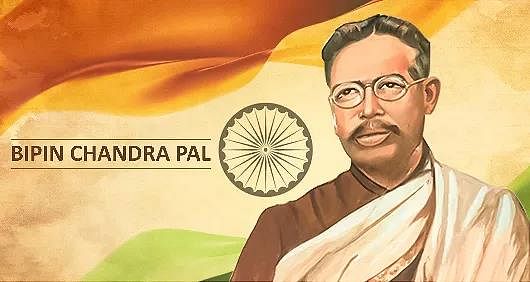
- Tilak, Aurobindo, and Bipin Chandra Pal repeatedly urged the nationalists to rely on the character and capacities of the Indian people.
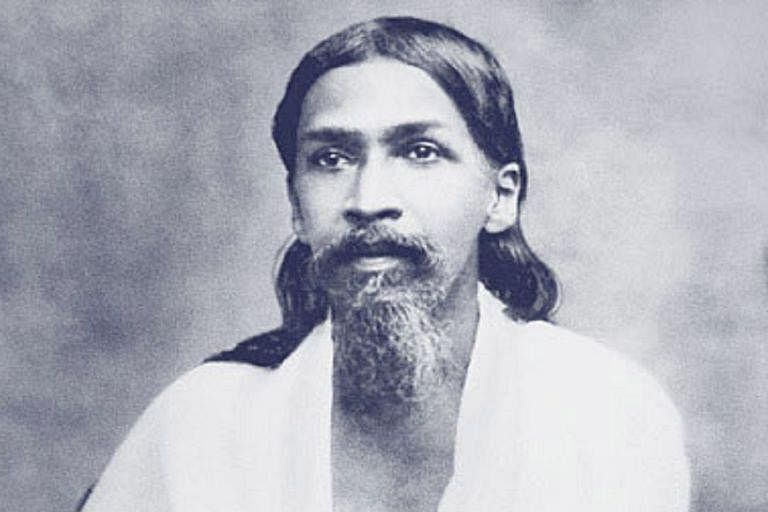 Sri Aurobindo
Sri Aurobindo - A feeling started gaining currency that the masses had to be involved in the battle against the colonial government as they were capable of making the immense sacrifices needed to win freedom.
➢ Growth of Education
- While, on the one hand, the spread of education led to increased awareness among the masses, on the other hand, the rise in unemployment and underemployment among the educated drew attention to poverty and the underdeveloped state of the country’s economy under colonial rule.
➢ International Influences
- The remarkable progress made by Japan after 1868 and its emergence as an industrial power opened the eyes of Indians to the fact that economic progress was possible even in an Asian country without any external help.
- The defeat of the Italian army by Ethiopians (1896), the Boer wars (1899 -1902) where the British faced reverses and Japan’s victory over Russia ( 1905) demolished myths of European invincibility.
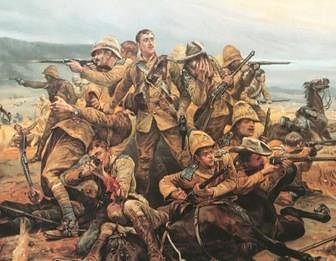 Boer War
Boer War
➢ Reaction to Increasing Westernisation
- The new leadership felt the stranglehold of excessive westernization and sensed colonial designs to submerge the Indian national identity in the British Empire. The intellectual and moral inspiration of the new leadership was Indian.
- Intellectuals like Swami Vivekananda, Bankim Chandra Chatterjee, and Swami Dayananda Saraswati inspired many young nationalists with their forceful and articulate arguments, painting India’s past in brighter colors than the British ideologues had.
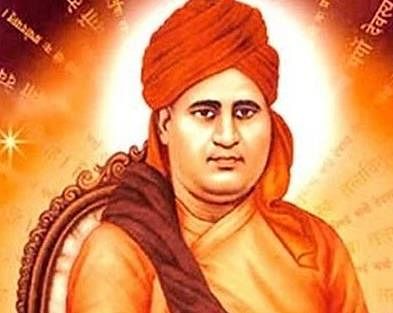 Swami Dayananda Saraswati
Swami Dayananda Saraswati
➢ Dissatisfaction with Achievements of Moderates
- The younger elements within the Congress were dissatisfied with the achievements of the Moderates during 1906-1916.
- They were strongly critical of the methods of peaceful and constitutional agitation, popularly known as the “Three P’s”—prayer, petition, and protest—and described these methods as "political mendicancy’.
➢ Reactionary Policies of Curzon
- A sharp reaction was created in the Indian mind by Curzon’s seven-year rule in India which was full of missions, commissions, and omissions.
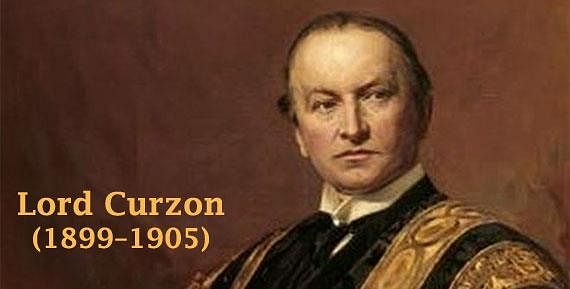
- He refused to recognize India as a nation, and insulted Indian nationalists and the intelligentsia by describing their activities as "letting off of gas”. He spoke derogatory ily of Indian character in general.
➢ Existence of a Militant School of Thought
- Hatred for foreign rule; since no hope could be derived from it, Indians should work out their own salvation;
- swaraj to be the goal of national movement;
- direct political action required; belief incapacity of the masses to challenge the authority.
- personal sacrifices required and a true nationalist to be always ready for it
➢ The Emergence of a Trained Leadership
- The new leadership could provide proper channelization of the immense potential for the political struggle which the masses possessed and, as the militant nationalists thought, we're ready to give expression to.
- This energy of the masses got a release during the movement against the partition of Bengal, which acquired the form of the swadeshi agitation.
The Swadeshi Movement had its genesis in the anti-partition movement which was started to oppose the British decision to partition Bengal.
➢ Partition of Bengal to Divide People
- The British government’s decision to partition Bengal had been made public in December 1903.
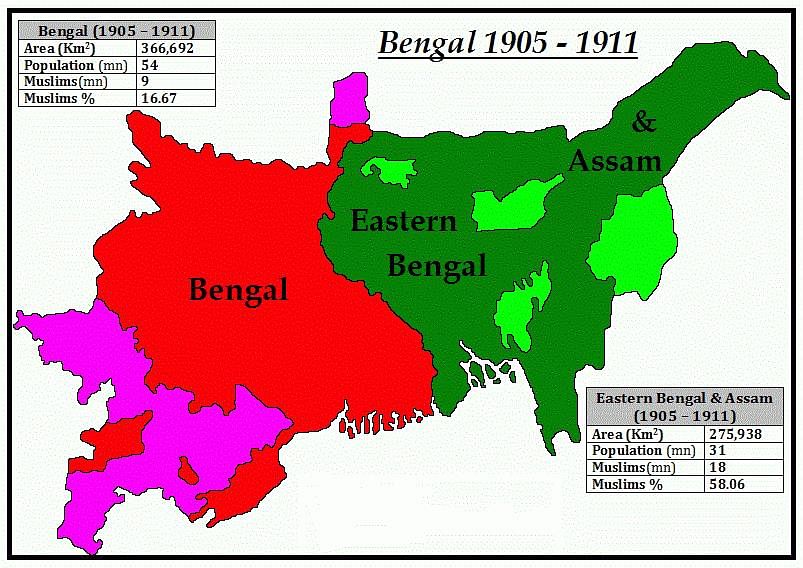
- The idea was to have two provinces: Bengal comprising Western Bengal as well as the provinces of Bihar and Orissa, and Eastern Bengal and Assam.
- Bengal retained Calcutta as its capital, while Dacca became the capital of Eastern Bengal.
➢ Anti-Partition Campaign Under Moderates (1903-05)
- The methods adopted were petitions to the government, public meetings, memoranda, and propaganda through pamphlets and newspapers such as Hitabadi, Sanjibani, and Bengalee.
- Their objective was to exert sufficient pressure on the government through an educated public opinion in India and England to prevent the unjust partition of Bengal from being implemented.
- The government announced the partition of Bengal in July 1905. On August 7, 1905, with the passage of the Boycott Resolution in a massive meeting held in the Calcutta Townhall, the formal proclamation of the Swadeshi Movement was made.
- October 16, 1905, the day the partition formally came into force, was observed as a day of mourning throughout Bengal. 'Amar Sonar Bangla', the national anthem of present-day Bangladesh, was composed by Rabindranath Tagore
➢ The Congress’s Position
- The Indian National Congress, meeting in 1905 under the presidentship of Gokhale, resolved to (i) condemn the partition of Bengal and the reactionary policies of Curzon, and (ii) support the anti-partition and Swadeshi Movement of Bengal.
- A big step forward was taken at the Congress session held at Calcutta (1906) under the presidentship of Dadabhai Naoroji, where it was declared that the goal of the Indian National Congress was “self-government or Swaraj.
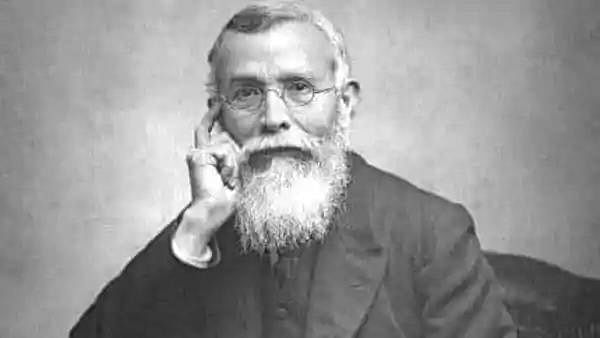 Dadabhai Naoroji
Dadabhai Naoroji
➢ The Movement under Extremist Leadership
- There were three reasons for this:
- The Moderate-led movement had failed to yield results.
- The divisive tactics of the governments of both the Bengals had embittered the nationalists.
- The government had resorted to suppressive measures,
- The Extremist Programme Extremists gave a call for passive resistance in addition to swadeshi and boycott The purpose, as Aurobindo put it, was to “make the administration under present conditions impossible by an organized refusal to do anything which will help either the British commerce in the exploitation of the country or British officialdom in the administration of it”. 'Political freedom is the life-breath of a nation,” declared Aurobindo.
➢ New Forms of Struggle
- Boycott of Foreign Goods, Public Meetings, and Processions.
- Corps of Volunteers or 'Samitis'-Samitis such as the Swadesh Bandhab Samiti of Ashwini Kumar Dutta (in Barisal) emerged as a very popular and powerful means of mass mobilization. In Tirunelveli, Tamil Nadu, V.O. Chidambaram Pillai, Subramania Siva, and some lawyers formed the Swadeshi Sangam which inspired the local masses.
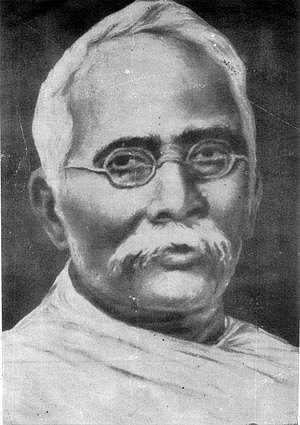 Ashwini Kumar Dutta
Ashwini Kumar Dutta - Imaginative use of Traditional Popular Festivals and Melas.
- Emphasis is given to Self-Reliance.
- Program of Swadeshi or National Education-Bengal National College, inspired by Tagore's Shantiniketan, was set up with Aurobindo Ghosh as its principal. On August 15, 1906, the National Council of Education was set up to organize a system of education— literary, scientific and technical—on national lines and under national control.
- Swadeshi or Indigenous Enterprises V.O. Chidambaram Pillai s venture into a national shipbuilding enterprise—Swadeshi Steam Navigation Company—at Tuticorin
- Impact in the Cultural Sphere In Tamil Nadu, Subramania Bharati wrote Sudesha Geetham. In painting, Abanindranath Tagore broke the domination of Victorian naturalism over the Indian art scene and took inspiration from Ajanta, Mughal, and Rajput paintings. Nandalal Bose, who left a major imprint on Indian art, was the first recipient of a scholarship offered by the Indian Society of Oriental Art, founded in 1907.
➢ The Extent of Mass Participation
- Student participation was visible in Bengal, Maharashtra, especially in Poona, and in many parts of the South—Guntur, Madras, Salem.
- Women play a significant role in the national movement.
- The nature of the Swadeshi Movement, with leaders evoking Hindu festivals and goddesses for inspiration, tended to exclude the Muslims. In September 1905, more than 250 Bengali clerks of the Burn Company, Howrah, walked out in protest against a derogatory work regulation.
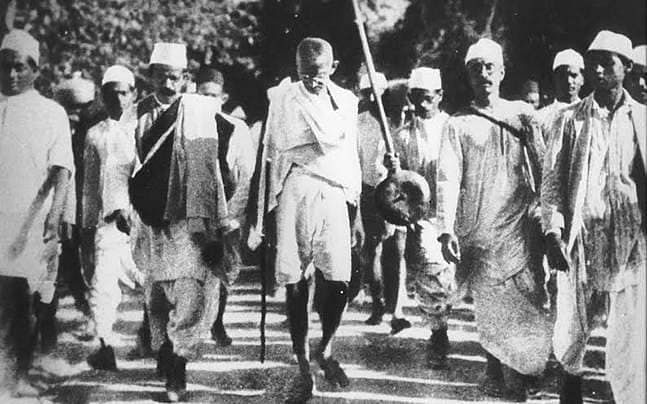 Swadeshi Movement
Swadeshi Movement - In July 1906, a strike of workers in the East Indian Railway resulted in the formation of a Railwaymen’s Union.
- Between 1906 and 1908, strikes in the jute mills were very frequent, Subramania Siva and Chidambaram Pillai led strikes in Tuticorin and Tirunelveli in a foreign-owned cotton mill. In Rawalpindi (Punjab), the arsenal and railway workers went on strike
- All India Aspect Movements in support of Bengal's unity and the swadeshi and boycott agitation were organized in many parts of the country.
➢ Annulment of Partition
- The annulment came as a rude shock to the Muslim political elite. It was also decided to shift the capital to Delhi
➢ Evaluation of the Swadeshi Movement
- The movement failed to create an effective organization or a party structure. It threw up an entire gamut of techniques that later came to be associated with Gandhian politics— noncooperation, passive resistance, filling of British jails, social reform, and constructive work—but failed to give these techniques a disciplined focus.
- The movement was rendered leaderless with most of the leaders either arrested or deported by 1908 and with Aurobindo Ghosh and Bipin Chandra Pal retiring from active politics.
- Internal squabbles among leaders, magnified by the Surat split (1907), did much harm to the movement.
- The movement aroused the people but did not know how to tap the newly released energy or how to find new forms to give expression to popular resentment. The movement largely remained confined to the upper and middle classes and zamindars and failed to reach the masses—especially the peasantry.
- Non-cooperation and passive resistance remained mere ideas.
- It is difficult to sustain a mass-based movement at a high pitch for too long.
➢ Movement a Turning Point
- It proved to be a “leap forward" in more ways than one. Hitherto untouched sections— students, women, workers, some sections of the urban and rural population—participated.
- All the major trends of the national movement, from conservative moderation to political extremism, from revolutionary activities to incipient socialism, from petitions and prayers to passive resistance and non-cooperation, emerged during the Swadeshi Movement.
- The richness of the movement was not confined to the political sphere but encompassed art, literature, science, and industry also.
- People were aroused from slumber and now they learned to take bold political positions and participate in new forms of political work.
- The swadeshi campaign undermined the hegemony of colonial ideas and institutions.
- The future struggle was to draw heavily from the experience gained.
➢ Moderate Methods Give Way to Extremist Modes
- Moderates had outlived their utility and their politics of petitions and speeches had become obsolete.
- Their failure to get the support of the younger generation for their style of politics.
- Their failure to work among the masses had meant that their ideas did not take root among the masses.
- The Extremist ideology and its functioning also lacked consistency. Its advocates ranged from open members and secret sympathizers to those opposed to any kind of political violence.
➢ Run-up to Surat
- In December 1905, at the Benaras session of the Indian National Congress presided over by Gokhale.
- A relatively mild resolution condemning the partition of Bengal and the reactionary policies of Curzon and supporting the swadeshi and boycott program in Bengal was passed.
- The Calcutta session of the Congress in December 1906
- Moderates wanted to restrict the Boycott Movement to Bengal and to a boycott of foreign cloth and liquor. Extremists wanted to take the movement to all parts of the country and include within its ambit all forms of association
➢ Split Takes Place
- The split became inevitable, and the Congress was now dominated by the Moderates who lost no time in reiterating Congress’ commitment to the goal of self-government within the British Empire and to the use of constitutional methods only to achieve this goal.
➢ Government Repression
- The Seditious Meetings Act, 1907; Indian Newspapers (Incitement to Offences) Act, 1908;
- Criminal Law Amendment Act, 1908; and The Indian Press Act, 1910.
- Tilak, the main Extremist leader, was tried in 1909 for sedition for what he had written in
- 1908 in his Kesari about a bomb was thrown by Bengal revolutionaries in Muzaffarpur 107.
- On 30 April 1908, Khudiram Bose threw a bomb on a carriage at Muzzafarpur, to kill the Chief Presidency Magistrate Douglas Kingsford.
- Khudiram Bose Indian revolutionary who opposed British rule of India.
(i) He was sentenced to death at the age of 19 making him one of the youngest revolutionaries in India.
(ii) Khudiram was hanged on 11 August 1908. - The first attempt to kill Kingsford was in the form of a book bomb constructed by Hemchandra.
- Indian revolutionary Prafulla Chandra Chaki also associated with the Muzzafarpur bomb case along with Khudiram Bose.
➢ The Government Strategy
- In the government’s view, the Moderates still represented an anti-imperialist force consisting of basically patriotic and liberal intellectuals..
- The policy was to be of Tallying them’ (John Morley— the secretary of state) or the policy of 'carrot and stick’.
- It may be described as a three-pronged approach of repression conciliation- suppression.
- In the first stage, the Extremists were to be repressed mildly
- In the second stage, the Moderates were to be placated through some concessions
- The Surat split suggested that the policy of carrot and stick had brought rich dividends to the British Indian government.
➢ Morley-Minto Reforms—1909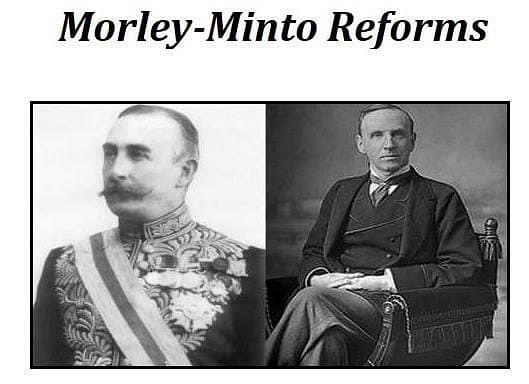 Minto at left and Morley at right
Minto at left and Morley at right
- In October 1906, a group of Muslim elites called the Simla Deputation, led by the Agha Khan, met Lord Minto and demanded separate electorates for the Muslims.
- The same group quickly took over the Muslim League, initially floated by Nawab Salimullah of Dacca along with Nawabs Mohsin-ul-Mulk and Waqar-ul- Mulk in December 1906.
➢ The Reforms
- The Morley- Minto (or Minto-Morley) Reforms translated into the Indian Councils Act of 1909.
- The elective principle was recognized for the nonofficial membership of the councils in India. Indians were allowed to participate in the election of various legislative councils, though on the basis of class and community.
- For the first time, separate electorates for Muslims for election to the central council was established—a most detrimental step for India.
- The number of elected members in the Imperial Legislative Council and the Provincial Legislative Councils was increased. In the provincial councils, a non-official majority was introduced, but since some of these non-officials were nominated and not elected, the overall non-elected majority remained.
- According to Sumit Sarkar, in the Imperial Legislative Council, of the total 69 members, 37 were to be the officials and of the 32 non-officials, 5 were to be nominated. Of the 27 elected non-officials, 8 seats were reserved for the Muslims under separate electorates (only Muslims could vote here for the Muslim candidates), while 4 seats were reserved for the British capitalists, 2 for the landlords, and 13 seats came under the general electorate.
- The elected members were to be indirectly elected. The local bodies were to elect an electoral college, which in turn would elect members of provincial legislatures, who in turn would elect members of the central legislature.
- Besides separate electorates for the Muslims, representation in excess of the strength of their population was according to the Muslims. Also, the income qualification for Muslim voters was kept lower than that for Hindus.
- Powers of legislatures—both at the center and in provinces—were enlarged and the legislatures could now pass resolutions (which may or may not be accepted), ask questions and supplementary, vote separate items in the budget through the budget as a whole could not be voted upon.
- One Indian was to be appointed to the viceroy’s executive council (Satyendra Sinha was the first Indian to be appointed in 1909).
➢ Evaluation
- Lord Morley said, “If it could be said that this chapter of reforms led directly or indirectly to the establishment of a parliamentary system in India, I, for one, would have nothing at all to do with it.”
- The system of election was too indirect and it gave the impression of “infiltration of legislators through a number of sieves".
- What the reforms of 1909 gave to the people of the country was a shadow rather than substance.
- The people had demanded self-government but what they were given was ''benevolent despotism''.
- The first phase acquired a more activist form as a fallout of the Swadeshi and Boycott Movement and continued till 1917. The second phase started as a fallout of the Non-Cooperation Movement.
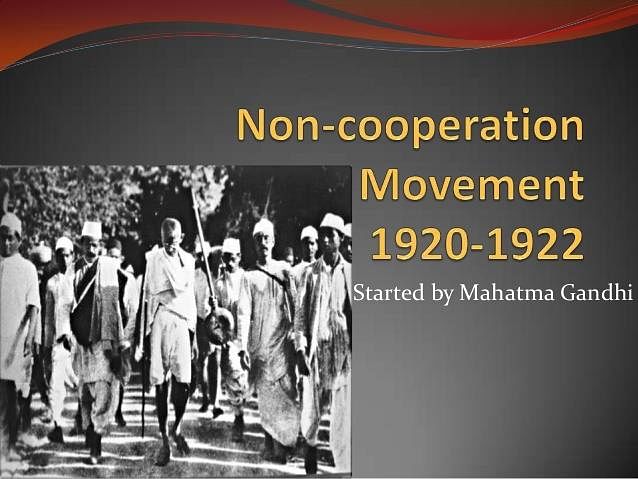
- After the decline of the open movement, the younger nationalists who had participated in the movement found it impossible to leave off and disappear into the background.
- They looked for avenues to give expression to their patriotic energies but were disillusioned by the failure of the leadership, even the Extremists, to find new forms of struggle to bring into practice the new militant trends.
- The Extremist leaders, although they called upon the youth to make sacrifices, failed to create an effective organisation or find new forms of political work to tap these revolutionary energies.
- The revolutionaries considered but did not find it practical at that stage to implement, the options of creating a violent mass revolution throughout the country or of trying to subvert the loyalties of the Army.
- Instead, they opted to follow in the footsteps of Russian nihilists or the Irish nationalists. This methodology involved individual heroic actions, such as organising assassinations of unpopular officials and of traitors and informers among the revolutionaries themselves, conducting swadeshi dacoities to raise funds for revolutionary activities, and (during the First World War) organising military conspiracies with the expectation of help from the enemies of Britain.
➢ Bengal
- First revolutionary groups were organised in 1902 in Midnapore (under Jnanendranath Basu) and in Calcutta (the Anushilan Samiti founded by Promotha Mitter, and including Jatindranath Banerjee, Barindra Kumar Ghosh and others.)
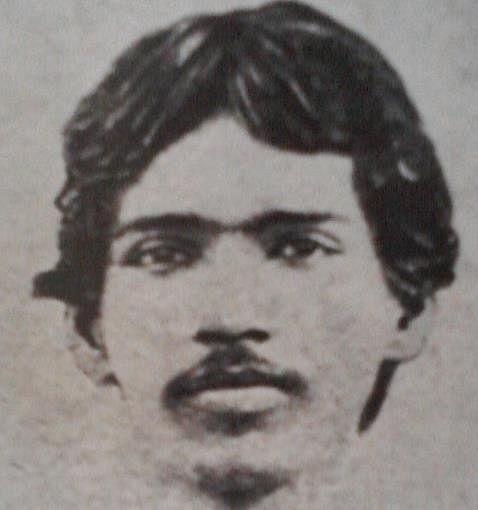 Barindra Kumar Ghosh
Barindra Kumar Ghosh - In April 1906, an inner circle within Anushilan (Barindra Kumar Ghosh, Bhupendranath Dutta) started the weekly Yugantar and conducted a few abortive 'actions’.
- After severe police brutalities on participants of the Barisal Conference (April 1906), the Yugantar wrote: "The remedy lies with the people. The 30 crore people inhabiting India must raise their 60 crore hands to stop this curse of oppression. Force must be stopped by force.”
- Rashbehari Bose and Sachin Sanyal had organised secret society covering far-flung areas of Punjab, Delhi and United Provinces while some others like Hemachandra Kanungo went abroad for military and political training.
- In 1907, an abortive attempt was made by the Yugantar group on the life of a very unpopular British official, Sir Fuller (the first Lt. Governor of the new province of Eastern Bengal and Assam).
- In December 1907, there were attempts to derail the train on which the lieutenant- governor, Sri Andrew Fraser.
- In 1908, Prafulla Chaki and Khudiram Bose threw a bomb at a carnage. The whole Anushilan group was arrested including the Ghosh brothers, Aurobindo and Barindra, who were tried in the Alipore conspiracy case, variously called Manicktolla bomb conspiracy or Muraripukur conspiracy.
- In February 1909, the public prosecutor was shot dead in Calcutta and in February 1910, a deputy superintendent of police met the same fate while leaving the Calcutta High Court.
- In 1908, Barrah dacoity was organised by Dacca Anushilan under Pulin Das to raise funds for revolutionary activities.
- Jatin Mukherjee was shot and died a hero's death in Balasore on the Orissa coast in September 1915. “We shall die to awaken the nation ", was the call of Bagha Jatin.
- Newspapers and journals advocating revolutionary activity included Sandhya and Yugantar in Bengal and Kal in Maharashtra.
➢ Maharashtra
- First of the revolutionary activities in Maharashtra was the organisation of the Ramos Peasant Force by Vasudev Balwant Phadke.
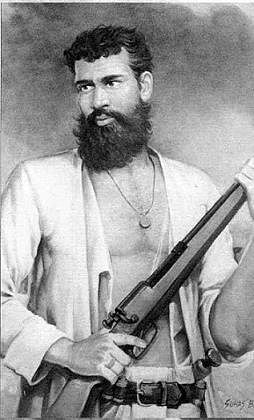 Vasudev Balwant Phadke
Vasudev Balwant Phadke - In 1879 Tilak propagated a spirit of militant nationalism, including use of violence, through Ganapati and Shivaji festivals and his journals Kesari and Mahratta. Two of his disciples—the Chapekar brothers, Damodar and Balkrishna—murdered the Plague Commissioner of Poona, Rand, and one Lt. Ayerst in 1897.
- Savarkar and his brother organised Mitra Mela, a secret society, in 1899 which merged with Abhinav Bharat (after Mazzini's Young Italy') in 1904. SoonNasik, Poona and Bombay emerged as centres of bomb manufacture.
➢ Punjab
- Lala Lajpat Rai who brought out Punjabi (with its motto of self-help at any cost) and Ajit Singh (Bhagat Singh's uncle) who organised the extremist Anjuman-i-Mohisban-i- Watan in Lahore with its journal, Bharat Mata.
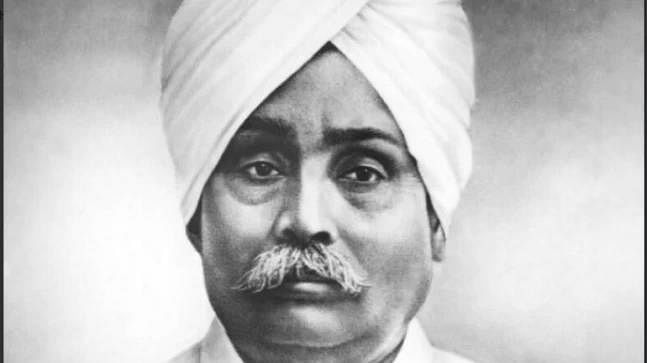 Lala Lajpat Rai
Lala Lajpat Rai
➢ Revolutionary Activities Abroad
- Shyamji Krishnavarma had started in London in 1905 an Indian Home Rule Society— "India House’—as a centre for Indian students, a scholarship scheme to bring radical youth from India, and a journal The Indian Sociologist.
- Madanlal Dhingra from this circle assassinated the India office bureaucrat Curzon- Wyllie in 1909. New centres emerged on the continent—Paris and Geneva.
- The Ghadar
- Ghadar Party was a revolutionary group organised around a weekly newspaper. The Ghadar with its headquarters at San Francisco and branches along the US coast and in the Far East.
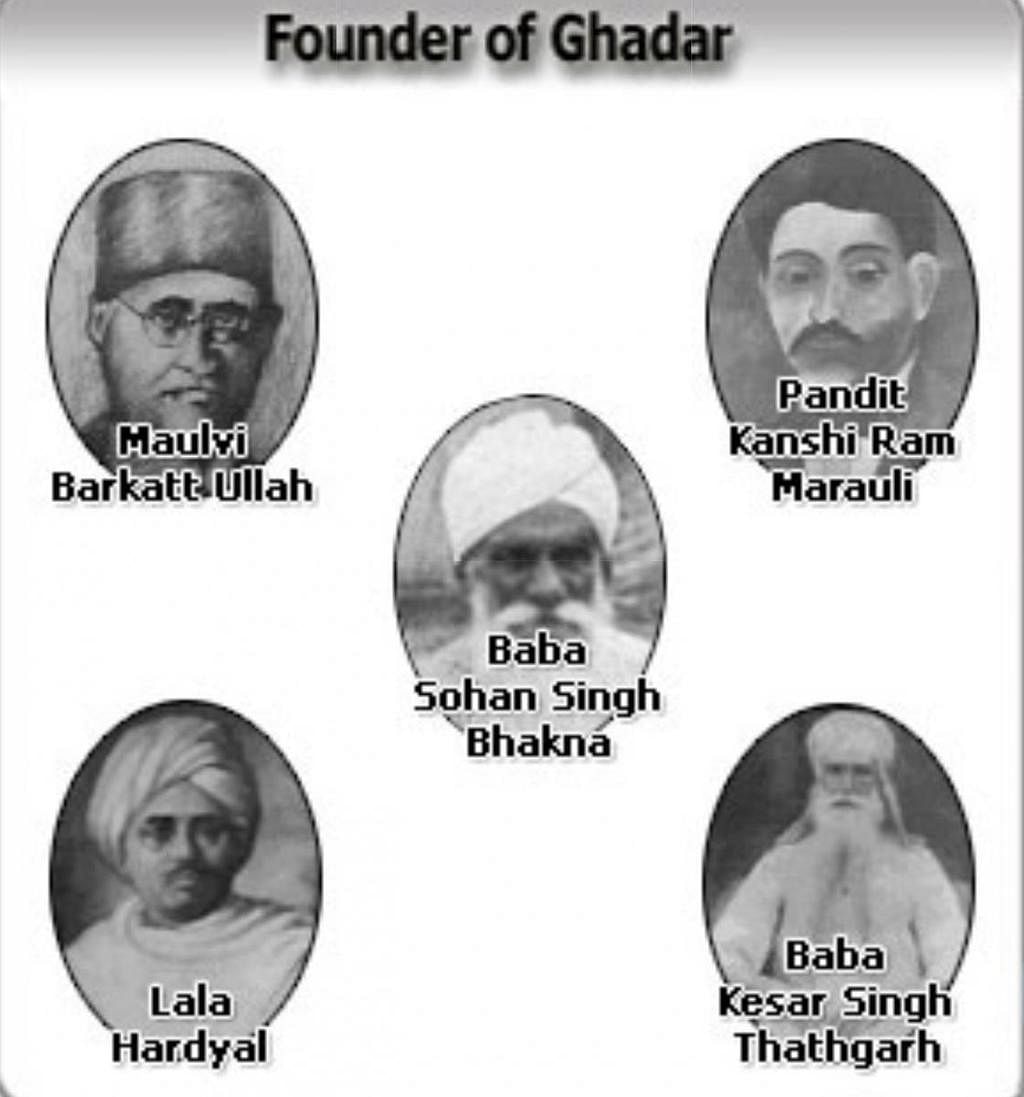
- These revolutionaries included mainly ex-soldiers and peasants who had migrated from Punjab to the USA and Canada in search of better employment opportunities.
- To carry out revolutionary activities, the earlier activists had set up a 'Swadesh Sevak Home’ at Vancouver and 'United India House' at Seattle. Finally, in 1913, the Ghadr was established.
- Their plans were encouraged by two events in 1914— the Komagata Maru incident and the outbreak of the First World War.
- Komagata Maru Incident and the Ghadr Komagata Maru was the name of a ship which was carrying 370 passengers, mainly Sikh and Punjabi Muslim would-be immigrants, from Singapore to Vancouver.
- The ship finally anchored at Calcutta in September 1914. The inmates refused to board the Punjab bound train. In the ensuing conflict with the police at Budge Budge near Calcutta, 22 persons died.
- Ghadrites fixed February 21, 1915, as the date for an armed revolt in Ferozepur, Lahore and Rawalpindi garrisons. The authorities took immediate action, aided by the Defence of India Rules, 1915.
- British met the wartime threat with a formidable battery of repressive measures— the most intensive since 1857—and above all by the Defence of India Act passed in March 1915 primarily to smash the Ghadr movement.
- Evaluation of Ghadr The achievement of the Ghadr movement lay in the realm of ideology. It preached militant nationalism with a completely secular approach.
- Ghadar Party was a revolutionary group organised around a weekly newspaper. The Ghadar with its headquarters at San Francisco and branches along the US coast and in the Far East.
➢ Revolutionaries in Europe
- Berlin Committee for Indian Independence was established in 1915 by Virendranath Chattopadhyay, Bhupendranath Dutta, Lala Hardayal and others with the help of the German foreign office under 'Zimmerman Plan’.
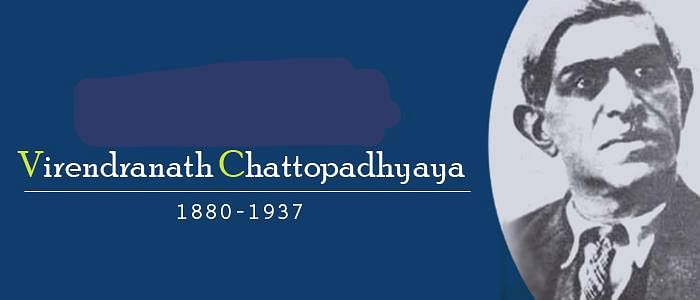
- Indian revolutionaries in Europe sent missions to Baghdad, Persia, Turkey and Kabul to work among Indian troops and the Indian prisoners of war (POWs) and to incite anti- British feelings among the people of these countries.
- One mission under Raja Mahendra Pratap Singh, Barkatullah and Obaidullah Sindhi went to Kabul to organise a 'provisional Indian government' there with the help of the crown prince, Amanullah.
➢ Mutiny in Singapore
- Most notable was in Singapore on February 15, 1915, by Punjabi Muslim 5th Light Infantry and the 36th Sikh battalion under Jamadar Chisti Khan, Jamadar Abdul Gani and Subedar Daud Khan.
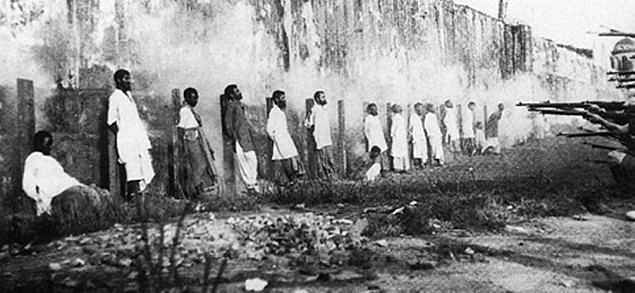 Mutiny in Singapore
Mutiny in Singapore - It was crushed after a fierce battle in which many were killed.
➢ Decline
- There was a temporary respite in revolutionary activity after the First World War because the release of prisoners held under the Defence of India Rules cooled down passions a bit, there was an atmosphere of conciliation after Montagu’s August 1917 statement.
Towards the end of the First World War, various forces were at work in India and on the international scene. After the end of the war, there was a resurgence of nationalist activity in India and in many other colonies in Asia and Africa.
The Indian struggle against imperialism took a decisive turn towards a broad-based popular struggle with the emergence of Mohandas Karamchand Gandhi on the Indian political scene.
Why Nationalist Resurgence Now - After the war, the conditions in India and influences from abroad created a situation that was ready for a national upsurge against foreign rule.
Post-War Economic Hardships
(i) Industry- First, an increase in prices, then a recession coupled with increased foreign investment brought many industries to the brink of closure and loss.
(ii) Workers and Artisans- This section of the populace faced unemployment and bore the brunt of high prices.
(iii) Peasantry- Faced with high taxation and poverty, the peasants waited for a lead to protest.
(iv) Soldiers- Soldiers who returned from battlefields abroad gave an idea of their experience to the rural folk.
(v) Educated Urban Classes- This section was facing unemployment as well as suffering from an acute awareness of racism in the attitude of the British.
Expectations of Political Gains for Cooperation in the War
After the war, there were high expectations of political gains from the British government and this too contributed towards the charged atmosphere in the country.
Nationalist Disillusionment with Imperialism Worldwide
The Paris Peace Conference and other peace treaties that the imperialist powers had no intention of loosening their hold over the colonies; in fact they went on to divide the colonies of the vanquished powers among themselves.
Impact of Russian Revolution (7 November,1917)
- The Bolshevik Party of workers overthrew the Czarist regime and founded the first socialist state, the Soviet Union, under the leadership of Vladimir Ilyich Ulyanov or Lenin.
- The Soviet Union unilaterally renounced the Czarist imperialist rights in China and the rest of Asia, gave rights of self determination to former Czarist colonies in Asia and gave equal status to the Asian nationalities within its borders.
Montagu-Chelmsford Reforms and Government of India Act, 1919
- The carrot was represented by the insubstantial Montagu-Chelmsford Reforms, while measures such as the Rowlatt Act represented the stick.
- In line with the government policy contained in Montagu's statement of August 1917, the government announced further constitutional reforms in July 1918, known as Montagu- Chelmsford or Montford Reforms. Based on these, the Government of India Act, 1919 was enacted.
Main Features
Provincial Government—Introduction of Dyarchy
I. Executive
- Dyarchy, i.e., rule of two—executive councillors and popular ministers— was introduced. The governor was to be the executive head in the province.
- Subjects were divided into two lists: ‘reserved' and ‘transferred' subjects.
- The reserved subjects were to be administered by the governor through his executive council of bureaucrats, and the transferred subjects were to be administered by ministers nominated from among the elected members of the legislative council.
- The ministers were to be responsible to the legislature and had to resign if a no- confidence motion was passed against them by the legislature, while the executive councillors were not to be responsible to the legislature.
- In case of failure of constitutional machinery in the province the governor could take over the administration of transferred subjects also.
- The secretary of state for India and the governor general could interfere in respect of reserved subjects while in respect of the transferred subjects, the scope for their interference was restricted.
II. Legislature
- Provincial legislative councils were further expanded and 70 per cent of the members were to be elected.
- The system of communal and class electorates was further consolidated.
- Women were also given the right to vote.
- The legislative councils could initiate legislation but the governor’s assent was required. The governor could veto bills and issue ordinances.
- The legislative councils could reject the budget but the governor could restore it, if necessary.
- The legislators enjoyed freedom of speech.
Central Government—Still Without Responsible Government
I. Executive
- The governor-general was to be the chief executive authority.
- There were to be two lists for administration— central and provincial.
- In the viceroy’s executive council of eight, three were to be Indians.The governor-general retained full control over the reserved subjects in the provinces.
- The governor-general could restore cuts in grants, certify bills rejected by the central legislature and issue ordinances.
II. Legislature
- A bicameral arrangement was introduced. The lower house or Central Legislative Assembly would consist of 145 members and the upper house or Council of State would have 60 members.
- The Council of State had a tenure of 5 years and had only male members, while the Central Legislative Assembly had a tenure of 3 years.
- The legislators could ask questions and supplementaries, pass adjournment motions and vote a part of the budget, but 75 per cent of the budget was still notvotable.
- On the home government (in Britain) front, the Government of India Act, 1919 made an important change— the Secretary of State for India was henceforth to be paid out of the British exchequer.
Drawbacks
- Franchise was very limited. The electorate was extended to some one-and-a-half million for the central legislature, while the population of India was around 260 million, as per one estimate.
- At the centre, the legislature had no control over the viceroy and his executive council.
- Division of subjects was not satisfactory at the centre.
- Allocation of seats for central legislature to the provinces was based on importance of provinces— for instance, Punjab’s military importance and Bombay’s commercial importance.
- At the level of provinces, division of subjects and parallel administration of two parts was irrational and, hence, unworkable. Subjects like irrigation, finance, police, press and justice were 'reserved’.
- The provincial ministers had no control over finances and over the bureaucrats; this would lead to constant friction between the two. Ministers were often not consulted on important matters too; in fact, they could be overruled by the governor on any matter that the latter considered special.
Congress’s Reaction
- The Congress met in a special session in August 1918 at Bombay under Hasan Imam's presidency and declared the reforms to be "disappointing" and “unsatisfactory”
- The Montford reforms were termed “unworthy and disappointing—a sunless dawn by Tilak, even as Annie Besant found them “unworthy of England to offer and India to accept''
Making of Gandhi
Early Career and Experiments with Truth in South Africa
- Mohandas Karamchand Gandhi was born on October 2, 1869 in Porbandar in the princely state of Kathiawar in Gujarat. After studying law in England, Gandhi went to South Africa on May 24, 1893. He stayed there till 1914 after which he returned to India.
- The Indians in South Africa consisted of three categories—one, the indentured Indian labour; two, the merchants; and three,the ex-indentured labourers.
- Moderate Phase of Struggle (1894-1906)-To unite different sections of Indians, Gandhiset up the Natal Indian Congress and started a paper Indian Opinion.
- Phase of Passive Resistance or Satyagraha (1906-1914)-The second phase, which began in 1906, was characterized by the use of the method of passive resistance or civil disobedience, which Gandhi named satyagraha.
- Satyagraha against Registration Certificates (1906)- Gandhi formed the Passive Resistance Association to conduct the campaign of defying the law and suffering all the penalties. Thus was born satyagraha or devotion to truth, the technique of resisting adversaries without violence.
- Campaign against Restrictions on Indian Migration-The earlier campaign was widened to include protest against a new legislation imposing restrictions on Indian migration.
- Campaign against Poll Tax and Invalidation of Indian Marriages
- Protest against Transvaal Immigration Act-The Indians protested the Transvaal Immigration Act, by illegally migrating from Natal into Transvaal. Even the viceroy, Lord Hardinge, condemned the repression and called for an impartial enquiry.
- Compromise Solution
Gandhi's Experience in South Africa
- Gandhi found that the masses had immense capacity to participate in and sacrifice for a cause that moved them.
- He was able to unite Indians belonging to different religions and classes, and men and women alike under his leadership.
- He also came to realise that at times the leaders have to take decisions unpopular with their enthusiastic supporters.
- He was able to evolve his own style of leadership and politics and new techniques of struggle on a limited scale, untrammelled by the opposition of contending political currents.
Gandhi's Technique of Satyagraha - Gandhi evolved the technique of Satyagraha during his stay in South Africa. It was based on truth and non- violence.
- A satyagrahi was not to submit to what he considered as wrong, but was to always remain truthful, non-violent and fearless.
- A satyagrahi works on the principles of withdrawal of cooperation and boycott. Methods of satyagraha include non-payment of taxes, and declining honours and positions of authority.
- A satyagrahi should be ready to accept suffering in his struggle against the wrongdoer. This suffering was to be a part of his love for truth.
- While carrying out his struggle against the wrong-doer, a true satyagrahi would have no ill feeling for the wrong-doer; hatred would be alien to his nature.
- A true satyagrahi would never bow before the evil, whatever the consequence.
- Only the brave and strong could practise satyagraha;
Gandhi in India- Gandhi returned to India in January 1915. During 1917 and 1918, Gandhi was involved in three struggles—in Champaran, Ahmedabad and Kheda—before he launched the Rowlatt Satyagraha.
Champaran Satyagraha (1917)—First Civil Disobedience
- The European planters had been forcing the peasants to grow indigo on 3/20 part of the total land (called tinkathia system). The peasants were forced to sell the produce at prices fixed by the Europeans.
- When Gandhi, joined now by Rajendra Prasad, Mazharul- Haq, Mahadeo Desai, Narhari Parekh, and
- J.B. Kripalani, reached Champaran to probe into the matter, the authorities ordered him to leave the area at once.
- This passive resistance or civil disobedience of an unjust order was a novel method at that time. The government appointed a committee to go into the matter and nominated Gandhi as a member.
- Gandhi was able to convince the authorities that the tinkathia system should be abolished and that the peasants should be compensated for the illegal dues extracted from them.
- As a compromise with the planters, he agreed that only 25 per cent of the money taken should be compensated.
Ahmedabad Mill Strike (1918)— First Hunger Strike
- In March 1918, Gandhi intervened in a dispute between cotton mill owners of Ahmedabad and the workers over the issue of discontinuation of the plague bonus.
- The workers of the mill turned to Anusuya Sarabhai for help in fighting for justice. Anusuya Sarabhai was a social worker who was also the sister of Ambalal Sarabhai, one of the mill owners and the president of the Ahmedabad Mill Owners Association (founded in 1891 to develop the textile industry in Ahmedabad).
- Gandhi asked the workers to go on a strike and demand a 35 per cent increase in wages instead of 50 per cent.
Kheda Satyagraha (1918)—First Non- Cooperation
- Because of drought in 1918, the crops failed in Kheda district of Gujarat. According to the Revenue Code, if the yield was less than one-fourth the normal produce, the farmers were entitled to remission.
- Gandhi asked the farmers not to pay the taxes. Patel along with his colleagues organized the tax revolt which the different ethnic and caste communities of Kheda supported.
Gains from Champaran, Ahmedabad and Kheda
- Gandhi demonstrated to the people the efficacy of his technique of satyagraha.
- He found his feet among the masses and came to have a surer understanding of the strengths and weaknesses of the masses.
- He acquired respect and commitment of many.
Rowlatt Act, Satyagraha, Jaliianwala Bagh Massacre
The Rowlatt Act
- Two bills were introduced in the Imperial Legislative Council. One of them was dropped, but the other— an extension to the Defence of India Regulations Act 1915—was passed in March 1919.
- It was what was officially called the Anarchical and Revolutionary Crimes Act, but popularly known as the Rowlatt Act. It was based on the recommendations made by the Rowlatt Commission, headed by the British judge, Sir Sidney Rowlatt, to investigate the 'seditious conspiracy' of the Indian people.
- The act allowed political activists to be tried without juries or even imprisoned without trial. It allowed arrest of Indians without warrant on the mere suspicion of ‘treason’.
- The law of habeas corpus, the basis of civil liberty, was sought to be suspended. The object of the government was to replace the repressive provisions of the wartime Defence of India Act (1915) by a permanent law.
Satyagraha Against the Rowlatt Act— First Mass Strike - Gandhi called the Rowlatt Act the “Black Act'’. There was a radical change in the situation by now.
- The masses had found a direction; now they could act’ instead of just giving verbal expression to their grievances.
- From now onwards, peasants, artisans and the urban poor were to play an increasingly important part in the struggle.
- Orientation of the national movement turned to the masses permanently.
- Satyagraha was to be launched on April 6, 1919 but before it could be launched, there were large-scale violent, anti-British demonstrations.
Jallianwala Bagh Massacre (April 13,1919)
- On April 9, two nationalist leaders, Saifuddin Kitchlew and Dr Satyapal, were arrested by the British officials without any provocation except that they had addressed protest meetings, and taken to some unknown destination.
- This caused resentment among the Indian protestors who came out in thousands on April 10 to show their solidarity with their leaders. Soon the protests turned violent because the police resorted to firing in which some of the protestors were killed.
- By then the city had returned to calm and the protests that were being held were peaceful. Dyer, however, issued a proclamation on April 13 (which was also Baisakhi) forbidding people from leaving the city without a pass and from organising demonstrations or processions, or assembling in groups oi more than three.
- On Baisakhi day, a large crowd of people mostly from neighbouring villages, unaware of the prohibitory orders in the city, gathered in the Jallianwala Bagh, a popular place for public events, to celebrate the Baisakhi festival.
- The troops surrounded the gathering under orders from General Dyer and blocked the only exit point and opened fire on the unarmed crowd.
- According to official British Indian sources, 379 were identified dead, and approximately 1,100 were wounded. Indian National Congress, on the other hand, estimated more than 1,500 were injured, and approximately 1,000 were killed. But it is precisely known that 1650 bullets were fired into the crowd.
- Gandhi gave up the title of Kaiser-i-Hind, bestowed by the British for his work during the Boer War. Gandhi was overwhelmed by the atmosphere of total violence and withdrew the movement on April 18, 1919.
- According to the historian, A.P.J Taylor, the Jallianwala Bagh massacre was the “decisive moment when Indians were alienated from British rule*’.
The Hunter Committee of Inquiry
- On October 14, 1919, the Government of India announced the formation of the Disorders Inquiry Committee, which came to be more widely and variously known as the Hunter Committee/Commission
- The purpose of the commission was to “investigate the recent disturbances in Bombay, Delhi and Punjab, about their causes, and the measures taken to cope with them’.
- There were three Indians among the members, namely, Sir Chimanlal Harilal Setalvad, Vice-Chancellor of Bombay University and advocate of the Bombay High Court; Pandit Jagat Narayan, lawyer and Member of the Legislative Council of the United Provinces; and Sardar Sahibzada Sultan Ahmad Khan, lawyer from Gwalior State.
- Dyer is reported to have explained his sense of honour by saying, “I think it quite possible that I could have dispersed the crowd without firing but they would have come back again and laughed, and I would have made, what I consider, a fool of myself.”
- The government had passed an Indemnity Act for the protection of its officers. The “white washing bill" as the Indemnity Act was called, was severely criticised by Motilal Nehru and others.
- In the House of Commons, Churchill (no lover of Indians) condemned what had happened at Amritsar. He called it “monstrous”.
- A former prime minister of Britain, H.H. Asquith called it “one of the worst outrages in the whole of our history”.
- The honouring of Dyer by the priests of Sri Darbar Sahib, Amritsar, was one of the reasons behind the intensification of the demand.
- Congress View-The Indian National Congress appointed its own non-official Committee and put forward its own view.
THE EARLY PHASE OF THE FREEDOM STRUGGLE (1900 - 1915)
➢ Partition of Bengal
- The partition of Bengal was done by Lord Curzon, on 16 October 1905, through a royal proclamation, reducing the old province of Bengal in size by creating East Bengal and Assam out of rest of Bengal.
- The government said that it was done to stimulate growth in the eastern region.
- But motives were to break the growing strength of Bengali nationalism since Bengal was the base of Indian nationalism and to divide the Hindus and Muslims in Bengal.
- On the same day when the partition came into effect, the people of Bengal orgainsed protest meetings and observed a day of mourning.
- The ceremony of Raksha Bandhan was observed on 16th October, 1905 where Hindus and Muslims tied rakhis to each other to show solidarity.
- The whole political life of Bengal underwent a change. Rabindranath Tagore composed the national song ‘Amar Sonar Bangla’ for the occasion which was later adopted as the national anthem of Bangladesh in 1971 after liberation from Pakistan.
- Gandhi wrote that the real awakening in India took place only after the Partition of Bengal.
- The anti-partition movement culminated into the Swadeshi Movement and spread to other parts of India.
SWADESHI MOVEMENT
- Lokamanya Tilak took the movement to different parts of India, especially Poona and Bombay; Ajit Singh and Lala Lajpat Rai spread the Swadeshi message in Punjab and other parts of northern India.
- Syed Haidar Raza led the movement in Delhi; Rawalpindi, Kangra, Jammu, Multan and Haridwar witnessed active participation in the Swadeshi Movement; Chidambaram Pillai took the movement to the Madras presidency, which was also galvanized by Bipin Chandra Pal’s extensive lecture tour.
- The Indian National Congress took up the Swadeshi called and the Banaras Session, in 1905, which was presided over by G.K. Gokhale.
- It supported the Swadeshi and Boycott Movement for Bengal.
- The militant nationalists led by Tilak, Bipin Chandra Pal, Lajpat Rai and Aurobindo Ghosh were, however, in favour of extending the movement to the rest of India and carrying it beyond the programme of just Swadeshi and boycott to a full fledged political mass struggle.
- Afterwards Naoroji in his presidential address of Congress 1906 declared that the goal of the Indian National Congress was ‘self-government or Swaraj like that of the United Kingdom or the Colonies.’
➢ Course of Action during Swadeshi Movement
- Great emphasis was given to self-reliance or ‘Atmasakti’ as a necessary part of the struggle against the Government.
- Self reliance in various fields meant the re-asserting of national dignity, honor and confidence.
- Further, self-help and constructive work at the village level was envisaged as a means of bringing about the social and economic regeneration of the villages and of reaching the rural masses. In actual terms this meant social reform and campaigns against evils such as caste oppression, early marriage, the dowry system, consumption of alcohol, etc.
- One of the major planks of the programme of self-reliance was Swadeshi or national education.
- Taking a cue from Tagore’s Shantiniketan, the Bengal National College was founded, with Aurobindo as the principal.
- Scores of national schools sprang up all over the country within a short period.
- In August 1906, the National Council of Education was established.
- The Council, consisting of virtually all the distinguished persons of the country at the time, defined its objectives as to organize a system of Education Literary; Scientific and Technical – on National lines and under National control from the primary to the university level. The chief medium of instruction was to be the vernacular to enable the widest possible reach.
- For technical education, the Bengal Technical institute was set and funds were raise to send students to Japan for advanced learning.
- The Swadeshi period also saw the creative use of traditional popular festivals and melas as a means of reaching out to the masses. The Ganapati and Shivaji festivals, popularized by Tilak, became a medium for Swadeshi propaganda not only in Western India but also in Bengal.
- Traditional folk theatre forms such as jatras i.e. extensively used in disseminating the Swadeshi message in an intelligible form to vast sections of the people.
- The newspapers also played a significant role in the movement. The main newspapers were K.K. Mitra’s Sanjeevani, S.N. Banerjee’s Bengali, Motilal Ghosh’s Amrit Bazaar Patrika, B.B. Upadhyaya’s Yugantar, Bipin Chandra Pal’s New India, Aurobindo Ghosh’s Bande Mataram and Ajit Singh’s Bharat Mata.
MUSLIM LEAGUE, 1906
- In December 1906, Muslim delegates from all over India met at Dacca for the Muslim Educational Conference.
- Nawab Salimullah of Dacca proposed the setting up of an organisation to look after the Muslim interests.
- The All-India Muslim League was set up on December 30, 1906.
- Like the Indian National Congress, they conducted annual sessions and put their demands to the British government.
- They enjoyed the support of the British.
- Their first achievement was the separate electorates for the Muslims in the Minto-Morley reforms. Surat Session of INC, 1907
- Controversy rose over the elected president, Ras Bihari Ghosh, as extremists didn’t accept him. Extremists wanted Lala Lajpat Rai to be chosen.
- The moderates also wanted to modify the Congress resolutions on Swadeshi and boycott passed in the 1906 session.
- They wanted to insert a clause in the Congress constitution that Swaraj was to be achieved only through constitutional means and by reforms in Administration. Whereas the extremists were in favour of direct agitation through the Swadeshi and boycott movements.
- The INC split into two groups – The Extremists and the Moderates, at the Surat session in 1907. Extremists were led by Bal, Pal, Lal while the Moderates by G.K. Gokhale.
- Immediately after the Surat Congress, the British Government decided to crush the revolutionary movement – also known as the Extremist movement – led by the Indian Nationalist Congress.
- The British introduced repressive measures such as: The Prevention of Seditious Meetings Act; The Explosive Substance Act; The Criminal Law Amendment Act; The Newspapers (Incitement to Offences) Act.
- Sri Aurobindo was arrested in May 1908, in the Alipur Conspiracy Case as implicated in the doings of the revolutionary group led by his brother Barindra; but no evidence of any value could be established against him.
- At the same time, Lala Lajpat Rai was deported, Tilak was arrested on July 22 and sentenced to six years in prison and Chidambaram Pillai and other leaders from South India were also arrested.
INDIAN COUNCIL ACT (MORLEY - MINTO ACT) 1909
The Act was introduced during Secretary of State Morley and Viceroy Minto tenure. Major features of this Act were:
- The maximum number of nominated and elected members of the Legislative Council at the Center was increased from 16 to 60. The number did not include ex-officio members.
- The maximum number of nominated and elected members of the provincial legislative councils under a governor or lieutenant-governor was also increased.
- It was fixed as 50 in Bengal, Bombay, Madras, United Provinces, and Eastern Bengal and Assam, and 30 in Punjab, Burma, and any lieutenant-governor province created thereafter.
- The right of separate electorate was given to the Muslims. Thus communal representation was introduced which aimed at dividing the nationalist ranks and at rallying the Moderates and the Muslims to the Government’s side.
- Official members were to form the majority but in provinces non-official members would be in majority.
- The members of the Legislative Councils were permitted to discuss the budgets, suggest the amendments and even to vote on them; excluding those items that were included as non-vote items. They were also entitled to ask supplementary questions during the legislative proceedings.
- The Secretary of State for India was empowered to increase the number of the Executive Councils of Madras and Bombay from two to four.
- Two Indians were nominated to the Council of the Secretary of State for Indian Affairs.
- The Governor-General was empowered to nominate one Indian member to his Executive Council.
GHADAR PARTY, 1913
- Ghadar Party was formed by Lala Hardayal, Taraknath Das and Sohan Singh Bhakna.
- Its name was taken from a weekly paper, Ghadar, which had been started on November 1, 1913 to commemorate the 1857 revolt.
- Its headquarters was at San Francisco.
- The outbreak of the First World War provided the Ghadarites with an opportunity to free India from a Government which was indifferent to their cause.
- They began to return to India in thousands for a co-ordinated revolt in collaboration with the Bengal revolutionaries.
KOMAGATA MARU INCIDENT 1914
- Komagata Maru was the name of a ship which carried a shipload of Sikh and Muslim immigrants from Punjab to Vancouver, Canada.
- The Canadian immigration authorities turned them back after months of uncertainty.
- The ship finally anchored at Calcutta on September 29, 1914. But the inmates refused to board the Punjab bound train and there was a clash with the police in which 22 persons died.
- This incidence fired up the revolutionary activities which sought to avenge the death of the innocents.
THE LUCKNOW PACT (1916)
- Two major events occurred during Lucknow session of Congress:
(i) The divided Congress became united, and
(ii) An understanding for joint action against the British was reached between the Congress and the Muslim League and it was called the Lucknow Pact. - The signing of the Lucknow Pact by the Congress and the Muslim League in 1916 marked an important step in the Hindu-Muslim unity.
➢ The reasons responsible for the pact were
- Cancellation of the Partition of Bengal:- Lord Curzon had partitioned Bengal in 1905 and the cancellation was done in 1911. The Muslims, therefore, lost faith in the British government.
- The Turko-Italian War of 1911:- The Turkish Sultan was the Khalifa of Islam, means the religious head of all Muslims in the world. In the Turko-Italian war of 1911, Turkey was defeated by Italy. The British, who often projected as friend of the Muslims did not help Turkey. This event led Muslims in India to go against the British Government.
- The World War I (1914-18):- Turkey fought against the British in the World War I. The Indian Muslims considered that it was their duty to help Turkey in the holy war against the British. The Muslims started the Khilafat Movement against the British in India. The Indian National Congress supported the Muslims. That brought them to collaborate with each other.
HOME RULE MOVEMENT
- Home Rule League, was two short-lived organizations of the same name in India established in April and September 1916, respectively, by Bal Gangadhar Tilak and Annie Besant.
- The term was borrowed from a similar movement in Ireland, referred to the efforts of Indian nationalists to achieve self-rule from the British Indian government.
- Tilak’s League was set up in April 1916 and was restricted to Maharashtra (excluding Bombay city), Karnataka, Central Provinces and Berar. It had six branches and the demands included swarajya, formation of linguistic states and education in the vernacular.
- Besant’s League was set up in September 1916 in Madras and covered the rest of India (including Bombay city). It had 200 branches, was loosely organised as compared to Tilak’s League and had George Arundale as the organising secretary. Besides Arundale, the main work was done by B.W. Wadia and C.P. Ramaswamy Aiyar.
- The Home Rule agitation was later joined by Motilal Nehru, Jawaharlal Nehru, Bhulabhai Desai, Chittaranjan Das, Madan Mohan Malaviya, Mohammad Ali Jinnah, Tej Bahadur Sapru and Lala Lajpat Rai.
- Many of the Moderate Congressmen who were disillusioned with Congress inactivity, and some members of Gokhale’s Servants of India Society also joined the agitation.
- However, Anglo-Indians, most of the Muslims and non- brahmins from South did not join as they felt Home Rule would mean rule of the Hindu majority, mainly the high caste.
➢ Objectives
- The League campaign aimed to convey to the common man the message of Home Rule as self government.
- It carried a much wider appeal than the earlier mobilisations did and also attracted the hitherto ‘politically backward’ regions of Gujarat and Sindh.
- The aim was to be achieved by promoting political education and discussion through public meetings, organising libraries and reading rooms containing books on national politics, holding conferences, organising classes for students on politics, propaganda through newspapers, pamphlets, posters, illustrated post-cards, plays, religious songs, etc., collecting funds, organising social work, and participating in local government activities.
- The Russian Revolution of 1917 proved to be an added advantage for the Home Rule campaign.
AUGUST DECLARATION, 1917
- On 20 August 1917, Montague, the Secretary of State in England, made a declaration in the Parliament of England on British Government’s policy towards future political reforms in India.
- He promised the gradual development of self-governing institutions in India.
- This August Declaration led to the end of the Home Rule Movement.
- It was attributed to the Hindu-Muslim unity exhibited in the Lucknow Pact.
- The Montague Chelmsford reforms or the Act of 1919 was based on August declaration.
- During 1919-22, the British were opposed through two mass movements:
(i) The Khilafat
(ii) Non-Cooperation
Though the two movements emerged from separate issues, they adopted a common programme of action—that of non-violent noncooperation.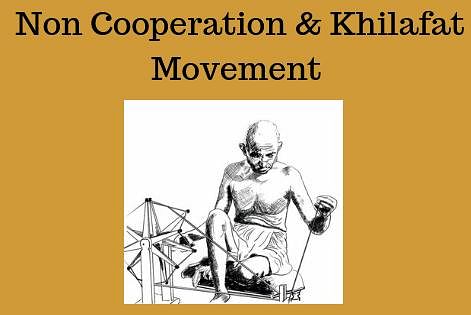
- The Khilafat issue was not directly linked to Indian politics but it provided the immediate background to the movement and gave an added advantage of cementing Hindu-Muslim unity against the British.
Background of the two movements was provided by a series of events after the First World War.
The year 1919, in particular, saw a strong feeling of discontent among all sections of Indians for various reasons:
- The economic situation of the country in the post- War years had become alarming with a rise in prices of commodities, a decrease in the production of Indian industries, an increase in the burden of taxes and rents etc.
- Rowlatt Act, the imposition of martial law in Punjab and the Jallianwalla Bagh massacre exposed the brutal and uncivilised face of the foreign rule. The Hunter Committee on the Punjab atrocities proved to be an eyewash. In fact, the House of Lords (of the British Parliament) endorsed General Dyer’s action and the British public showed solidarity with General Dyer by helping The Morning Post collect 30,000 pounds for him.
- Montagu-Chelmsford Reforms with their ill-conceived scheme of dyarchy failed to satisfy the rising demand of the Indians for self-government.
- Post-First World War period also saw the preparation of the ground for common political action by Hindus and Muslims:
(i) Lucknow Pact (1916) had stimulated Congress-Muslim League cooperation.
(ii) Rowlatt Act agitation brought Hindus and Muslims, and also other sections of the society, together.
(iii) Radical nationalist Muslims had now become more influential than the conservative Aligarh school elements who had dominated the League earlier.
In India, too, Muslims demanded from the British:
- That the Khalifa’s control over Muslim sacred places should be retained.
- The Khalifa should be left with sufficient territories after territorial arrangements. In early 1919, a Khilafat Committee was formed.
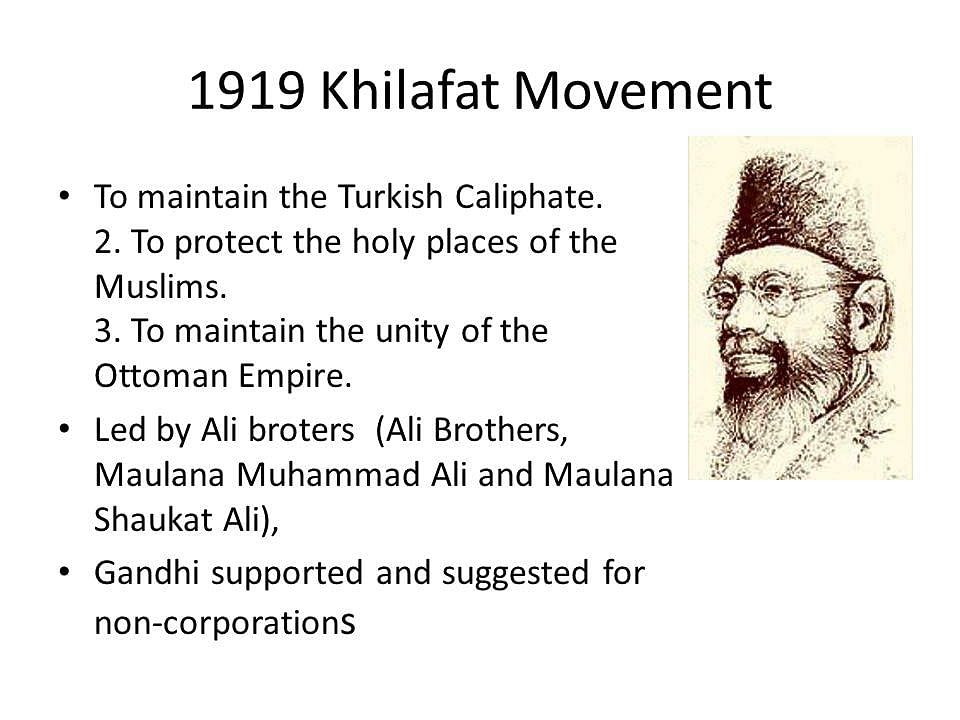
➢ Development of the Khalifat-Non-Cooperation Programme
- At All India Khilafat Conference held in Delhi in November 1919, a call was made for the boycott of British goods. Gandhi, who was the president of the All India Khilafat Committee, saw in the issue a platform from which mass and united non-cooperation could be declared against the Government.
➢ Congress Stand on Khilafat Question
- It was felt that this was a golden opportunity to cement Hindu-Muslim unity and to bring Muslim masses into the national movement, now different sections of society could come into the national movement by fighting for their own rights and realising that the colonial rule was opposed to them.
- Congress was losing faith in the constitutional struggle, especially after the Punjab incidents and the blatantly partisan Hunter Committee Report.
- Congress was aware that the masses were eager to give expression to their discontent.
➢ Muslim League Support to Congress
- The Muslim League also decided to give full support to the Congress and its agitation on political questions.
- February 1920 In early 1920, a joint Hindu-Muslim deputation was sent to the viceroy to seek redress of grievances on the issue of Khilafat.
- In February 1920, Gandhi announced that the issues of the Punjab wrongs and constitutional advance had been overshadowed by the Khilafat question.
- May 1920 Treaty of Sevres with Turkey, signed in May 1920, completely dismembered Turkey.
- June 1920 An all-party conference at Allahabad approved a programme of boycott.
- August 31, 1920, The Khilafat Committee started a campaign of non-cooperation and the movement was formally launched.
- September 1920 At a special session in Calcutta, the Congress approved a non-cooperation programme till the Punjab and Khilafat wrongs were removed and swaraj was established.
➢ The programme was to include:
- Boycott of government schools and colleges.
- Boycott of law courts and dispensation of justice through panchayats instead.
- Boycott of legislative councils.
- Boycott of foreign cloth and use of khadi instead, also practice of hand-spinning to be done.
- Renunciation of government honours and titles, the second phase could include mass civil disobedience including resignation from government service, and non-payment of taxes.
➢ December 1920 At the Nagpur session of the Indian National Congress
- An important change was made in the Congress creed: Now, instead of having the attainment of self-government through constitutional means as its goal, the Congress decided to have the attainment of swaraj through peaceful and legitimate means, thus committing itself to an extraconstitutional mass struggle.
- Some important organisational changes were made: A congress working committee (CWC) of 15 members was set up to lead the Congress from now onwards, provincial congress committees on linguistic basis were organised, ward committees were organised, and the entry fee was reduced to four annas.
- Gandhi declared that if the non-cooperation programme was implemented completely, swaraj would be ushered in within a year.
- Surendranath Banerjea founded the Indian National Liberal Federation and played a minor role in national politics henceforward.
➢ The Spread of the Movement
- Gandhi accompanied by the Ali brothers undertook a nationwide tour. Educational institutions were organised under the leadership of Acharya Narendra Dev, C.R. Das, Lala Lajpat Rai, Zakir Hussain, Subhash Bose (who became the principal of National College at Calcutta) and included Jamia Millia at Aligarh, Kashi Vidyapeeth, Gujarat Vidyapeeth and Bihar Vidyapeeth.
- A no-tax movement against union board taxes in Midnapore (Bengal) and in Guntur (Andhra) was going on.
- In Assam, strikes in tea plantations, steamer services and Assam-Bengal Railways had been organised. J.M. Sengupta was a prominent leader in these strikes.
- In November 1921, the visit of the Prince of Wales to India invited strikes and demonstrations. The spirit of defiance and unrest gave rise to many local struggles such as Awadh Kisan Movement (UP), Eka Movement (UP), Mappila Revolt (Malabar) and the Sikh agitation for the removal of mahants in Punjab.
➢ People’s Response
- Middle Class - People from the middle classes led the movement at the beginning but later they showed a lot of reservations about Gandhi's programme.
- Business Class - The economic boycott received support from the Indian business group because they had benefited from the nationalists' emphasis on the use of swadeshi.
- Peasants - Peasants’ participation was massive.
- Students - Students became active volunteers of the movement.
- Women - Women gave up purdah and offered their ornaments for the Tilak Fund.
- Hindu- Muslim Unity - The massive participation of Muslims and the maintenance of communal unity, despite the events like Moppila Uprisings, were great achievements.
➢ Government Response
- Talks between Gandhi and Reading, the viceroy, broke down in May 1921 Gandhi realised that the government was trying to drive a wedge between him and the Khilafat leaders and refused to fall into the trap.
➢ The Last Phase of the Movement
- Gandhi was now under increasing pressure from the Congress rank and file to start the civil disobedience programme. The Ahmedabad session in 1921 appointed Gandhi the sole authority on the issue.
- On February 1, 1922, Gandhi threatened to launch civil disobedience from Bardoli (Gujarat) if :
(i) Political prisoners were not released.
(ii) Press controls were not removed. - Chauri Chaura Incident - Chauri-Chaura (Gorakhpur district in United Provinces) has found a place in history books due to an incident of violence on February 5, 1922, which was to prompt Gandhi to withdraw the movement.
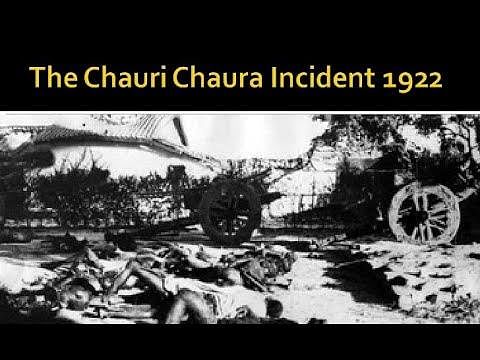
- Congress Working Committee met at Bardoli in February 1922 and resolved to stop all activity that led to the breaking of the law and to get down to constructive work.
- In March 1922, Gandhi was arrested and sentenced to six years in jail. He made the occasion memorable by a magnificent court speech: “I am here, therefore, to invite and submit cheerfully to the highest penalty that can be inflicted upon me for what in law is a deliberate crime, and what appears to me to be the highest duty of a citizen.”
- The movement was also showing signs of fatigue. In November 1922, the people of Turkey rose under Mustafa Kamal Pasha and deprived the sultan of political power. In 1924, the caliphate was abolished.
- The movement brought the urban Muslims into the national movement, but at the same time, it communalized national politics, to an extent.
- With the Non-Cooperation Movement, nationalist sentiments reached every nook and corner of the country and politicized every stratum of the population.
Swarajists
- One group, led by C R Das, Motilal Nehru, and Ajmal Khan, wanted to end the boycott of legislative councils so that nationalists could enter them to expose the fundamental flaws of these assemblies and use them as a platform for political struggle.
- They wanted to 'end or mend' these councils, which meant that if the government did not respond to the nationalists' demands, they would obstruct the councils' work.
- Their only intention was to use the councils as a forum for political struggle; they had no intention of using the councils to gradually transform colonial rule.
- The Swarajists were those who advocated for inclusion in legislative councils.
No Changers
- The 'No-changers' were those who opposed council entry.
- They advocated for a focus on constructive work while maintaining the boycott and noncooperation.
- They also advocated for the quiet resumption of the suspended civil disobedience programme.
- The 'No-changers' were a school of thought led by Vallabhbhai Patel, Rajendra Prasad, C. Rajagopalachari, and M.A. Ansari.
Genesis of Congress-Khilafat Swarajya Party
- After Gandhi’s arrest (March 1922), there was disintegration, disorganization, and demoralization among nationalist ranks. A debate started among Congressmen on what to do during the transition period, i.e., the passive phase of the movement.
- Those advocating entry into legislative councils came to be known as the "Swarajists’.
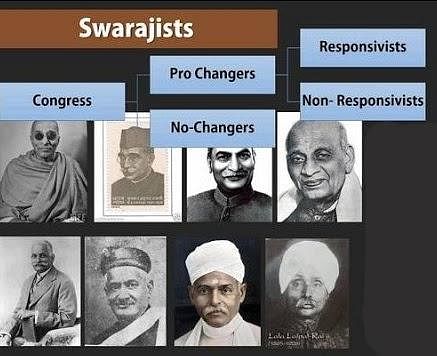 The other school of thought led by C. Rajagopalachari, Vallabhbhai Patel, Rajendra Prasad, and M.A. Ansari came to be known as the 'Nochangers’.
The other school of thought led by C. Rajagopalachari, Vallabhbhai Patel, Rajendra Prasad, and M.A. Ansari came to be known as the 'Nochangers’. - "No-changers’ opposed council entry, advocated concentration on constructive work, and continuation of boycott and non-cooperation, and quiet preparation for the resumption of the suspended civil disobedience program.
- Congress and announced the formation of Congress-Khilafat Swarajya Party or simply Swarajist Party, with C.R. Das as the president and Motilal Nehru as one of the secretaries.
Swarajists Arguments
- The Swarajists argued for their inclusion in the councils for a variety of reasons.
- Entering the councils would not undermine the noncooperation agenda; rather, it would be like continuing the movement on a different front.
- Council work would assist to energise the populace and maintain their morale during a period of political uncertainty. The presence of nationalists would dissuade the government from packing the councils with unsavoury characters who could be used to legitimise government actions.
- The objective was not to use the councils as vehicles for the progressive transition of colonial administration, but they may be used as a venue for political confrontation.
No-Changers Arguments
- No-Changers argued that parliamentary work would lead to neglect of constructive work, loss of revolutionary zeal, and to political corruption.
Agree to Disagree
- Both sides also realized the significance of putting up a united front to get a mass movement to force the government to introduce reforms, and both sides accepted the necessity of Gandhi’s leadership of a united nationalist front.
- Keeping these factors in mind, a compromise was reached at a meeting in Delhi in September 1923. The elections to the newly constituted Central Legislative Assembly and to provincial assemblies were to be held in November 1923.
The Swarajist Manifesto for Elections
- Released in October 1923, the Swarajist manifesto took a strong anti-imperialist line.
- The guiding motive of the British in governing India lay in the selfish interests of their own country.
- So-called reforms were only a blind to further the said interests under the pretense of granting a responsible government, the real objective being to continue exploitation of the unlimited resources of the country by keeping Indians permanently in a subservient position to Britain.
- Swarajists would present the nationalist demand of self-government in councils.
- If this demand was rejected, they would adopt a policy of uniform, continuous and consistent obstruction within the councils to make governance through councils impossible.
- Councils would thus be wrecked from within by creating deadlocks on every measure.
Gandhi’s Attitude
- Gandhi was initially opposed to the Swarajist proposal of council entry. But after his release from prison on health grounds in February 1924, he gradually moved towards a reconciliation with the Swarajists.
- He felt public opposition to the program of council entry would be counterproductive.
- In the November 1923 elections, the Swarajists had managed to win 42 out of 141 elected seats and a clear majority in the provincial assembly of Central Provinces.
- There was a government crackdown on revolutionary terrorists and the Swarajists towards the end of 1924.
- Both sides came to an agreement in 1924
Swarajist Activity in Councils
- Swarajists lost the support of many Muslims when the party did not support the tenants' cause against the zamindars in Bengal.
- Responsivity among Swarajists—Lala Lajpat Rai, Madan Mohan Malaviya, and N.C. Kelkar— advocated cooperation with the government and holding of office wherever possible.
- Thus, the main leadership of the Swarajist Party reiterated faith in mass civil disobedience and withdrew from legislatures in March 1926.
- In 1930, the Swarajists finally walked out as a result of the Lahore Congress resolution on purna swaraj and the beginning of the Civil Disobedience Movement.
Achievements
- With coalition partners, they out-voted the government several times, even on matters relating to budgetary grants, and passed adjournment motions.
- They agitated through powerful speeches on self-government, civil liberties, and industrialization.
- Vithalbhai Patel was elected speaker of the Central Legislative Assembly in 1925.
 Vithalbhai Patel
Vithalbhai Patel
- A noteworthy achievement was the defeat of the Public Safety Bill in 1928 which was aimed at empowering the Government to deport undesirable and subversive foreigners.
- By their activities, they filled the political vacuum at a time when the national movement was recouping its strength.
- They exposed the hollowness of the Montford scheme.
- They demonstrated that the councils could be used creatively.
Drawbacks
- Swarajists lacked the policy to coordinate their militancy inside legislatures with the mass struggle outside. They relied totally on newspaper reporting to communicate with the public.
- An obstructionist strategy had its limitations.
- They could not carry on with their coalition partners very far because of conflicting ideas, which further limited their effectiveness.
- They failed to resist the perks and privileges of power and office.
- They failed to support the peasants' cause in Bengal and lost support among Muslim members who were a pro peasant.
Constructive Work by No-Changers
- The No-Changers devoted themselves to constructive work that connected them to the different sections of the masses.
- Ashrams sprang up where young men and women worked among tribals and lower castes and popularised the use of charkha and khadi.
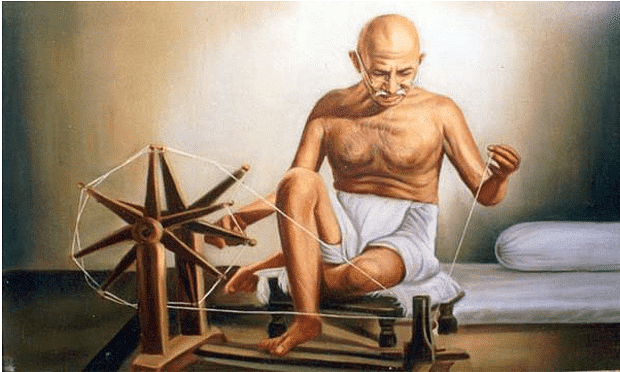 Gandhi Ji with Charkha
Gandhi Ji with Charkha
- National schools and colleges were set up where students were trained in a noncolonial ideological framework.
- Significant work was done for Hindu-Muslim unity, removing untouchability, a boycott of foreign cloth and liquor, and for flood relief.
- The constructive workers served as the backbone of civil disobedience as active organizers.
A Critique of Constructive Work
- National education benefited the urban lower middle classes and the rich peasants only.
- The popularisation of khadi was an uphill task since it was costlier than the imported cloth.
Muddiman Committee (1924)
- In response to the demand of Indian leaders and in light of the resolution adopted by the Swaraj Party in the early 1920s, the British Government established a committee headed by Sir Alexander Muddinman.
- It also advocated for the establishment of a Royal Commission.
- To meet the demand of Indian leaders and in light of the resolution adopted by the Swaraj Party in the early 1920s, the British government established the Muddinman Committee, led by Sir Alexander Muddinman.
- Apart from British members, the Committee had four Indian members.
Committee members who were Indian
- Sir Sivaswami Aiyar
- Dr. R P Paranjape
- Sir Tejbahadur Sapru
- Mohammad Ali Jinnah
The spread of Marxist and Socialist Ideas
- The Ideas of Marx and Socialist thinkers inspired many young nationalists, inspired by the Soviet Revolution and dissatisfied with Gandhian ideas and political programs, began advocating radical solutions for the economic, political, and social ills of the country.
(i) Were critical of both Swarajists and No-Changers;
(ii) Advocated a more consistent anti-imperialist line in the form of a slogan for purna swaraj (complete independence)
(iii) Were influenced by an awareness, stressed the need to combine nationalism and anti-imperialism with social justice, and simultaneously raised the question of internal class oppression by capitalists and landlords. - Communist Party of India (CPI) was formed in 1920 in Tashkent (now, the capital of Uzbekistan) by M.N. Roy, Abani Mukherji, and others after the second Congress of Comintern. M.N. Roy was also the first to be elected to the leadership of Comintern.
- In 1924, many communists—Shripad Amrit Dange, Muzaffar Ahmed, Shaukat Usmani, Nalini Gupta—were jailed in the Kanpur Bolshevik Conspiracy Case.
- In 1925, the Indian Communist Conference at Kanpur formalized the foundation of the CPI.
- In 1929, the government crackdown on communists resulted in the arrest and trial of 31 leading communists, trade unionists, and left-wing leaders; they were tried at Meerut in the famous- Meerut conspiracy case.
The activism of Indian Youth
- All over, students' leagues were being established and students’ conferences were being held. In 1928, Jawaharlal Nehru presided over the All Bengal Students’ Conference.
Peasants’ Agitations
- Peasant agitations took place in the Rampa region of Andhra, in Rajasthan, in ryotwari areas of Bombay and Madras. In Gujarat, the Bardoli Satyagraha was led by Vallabhbhai Patel (1928).
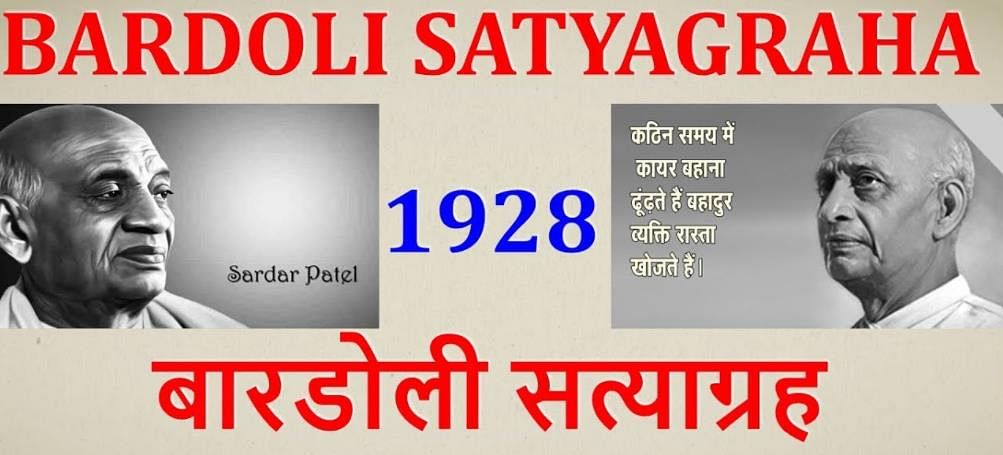
Growth of Trade Unionism
- The trade union movement was led by the All India Trade Union Congress (AITUC) founded in 1920. Lala Lajpat Rai was its first president and Dewan Chaman Lai its general secretary.
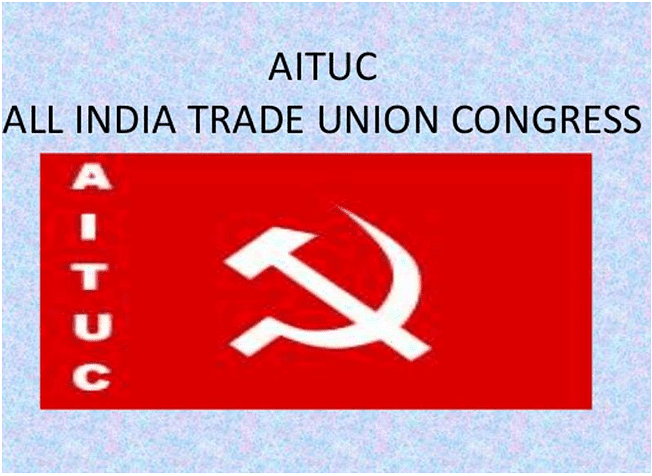
- major strikes during the 1920s included those in Kharagpur Railway Workshops, Tata Iron and Steel Works (Jamshedpur), Bombay Textile Mills (this involved 1,50,000 workers and went on for 5 months), and Buckingham Carnatic Mills.
- In 1923, the first May Day was celebrated in India in Madras.
Caste Movements
These movements could be divisive, conservative, and at times potentially radical, and included:
- Justice Party (Madras)
- Self-respect movement (1925) under “Periyar”—E.V. Ramaswamy Naicker (Madras)
- Satyashodhak activists in Satara (Maharashtra)
- Bhaskar Rao Jadhav (Maharashtra)
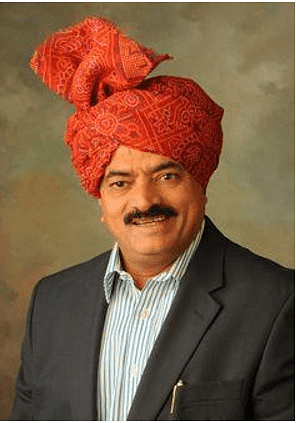 Bhaskar Rao Jadhav
Bhaskar Rao Jadhav
- Mahars under Ambedkar (Maharashtra)
- Radical Ezhavas under K. Aiyappan and C. Kesavan in Kerala
- Yadavs in Bihar for improvement in social status Unionist Party under Fazl-i-Hussain (Punjab).
Revolutionary Activity with a Turn towards Socialism
- This line was adopted by those dissatisfied with the nationalist strategy of the political struggle with its emphasis on nonviolence.
- Hindustan Republican Association (H.R.A.)—in Punjab-UP-Bihar
- Yugantar, Anushilan groups and later Chittagong Revolt Group under Surya Sen—in Bengal
Why Attraction for Revolutionary Activity after Non-Cooperation Movement- Two separate strands of revolutionary groups emerged during this period—one operating in Punjab-UP-Bihar and the other in Bengal.
Major Influences
- The upsurge of working-class trade unionism after the War; the revolutionaries wanted to harness the revolutionary potential of the new emergent class for nationalist revolution.
- Russian Revolution (1917) and the success of the young Soviet state in consolidating itself.
 Russian Revolution
Russian Revolution
- Newly sprouting communist groups with their emphasis on Marxism, socialism, and the proletariat.
- Journals publishing memoirs and articles extolling the self-sacrifice of revolutionaries, such as Atmasakti, Sarathi, and Bijou.
- Novels and books such as Bandi Jiwan by Sachin Sanyal and Pather Dabi by Sharatchandra Chatterjee (a government ban only enhanced its popularity).
In Punjab-United Provinces-Bihar
- The Hindustan Republican Association/Army, or HRA, led revolutionary action in this region (later renamed Hindustan Socialist Republican Association or HSRA). The HRA was created in Kanpur in October of 1924.
- The Kakori theft (August 1925) was the HRA's most significant action. Men boarded the 8-Down train at Kakori, a tiny town near Lucknow, and plundered the train's official railway currency.

- HSRA-Determined to overcome the Kakori defeat, the younger revolutionaries, inspired by socialist principles, convened a historic assembly in the ruins of Ferozshah Kotla in Delhi to reorganise the Hindustan Republic Association (September 1928).
- Saunders' Murder (December 1928, Lahore)- The death of Sher-i-Punjab Lala Lajpat Rai in October 1928 as a result of lathi blows received during a lathi-charge on an anti-Simon Commission procession prompted them to turn to individual assassination once more.
- On April 8, 1929, Bhagat Singh and Batukeshwar Dutt were asked to throw a bomb in the Central Legislative Assembly to protest the passage of the Public Safety Bill and the Trade Disputes Bill, both of which aimed to restrict citizens' civil liberties in general and workers' civil liberties in particular.
- In the Lahore conspiracy case, action against Revolutionary Bhagat Singh, Sukhdev, and Rajguru was tried. On the 64th day of his fast, Jatin Das became the first martyr. In December 1929, Azad was part in a plot to blow up Viceroy Irwin's train near Delhi. In the year 1930, a number of violent incidents occurred in Punjab and the towns of the United Provinces (26 incidents in 1930 in Punjab alone). In February 1931, Azad was killed by police in a park in Allahabad. On March 23, 1931, Bhagat Singh, Sukhdev, and Rajguru were hung.
In Bengal
- After Das’s death (1925), the Bengal Congress broke up into two factions—one led by J.M. Sengupta (Anushilan group joined forces with him) and the other led by Subhash Bose (Yugantar group backed him). The actions of the reorganized groups included an assassination attempt on the notorious Calcutta Police Commissioner, Charles Tegart (another man named Day got killed) by Gopinath Saha in 1924.
- Chittagong Armoury Raid (April 1930)- Surya Sen decided to organize an armed rebellion along with his associates—Anant Singh, Ganesh Ghosh, and Lokenath Baul—to show that it was possible to challenge the armed might of the mighty British Empire. The raid was conducted in April 1930 and involved 65 activists under the banner of the Indian Republican Army—Chittagong Branch. Surya Sen was arrested in February 1933 and hanged in January 1934.
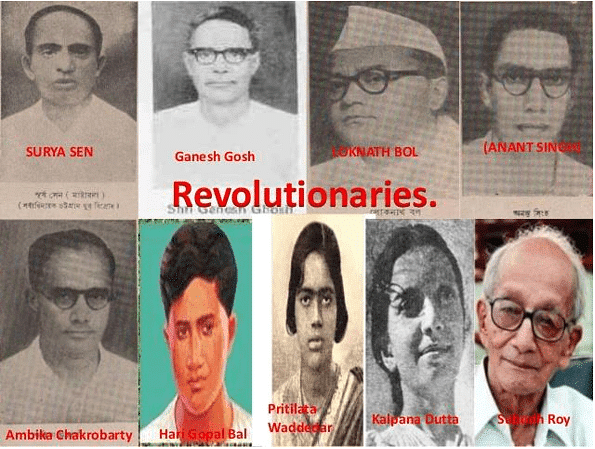 Chittagong Revolutionaries
Chittagong Revolutionaries
Aspects of the New Phase of the Revolutionary Movement in Bengal-Some noteworthy aspects were as follows.
- There was large-scale participation of young women especially under Surya Sen. Prominent women revolutionaries in Bengal during this phase included Pritilata Waddedar, who died conducting a raid; Kalpana Dutt who was arrested and tried along with Surya Sen and given a life sentence; Santi Ghosh and Suniti Chandheri, schoolgirls of Comilla, who shot dead the district magistrate. (December 1931); and Bina Das who fired point-blank at the governor while receiving her degree at the convocation (February 1932).
- There was an emphasis on group action aimed at organs of the colonial State, instead of individual action. The objective was to set an example before the youth and to demoralize the bureaucracy.
- Some of the earlier tendency towards Hindu religiosity was shed, and there were no more rituals like oath-taking and this facilitated participation by Muslims. Surya Sen had Muslims such as Satar, Mir Ahmed, Fakir Ahmed Mian, and Tunu Mian in his group.
- There were some drawbacks too:
(i) The movement retained some conservative elements.
(ii) It failed to evolve broader socio-economic goals.
(iii) Those working with Swarajists failed to support the cause of Muslim peasantry against zamindars in Bengal.
Official Reaction
- There was panic at first and then severe government repression.
- Armed with 20 repressive Acts, the government let loose the police on the revolutionaries.
Ideological Rethinking
- A real breakthrough was made by Bhagat Singh and his comrades in terms of revolutionary ideology, forms of revolutionary struggle, and the goals of the revolution.
- A famous statement of the revolutionary position is contained in the book The Philosophy of the Bomb written by Bhagwaticharan Vohra. In other words, the revolution could only be 'By the masses, for the masses”.
- That is why Bhagat Singh helped establish the Punjab Naujawan Bharat Sabha (1926) as an open wing of revolutionaries to carry out political work
Redefining Revolution
- Revolution was no longer equated with militancy and violence. Its objective was to be national liberation
- Bhagat Singh said in the court, “Revolution does not necessarily involve sanguinary strife, nor is there a place in it for personal vendetta. It is not the cult of bomb and pistol. By revolution we mean the present order of things, which is based on manifest injustice, must change.”
- He defined socialism scientifically as the abolition of capitalism and class domination.
- Nationalist response to British participation in the First World War was three-fold:
(i) Moderates supported the empire in the war as a matter of duty.
(ii) Extremists, including Tilak (who was released in June 1914), supported the war efforts in the mistaken belief that Britain would repay India's loyalty with gratitude in the form of self-government.
(iii) Revolutionaries decided to utilize the opportunity to wage a war on British rule and liberate the country.
- The revolutionary activity was carried out through the Ghadr Party in North America, Berlin Committee in Europe, and some scattered mutinies by Indian soldiers, such as the one in Singapore.
- Two Indian Home Rule Leagues were organized on the lines of the Irish Home Rule Leagues and they represented the emergence of a new trend of aggressive politics.
- Annie Besant and Tilak were the pioneers of this new trend.
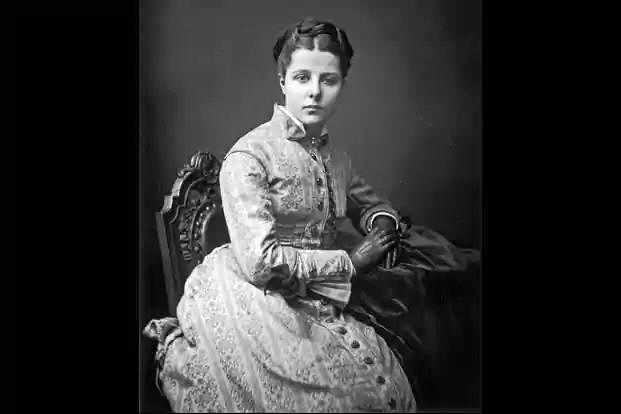 Annie Besant
Annie Besant - Factors leading to the Movement
Some of the factors leading to the formation of the home rule movement were as follows:
(i) A section of the nationalists felt that popular pressure was required to attain concessions from the government.
(ii) Moderates were disillusioned with the Morley- Minto reforms.
(iii) People were feeling the burden of wartime miseries caused by high taxation and a rise in prices and were ready to participate in any aggressive movement of protest.
(iv) The war, being fought among the major imperialist powers of the day and backed by naked propaganda against each other, exposed the myth of white superiority.
(v) Tilak was ready to assume leadership after his release in June 1914 and had made conciliatory gestures—to the government reassuring it of his loyalty and to the Moderates that he wanted, like the Irish Home Rulers, a reform of the administration and not an overthrow of the government. He also admitted that the acts of violence had only served to retard the pace of political progress in India. He urged all Indians to assist the British government in its hour of crisis.
(vi) Annie Besant, the Irish theosophist based in India since 1896, had decided to enlarge the sphere of her activities to include the building of a movement for home rule on the lines of the Irish Home Rule Leagues.
➢ The Leagues
- By early 1915, Annie Besant had launched a campaign to demand self-government for India after the war on the lines of white colonies. She campaigned through her newspapers, New India and Commonweal, and through public meetings and conferences.
- Tilak's League-Tilak set up his Home Rule League in April 1916 and it was restricted to Maharashtra (excluding Bombay city), Karnataka, Central Provinces, and Berar.
- Besant's League-Annie Besant set up her league in September 1916 in Madras and covered the rest of India (including Bombay city). It had 200 branches
➢ The Home Rule League Programme
- League campaign aimed to convey to the common man the message of home rule as self-government. The Russian Revolution of 1917 proved to be an added advantage for the Home Rule campaign.
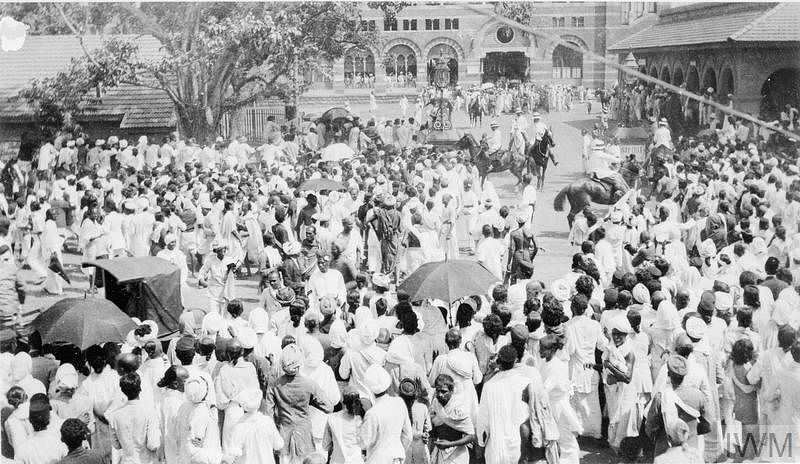 Indian Home Rule Movement
Indian Home Rule Movement - Home Rule agitation was later joined by Motilal Nehru, Jawaharlal Nehru, Bhulabhai Desai, Chittaranjan Das, Madan Mohan Malaviya, Mohammad Ali Jinnah, Tej Bahadur Sapru, and Lala Lajpat Rai.
➢ Government Attitude
- Tilak was barred from entering the Punjab and Delhi. In June 1917, Annie Besant and her associates, B.P. Wadia and George Arundale were arrested.
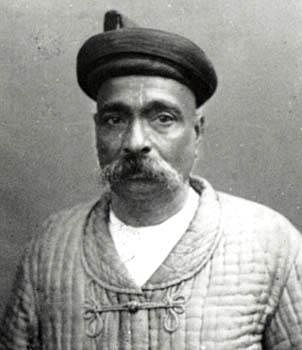 Bal Gangadhar Tilak
Bal Gangadhar Tilak - Montagu, the Secretary of State for India, commented that “Shiva ...cut his wife into fifty-two pieces only to discover that he had fifty-two wives. This is what happens to the Government of India when it interns Mrs. Besant.”
➢ Why the Agitation Faded Out by 1919
- There was a lack of an effective organization.
- Communal riots were witnessed during 1917-18.
- Moderates who had joined the Congress after Annie Besant's arrest were pacified by talk of reforms and Besant's release.
- Talk of passive resistance by the Extremists kept the Moderates away from an activity from September 1918 onwards.
- Montagu-Chelmsford reforms which became known in July 1918 further divided the nationalist ranks.
- Tilak had to go abroad (September 1918) in connection with a case while Annie Besant vacillated over her response to the reforms and the techniques of passive resistance.
➢ Positive Gains
- The movement shifted the emphasis from the educated elite to the masses and permanently deflected the movement from the course mapped by the Moderates.
- It created an organizational link between the town and the country, which was to prove crucial in later years when the national movement entered its mass phase in a true sense.
- It created a generation of ardent nationalists.
- It prepared the masses for politics of the Gandhian style.
- August 1917 declaration of Montagu and the Montford reforms were influenced by the Home Rule agitation.
- Efforts of Tilak and Annie Besant towards the Mo derate-Extremist reunion at Lucknow (1916) revived the Congress as an effective instrument of Indian nationalism.
- The home rule movement lent a new dimension and a sense of urgency to the national movement.
- Lucknow session of the Indian National Congress presided over by a Moderate, Ambika Charan Majumdar.
Various factors facilitated this reunion:
(a) Old controversies had become meaningless now.
(b) Both the Moderates and the Extremists realized that the split had led to political inactivity.
(c) Annie Besant and Tilak had made vigorous efforts for the reunion.
(d) Death of two Moderates, Gokhale and Pherozshah Mehta, who had led the Moderate opposition to the Extremists, facilitated the reunion.
- Development to take place at Lucknow was the coming together of the Muslim League and the Congress and the presentation of common demands by them to the government.
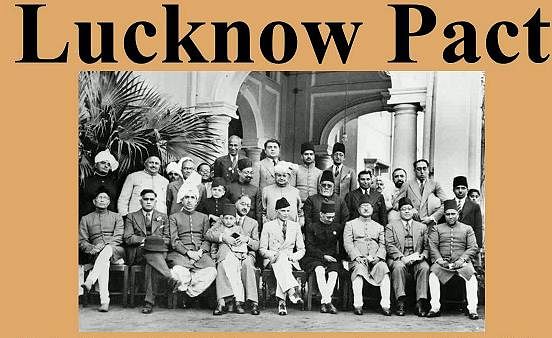
➢ Why the Change in the League’s Altitude
- Britain's refusal to help Turkey in its wars in the Balkans (1912-13) and with Italy (during 1911) had angered the Muslims.
- Annulment of the partition of Bengal in 1911 had annoyed those sections of the Muslims who had supported the partition.
- Refusal of the British government in India to set up a university at Aligarh with powers to affiliate colleges all over India also alienated some Muslims.
- Younger League members were turning to bolder nationalist politics and were trying to outgrow the limited political outlook of the Aligarh school. The Calcutta session of the Muslim League (1912) had committed the League to “working with other groups for a system of self-government suited to India, provided it did not come in conflict with its basic objective of protection of interests of the Indian Muslims”. Thus, the goal of self-government similar to that of Congress brought both sides closer.
- Younger Muslims were infuriated by the government repression during the First World War. Maulana Azad’s A1 Hilal and Mohammad Airs Comrade faced suppression while the leaders such as the Ali brothers, Maulana Azad and Hasrat Mohani faced internment. This generated anti-imperialist sentiments among the 'Young Party'.
➢ The Nature of the Pact-
The joint demands was:
- The government should declare that it would confer self-government on Indians at an early date.
- Representative assemblies at the central as well as provincial-level should be further expanded with an elected majority and more powers given to them. The term of the legislative council should be five years.
- Salaries of the Secretary of State for India should be paid by the British treasury and not drawn from Indian funds.
- Half the members of the viceroy’s and provincial governors’ executive councils should be Indians.
➢ Critical Comments
- Lucknow Pact demands were thus just a significantly expanded version of the Morley-Minto reforms. This was a major landmark in the evolution of the two-nation theory by the Muslim League.
- The government decided to placate the nationalists by declaring its intention to grant self-government to Indians in times to come, as contained in Montagu’s August 1917 declaration.
- Secretary of State for India, Edwin Samuel Montagu, made a statement on August 20, 1917, in the British House of Commons in what has come to be known as the August Declaration of 1917.
- The statement said: “The government policy is of an increasing participation of Indians in every branch of administration and gradual development of self-governing institutions with a view to the progressive realization of responsible government in India as an integral part of the British Empire.”
- Reforms were not intended to give self-government to India.
➢ Indian Objections
Objections of the Indian leaders to Montagu's statement were two-fold:
- No specific time frame was given.
- The government alone was to decide the nature and the timing of advance towards a responsible government, and the Indians were resentful that the British.
NAGPUR SESSION OF CONGRESS
- The Nagpur session of Congress is also memorable for the new Congress Constitution that was adopted. It brought about a revolutionary change in Congress organization.
- The Congress aim of swaraj was reaffirmed but now explained to mean “Self-Government within the Empire if possible and outside if necessary”.
- Further, the earlier emphasis on the use of ‘constitutional means’ was substituted by “all peaceful and legitimate methods”.
- The organizational changes in the Congress included:
(a) Formation of working Committee of fifteen members. This working Committee was to act as the chief executive of the party.
(b) Formation of an All-India Committee of 350 members to discuss important issues. It was also to be the apex body having the power to review the decision and working of the working Committee.
(c) Formation of Congress Committees from towns to village level.
(d) Reorganization of Provincial Congress Committees on linguistic basis. This was done to popularize the ideas of Congress in local language. Congress, also, as far as possible emphasized on the case of Hindi so that the gap between the educated groups and the masses may be filled up.
(e) Opening of Congress member-ship to all men and women of age twenty-one or more on payment of four Annas as annual subscription.
The Nagpur session of the Congress in December 1920 is important because of
- Changed Aim: Though the Congress aim of Swaraj was reaffirmed but now explained, to mean Self-Government.
- Changed Methods: The earlier emphasis on the use of ‘constitutional means’ was substituted by ‘all peaceful and legitimate methods’.
- Changed Leadership: After the death of Tilak in August 1920, the leadership went into the hands of Gandhi and it marked the beginning of Gandhian era in Indian Politics.
- Structural Change: The Congress party was organised on modern lines with local Congress Committees at the grass root village level through sub-divisional, district and provincial Committees with the All-India Congress Committee at the apex.
SWARAJ PARTY
- The suspension of the Non-Cooperation Movement led to a split within Congress in the Gaya session of the Congress in December 1922.
- Leaders like Motilal Nehru and Chittranjan Das formed a separate group within the Congress known as the Swaraj Party on 1 January 1923.
- The Swarajists wanted to contest the council elections and wreck the government from within. Motilal Nehru, C.R. Das and N.C. Kelkar (called Pro-changers) demanded that the Nationalists should end the boycott of the legislative councils, enter them and expose them.
- No-changers like Rajendra Prasad and Rajagopalachari adhered to the Gandhian programme of Boycott of legislatures.
- Elections to Legislative Councils were held in November 1923 in which, the Swaraj Party gained impressive successes.
- In the Central Legislative Council Motilal Nehru became the leader of the party whereas in Bengal the party was headed by C.R. Das.
- The Swaraj Party demanded the setting up of responsible government in India with the necessary changes in the Government of India Act of 1919.
- The party could pass important resolutions against the repressive laws of the government.
- When a Committee chaired by the Home Member, Alexander Muddiman considered the system of Dyarchy as proper, a resolution was passed against it in the Central Legislative Council.
- After the passing away of C.R. Das in June 1925, the Swarj Party started weakening.
- The Swarajists were split by communalism. The ‘responsivist’ group including Madan Mohan Malviya, Lala Lajpat Rai and N.G. Kelkar offered cooperation to the government to safeguard Hindu interests.
- The Swarajists finally walked out of legislature in 1930 as a result of the Lahore congress resolution and the beginning of the civil disobedience movement. The two sections were reunited in 1930 after the Lahore session.
- The great achievement of Swaraj Party lay in their filling the political void at a time when the National Movement was recouping its strength and this they did without getting co-opted by the colonial regime.
- They worked in the legislatures in an orderly disciplined manner and withdrew from them whenever the call came.
- Above all, they showed that it was possible to use the legislatures in a creative manner even as they promoted the politics of self-reliant anti-imperialism.
- They also successfully exposed the hollowness of the Reforms Act of 1919 and showed the people that India was being ruled by ‘Lawless Laws’.
- The time when the No-Changers were busy in the constructive programme and Gandhi was leading an isolated life, the Swarajists took over the command of the National Movement.
- Even the Simon Commission, accepted that, at that time it was only the Swaraj Party which was an organised and disciplined party having well defined objectives and programmes.
SIMON COMMISSION (1927)
- In 1927, the British government appointed Simon Commission to look into the working of the Government of India Act, 1919. All its seven members were Englishmen.
- Almost all the political parties including the Congress opposed the Commission because there was no Indian member in the commission.
- On 3 February 1928 when the Commission reached Bombay, a general hartal was observed all over the country and were greeted with black flags and the cries of ‘Simon go back’.
- At Lahore, the students took out a large anti-Simon Commission demonstration on 30 October 1928 under the leadership of Lala Lajpat Rai. In this demonstration, Lala Lajpat Rai was seriously injured in the police lathi charge and he passed away after one month.
- The report of the Simon Commission was published in May 1930.
- It was stated that the constitutional experiment with Dyarchy was unsuccessful and in its place the report recommended the establishment of autonomous government.
- The Simon Commission Report became the basis for enacting the Government of India Act of 1935.
NEHRU REPORT (1928)
- The Secretary of State, Lord Birkenhead, challenged the Indians to produce a Constitution that would be acceptable to all.
- The challenge was accepted by the Congress, which convened an all party meeting on 28 February 1928.
- A committee consisting of eight was constituted to draw up a blueprint for the future Constitution of India.
- It was headed by Motilal Nehru.
- The committee comprised of Tej Bahadur Sapru, Ali Imam, M.S. Aney, Mangal Singh, Shoaib Querishi, G.R. Pradhan and Subash Chandra Bose.
- The Report favoured: – Dominion Status as the next immediate step. – Full responsible government at the centre. – Autonomy to the provinces. – Clear cut division of power between the centre and the provinces. – A bicameral legislature at the centre.
- The report had a different chapter on minority rights apart from the Fundamental Rights.
- During the presentation of the report before the All Parties Convention in Calcutta, a violent clash took place between Jinnah (representing the Muslim League) and M.R. Jayakar (who put forth the Hindu Mahasabha viewpoint) on the former’s demand of one-third of the total seats in the central legislatures for Muslims.
- Consequently, Jinnah’s proposed amendments were overwhelmingly out-voted and the Report proved to be a non-starter and became a mere historical document.
- The leader of the Muslim League, Mohammad Ali Jinnah regarded it as detrimental to the interests of the Muslims.
- Jinnah convened an All India Conference of the Muslims where he drew up a list of Fourteen Points as Muslim League demand.
JINNAH'S FOURTEEN POINTS
- At a meeting of the Muslim league in Delhi in March 28, 1929, M. A. Jinnah announced his ‘fourteen Points.’
- Rejecting the Nehru Report, he maintained that no scheme for the future Government of India would be acceptable to the Muslims until and unless following basic principle were given effect to:
(a) India required a federal system and Constitution in which the Provinces would have complete autonomy and residuary powers.
(b) All legislatures and other elected bodies should be constituted on the principle of adequate representation of minorities in every Province.
(c) A uniform measure of autonomy should be granted to all Provinces.
(d) In the Central legislature, Muslim representation should not be less than one-third.
(e) The Representation of communal groups through the system of electorate should continue as long as rights and interests of Muslims were not safeguarded in the Constitution.
(f) Any future territorial redistribution should not affect the Muslim majority in Punjab, Bengal and the North-West Frontier Province.
(g) Full religious liberty should be granted to all communities.
(h) No bill should be passed in any elected body if three-fourth of the members of any community in that particular body were to oppose such a bill. (i) Sindh should be separated from the Bombay Presidency.
(j) Reforms should be introduced in the North-West Frontier Provinces and Baluchistan as in other Provinces.
(k) Muslims should be given an adequate share in all the services.
(l) Adequate safeguards should be provided for the protection of Muslim culture.
(m) No Cabinet should be formed without at least one-third Muslim ministers.
(n) No change should be made in the Constitution except with-out the concurrence of the federation States. - The above mentioned demands suggested a total rejection of Nehru Report due to two reasons-
(a) A unitary Constitution was not acceptable because it would not ensure Muslim domination in any part of India. A federal Constitution consisting of a Centre with limited power and autonomous Provinces with residuary powers would enable the Muslims to dominate five Provinces-North-West Frontier Province, Baluchistan, Sindh, Bengal and Punjab.
(b) The solution to the communal problem as suggested by Nehru report was not acceptable to the Muslims.
LAHORE SESSION, 1929
- Under the Presidentship of Jawaharlal Nehru, the INC at its Lahore session declared Poorna Swaraj as its ultimate goal on 19 December 1929.
- The newly adopted tri-colour flag was unfurled on 31 December, 1929 and 26 January, 1930 was fixed as the First Independence Day, which was to be celebrated every year.
MIDDLE PHASE OF THE FREEDOM STRUGGLE (1915 - 1930)
- The decisive phase of the Nationalist Movement [1917-1947] began when Gandhiji returned to India from South Africa in January 1915. This phase is also known as the Gandhian Era.
- During this period Mahatma Gandhi became the undisputed leader of the National Movement.
- His principles of non-violence and Satyagraha were employed against the British Government. Gandhi made the nationalist movement a mass movement.
- Gandhiji was greatly influenced by the works of Leo Tolstoy’s Civil Disobedience and Ruskin’s ‘unto to the last’.
- Tolstoy’s ideal of non-possession was developed by Gandhiji in his concept of ‘trusteeship’.
- He was also influenced by the life and teachings of Swami Vivekananda.
- His political Guru Gokhale and Dadabhai Naroji also influenced him.
- Besides he had an experience of struggle in South Africa during (1894-1914). He came to India in 1915.
- His non-violent satyagraha involved peaceful violation of specific laws.
- He resorted to mass courting arrest and occasional hartals and spectacular marches.
- He had readiness for negotiations and compromise.
- His struggle against foreign rule is popularly known as ‘struggle-truce-struggle’.
During the course of 1917 and early 1918, Gandhiji was involved in three significant struggles
(i) Champaran Satyagraha (1917)
- Gandhi’s first great experiment in satyagraha came in 1917 in Champaran, a district in Bihar.
- The peasantry on the indigo plantations in the district was excessively oppressed by the European planters and were compelled to grow indigo on at least 3/20th of their land and so sell it at prices fixed by the planters.
- This system was popularly known as ‘Tin-Kathia system’.
- Several peasants of Champaran invited Gandhi to come and help them.
- Accompanied by Babu Rajendra Prasad, Mazhar-ul-Huq, J.B. Kripalani, Narhari Parekh and Mahadev Desai, Gandhji reached Champaran in 1917 and through his method and efforts, the disabilities from which the peasantry was suffering were reduced and Gandhiji won his first battle of civil disobedience in India.
(ii) Ahmadabad Mill Strike (1918)
- Gandhiji did his second experiment at Ahmadabad in 1918 when he had to intervene in a dispute between the workers and the mill-owners.
- He advised the workers to go on strike and to demand a 35 per cent increase in wages.
- He insisted that the workers should not use violence against the employers during the strike.
- He undertook a fast unto death to strengthen the workers’ resolve to continue the strike.
- This put pressure on the mill owners who relented on the fourth day and agreed to give the workers a 35 per cent increase in wages.
(iii) Kheda Satyagraha (1918)
- The farmers of Kheda district in Gujarat were in distress because of the failure of crops.
- The government refused to remit land revenue and insisted on its full collection.
- As part of the experiment, Mahatma Gandhi advised the peasants to withhold payment of revenue till their demand for its remission was met.
- The struggle was withdrawn when it was learnt that the government had issued instructions that revenue should be recovered only from those peasants who could afford to pay.
- Sardar Vallabhbhai Patel became the follower of Gandhiji during the Kheda movement.
THE GOVERNMENT OF INDIA ACT, 1919
- In order to give effect to the August Declaration of 1917, Montague along with the viceroy, Lord Chelmsford prepared a scheme of constitutional reforms, which came to be known as Montague Chelmsford Reforms.
- On the basis of the Montague Chelmsford Reforms, the British Parliament passed the Government of India Act, 1919. Its major provisions were:
(i) Dyarchy system introduced in the provinces. It was considered to be a substantial step towards transfer of power to the Indians). The Provincial subjects of administration were to be divided into two categories: Transferred and Reserved.
(ii) The Transferred subjects were to be administered by the Governor with the aid of ministers responsible to the Legislative Council. The Governor and the Executive Council were to administer the reserved subjects without any responsibility to the legislature.
(iii) Devolution Rules: Subjects of administration were divided into two categories Central and Provincial. Subjects of all India importance (like railways and finance) were brought under the category of Central, while matters relating to the administration of the provinces were classified as Provincial.
(iv) The Provincial Legislature was to consist of one House only (Legislative Council).
(v) The number of Indians in the Governor General’s Executive Council was raised to three in a Council of eight. The Indian members were entrusted with departments such as Law, Education, Labour, Health and Industries.
(vi) The Centre was now to have a Bicameral Legislature for the first time. It actually happened after 1935 Act.
(vii) Communal representation extended to Sikhs, Christians, Anglo – Indians, etc. Secretary of State to be henceforth paid salary out of the British revenue.
ROWLATT ACT AND JALLIANWALA BAGH MASSACRE (1919)
- In 1917, a committee was set up under the presidentship of Sir Sydney Rowlatt to look into the militant Nationalist activities.
- On the basis of its report the Rowlatt Act was passed in March 1919 by the Central Legislative Council.
- The Rowlatt Act curtailed the liberty of the people and was called the Black Act.
- The Bill provided for speedy trial of offences by a special court of 3 High court judges. There was to be no appeal.
- The provincial government had powers to search a place and arrest a suspected person without warrant. These gave unbridled powers to the government to arrest and imprison suspects without trial for two years maximum.
- This law enabled the Government to suspend the right of Habeas Corpus, which had the foundation of civil liberties in Britain.
- It caused a wave of anger in all sections spreading a country-wide agitation by Gandhiji and marked the foundation of the Non-Cooperation Movement. Gandhiji organised the Satyagraha on 14th February, 1919.
- On 8th April, 1919 Gandhiji was arrested.
- In Punjab, there was an unprecedented support to the Rowlatt Satyagraha.
- Two prominent leaders of Punjab, Dr Satya Pal and Dr. Saifuddin Kitchlew, were arrested in Amritsar.
- Facing a violent situation, the Government of Punjab handed over the administration to the military authorities under General Dyer who banned all public meetings and detained the political leaders.
- On 13th April, the Baisakhi day (harvest festival), a public meeting was organized at the Jallianwala Bagh.
- Dyer marched in and without any warning opened fire on the crowd which continued for about 10 to 15 minutes and it stopped only after the ammunition exhausted.
- According to official report 379 people were killed and 1137 wounded in the incident.
- There was a nationwide protest against this massacre and Rabindranath Tagore renounced his knighthood as a protest.
- The Hunter Commission was appointed to enquire into the matter.
- On 13 March, 1940, Sardar Udham Singh killed O’ Dyer when the latter was addressing a meeting in Caxton Hall, London.
- The Jallianwala Bagh massacre gave a tremendous impetus to the freedom struggle and became a turning point in the history of India’s freedom movement.
KHILAFAT MOVEMENT
- Turkey was defeated in the First World War and the harsh terms of the Treaty of Sevres (1920) was felt by the Muslims as a great insult to them.
- The whole movement was based on the Muslim belief that the Caliph (the Sultan of Turkey) was the religious head of the Muslims all over the world.
- The main objective of the Khilafat movement was to force the British government change its attitude towards Turkey and restore the Khalifa to his former position.
- The Muslims in India were upset over the British attitude against Turkey and launched the Khilafat Movement which was jointly led by the Khilafat leaders and the Congress.
- Maulana Abul Kalam Azad, M.A. Ansari, Saifuddin Kitchlew and the Ali brothers were the prominent leaders of this movement.
- A Khilafat Committee was formed and on 19th October 1919, the whole country observed the Khilafat day.
- On 23 November 1919, a joint conference of the Hindus and the Muslims held under the chairmanship of Mahatma Gandhi. Mahatma Gandhi was particularly interested in bringing the Hindus and the Muslims together to achieve the country’s independence.
- In February 1920, Gandhiji suggested to Khilafat Committee that it adopt a programme of nonviolent non-cooperation to protest the Government’s behavior.
- On 9 June, 1920 the Khilafat Committee at Allahabad unanimously accepted the suggestion of non-cooperation and asked Gandhiji to lead the movement.
- Four stages of non-cooperation were surrender of titles and honorary positions, resignation from civil services under the Government, resignation from Police and Army services and non-payment of taxes.
- Gandhiji pressed the Congress to adopt a similar plan of action, although it was initially opposed by C.R. Das, but was later accepted by all.
- Mean while, the Khilafat movement lost its relevance because Mustafa Kamal Pasha abolished Khilafat and made Turkey a secular state.
- Subsequently, the Khilafat Movement merged with the Non-Cooperation Movement launched by Mahatma Gandhi in 1920.
THE NON-COOPERATION MOVEMENT (1920 - 22)
- The movement was launched formally on 1 August, 1920, by Gandhiji.
- He announced his plan to begin Non-Cooperation with the government as a sequel to the Rowlatt Act, Jallianwala Bagh massacre and the Khilafat Movement.
- The main resolution on non-cooperation was moved by C.R. Das and approved by the Indian National Congress at the Nagpur session in December, 1920.
The programs of the Non-Cooperation Movement were
- Surrender of titles and honors
- Boycott of government affiliated schools and colleges
- Boycott of law courts
- Boycott of foreign cloth
- Resignation from government service
- Mass civil disobedience
- Non-payment of taxes
- National schools and colleges were to be set up
- Panchayats were to be established for settling disputes
- Hand-spinning and weaving was to be encouraged
- People were asked to maintain Hindu-Muslim unity
- Give up untouchability
- Observe strict non-violence
Course of Action
- The Nagpur session, thus, committed Congress to a programme of extra-constitutional mass action.
- Many groups of revolutionary terriorists, especially in Bengal, also pledged support to the movement.
- The educational boycott was particularly successful in Bengal, where the students in Calcutta triggered off a province-wide strike to force the managements of their institutions to disaffiliate themselves from the Governments.
- C.R. Das played a major role in promoting the movement and Subhas Bose became the principal of the National College in Calcutta.
- Punjab, too responded to the educational boycott and was second only to Bengal, Lala Lajpat Rai playing a leading part here despite his initial reservations about this item of the programme.
- Other areas that were active were Bombay, U.P., Bihar, Orissa and Assam. Madras remained lukewarm.
- Many leading lawyers of the country like C.R.Das. Motilal Nehru, M.R. Jayakar, Saifudding Kitchlew, Vallabhbhai Patel, C Rajagophlachari, T.Prakasam and Asaf Ali gave up their practices.
- The most successful item of the programme was the boycott of foreign cloth. Picketing of shops selling foreign cloth was also a major form of the boycott.
- Another feature of the movement which acquired great popularity in many parts of the country, even though it was not part of the original plan, was the picketing of toddy shops.
- The Prince of Wales visited India during this period but he was greeted with empty streets and downed shutters when he came on 17 November, 1921.
- In Malabar in Kerala Non-cooperation and Khilafat propaganda helped to rouse the Muslims tenants against their landlords.
- In Assam, laborers on tea plantations went on strike.
- There were strikes on the steamer service and on the Assam-Bengal Railway as well.
- In Midnapur, a cultivators strike against a White zamindari company was led by a Calcutta medical student in defiance of forest laws became popular in Andhra.
- Peasants and tribals in some of the Rajasthan states began movements for securing better conditions of life.
- In Punjab, the Akali movement for wresting control of the gurdwaras from the mahants was a part of the general movement of Non-cooperation, based on strict non-violence in the face of tremendous repression.
- By December, the Government announced the Congress and the Khilafat Committees as illegal and arrested all those who participated in the movement.
- The Congress Session at Allahabad in December 1921 decided to launch the Civil Disobedience Movement. Gandhiji was appointed as its leader. But before it could be launched a mob of people at Chauri Chaura (near Gorakhpur) clashed with the police and burnt 22 policemen on 5th February, 1922.
- On hearing of the incident, Gandhiji decided to withdraw the movement. He also persuaded the Congress Working Committee to ratify his decision and thus, on 12 February 1922, the Non-Cooperation Movement came to an end.
- Gandhiji‘s decision to withdraw the movement in response to the violence at Chauri Chaura raised a controversy.
- Motilal Nehru, C.R. Das, Jawaharlal Nehru, Subhas Bose, and many other recorded their utter bewilderment on hearing the news.
Outcomes of the Non-Cooperation Movement
- It was the real mass movement with the participation of different sections of Indian society such as peasants, workers, students, teachers and women.
- It witnessed the spread of nationalism to the remote corners of India.
- It also marked the height of Hindu-Muslim unity as a result of the merger of Khilafat movement.
- It demonstrated the willingness and ability of the masses to endure hardships and make sacrifices.
➢ Appointment of the Indian Statutory Commission
- The Government of India Act, 1919 had a provision that a commission would be appointed ten years from the date to study the progress of the government scheme and suggest new steps.
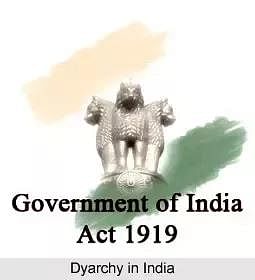
- An all-white, seven-member Indian Statutory Commission, popularly known as the Simon Commission (after the name of its chairman, Sir John Simon ), was set up by the British government under Stanley Baldwin’s prime ministership on November 8, 1927.
- The Lee Commission went into Raj’s failure to recruit enough British officers; the Muddiman Commission looked into the deadlock within the Diarchy dispensation, and the Linlithgow Commission inquired into the crisis of Indian agriculture.
- So the British government thought it necessary to go more fully into the working of the 1919 Act. The Conservative Secretary of State for India, Lord Birkenhead, who had constantly talked of the inability of Indians to formulate a concrete scheme of constitutional reforms which had the support of wide sections of Indian political opinion, was responsible for the appointment of the Simon Commission.
➢ Indian Response
- The Indian response to the Simon Commission was immediate and nearly unanimous.
- Congress Response: The Congress session in Madras (December 1927) meeting under the presidency of M.A. Ansari decided to boycott the commission "'at every stage and in every form”.
- Other Groups: Those who decided to support the Congress call of a boycott of the Simon Commission included the liberals of the Hindu Mahasabha and the majority faction of the Muslim League under Jinnah. The Muslim league had two sessions in 1927 - one under Jinnah at Calcutta where it was decided to oppose the Simon Commission, and another at Lahore under Muhammad Shafi, who supported the government.
- Public Response: The commission landed in Bombay on February 3, 1928. Wherever the commission went, there were black flag demonstrations, hartals, and slogans of "Simon Go Back’.
- Police Repression: The police came down heavily on demonstrators; there were Lathi charges not sparing even the senior leaders. Lala Lajpat Rai received severe blows on his chest in October 1928 which proved fatal and he died on November 17, 1928.
➢ Impact of Appointment of Simon Commission on the National Movement
- It gave a stimulus to radical forces demanding not just complete independence but major socio-economic reforms on socialist lines. When the Simon Commission was announced, the Congress, which did not have any active program in hand, got an issue on which it could once again forge mass action.
- The challenge of Lord Birkenhead to Indian politicians to produce an agreed constitution was accepted by various political sections, and thus prospects for Indian unity seemed bright at that point in time.
➢ The Simon Commission Recommendations
- The Simon Commission published a two-volume report in May 1930. It proposed the abolition of dyarchy and the establishment of representative government in the provinces which should be given autonomy
- The report rejected parliamentary responsibility at the center. It suggested that a Consultative Council of Greater India should be established which should include representatives of both the British provinces as well as princely states.
- It suggested that the North-West Frontier Province and Baluchistan should get local legislatures. It recommended that Sindh should be separated from Bombay, and Burma should be separated from India.
➢ Nehru Report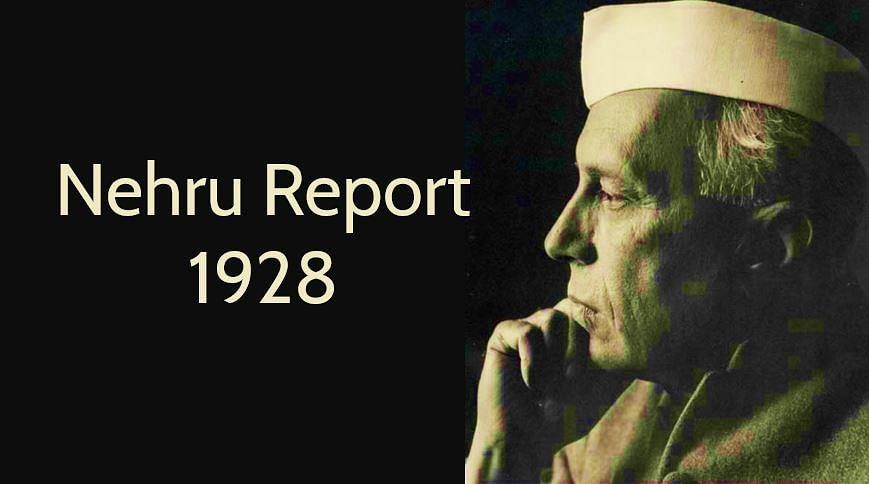
- As an answer to Lord Birkenhead’s challenge, an All Parties Conference met in February 1928 and appointed a subcommittee under the chairmanship of Motilal Nehru to draft a constitution. This was the first major attempt by the Indians to draft a constitutional framework for the country.
- The report was finalized by August 1928. The recommendations of the Nehru Committee were unanimous except in one respect—while the majority favored the ' dominion status' as the basis of the Constitution, a section of it wanted "complete independence" as the basis
➢ Main Recommendations
- Dominion status on lines of self-governing dominions as the form of government desired by Indians
- Rejection of separate electorates which had been the basis of constitutional reforms so far; instead, demand for joint electorates with reservation of seats for Muslims at the Centre and in provinces where they were in minority in proportion to the Muslim population there with the right to contest additional seats.
- Linguistic provinces.
- Nineteen fundamental rights including equal rights for women, the right to form unions, and universal adult suffrage.
- Responsible government at the Centre and in provinces
(i) The Indian Parliament at the Centre to consist of a 500-member House of Representatives elected on the basis of adult suffrage, a 200-member Senate to be elected by provincial councils; the House of Representatives to have a tenure of 5 years and the Senate, one of 7 years; the central government to be headed by a governor-general, appointed by the British government but paid out of Indian revenues, who would act on the advice of the central executive council responsible to the Parliament.
(ii) Provincial councils to have a 5-year tenure, headed by a governor acting on the advice of the provincial executive council. - Full protection to cultural and religious interests of Muslims.
- Complete dissociation of State from religion.
➢ The Muslim and Hindu Communal Responses
- Delhi Proposals of Muslim League-proposals, which were accepted by the Madras session of the Congress (December 1927), came to be known as the 'Delhi Proposals’.
These were:
(i) joint electorates in place of separate electorates with reserved seats for Muslims;
(ii) one-third representation to Muslims in the Central Legislative Assembly;
(iii) representation to Muslims in Punjab and Bengal in proportion to their population;
(iv) Formation of three new Muslim majority provinces— Sindh, Baluchistan, and North-West Frontier Province. - Hindu Mahasabha Demands: The Hindu Mahasabha was vehemently opposed to the proposals for creating new Muslim-majority provinces and reservation of seats for Muslim majorities in Punjab and Bengal
- Compromises: The concessions made in the Nehru Report to Hindu communalists included the following:
(i) Joint electorates proposed everywhere but reservation for Muslims only wherein minority;
(ii) Sindh to be detached from Bombay only after dominion status was granted and subject to the weightage given to the Hindu minority in Sindh;
(iii) Political structure proposed broadly unitary, as residual powers rested with the center.
➢ Amendments Proposed by Jinnah
- At the All Parties Conference held at Calcutta in December 1928 to consider the Nehru Report, Jinnah, on behalf of the Muslim League, proposed three amendments to the report:
(i) One-third representation to Muslims in the central legislature;
(ii) Reservation to Muslims in Bengal and Punjab legislatures proportionate to their population, till adult suffrage was established; and residual powers to provinces.
➢ Jinnah’s Fourteen Points
- Federal Constitution with residual powers to provinces.
- Provincial autonomy. No constitutional amendment by the center without the concurrence of the states constituting the Indian federation.
- All legislatures and elected bodies to have adequate representation of Muslims in every province without reducing a majority of Muslims in a province to a minority or equality.
- Adequate representation to Muslims in the services and in self-governing bodies.
- One-third of Muslim representation in the central legislature.
- In any cabinet at the center or in the provinces, one-third to be Muslims.
- Separate electorates.
- No bill or resolution in any legislature to be passed if three-fourths of a minority community consider such a bill or resolution to be against their interests.
- Any territorial redistribution not to affect the Muslim majority in Punjab, Bengal, and NWFP.
- Separation of Sindh from Bombay.
- Constitutional reforms in the NWFP and Baluchistan.
- Full religious freedom to all communities.
- Protection of Muslim rights in religion, culture, education, and language.
➢ Nehru Report Found Unsatisfactory
- Not only were the Muslim League, the Hindu Mahasabha, and the Sikh communalists unhappy about the Nehru Report, but the younger section of the Congress-led by Jawaharlal Nehru and Subhash Bose was also angered.
- The younger section regarded the idea of dominion status in the report as a step backward, and the developments at the All Parties Conference strengthened their criticism of the dominion status idea. Nehru and Subhash Bose rejected the Congress’ modified goal and jointly set up the Independence for India League.
- In 1934- 35, there was a debate among nationalists on the best course of action for the national movement.
- Some argued for accepting office under the Government of India Act, of 1935, while others advocated for a non-mass struggle.
- In 1937, provincial elections were held under the autonomy provisions of the Government of India Act, of 1935.
- There were three different perspectives on what the nationalists should do after the Civil Disobedience Movement ended.
- The first was that they should continue with constructive work on Gandhian lines.
- The second was that they should participate in elections to the Central Legislature.
- The third was that a strong leftist trend within the Congress, represented by Nehru, was critical of both of these things and argued that they would divert attention from the main issue of the struggle against colonialism.
 Nehru’s Vision
Nehru’s Vision- Nehru said, 'The basic goal before Indian people as before people of the world is the abolition of capitalism and establishment of socialism.”
- The S-T-S strategy, proposed by Gandhi, suggests that a mass phase of the movement (struggle phase) should be followed by a phase of reprieve (truce phase) before the next stage of mass struggle.
- The truce period would enable the masses to recoup their strength and also give the government a chance to respond to the demands of the nationalists.
- Nehru's counter-proposal, the S-V strategy, suggests that victory should be strived for instead of a truce.
- In 1934, the Indian National Congress set up a Parliamentary Board to contest elections.
- In the November 1934 elections to the Central Legislative Assembly, Congress captured 45 out of 75 seats reserved for Indians.
Amidst the struggle of 1932, the Third RTC was held in November, again without Congress's participation. The discussions led to the formulation of the Act of 1935.
- The All India Federation was a proposed federation of Indian states that never came to fruition.
- The federation was conditional on the fulfillment of two conditions: that states with the allotment of 52 seats in the proposed Council of States should agree to join the federation, and that the aggregate population of these states should be 50 percent of the total population of all Indian states.
- Since these conditions were not met, the central government continued to operate under the provisions of the Government of India Act, of 1919.
- The Constitution of India divided the subjects to be administered into reserved and transferred subjects, with the Governor-General in charge of the entire system.
- He was responsible for the security and tranquillity of India and could act in his individual judgment to discharge his responsibilities.
- The 1935 Indian Constitution created a bicameral legislature with an upper house (Council of States) and a lower house (Federal Assembly).
- The Council of States was to be a 260-member House elected by direct vote, and the Federal Assembly was to be a 375-member house elected by indirect vote.
- The Council of States was to be a permanent body with one-third of members retiring every third year, while the Federal Assembly was to have a five-year duration.
- Three lists for legislation purposes were to be federal, provincial, and concurrent.
- Members of the Federal Assembly could move a vote of no-confidence against ministers, but members of the Council of States could not.
- The system of religion-based and class-based electorates was further extended, and 80 percent of the budget was non-votable.
- The Governor-General was given residuary powers.
- The Government of India Act of 1935 replaced dyarchy with provincial autonomy and gave provinces a separate legal identity.
- Provinces were freed from the supervision of the secretary of state and governor-general, and they received independent financial powers and resources.
- The Governor was to be the Crown's nominee and representative to exercise authority on the king’s behalf in a province.
- The Governor was to have special powers regarding minorities, rights of civil servants, law and order, British business interests, partially excluded areas, princely states, etc.
- The Governor could take over and indefinitely run the administration.
- The Communal Award led to the establishment of separate electorates based on communal representation.
- All members were to be directly elected and the franchise was extended to include women.
- Ministers were to administer all provincial subjects in a council of ministers headed by a premier.
- Ministers were made answerable to and removable by the adverse vote of the legislature.
- The provincial legislature could legislate on subjects in the provincial and concurrent lists.
- 40 percent of the budget was still not votable. -The governor could refuse assent to a bill, promulgate ordinances, and enact governor’s Acts.
- The Government of India Act 1935 was an attempt to further the process of Indian self-government begun by the Government of India Act 1919.
- The Act increased the autonomy of the Indian provinces, while still retaining the authority of the governor-general.
- The Act enfranchised 14 percent of the British Indian population.
- The Act provided a rigid constitution with no possibility of internal growth.
- The right of the amendment was reserved with the British Parliament.
- Repression was used to quell the Civil Disobedience Movement, and reforms were used to revive the political standing of constitutionalist liberals and moderates.
- The strategy was to create dissensions within the Congress party in order to placate the right wing with constitutional concessions and crush the left wing with police measures.
- Provincial autonomy would create powerful provincial leaders who would gradually become autonomous centers of political power.
The 1935 Act was condemned by nearly all sections and unanimously rejected by Congress.
- The left-wing of the Indian National Congress, led by Jawaharlal Nehru, Subhash Bose, and the Congress socialists and communists, were opposed to accepting offices under the 1935 Government of India Act.
- They argued that this would negate the nationalists' rejection of the Act.
- As a counter-strategy, the leftists proposed entering the councils with the aim of creating deadlocks, thus making the working of the Act impossible.
- The proponents of office acceptance argued that they were equally committed to combating the 1935 Act, but that working in legislatures was to be only a short-term tactic.
- The Congress manifesto reaffirmed the total rejection of the 1935 Act. Congress’ Performance, Congress won 716 out of the 1,161 seats it contested. It got a majority in all provinces, except in Bengal, Assam, Punjab, Sindh, and the NWFP.
- The Congress Party had a very successful showing in the provincial elections of 1937.
- They won a majority in all but five of the provinces in which elections were held.
- The party's platform for rejecting the 1935 Act was reaffirmed in their election manifesto.
➢ Congress Crisis on Method of Struggle
- There were issues of bogus membership and unethical means employed in trying to getting into the congressional committees and controlling them.
- Gandhi firmly believed that Congress should first put its house in order before the movement could again be launched; besides, he also felt the masses were not in the mood for a struggle. There were others who felt that the struggle should continue.
➢ Haripura and Tripuri Sessions: Subhash Bose’s Views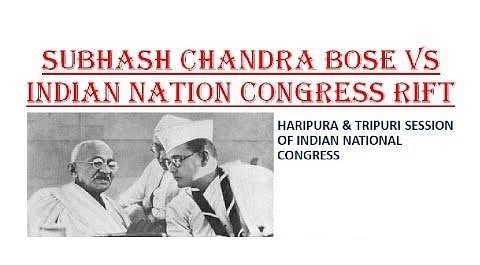
- Subhash Chandra Bose was president of the Bengal Provincial Congress Committee. His main area of work lay in the organization of the youth and promoting the trade union movement. Subhash Bose did not agree with Gandhi and other leaders of the Congress on many aspects of the struggle for freedom.
- He along with Jawaharlal Nehru opposed the Motilal Nehru Report which spoke for dominion status for India. Bose was all for full independence; he also announced the formation of the Independence League. When the Lahore Congress session under Jawaharlal Nehru’s presidency adopted a resolution that the Congress goal would be Toorna Swaraj’, Bose fully endorsed the decision.
➢ Haripura
- At the Congress meeting in Haripura, Gujarat, in February 1938, Bose was unanimously elected president of the session. He was firm in his belief that the Congress ministries in the provinces had immense revolutionary potential, as he said in his presidential address.
- Bose also talked of the economic development of the country through planning and was instrumental in setting up a National Planning Committee later.
- The session adopted a resolution that Congress would give moral support to those who were agitating against the governance in the princely states.
➢ 1939: Subhash Wins but Congress Faces Internal Strife
- In January 1939, Subhash Bose decided to stand again for the president’s post in the Congress. Gandhi was not happy with Bose’s candidature.
- Subhash Bose won the election by 1580 votes against 1377, he got the full support of congress.
➢ Tripuri
- In March 1939 the Congress session took place at Tripuri, in the Central Provinces (near Jabalpur in present Madhya Pradesh).
- The working committee, the ruling body of the Congress, is not elected, but nominated by the president; the election of the president is thus a constitutional opportunity through which the members expressed the nature of the leadership of the Congress.
- A resolution was moved by Govind Ballabh Pant, reaffirming faith in Gandhian policies and asking Bose to nominate the working committee Lin in accordance with the wishes of Gandhiji i”, and it was passed without opposition from the socialists or the communists.
- Gandhi was not willing to lead a Congress struggle based on the radical lines preferred by Bose, even as Bose was not willing to compromise on his ideas. They preferred a united Congress led by Gandhi, as the national struggle was of utmost importance
- Bose resigned from the president’s post in April 1939.
➢ Gandhi and Bose: Ideological Differences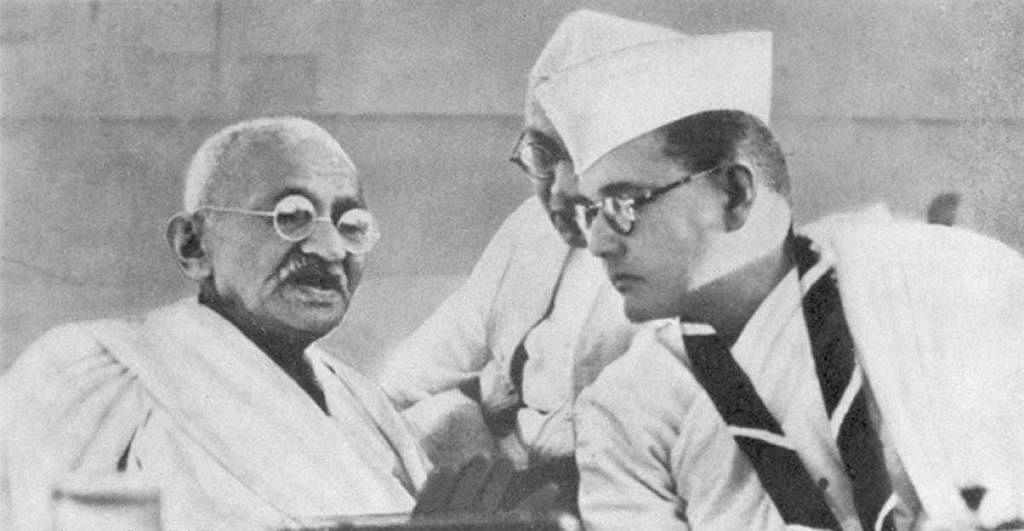 Gandhi Ji and Subhash Chandra Bose
Gandhi Ji and Subhash Chandra Bose
- Non-Violence versus Militant Approach: Gandhi was a firm believer in ahimsa and satyagraha, the nonviolent way to gain any goal. Bose believed that Gandhi's strategy based on the ideology of non-violence would be inadequate for securing India’s independence.
- Means and Ends: Bose had his eye on the result of the action. Gandhi felt that the nonviolent way of protest that he propagated could not be practiced unless the means and ends were equally good. Form of Government- Bose veered towards the idea that, at least in the beginning, a democratic system would not be adequate for the process of nation rebuilding and the eradication of poverty and social inequality. Gandhi's ideas on government can be found in the Hind Swaraj (1909), it was “the nearest he came to producing a sustained work of political theory.”
- Militarism: Subhas Bose was deeply attracted to military discipline and was thankful for the basic training he received in the University Unit of the India Defence Force.
- Gandhi was against the military on the whole. His Ramrajya, being built on the concept of truth and nonviolence and self-regulation
- Ideas on Economy, Gandhi's concept of Swaraj had its own brand of economic vision. He wanted a decentralized economy without state control. Bose considered economic freedom to be the essence of social and political freedom.
- He was all in favor of modernization which was necessary to be brought about by industrialization. Bose classified industry into three categories: heavy, medium, and cottage. Heavy industries, he said, form the backbone of the national economy.
- Religion, Gandhi was primarily a man of religion. Truth and non-violence were the two principles that helped Gandhi in evolving a comprehensive view of religion that went beyond narrow sectarianism. Subhash Bose believed in Upanishadic teachings.
- He revered the Bhagavad Gita and was inspired by Vivekananda. He was also inspired by India of the past as reinterpreted by thinkers.
- He named his force Azad Hind Fauz, and there were many non-Hindus in that army and who were close to him. IN A was to be a mixture of various religions, races, and castes with total social equality of all soldiers.
- Caste and Untouchability- Gandhi's goals for society were mainly three: eradicating untouchability, maintaining the varna distinctions of the caste system, and strengthening tolerance, modesty, and religiosity in India.
- Bose looked forward to an India changed by a socialist revolution that would bring to an end the traditional social hierarchy with its caste system; in its place would come an egalitarian, casteless, and classless society. Subhas Bose completely rejected social inequality and the caste system.
- Women: In Gandhi's words, “To call women the weaker sex is a libel; it is man's injustice to women.” Subhash Bose had a more robust view of women. Bose considered women to be the equals of men, and thus they should be prepared to fight and sacrifice for the freedom of India. In 1943, he called on women to serve as soldiers in the Indian National Army.
- This was the most radical view. He formed a women's regiment in the IN A in 1943, named the Rani of Jhansi Regiment.
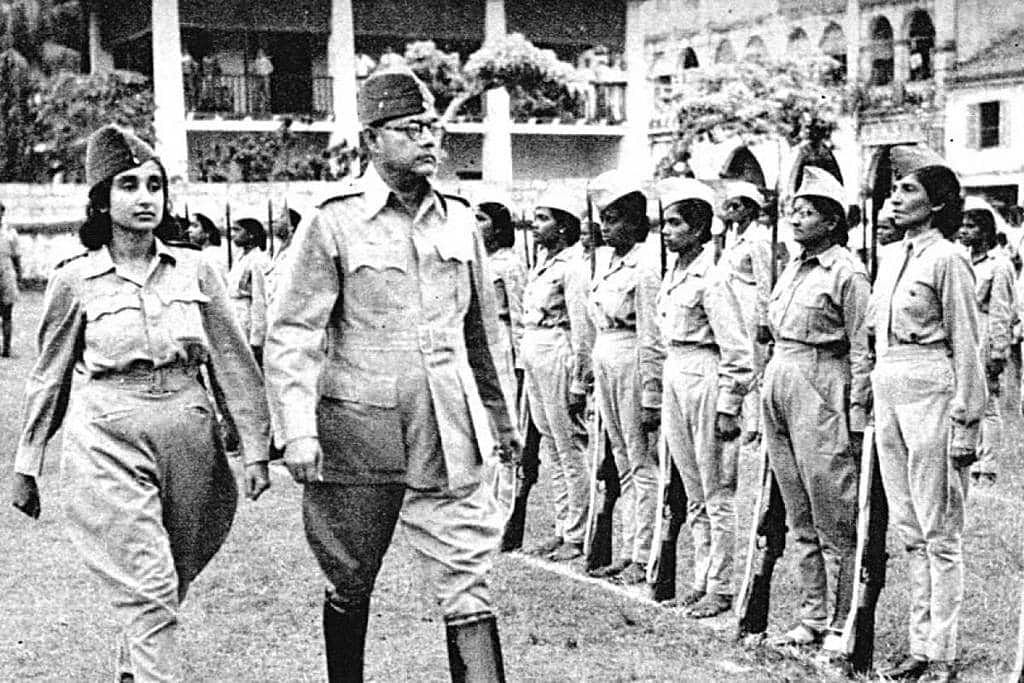 Rani of Jhansi Regiment
Rani of Jhansi Regiment - Education: Gandhi was against the English system of education as also against the use of English as a medium of instruction. He wanted education to be in the vernacular. He advocated free and compulsory education for all boys and girls between 7 and 14 years.
- Subhash Bose was for higher education, especially in the technical and scientific fields, as he wanted an industrial India.
On September 1, 1939, Germany attacked Poland - the action that led to the Second World War. On September 3, 1939, Britain declared war against Germany
➢ Congress Offer to Viceroy
- The Indian offer to cooperate in the war effort had two basic conditions
- After the war, a constituent assembly should be convened to determine the political structure of a free India.
- Immediately, some form of a genuinely responsible government should be established at the Centre. The offer was rejected by Linlithgow, the viceroy.
➢ CWC Meeting at Wardha
- Official Congress position was adopted at the Wardha session of the Congress Working Committee
- Gandhi, who had all sympathy for Britain in this war because of his total dislike of the fascist ideology, advocated unconditional support to the Allied powers.
- Subhas Bose and other socialists- In their opinion, the war was being fought by imperialists on both sides; each side wanted to protect its colonial possessions and gain more territories to colonize, so neither side should be supported by the nationalists.
- Jawaharlal Nehru was not ready to accept the opinion of either Gandhi or of the socialists.
- The CWC resolution condemned Fascist aggression. It said that
- India could not be a party to a war being fought, on the face of it, for democratic freedom, while that freedom was being denied to India;
- If Britain was fighting for democracy and freedom, it should be proved by ending imperialism in its colonies and establishing full democracy in India; government should declare its war aims soon and, also, as to how the principles of democracy were to be applied to India after the war.
➢ Government Attitude and Congress Ministries’ Resignation
- Viceroy Linlithgow, in his statement, made on October 17, 1939, tried to use the Muslim League and the princes against the Congress. The government
(i) Refused to define British war aims beyond stating that Britain was resisting aggression;
(ii) Said it would, as part of the future arrangement, consult "representatives of several communities, parties and interests in India, and the Indian princes” as to how the Act of 1935 might be modified;
(iii) Said it would immediately set up a "consultative committee" whose advice could be sought whenever required.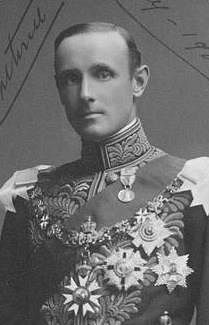 Viceroy Linlithgow
Viceroy Linlithgow - Government’s Hidden Agenda: Linlithgow’s statement was not an aberration, but a part of general British policy—"to take advantage of the war to regain the lost ground from the Congress’' In May 1940, a top-secret Draft Revolutionary Movement Ordinance had been prepared, aimed at launching crippling pre-emptive strikes on the Congress.
- Congress Ministries Decide to Resign: On October 23, 1939, the CWC meeting
(i) Rejected the viceregal statement as a reiteration of the old imperialist policy;
(ii) Decided not to support the war; and
(iii) Called upon the Congress ministries to resign in the provinces. - Debate on the Question of Immediate Mass Satyagraha-Gandhi and his supporters were not in favor of an immediate struggle because they felt that the
(i) Allied cause was just; communal sensitiveness and lack of Hindu-Muslim unity could result in communal riots;
(ii) Congress organization was in shambles and the atmosphere was not conducive for a mass struggle; and
(iii) Masses were not ready for a struggle. The Ramgarh session of the Congress was held in March 1940 with Maulana Abul Kalam Azad in the president’s chair. All agreed that a battle must be waged but there was disagreement over the form. - Pakistan Resolution: Lahore (March 1940) -The Muslim League passed a resolution calling for the “grouping of geographically contiguous areas where Muslims are in majority (North West, East) into independent states.
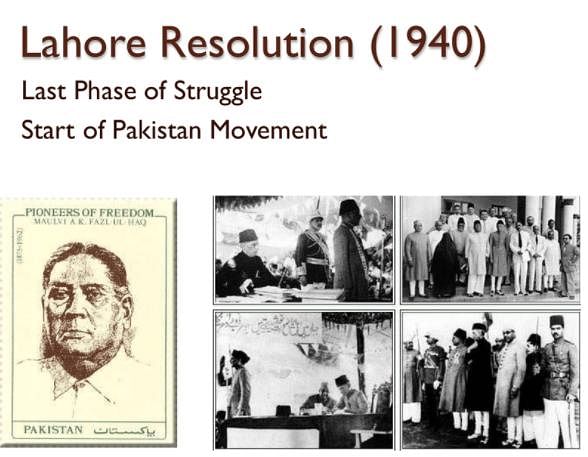
➢ August Offer
- Linlithgow announced the August Offer (August 1940) which proposed:
(i) Dominion status as the objective for India;
(ii) Expansion of viceroy’s executive council which would have a majority of Indians
(iii) Setting up of a constituent assembly after the war where mainly Indians would decide the constitution according to their social, economic, and political conceptions, subject to fulfillment of the obligation of the government regarding defense, minority rights, treaties with States, all Indian services; and
(iv) No future constitution to be adopted without the consent of minorities. - Responses: The Congress rejected the August Offer. The Muslim League welcomed the veto assurance given to the League
- Evaluation: In July 1941, the viceroy’s executive council was enlarged to give the Indians a majority of 8 out of 12 for the first time, but the British remained in charge of defense, finance, and home.
➢ Individual Satyagrahas
- The government had taken the adamant position that no constitutional advance could be made till the Congress came to an agreement with the Muslim leaders. It issued ordinance after ordinance taking away the freedom of speech and that of the press and the right to organize associations.
- The aims of launching individual satyagraha were—
(i) To show that nationalist patience was not due to weakness;
(ii) To express people’s feeling that they were not interested in the war and that they made no distinction between Nazism and the double autocracy that ruled India; and
(iii) To give another opportunity to the government to accept Congress’ demands peacefully. - If the government did not arrest the satyagraha, he or she would not only repeat it but move into villages and start a march towards Delhi, thus precipitating a movement which came to be known as the "Delhi Chalo Movement’.
- Vinoba Bhave was the first to offer the satyagraha and Nehru, the second. By May 1941, 25,000 people had been convicted for individual civil disobedience.
➢ Gandhi Designates Nehru as his Successor
- CWC overrode Gandhi’s and Nehru’s objections and passed a resolution offering to cooperate with the government in the defense of India, if
(i) Full independence was given after the war, and
(ii) Substance of power was transferred immediately. - Nehru and Gandhi differed in temperament and attitudes towards modernity, religion, God, State, and industrialization. Despite having so many differences, Nehru revered Gandhi, and Gandhi, in turn, believed in Nehru more than his own sons.
➢ Both teacher and disciple had fundamental similarities
- Patriotism in an inclusive sense, i.e., they identified with India as a whole rather than with a particular caste, language, region, or religion. Both believed in non-violence and a democratic form of government.
- Rajmohan Gandhi, in his book, The Good Boatman, writes that Gandhi preferred Nehru to the alternatives because he most reliably reflected the pluralist, inclusive idea of India that the Mahatma himself stood for.
➢ Cripps Mission
- In March 1942, a mission headed by Stafford Cripps was sent to India with constitutional proposals to seek Indian support for the war.
➢ Why Cripps Mission was Sent
- Because of the reverses suffered by Britain in South - East Asia, the Japanese threat to invade India seemed real now and Indian support became crucial. There was pressure on Britain from the Allies (USA, USSR, China) to seek Indian cooperation.
- Indian nationalists had agreed to support the Allied cause if substantial power was transferred immediately and complete independence given after the war.
➢ Main Proposals: The main proposals of the mission were as follows.
- An Indian Union with a dominion status would be set up; it would be free to decide its relations with the Commonwealth and free to participate in the United Nations and other international bodies.
- After the end of the war, a constituent assembly would be convened to frame a new constitution. Members of this assembly would be partly elected by the provincial assemblies through proportional representation and partly nominated by the princes.
- The British government would accept the new constitution subject to two conditions: Any province not willing to join the Union could have a separate constitution and form a separate Union, and The new constitution-making body and the British government would negotiate a treaty to effect the transfer of power and to safeguard racial and religious minorities.
- In the meantime, the defense of India would remain in British hands, and the governor-general's powers would remain intact.
➢ Departures from the Past and Implications-
- The proposals differed from those offered in the past in many respects—
- The making of the constitution was to be solely in Indian hands now l and not 'mainly' in Indian hands—as contained in the August Offer).
- A concrete plan was provided for the constituent assembly.
- The option was available to any province to have a separate constitution a blueprint for India’s partition. Free India could withdraw from the Commonwealth.
- Indians were allowed a large share in the administration in the interim period.
Various parties and groups had objections to the proposals on different points
➢ Congress objected to
- The offer of dominion status instead of a provision for complete independence;
- Representation of the princely states by nominees and not by elected representatives;
- Right to provinces to secede as this went against the principle of national unity; and
- Absence of any plan for immediate transfer of power and absence of any real share in defense; the governor-general's supremacy had been retained, and the demand that the governor-general is only the constitutional head had not been accepted.
- Nehru and Maulana Azad were the official negotiators for the Congress.
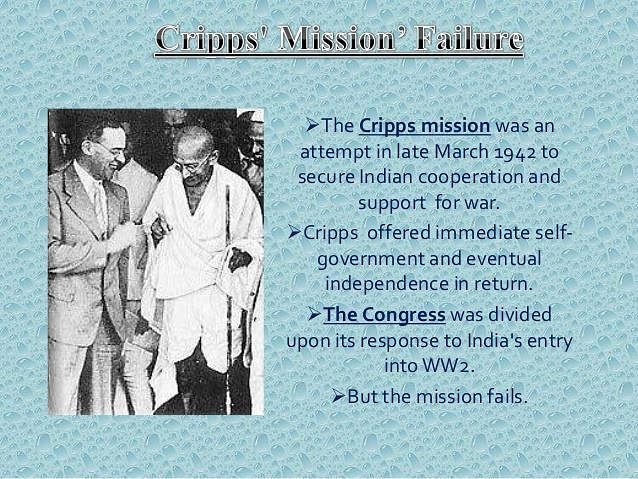
➢ Muslim League
- Criticized the idea of a single Indian Union;
- Did not like the machinery for the creation of a constituent assembly and the procedure to decide on the accession of provinces to the Union, and Thought that the proposals denied the Muslims the right to self-determination and the creation of Pakistan.
Congress ministries were formed in Bombay, Madras, Central Provinces, Orissa, United Provinces, Bihar, and later in the NWFP and Assam also.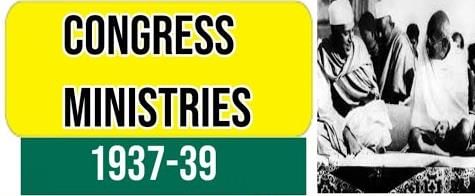
Gandhi advised Congressmen to hold these offices lightly and not tightly. The offices were to be seen as "crowns of thorns'
➢ Civil Liberties
- Laws giving emergency powers were repealed.
- Ban on illegal organizations, and on certain books and journals was lifted.
- Press restrictions were lifted.
- Newspapers were taken out of blacklists.
- Confiscated arms and arms licenses were restored.
- Police powers were curbed and the CID stopped shadowing politicians.
- Political prisoners and revolutionaries were released, and deportation and internment orders were revoked.
- In Bombay lands confiscated by the government during the Civil Disobedience Movement were restored.
- Pensions of officials associated with the Civil Disobedience Movement were restored.
➢ Agrarian Reforms
- The ministries did not have adequate powers.
- There were inadequate financial resources as a lion’s share was appropriated by the Government of India.
- The strategy of class adjustments was another hurdle since zamindars, etc., had to be conciliated and neutralized.
- There was the constraint of time since the logic of Congress politics was a confrontation and not cooperation with colonialism.
- War clouds had started hovering around 1938.
- The reactionary second chamber (Legislative Council) dominated by landlords, moneylenders, and capitalists in United Provinces, Bihar, Bombay, Madras, and Assam had to be conciliated as its support was necessary for legislation.
- The agrarian structure was too complex.
The basic approach was to advance workers’ interests while promoting industrial peace. The ministries took recourse to Section 144 and arrested the leaders.
➢ Social Welfare Reforms
- The prohibition imposed in certain areas.
- Measures for the welfare of Harijans taken.
- Attention is given to primary, technical, and higher education and to public health and sanitation.
- The encouragement is given to khadi through subsidies and other measures.
- Prison reforms were undertaken.
- The encouragement is given to indigenous enterprises.
- Efforts taken to develop planning through National Planning Committee set up under Congress president Subhash Bose in 1938.
➢ Extra-Parliamentary Mass Activity of Congress
- launching of mass literacy campaigns,
- setting up of Congress police stations and panchayats,
- Congress Grievance Committees presenting mass petitions to government and states peoples’ movements.
➢ Evaluation
- The 28-month Congress rule was also significant for the following reasons.
- The contention that Indian self-government was necessary for radical social transformation got confirmed.
- Congressmen demonstrated that a movement could use state power to further its ends without being co-opted.
- The ministries were able to control communal riots.
- The morale of the bureaucracy came down.
- Council work helped neutralize many erstwhile hostile elements (landlords, etc).
- People were able to perceive the shape of things to come if independence was won.
- Administrative work by Indians further weakened the myth that Indians were not fit to rule.
- The Congress ministries resigned in October 1939 after the outbreak of the Second World War.
- The Congress victory resulted in what appeared to be an anti-labor shift in Congress attitudes that led to the Bombay Traders Disputes Act in 1938.
➢ Two Strands of National Upsurge
- Two basic strands of national upsurge can be identified during the last two years of British rule.
(i) Tortuous negotiations involving the government, Congress and Muslim League, increasingly accompanied by communal violence and culminating in freedom and the partition.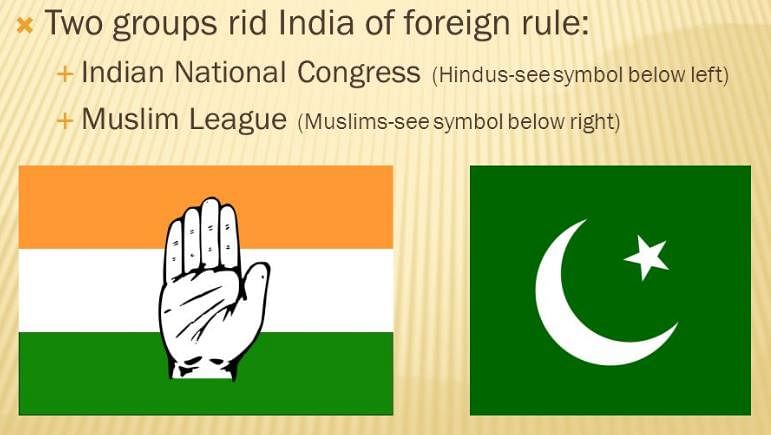 (ii) Sporadic, localised and often extremely militant and united mass action by workers, peasants and states' peoples which took the form of a countrywide strike wave. This kind of activity was occasioned by the INA Release Movement, Royal Indian Navy (RIN) revolt, Tebhaga movement, Worli revolt, Punjab Kisan Morchas, Travancore peoples' struggle (especially the Punnapra-Vayalar episode) and the Telangana peasant revolt.
(ii) Sporadic, localised and often extremely militant and united mass action by workers, peasants and states' peoples which took the form of a countrywide strike wave. This kind of activity was occasioned by the INA Release Movement, Royal Indian Navy (RIN) revolt, Tebhaga movement, Worli revolt, Punjab Kisan Morchas, Travancore peoples' struggle (especially the Punnapra-Vayalar episode) and the Telangana peasant revolt. - Wav ell Plan backed by the Conservative government in Britain failed to break the constitutional deadlock. In July 1945, the Labour Party formed the government in Britain. In August 1945, elections to central and provincial assemblies were announced. In September 1945, it was announced that a constituent assembly would be convened after the elections
➢ Why a Change in Government’s Attitude
- End of the War resulted in a change in the balance of global power—the UK was no more a big power while the USA and USSR emerged as superpowers, both of which favoured freedom for India.
- New Labour government was more sympathetic to Indian demands.
- Throughout Europe, there was a wave of socialist radical governments.
- British soldiers were weary and tired and the British economy lay shattered.
- There was an anti-imperialist wave in South-East Asia—in Vietnam and Indonesia— resisting efforts to replant French and Dutch rule there.
⇒ Officials feared another Congress revolt, a revival of the 1942 situation but much more dangerous because of a likely combination of attacks on communications, agrarian revolts, labour trouble, army disaffection joined by government officials and the police in the presence of INA men with some military experience. - Elections were inevitable once the war ended since the last elections had been held in 1934 for the Centre and in 1937 for the provinces.
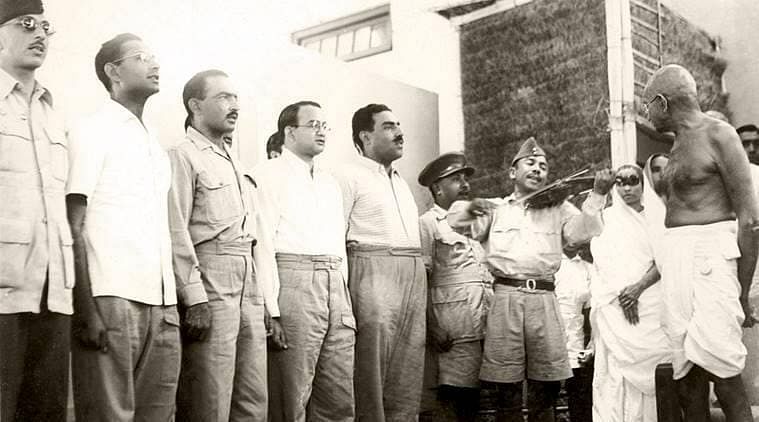 1945 INA Trials
1945 INA Trials
➢ Election Campaign for Nationalistic Aims:
- The most significant feature of the election campaign was that it sought to mobilise the Indians against the British The election campaign expressed the nationalist sentiments against the state repression of the 1942 Quit India upsurge.
- This was done by glorifying martyrs and condemning officials.
➢ Congress Support for INA Prisoners
- At the first post-War Congress session in September 1945 at Bombay, a strong resolution was adopted declaring Congress support for the INA cause.
- Defence of INA prisoners in the court was organized by Bhulabhai Desai, Tej Bahadur Sapru, Kailash Nath Katju, Jawaharlal Nehru and Asaf Ali.
- INA Relief and Enquiry Committee distributed small sums of money and food and helped arrange employment for the affected.
- Fund collection was organised
➢ The INA Agitation—A Landmark on Many Counts
- Celebrations of INA Day (November 12, 1945) and INA week (November 5-11).
- Nerve centres of the agitation were Delhi, Bombay, Calcutta, Madras, United Provinces towns and Punjab, the campaign spread to distant places such as Coorg, Baluchistan and Assam. The forms of participation included fund contributions made by many people
➢ There were three major upsurges
- November 21, 1945—in Calcutta over the INA trials.
- February 11, 1946—in Calcutta against the seven-year sentence to INA officer Rashid Ali.
- February 18, 1946—in Bombay, a strike by the Royal Indian Navy ratings.
➢ Stage I. When a Group Defies Authority and is Repressed
- In the first instance of this stage (November 21, 1945), a student procession had joined up with the League and the Congress, tied flags as a symbol of anti-imperialist unity, marched to Dalhousie Square—the seat of government in Calcutta.
- In the next step (February 11, 1946), the protest was led by Muslim League students in which some Congress and communist students’ organisations joined. Some arrests provoked the students to defy Section 144.
- Rebellion by Naval Ratings- On February 18, 1946, some 1100 Royal Indian Navy (RIN ) ratings of HMIS Talwar went on a strike to protest against racial discrimination, unpalatable food, abuse by superior officers, the arrest of a rating for scrawling 'Quit India’ on HMIS Talwar, INA trials And the use of Indian troops in Indonesia, demanding their withdrawal.
This phase was marked by a virulent anti-British mood resulting in the virtual paralysis of Calcutta and Bombay.
While the students boycotted classes and organised hartals and processions to express sympathy with other students and the ratings, there were sympathetic strikes
➢ Evaluation of Potential and Impact of the Three Upsurges
- Fearless action by the masses was an expression of militancy in the popular mind.
- Revolt in the armed forces had a great liberating effect on the minds of people.
- RIN revolt was seen as an event marking the end of British rule. These upsurges prompted the British to extend some concessions:
- On December 1, 1946, the government announced that only those INA members accused of murder or brutal treatment of fellow prisoners would be brought to trial.
- Imprisonment sentences passed against the first batch were remitted in January 1947.
- Indian soldiers were withdrawn from Indo-China and Indonesia by February 1947.
- The decision to send a parliamentary delegation to India (November 1946) was taken.
- The decision to send Cabinet Mission was taken in January 1946.
➢ Performance of the Congress
- It got 91 per cent of non-Muslim votes.
- It captured 57 out of 102 seats in the Central Assembly.
- In the provincial elections, it got a majority in most provinces except in Bengal, Sindh and Punjab. The Congress majority provinces included the NWFP and Assam which were being claimed for Pakistan.
➢ Muslim League’s Performance
- It got 86.6 per cent of the Muslim votes.
- It captured the 30 reserved seats in the Central Assembly.
- In the provincial elections, it got a majority in Bengal and Sindh.
- Unlike in 1937, now the League clearly established itself as the dominant party among Muslims.
- In Punjab A Unionist-Congress-Akali coalition under Khizr Hayat Khan assumed power.
➢ Significant Features of Elections-
- Elections witnessed communal voting in contrast to the strong anti- British unity shown in various upsurges due to
- Separate electorates; and
- Limited franchise—for the provinces, less than 10 per cent of the population could vote and for the Central Assembly.
Attlee government announced in February 1946 the decision to send a high-powered mission of three British cabinet members
➢ Why British Withdrawal Seemed Imminent Now
- The success of nationalist forces in the struggle for hegemony was fairly evident by the end of the War. Nationalism had penetrated into hitherto untouched sections and areas.
- There was a demonstration in favour of nationalism among the bureaucracy and the loyalist sections; because the paucity of European ICS recruits and a policy of Indianisation had ended the British domination of the ICS and by 1939, there existed a British-Indian parity.
- British strategy of conciliation and repression had its limitations and contradictions
- After the Cripps’ Offer, there was little left to offer for conciliation except for full freedom.
- When non-violent resistance was repressed with force, the naked force behind the government stood exposed, while if the government did not clamp down on sedition' or made offers for a truce, it was seen to be unable to wield authority, and its prestige suffered.
- Efforts to woo the Congress dismayed the loyalists. This policy of an unclear mix presented a dilemma for the services, who nevertheless had to implement it. The prospect of Congress ministries coming to power in the provinces further compounded this dilemma.
- Constitutionalism or Congress Raj had proved to be a big morale-booster and helped in deeper penetration of patriotic sentiments among the masses.
- Demands of leniency for INA prisoners from within the Army and the revolt of the RIN ratings had raised fears that the armed forces may not be as reliable if the Congress started a 1942-type mass movement, this time aided by the provincial ministries.
- The Only alternative to all-out repression of a mass movement was an entirely official rule which seemed impossible now because the necessary numbers and efficient officials were not available.
- The government realised that a settlement was necessary for burying the ghost of a mass movement and for good future Indo-British relations
➢ On the Eve of Cabinet Mission Plan-
- The Congress demanded that power be transferred to one centre and that minorities' demands be worked out in a framework ranging from autonomy to Muslim- majority provinces to self-determination or secession from the Indian Union—but, only after the British left.
➢ Cabinet Mission Arrives
- The Cabinet Mission reached Delhi on March 24, 1946. It had prolonged discussions with Indian leaders of all parties and groups on the issues of (i) interim government; and (ii) principles and procedures for framing a new constitution giving freedom to India.
➢ Cabinet Mission Plan—Main Points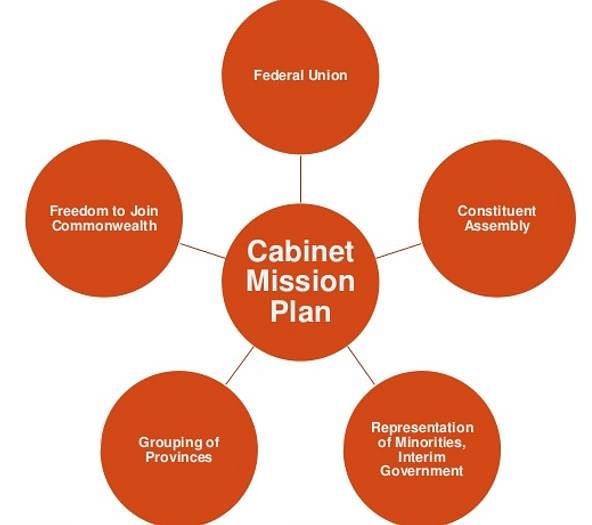
- Rejection of the demand for a full-fledged Pakistan,
(i) Grouping of existing provincial assemblies into three sections: Section- A: Madras, Bombay, Central Provinces, United Provinces, Bihar and Orissa; Hindu-majority provinces) Section-B: Punjab, North
(ii) West Frontier Province and Sindh (Muslim-majority provinces) Section-C: Bengal and Assam (Muslim-majority provinces). - Three-tier executive and legislature at provincial, section and union levels.
- A constituent assembly was to be elected by provincial assemblies by proportional representation. This constituent assembly would be a 389-member body.
- In the constituent assembly, members from groups A, B and C were to sit separately to decide the constitution for provinces and if possible, for the groups also. Then, the whole constituent assembly would sit together to formulate the union constitution.
- A common centre would control defence, communication and external affairs. A federal structure was envisaged for India.
- Communal questions in the central legislature were to be decided by a simple majority of both communities present and voting.
- Provinces were to have full autonomy and residual powers.
- Princely states were no longer to be under the paramountcy of the British government. They would be free to enter into an arrangement with successor governments or the British government.
- After the first general elections, a province was to be free to come out of a group and after 10 years, a province was to be free to call for a reconsideration of the group or the union constitution.
- Meanwhile, an interim government was to be formed from the constituent assembly.
➢ Different Interpretations of the Grouping Clause
- Congress: To the Congress, the Cabinet Mission Plan was against the creation of Pakistan since grouping was optional; one constituent assembly was envisaged, and the League no longer had a veto.
- Muslim League: The Muslim League believed Pakistan to be implied in a compulsory grouping.
➢ Congress
- Provinces should not have to wait till the first general elections to come out of a group. They should have the option of not joining a group in the first place.
- Compulsory grouping contradicts the oft-repeated insistence on provincial autonomy.
- Absence of provision for elected members from the princely states in the constituent assembly was not acceptable.
➢ League
- Grouping should be compulsory with sections B and C developing into solid entities with a view to future secession into Pakistan.
➢ Acceptance and Rejection
- Muslim League on June 6 and the Congress on June 24, 1946, accepted the long-term plan put forward by the Cabinet Mission.
- July 1946 Elections were held in provincial assemblies for the Constituent Assembly.
- July 10, 1946, Nehru stated, "We are not bound by a single thing except that we have decided to go into the Constituent Assembly. The big probability is that there would be no grouping as NWFP and Assam would have objections to joining sections B and C.”
- July 29, 1946, The League withdrew its acceptance of the long-term plan in response to Nehru’s statement and gave a call for "direct action" from August 16 to achieve Pakistan.
➢ Communal Holocaust and the Interim Government
- From August 16, 1946, the Indian scene was rapidly transformed. There were communal riots on an unprecedented scale, which left around several thousand dead. The worst-hit areas were Calcutta, Bombay, Noakhali, Bihar and Garhmukteshwar (United Provinces).
- Changed Government Priorities-Wavell was now eager to somehow get the Congress into the Interim Government, even if the League stayed out
- Interim Government-Fearing mass action by the Congress, a Congress-dominated Interim Government headed by Nehru was sworn in on September 2, 1946, Wavell quietly brought the Muslim League into the Interim Government on October 26, 1946. The League was allowed to join
(i) without giving up the ‘direct action’;
(ii) despite its rejection of the Cabinet Mission’s long term and short-term plans; and
(iii) despite the insistence on compulsory grouping with decisions being taken by a majority vote by a section as a whole
➢ Obstructionist Approach and Ulterior Motives of League-
- The League did not attend the Constituent Assembly which had its first meeting on December 9, 1946. Consequently, the Assembly had to confine itself to passing a general 'Objectives Resolution' drafted by Jawaharlal Nehru.
- In February 1947, nine Congress members of the cabinet wrote to the viceroy demanding the resignation of League members and threatening the withdrawal of their own nominees.
Communalism (more accurately ‘sectarianism') is basically an ideology, which gives more importance to one’s own ethnic/religious group rather than to the wider society as a whole, evolved through three broad stages in India.
➢ Communal Nationalism
- The notion that since a group or a section of people belong to a particular religious community, their secular interests are the same, i.e., even those matters which have got nothing to do with religion affect all of them equally.
➢ Liberal Communalism
- The notion that since two religious communities have different religious interests, they have different interests in the secular sphere also (i.e., in economic, political and cultural spheres).
➢ Extreme Communalism
- The notion that not only do different religious communities have different interests but also that these interests are incompatible, i.e., two communities cannot co-exist because the interests of one community come into conflict with those of the other.
➢ Reasons for Growth of Communalism
- Socio-economic Reasons
- British Policy of Divide and Rule
- Communalism in History Writing
- Side-effects of socio-religious Reform Movements-Reform movements such as the Wahabi Movement among Muslims and Shuddhi among Hindus with their militant overtones made the role of religion more vulnerable to communalism.
- Side-effects of Militant Nationalism Communal Reaction by Majority Community-The Rashtriya Swayamsevak Sangh (RSS) was established in 1925
➢ Evolution of the Two-Nation Theory- The development of the two-nation theory over the years is as follows:
- 1887: Syed Ahmed Khan appealed to the educated Muslims to stay away from the Congress, although some Muslims did join the Congress.
- 1906: Agha Khan led a Muslim delegation (called the Shimla delegation) to the viceroy, Lord Minto, to demand separate electorates for Muslims at all levels
- 1909: Separate electorates were awarded under Morley-Minto Reforms. Punjab Hindu Sabha was founded by U.N. Mukherji and Lai Chand.
- 1915: The first session of All India Hindu Mahasabha was held under the aegis of the Maharaja of Kasim Bazar.
- 1912-24: During this period, the Muslim League was dominated by younger Muslim nationalists, but their nationalism was inspired by a communal view of political questions.
- 1916: The Congress accepted the Muslim League demand of separate electorates and the Congress and the League presented joint demands to the government.
- 1920-22: Muslims participated in the Rowlatt and Khilafat Non-Cooperation agitations but there was a communal element in the political outlook of the Muslims.
- The 1920s: The shadow of communal riots loomed large over the country.
- 1928: The Nehru Report on constitutional reforms as suggested by the Congress was opposed by Muslim hardliners and the Sikh League.
➢ By negotiating with the Muslim League, Congress made a number of mistakes:
- It gave legitimacy to the politics of the League, thus giving recognition to the division of society into separate communities with separate interests.
- It undermined the role of secular, nationalist Muslims.
- Concessions to one community prompted other communities to demand similar concessions.
- Launching an all-out attack on communalism became difficult.
- 1930-34: Some Muslim groups, such as the Jamaat- ulema-i-Hind, State of Kashmir and Khudai Khidmatgar participated in the Civil Disobedience Movement but overall the participation of Muslims was nowhere attended all three of them.
- 1932: The Communal Award accepted all Muslim communal demands contained in the 14 points.
- After 1937: After the Muslim League performed badly in the 1937 provincial elections, it decided to resort to extreme communalism. There were several reasons for the advent of extreme communalism.
- With increasing radicalisation, the reactionary elements searched for a social base through channels of communalism.
- The colonial administration had exhausted all other means to divide nationalists.
- Earlier failures to challenge communal tendencies had emboldened the communal forces.
- 1937-39: Jinnah blocked all avenues for conciliation by forwarding the impossible demand that the Congress should declare itself a Hindu organisation and recognise the Muslim League as the sole representative of the Indian Muslims.
- March 24, 1940: The 'Pakistan Resolution' was passed at the Lahore session of the Muslim League
- During Second World War The British India Government gave a virtual veto to the League on a political settlement.
Clement Attlee, the British prime minister, sensing the trouble all around, made an announcement on February 20, 1947. The British House of Commons declared the British intention of leaving the Indian subcontinent.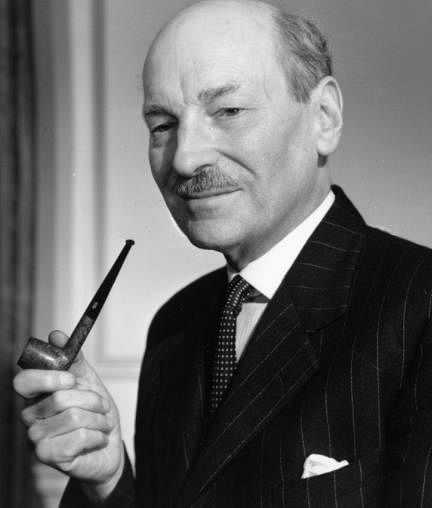 Clement Attlee
Clement Attlee
➢ Main Points of Attlee’s Statement
- The deadline of June 30, 1948, was fixed for transfer of power even if the Indian politicians had not agreed by that time on the constitution.
- British would relinquish power either to some form of central government or in some areas to the existing provincial governments if the constituent assembly was not fully representative, i.e., if the Muslim majority provinces did not join.
- British powers and obligations vis-a-vis the princely states would lapse with the transfer of power, but these would not be transferred to any successor government in British India.
- Mountbatten would replace Wavell as the viceroy. The statement contained clear hints of partition and even Balkanisation of the country into numerous states and was, in essence, a reversion of the Cripps Offer.
➢ Why a Date Fixed by Government for Withdrawal
- The government hoped that a fixed date would shock the parties into an agreement on the main question.
- The government was keen to avert the developing constitutional crisis.
- The government hoped to convince the Indians of British sincerity.
- Truth in WavelTs assessment could no longer be denied.
➢ Congress Stand
- Provision of transfer of power to more than one center was acceptable to Congress because it meant that the existing assembly could go ahead and frame a constitution for the areas represented by it, and it offered a way out of the existing deadlock.
➢ Independence and Partition
- On March 10, 1947, Nehru stated that the Cabinet Mission was the best solution if carried out; the only real alternative was the partition of Punjab and Bengal. In April 1947, the Congress president, Kripalani, communicated to the viceroy
- Mountbatten as the Viceroy, Mountbatten proved more firm and quick in taking decisions than his predecessors because he was informally given more powers to decide things on the spot. His task was to explore the options of unity and division till October 1947 and then advise the British government on the form of transfer of power.
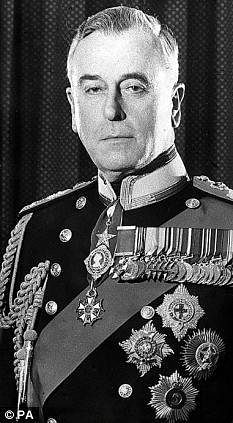 Louis Mountbatten
Louis Mountbatten
➢ Mountbatten Plan, June 3,1947
- Punjab and Bengal Legislative Assemblies would meet in two groups, Hindus and Muslims, to vote for partition. If a simple majority of either group voted for partition, then these provinces would be partitioned.
- In the case of partition, two dominions and two constituent assemblies would be created.
- Sindh would take its own decision.
- Referendums in NWFP and the Sylhet district of Bengal would decide the fate of these areas.
- Since the Congress had conceded a unified India, all their other points would be met, namely,
(i) Independence for princely states ruled out—they would join either India or Pakistan;
(ii) Independence for Bengal ruled out;
the accession of Hyderabad to Pakistan ruled out;
(iii) freedom to come on August 15, 1947; and
(iv) A boundary commission to be set up if the partition was to be effected.
➢ Why Congress Accepted Dominion Status
- It would ensure a peaceful and quick transfer of power;
- It was more important for Congress to assume the authority to check the explosive situation; and
- Would allow for some much-needed continuity in the bureaucracy and the army.
➢ The rationale for an Early Date (August 15, 1947)
- The plan was put into effect without the slightest delay. The legislative assemblies of Bengal and Punjab decided in favor of the partition of these two provinces.
- Thus, East Bengal and West Punjab joined Pakistan; West Bengal and East Punjab remained with the Indian Union.
➢ Indian Independence Act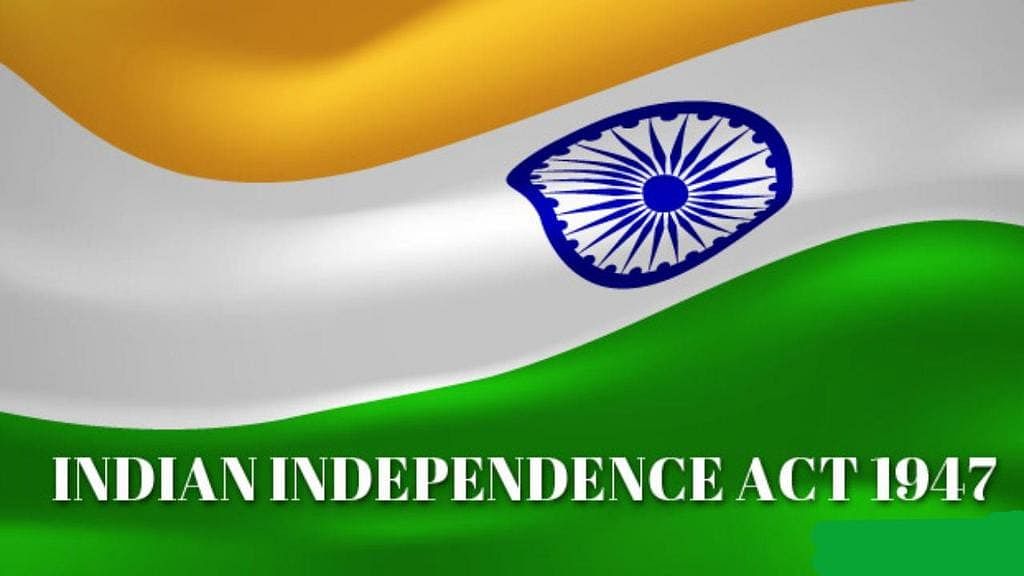
- On July 5, 1947, the British Parliament passed the Indian Independence Act which was based on the Mountbatten Plan, and the Act got royal assent on June 18, 1947.
- The act was implemented on August 15, 1947.
- Act provided for the creation of two independent dominions of India and Pakistan with effect from August 15, 1947.
- As per the provisions of the Indian Independence Act, 1947, Pakistan became independent on August 14 while India got its freedom on August 15, 1947.
- Jinnah became the first Governor-General of Pakistan.
- India, however, decided to request Lord Mountbatten to continue as the Governor-General of India.
➢ Problems of Early withdrawal
- The breakneck speed of events under Mountbatten caused anomalies in arranging the details of partition and totally failed to prevent the Punjab massacre, because
- there were no transitional institutional structures within which partition problems could be tackled;
- Mountbatten had hoped to be the common Governor-General of India and Pakistan, thus providing the necessary link, but Jinnah wanted the position for himself in Pakistan;
- There was a delay in announcing the Boundary Commission Award (under Radcliffe); though the award was ready by August 12, 1947, Mountbatten decided to make it public after August 15 so that the British could escape all responsibility of disturbances.
➢ Integration of States
- In July 1947, Vallabhbhai Patel took charge of the new States Department. Under Patel, the incorporation of Indian states took place in two phases with a skillful combination of baits and threats of mass pressure in both.
- Phase I By August 15, 1947, all states except Kashmir, Hyderabad, and Junagarh had signed an instrument of accession with the Indian government
- Phase II the second phase involved a much more difficult process of "integration' of states with neighboring provinces or into new units
➢ Why Congress Accepted Partition
- Congress was only accepting the inevitable due to the long-term failure to draw the Muslim masses into the national movement. Congress had a two-fold task—(i) structuring diverse classes, communities, groups, and regions into a nation, and (ii) securing independence for this nation.
- Only an immediate transfer of power could forestall the spread of direct action" and communal violence. The virtual collapse of the Interim Government also made the notion of Pakistan appear unavoidable.
- The partition plan ruled out independence for the princely states which could have been a greater danger to Indian unity as it would have meant Balkanisation of the country.
- Acceptance of partition was only a final act of the process of step-by-step concessions to the League's championing of a separate Muslim state.
- When the CWC resolution stated that Punjab (and by implication, Bengal) must be partitioned if the country was divided and With the 3rd June Plan, Congress accepted partition.
- While loudly asserting the sovereignty of the Constituent Assembly, the Congress quietly accepted compulsory grouping and accepted the partition most of all because it could not stop the communal riots.
➢ Gandhi's Helplessness
- Gandhi felt helpless because there had been a communalization of the people. He had no option but to accept partition because the people wanted it.
Contrary to their pre-1857 intentions of trying to modernize India on progressive lines, now the administration adopted blatantly reactionary policies on the pretext that Indians were not fit for self-governance and needed British presence in their lives.
➢ Divide and Rule
- Determined to avoid a united mass action challenging their authority, the British rulers in India decided to practice a naked policy of divide and rule.
➢ Hostility Towards Educated Indians:
- At a time when the nationalist movement was born (Indian National Congress was founded in 1885), the British interpreted the moves as a challenge to their authority and adopted a hostile attitude to such leadership.
➢ Attitude Towards the Zamindars:
- In their pursuit of reactionary policies and hope to expand their social base, the British looked for alliances with the most reactionary of social groups—the princes, zamindars, etc.
➢ Attitude Towards Social Reforms:
- Having decided to side with the reactionary elements of Indian society, the British withdrew support to social reforms,
➢ Underdeveloped Social Services:
- A disproportionately large expenditure on army and civil administration and the cost of wars left little to be spent on social services
➢ Labour Legislations The Indian Factory Act, 1881 dealt primarily with the problem of child labor (between 7 and 12 years of age).
- Its significant provisions were:
(i) Employment of children under 7 years of age prohibited.
(ii) Working hours restricted to 9 hours per day for children.
(iii) Children to get four holidays in a month.
(iv) Hazardous machinery to be properly fenced off.
➢ The Indian Factory Act, 1891
- Increased the minimum age (from 7 to 9 years) and the maximum (from 12 to 14 years) for children,
- Reduced maximum working hours for children to 7 hours a day,
- Fixed maximum working hours for women at 11 hours per day with a one-and-a-half-hour interval (working hours for men were left unregulated),
- Provided weekly holiday for all.
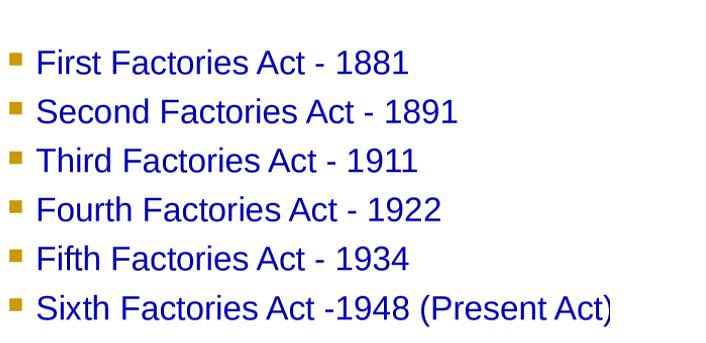 Various Factory Acts
Various Factory Acts
➢ Restrictions on Freedom of the Press
- Lytton, fearing an increased influence of the nationalist press on public opinion, imposed restrictions on Indian language press through the infamousVernacular Press Act, 1878. This Act had to be repealed under public protest in 1882.
➢ White Racism
- The notion of white superiority was maintained very carefully by the colonial rulers by systematically excluding the Indians from higher grades of services— both civil and military.
Till 1813, the British followed a policy of non-interference in the social, religious, and cultural life of the country.
After 1813, measures were taken to transform Indian society and its cultural environs because of the emergence of new interests and ideas in Britain of the nineteenth century in the wake of significant changes in Europe during the 18th and 19th centuries. Some of these changes were
➢ Industrial Revolution
- Which began in the 18th century and resulted in the growth of industrial capitalism. The rising industrial interests wanted to make India a big market for their goods and therefore required partial modernization and transformation of Indian society.
➢ Intellectual Revolution
- Which gave rise to new attitudes of mind, manners, and morals. French Revolution which with its message of liberty, equality, and fraternity, unleashed the forces of democracy and nationalism.
➢ Characteristics of New Thought-Some of the characteristics of the new wave of thought were
- Rationalism advocated faith in reason and a scientific attitude.
- Humanism advocated the love of man. These ideals gave rise to liberalism, socialism, and individualism.
- The doctrine of Progress according to which nothing is static and all societies must change with time.
➢ Schools of Thought
- Conservatives advocated the introduction of a few changes as possible.
- Paternalistic Imperialists were sharply critical of Indian society and culture and used to justify the economic and political enslavement of India.
- Radicals went beyond the narrow criticism and imperialistic outlook of the Conservatives and the Imperialists and applied advanced humanistic and rational thought to the Indian situation.
➢ Indian Renaissance
- There were many Indians who instigated social reform and caused legislation to be brought about so as to control and eradicate social evils embedded in so-called tradition.
➢ Dilemma Before the Government
- The government feared that too much modernization might generate forces hostile to their interests
➢ Role of Christian Missionaries
- The missionaries regarded Christianity to be a superior religion and wanted to spread it in India through westernization. Towards this end, the Christian missionaries
- supported the Radicals whose scientific approach, they believed, would undermine the native culture and beliefs;
- supported the Imperialists since law and order and the British supremacy was essential for their propaganda; and
- Sought business and the capitalist support holding out the hope to them that the Christian converts would be better customers of their goods.
[Question: 890019]
The Indians proved to be apt pupils and shifted rapidly towards modernization of their society and assertion of their culture.
➢ British Policy Towards Princely States
- Subordination of princely states to British authority was completed when the fiction of Indian states standing in a status of equality with the Crown as independent, sovereign states ended with the Queen adopting the title of Kaiser-i- Hind (Queen Empress of India) in 1876, to emphasize British sovereignty over entire India.
➢ British Foreign Policy in India
- The pursuance of a foreign policy led to India’s conflicts with neighboring countries. These conflicts arose due to various reasons.
- Firstly, political and administrative consolidation of the country. Secondly, the British Government had as its major aims in Asia and Africa protection of the invaluable Indian empire; expansion of British commercial and economic interests; Keeping other European imperialist powers, whose colonial interests came in conflict with those of the British, at an arm’s length in Asia and Africa.
- The establishment of the East India Company in 1600 and its transformation into a ruling body from a trading one in 1765 had a little immediate impact on Indian polity and governance. But the period between 1773 and 1858 under the Company rule, and then under the British Crown till 1947, witnessed a plethora of constitutional and administrative changes.
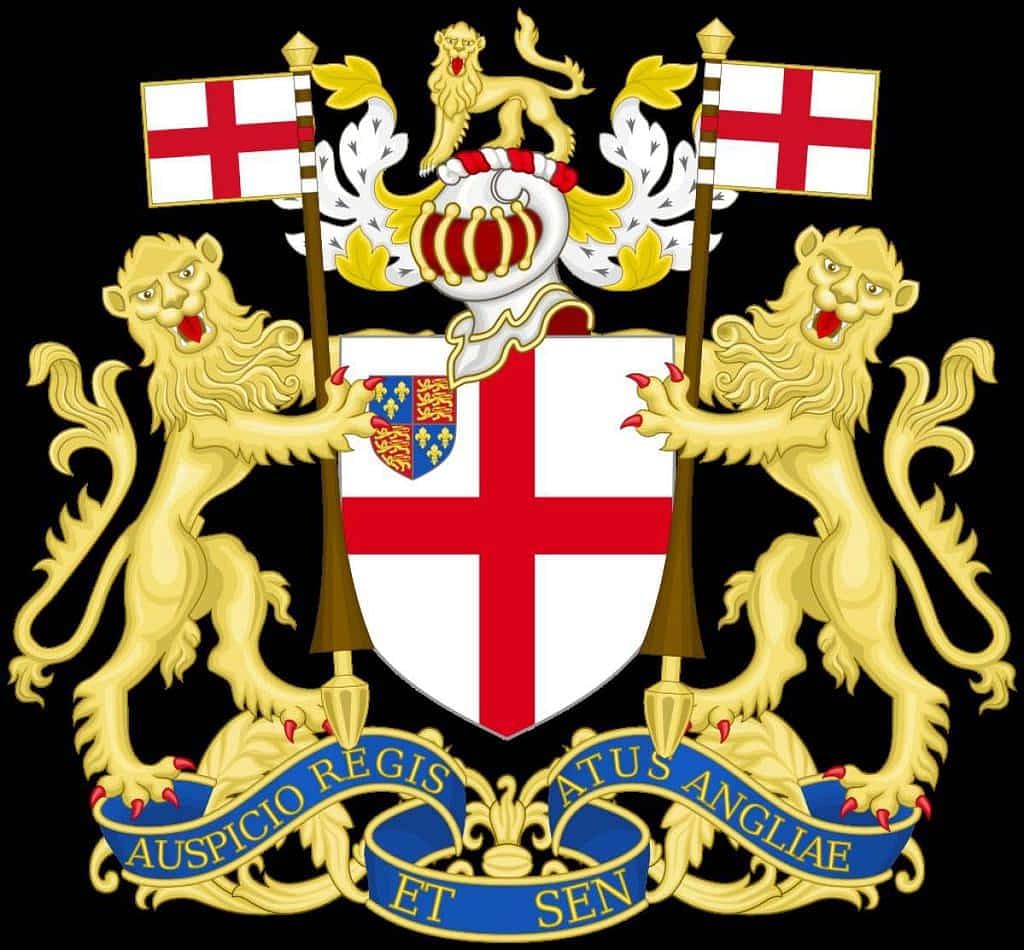 Logo of East India Company
Logo of East India Company - The nature and objective of these changes were to serve the British imperial ideology but unintentionally they introduced elements of the modern State into India’s political and administrative system.
- After the Battle of Buxar (1764), the East India Company got the Diwani (right to collect revenue) of Bengal, Bihar, and Orissa.
- 1767- The first intervention in Indian affairs by the British government came in 1767.
- 1765-72- This period was characterized by:
(i) Rampant corruption among servants of the Company who made full use of private trading to enrich themselves.
(ii) Excessive revenue collection and oppression of peasantry.
(iii) Company’s bankruptcy, while the servants were flourishing.
➢ The Regulating Act of 1773
- British government’s involvement in Indian affairs in the effort to control and regulate the functioning of the East India Company. It recognized that the Company’s role in India extended beyond mere trade to administrative and political fields, and introduced the element of centralized administration.
- Directors of the Company were required to submit all correspondence regarding revenue affairs and civil and military administration to the government.
- In Bengal, the administration was to be carried out by the governor-general and a council consisting of 4 members, representing the civil and military government. They were required to function according to the majority rule.
- A Supreme Court of judicature was to be established in Bengal with original and appellate jurisdictions where all subjects could seek redressal. In practice, however, the Supreme Court had a debatable jurisdiction vis-a-vis the council which created various problems.
- Governor-general could exercise some powers over Bombay and Madras again, a vague provision that created many problems.
- Amendments (1781)
(i) Jurisdiction of the Supreme Court was defined within Calcutta, it was to administer the personal law of the defendant.
(ii) Servants of the government were immune if they did anything while discharging their duties.
(iii) Social and religious usages of the subjects were to be honored.
➢ Pitt’s India Act of 1784
- The company became a subordinate department of the State. The Company’s territories in India were termed British possessions’.
- A Board of Control consisting of the chancellor of the exchequer, a secretary of state and four members of the Privy Council (to be appointed by the Crown) were to exercise control over the Company’s civil, military, and revenue affairs. All dispatches were to be approved by the board. Thus a dual system of control was set up.
- In India, the governor-general was to have a council of three (including the commander-in-chief), and the presidencies of Bombay and Madras were made subordinate to the governor-general.
- A general prohibition was placed on aggressive wars and treaties (breached often).
➢ The Act of 1786 Charles Cornwallis
Charles Cornwallis
- Cornwallis wanted to have the powers of both the governor-general and the commander-in-chief. The new act conceded this demand and also gave him power.
- Cornwallis was allowed to override the council’s decision if he owned the responsibility for the decision. Later, this provision was extended to all the governors-general.
➢ The Charter Act of 1793
- The Act renewed the Company’s commercial privileges for the next 20 years.
- The Company, after paying the necessary expenses, interest, dividends, salaries, etc., from the Indian revenues, was to pay 5 lakh pounds annually to the British government.
- The royal approval was mandated for the appointment of the governor-general, the governors, and the commander-in-chief.
- Senior officials of the Company were debarred from leaving India without permission—doing so was treated as a resignation.
- The Company was empowered to give licenses to individuals as well as the Company’s employees to trade in India. The licenses, known as 'privilege’ or 'country trade', paved the way for shipments of opium to China.
- The revenue administration was separated from the judiciary functions and this led to the disappearance of the Maal Adalats.
- The Home Government members were to be paid out of Indian revenues which continued up to 1919.
➢ The Charter Act of 1813
- The Company’s monopoly over trade in India ended, but the Company retained the trade with China and the trade-in tea.
- The Company’s shareholders were given a 10.5 percent dividend on the revenue of India. The Company was to retain the possession of territories and the revenue for 20 years more, without prejudice to the sovereignty of the Crown.
- Powers of the Board of Control were further enlarged.
- A sum of one lakh rupees was to be set aside for the revival, promotion, and encouragement of literature, learning, and science among the natives of India, every year.
- The regulations made by the Councils of Madras, Bombay, and Calcutta were now required to be laid before the British Parliament. The constitutional position of the British territories in India was thus explicitly defined for the first time.
- Separate accounts were to be kept regarding commercial transactions and territorial revenues. The power of superintendence and direction of the Board of Control was not only defined but also enlarged considerably.
- Christian missionaries were also permitted to come to India and preach their religion.
➢ The Charter Act of 1833
- The lease of 20 years to the Company was further extended. Territories of India were to be governed in the name of the Crown.
- The company’s monopoly over trade with China and in tea also ended.
- All restrictions on European immigration and the acquisition of property in India were lifted.
- In India, a financial, legislative, and administrative centralization of the government was envisaged:
(i) Governor-general was given the power to superintend, control, and direct all civil and military affairs of the Company.
(ii) Bengal, Madras, Bombay, and all other territories were placed under complete control of the governor-general.
(iii) All revenues were to be raised under the authority of the governor-general who would have complete control over the expenditure too.
(iv) Governments of Madras and Bombay were drastically deprived of their legislative powers and left with a right of proposing to the governor-general the projects of law which they thought to be expedient. - A law member was added to the governor-general’s council for professional advice on lawmaking. vi. Indian laws were to be codified and consolidated. vii. No Indian citizen was to be denied employment under the Company on the basis of religion, color, birth, descent, etc.
- The administration was urged to take steps to ameliorate the conditions of slaves and to ultimately abolish slavery. (Slavery was abolished in 1843).
➢ The Charter Act of 1853
- The company was to continue possession of territories unless the Parliament provided otherwise.
- The strength of the Court of Directors was reduced to 18.
- The company’s patronage over the services was dissolved—the services were now thrown open to a competitive examination.
- Law member became the full member of the governor-general’s executive council.
- separation of the executive and legislative functions of the Government of British India progressed with the inclusion of six additional members for legislative purposes.
➢ The Act for Better Government of India, 1858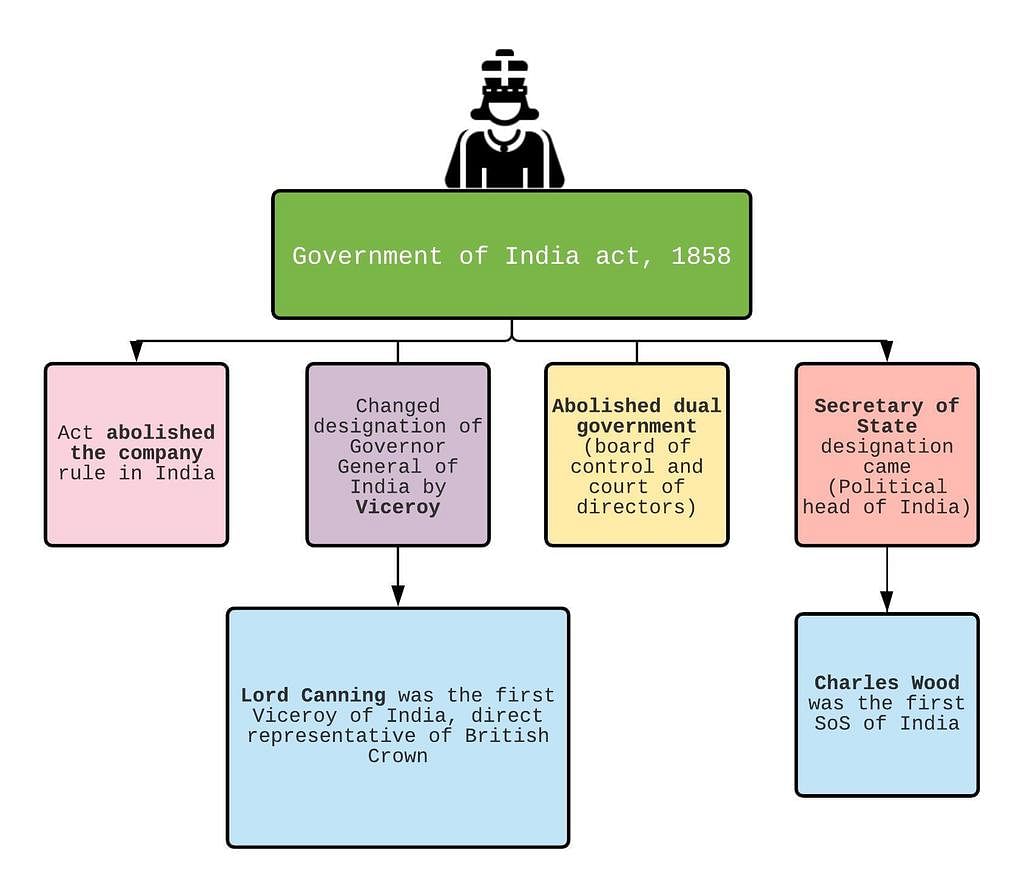
- India was to be governed by and in the name of the Crown through a secretary of state and a council of 15. The initiative and the final decision was to be with the secretary of state and the council was to be just advisory in nature.
- Governor-general became the viceroy.
➢ Indian Councils Act, 1861
- The 1861 Act marked an advance in that the principle of representatives of nonofficials in legislative bodies became accepted, laws were to be made after due deliberation, and as pieces of legislation, they could be changed only by the same deliberative process.
- The portfolio system introduced by Lord Canning laid the foundations of cabinet government in India, each branch of the administration having its official head and spokesman in the government, who was responsible for its administration.
- The Act by vesting legislative powers in the Governments of Bombay and Madras and by making provision for the institution of similar legislative councils in other provinces laid the foundations of legislative devolution.
➢ Indian Councils Act, 1892
- In 1885, the Indian National Congress was founded. Congress saw the reform of the councils as the "root of all other reforms" . It was in response to the Congress's demand that the legislative councils be expanded that the number of non-official members was increased both in the central (Imperial) and provincial legislative councils by the Indian Councils Act, 1892.
- Legislative Council of the Governor-General was enlarged.
- Universities, district boards, municipalities, zamindars, trade bodies, and chambers of commerce were empowered to recommend members to the provincial councils.
- Thus was introduced the principle of representation.
- Though the term election was firmly avoided in the Act, an element of the indirect election was accepted in the selection of some of the non-official members.
- Members of the legislatures were now entitled to express their views upon financial statements which were henceforth to be made on the floor of the legislatures.
- Could also put questions within certain limits to the executive on matters of public interest after giving six day's notice.
➢ Indian Councils Act, 1909
- Popularly known as the Morley-Minto Reforms, the Act made the first attempt to bring in a representative and popular element in the governance of the country.
- The strength of the Imperial Legislative Council was increased.
- With regard to the central government, an Indian member was taken for the first time in the Executive Council of the Governor-General.
- Members of the Provincial Executive Council were increased.
- Powers of the legislative councils, both central and provincial, were increased.
➢ Government of India Act, 1919
- This Act was based on what is popularly known as the Montague-Chelmsford Reforms.
- Under the 1919 Act, the Indian Legislative Council at the Centre was replaced by a bicameral system consisting of a Council of State (Upper House) and a Legislative Assembly (Lower House). Each house was to have a majority of members who were directly elected. So, the direct election was introduced, though the franchise was much restricted being based on qualifications of property, tax, or education.
- The principle of communal representation was extended with separate electorates for Sikhs, Christians, and Anglo-Indians, besides Muslims.
- The act introduced dyarchy in the provinces, which indeed was a substantial step towards the transfer of power to the Indian people.
- The provincial legislature was to consist of one house only (legislative council).
- Act separated for the first time the provincial and central budgets, with provincial legislatures being authorized to make their budgets.
- A High Commissioner for India was appointed, who was to hold his office in London for six years and whose duty was to look after Indian trade in Europe.
- Secretary of State for India who used to get his pay from the Indian revenue was now to be paid by the British Exchequer, thus undoing an injustice in the Charter Act of 1793.
- Though Indian leaders for the first time got some administrative experience in a constitutional set-up under this Act.
➢ Simon Commission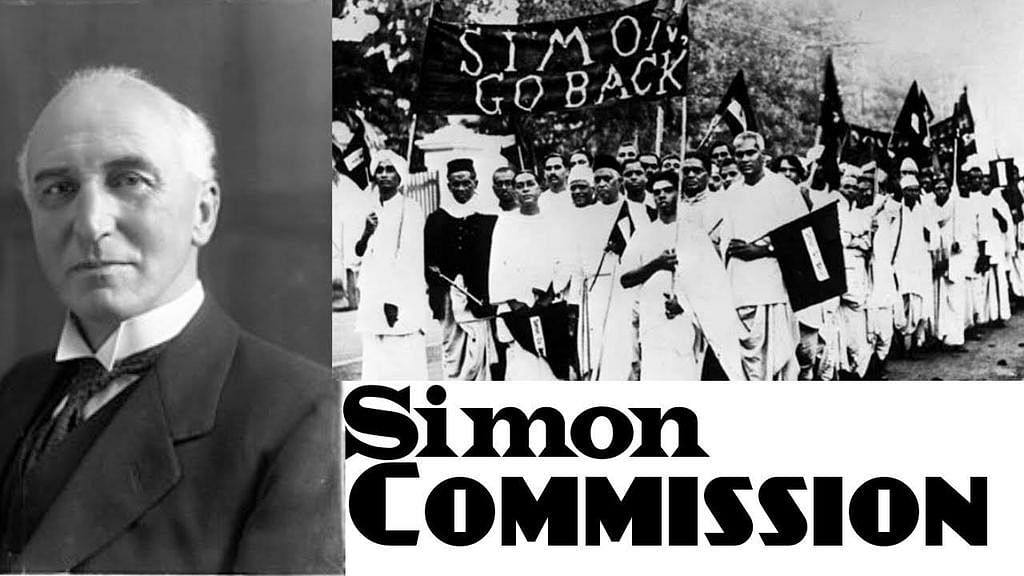
- 1919 Act had provided that a Royal Commission would be appointed ten years after the Act to report on its working.
- Three Round Table Conferences were called by the British government to consider the proposals.
- Subsequently, a White Paper on Constitutional Reforms was published by the British government in March 1933.
➢ Government of India Act, 1935
- Act, with 451 clauses and 15 schedules, contemplated the establishment of an All- India Federation in which Governors’ Provinces and the Chief Commissioners’ Provinces and those Indian states which might accede to be united were to be included.
- Dyarchy, rejected by the Simon Commission, was provided for in the Federal Executive.
- Federal Legislature was to have two chambers (bicameral): The Council of States and the Federal Legislative Assembly. The Council of States (the Upper House) was to be a permanent body.
- There was a provision for joint sitting in cases of deadlock between the houses. There were to be three subject lists: The Federal Legislative List, the Provincial Legislative List, and the Concurrent Legislative List. Residuary, legislative powers were subject to the discretion of the governor-general.
- Dyarchy in the provinces was abolished and provinces were given autonomy
- Provincial legislatures were further expanded. Bicameral legislatures were provided in the six provinces of Madras, Bombay, Bengal, United Provinces, Bihar, and Assam, with the other five provinces retaining unicameral legislatures.
- Principles of communal electorates’ and 'weightage' were further extended to depressed classes, women, and labor.
- The franchise was extended, with about 10 percent of the total population getting the right to vote.
- Act also provided for a Federal Court (which was established in 1937), with original and appellate powers, to interpret the 1935 Act and settle inter-state disputes, but the Privy Council in London was to dominate this court. India Council of the Secretary of State was abolished.
- All-India Federation as visualized in the Act never came into being because of the opposition from different parties of India. The British government decided to introduce the provincial autonomy on April 1, 1937, but the Central government continued to be governed in accordance with the 1919 Act, with minor amendments. The operative part of the Act of 1935 remained in force till August 15, 1947.
For the first 60 years of its dominion in India, the East India Company, a trading and profit-making concern, took no interest in the promotion of education. Some minor exceptions were efforts by individuals—
- Calcutta Madrasah was established by Warren Hastings in 1781 for the study of Muslim law and related subjects.
- Sanskrit College was established by Jonathan Duncan, the resident, at Benaras in 1791 for the study of Hindu law and philosophy.
- Fort William College was set up by Wellesley in 1800 for the training of civil servants of the Company in languages and customs of Indians (closed in 1802).
Efforts of enlightened Indians such as Raja Rammohan Roy bore fruit and a grant was sanctioned for Calcutta College set up in 1817 by educated Bengalis, imparting English education in Western humanities and sciences. The government also set up three Sanskrit colleges at Calcutta, Delhi and Agra.
➢ Orientalist-Anglicist Controversy
- Within the General Committee on Public Instruction, the Anglicists argued that the government spending on education should be exclusively for modern studies.
- The Orientalists said while Western sciences and literature should be taught to prepare students to take up jobs, emphasis should be placed on the expansion of traditional Indian learning.
- Even the Anglicists were divided over the question of medium of instruction—one faction was for the English language as the medium, while the other faction was for Indian languages (vernaculars) for the purpose.
➢ Lord Macaulay’s Minute (1835)
- The famous Lord Macaulay's Minute settled the row in favour of Anglicists—the limited government resources were to be devoted to the teaching of Western sciences and literature through the medium of English language alone.
- Lord Macaulay held the view that "Indian learning was inferior to European learning"—which was true as far as physical and social sciences in the contemporary stage were concerned.
- The government soon made English as the medium of instruction in its schools and colleges and opened a few English schools and colleges instead of a large number of elementary schools, thus neglecting mass education.
➢ Efforts of Thomson
- James Thomson, lieutenant-governor of NW Provinces (1843- 53), developed a comprehensive scheme of village education through the medium of vernacular languages.
➢ Wood’s Despatch (1854)
- It asked the government of India to assume responsibility for the education of the masses, thus repudiating the ‘downward filtration theory’, at least on paper.
- It systematized the hierarchy from vernacular primary schools in villages at the bottom, followed by Anglo-Vernacular High Schools and an affiliated college at the district level, and affiliating universities in the presidency towns of Calcutta, Bombay and Madras.
- It recommended English as the medium of instruction for higher studies and vernaculars at the school level.
- It laid stress on female and vocational education, and on teachers' training.
- It laid down that the education imparted in government institutions should be secular.
- It recommended a system of grants-in-aid to encourage private enterprise.
In 1857, universities at Calcutta, Bombay and Madras were set up and later, departments of education were set up in all provinces. The Bethune School founded by J.E.D. Bethune at Calcutta (1849) was the first fruit of a powerful movement for the education of women which arose in the 1840s and 1850s.
➢ Hunter Education Commission (1882-83)-The commission
- Emphasized that state’s special care is required for extension and improvement of primary education and that primary education should be imparted through vernacular.
- Recommended transfer of control of primary education to newly set up district and municipal boards.
- Recommended that secondary (High School) education should have two divisions— a. Literary—leading up to university. b. Vocational—for commercial careers.
- Drew attention to inadequate facilities for female education, especially outside presidency towns and made recommendations for its spread.
- More teaching-cum-examining universities were set up like the Punjab University (1882) and the Allahabad University (1887).
➢ Indian Universities Act, 1904
- In 1902, Raleigh Commission was set up to go into conditions and prospects of universities in India and to suggest measures for improvement in their constitution and working.
- Based on its recommendations, the Indian Universities Act was passed in 1904. As per the Act, Universities were to give more attention to study and research; the number of fellows of a university and their period in the office was reduced and most fellows were to be nominated by the Government;
- The government was to have powers to veto universities' senate regulations and could amend these regulations or pass regulations on its own;
- Conditions were to be made stricter for affiliation of private colleges; and
- Five lakh rupees were to be sanctioned per annum for five years for improvement of higher education and universities.
➢ Government Resolution on Education Policy
- 1913-In 1906, the progressive state of Baroda introduced compulsory primary education throughout its territories.
- In its 1913 Resolution on Education Policy, the government refused to take up the responsibility of compulsory education, but accepted the policy of removal of illiteracy and urged provincial governments to take early steps to provide free elementary education to the poorer and more backward sections.
The commission was set up to study and report on problems of Calcutta University but its recommendations were applicable more or less to other universities also.
Its observations were as follows:
- School course should cover 12 years. Students should enter university after an intermediate stage (rather than matric) for a three-year degree course in university. This was done to
(i) Prepare students for university stage;
(ii) relieve universities of a large number of below university standard students; and
(iii) Provide collegiate education to those not planning to go through the university stage. - There should be less rigidity in framing university regulations.
- A university should function as a centralised, unitary residential-teaching autonomous body, rather than as scattered, affiliated colleges.
- Female education applied scientific and technological education, teachers’ training including those for professional and vocational colleges should be extended.
Under Montagu-Chelmsford reforms education was shifted to provincial ministries and the government stopped taking a direct interest in educational matters
➢ Hartog Committee (1929)
- Its main recommendations were as follows.
- Emphasis should be given to primary education but there need be no hasty expansion or compulsion in education.
- Only deserving students should go in for high school and intermediate stage, while
- Average students should be diverted to vocational courses after VIII standard.
- For improvements in standards of university education, admissions should be restricted.
➢ Sergeant Plan of Education
- The Sergeant Plan (Sergeant was the educational advisor to the Government) was worked out by the Central Advisory Board of Education in 1944. It recommended—
- Pre-primary education for 3-6 years age group; free, universal and compulsory elementary education for 6-11 years age group; high school education for 11-17 years age group for selected children, and a university course of 3 years after higher secondary; high schools to be of two types: (i) academic and (ii) technical and vocational.
- Adequate technical, commercial and arts education.
- Abolition of intermediate course.
- Liquidation of adult illiteracy in 20 years.
- Stress on teachers' training, physical education, education for the physically and mentally handicapped.
➢ Development of Vernacular Education
- 1835,1836,1838: William Adam’s reports on vernacular education in Bengal and Bihar pointed out defects in the system of vernacular education.
- 1843-53: James Jonathan’s experiments in North-West Provinces (UP), included opening one government school as a model school in each tehsildar and a normal school for teachers’ training for vernacular schools.
- 1853: In a famous minute, Lord Dalhousie expressed a strong opinion in favour of vernacular education.
- 1854: Wood’s Despatch made the following provisions for vernacular education:
(i) Improvement of standards
(ii) Supervision by a government agency
(iii) Normal schools to train teachers - 1854-71: The government paid some attention to secondary and vernacular education. The number of vernacular schools increased by more than five-fold.
- 1882: The Hunter Commission held that the State should make special efforts for extension and improvement of vernacular education. Mass education was to be seen as instructing masses through vernaculars.
- 1904: Education policy put special emphasis on vernacular education and increased grants for it.
- 1929: Hartog Committee presented a gloomy picture of primary education.
- 1937: These schools received encouragement from Congress ministries.
Engineering College at Roorkee was set up in 1847, Calcutta College of Engineering came up in 1856.
➢ Evaluation of British Policy on Education
- Even the inadequate measures the government took for the expansion of modern education were guided by concerns other than philanthropic. The government measures for promotion of education were influenced by—
(i) Agitation in favour of modern education by enlightened Indians, Christian missionaries and humanitarian officials;
(ii) Need to ensure a cheap supply of educated Indians to man an increasing number of subordinate posts in the administration and in British business concerns
(iii) Hope that educated Indians would help expand the market for British manufactures in India;
(iv) An expectation that Western education would reconcile Indians to British rule, particularly as it glorified British conquerors and their administration. - The traditional system of Indian learning gradually declined for want of support
- Mass education was neglected leading to widespread illiteracy (1911—84 per cent and in 1921—92 per cent) which created a wide linguistic and cultural gulf between the educated few and the masses.
- Since education was to be paid for, it became a monopoly of upper and richer classes and city dwellers.
- There was almost total neglect of women’s education because (i) the Government did not want to arouse the wrath of orthodox sections; and (ii) it had no immediate utility for the colonial rule.
- Scientific and technical education was by and large neglected.

After reading modern Indian History please give your feedback that how this work impacts on your study
ReplyDeleteNice content
ReplyDeletePlease share polity and Economic link